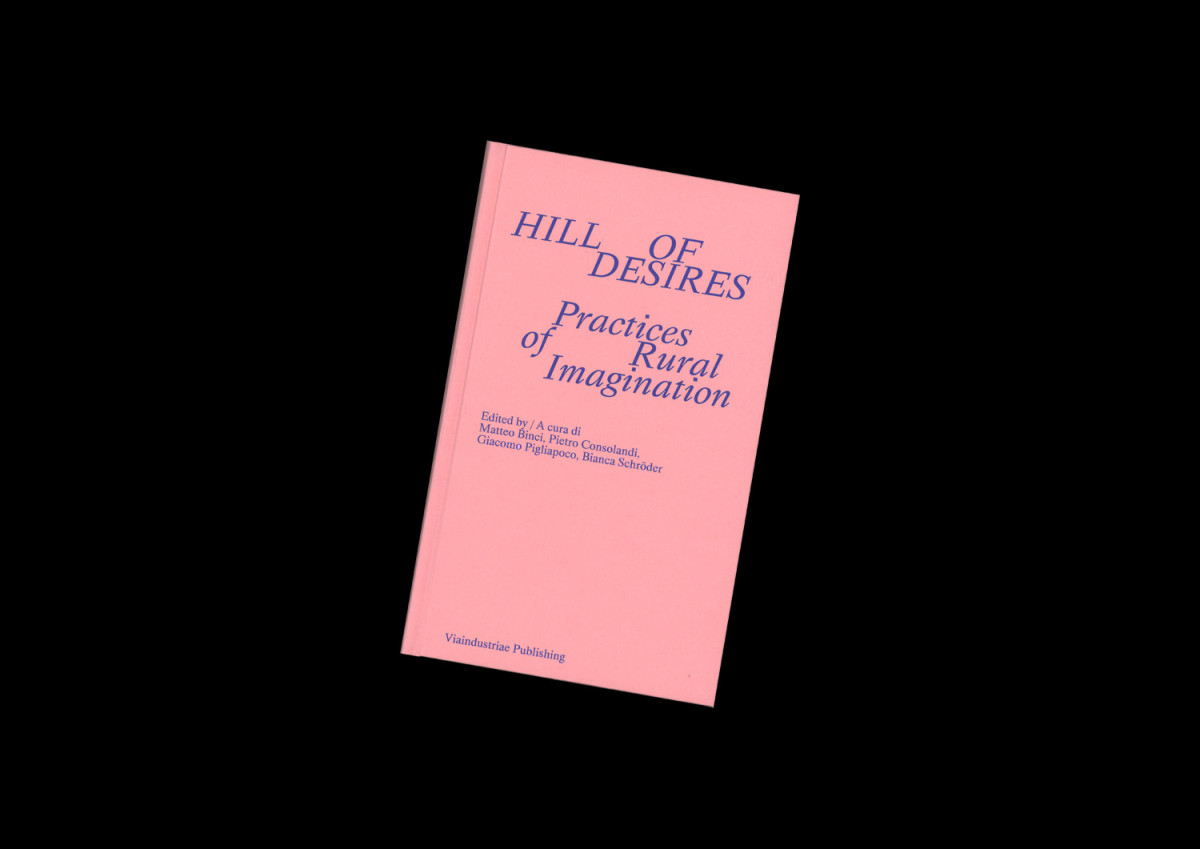
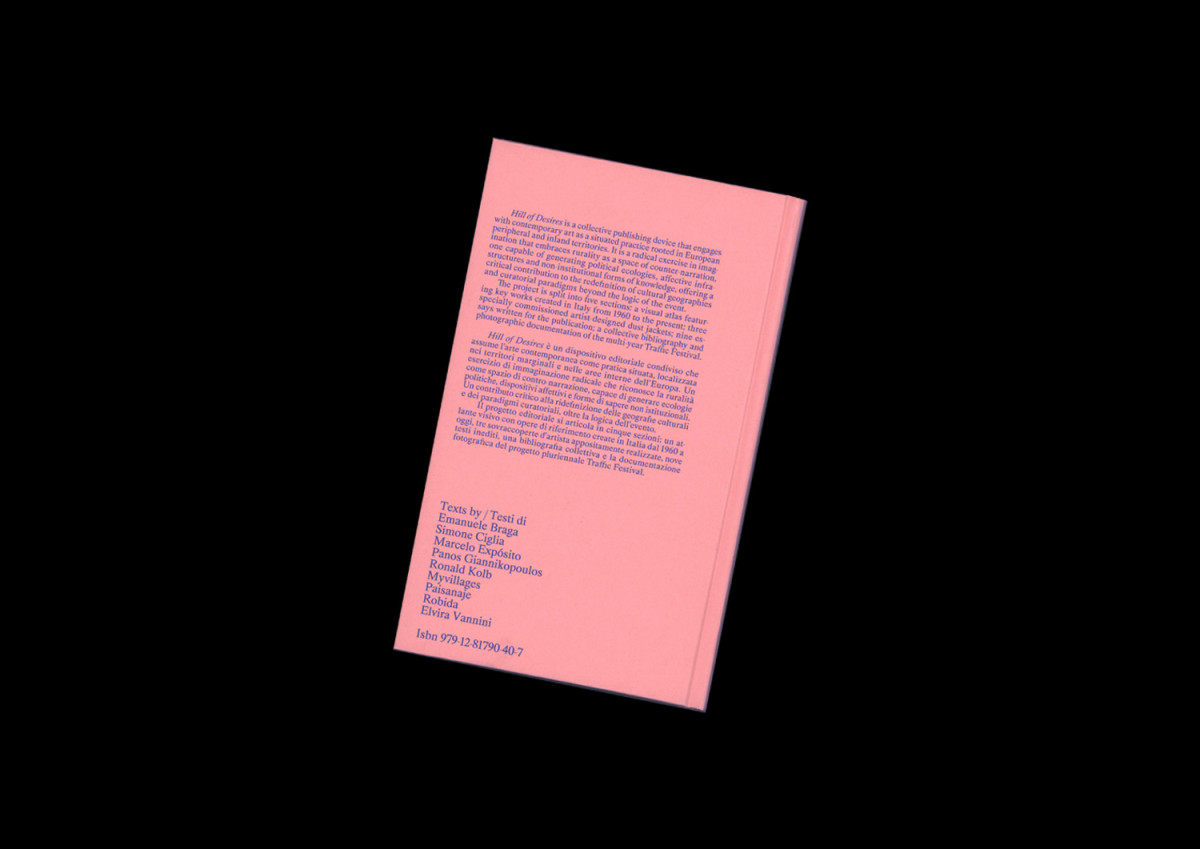
Hill of Desires
€ 25
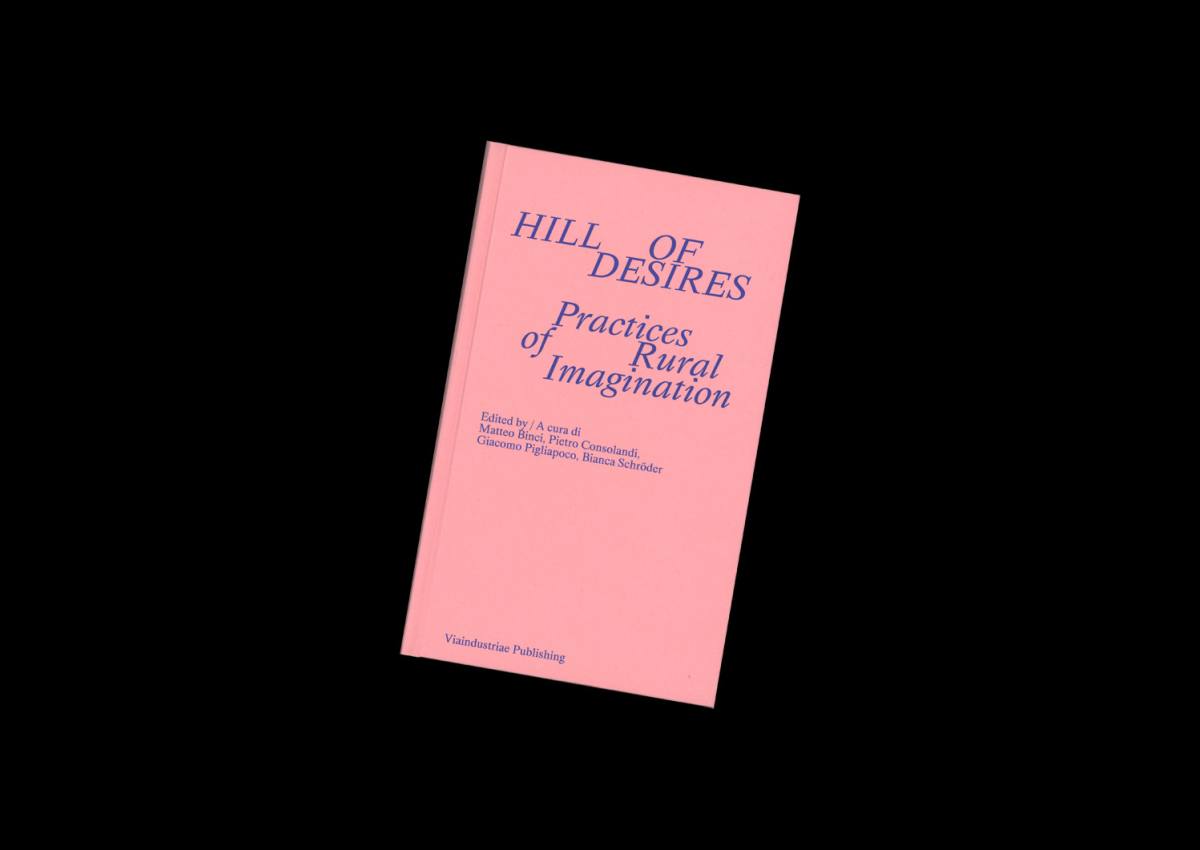
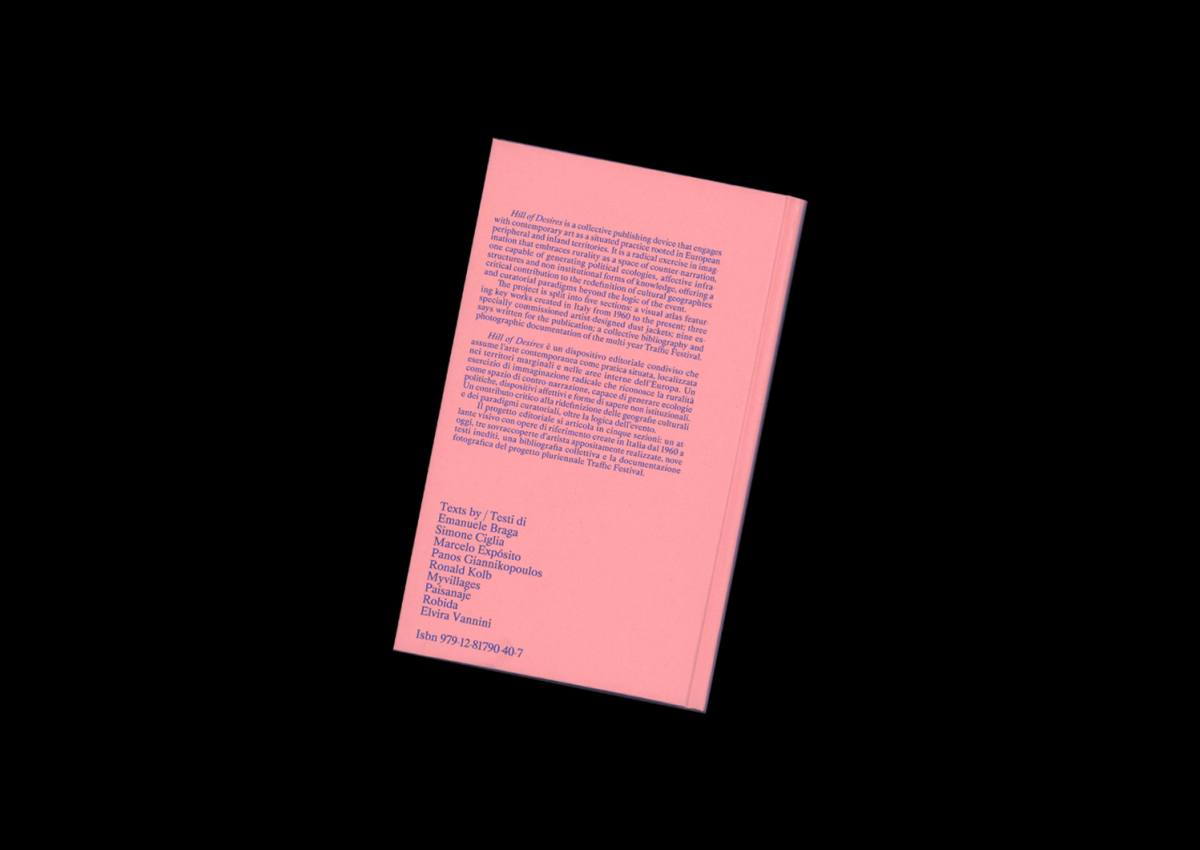
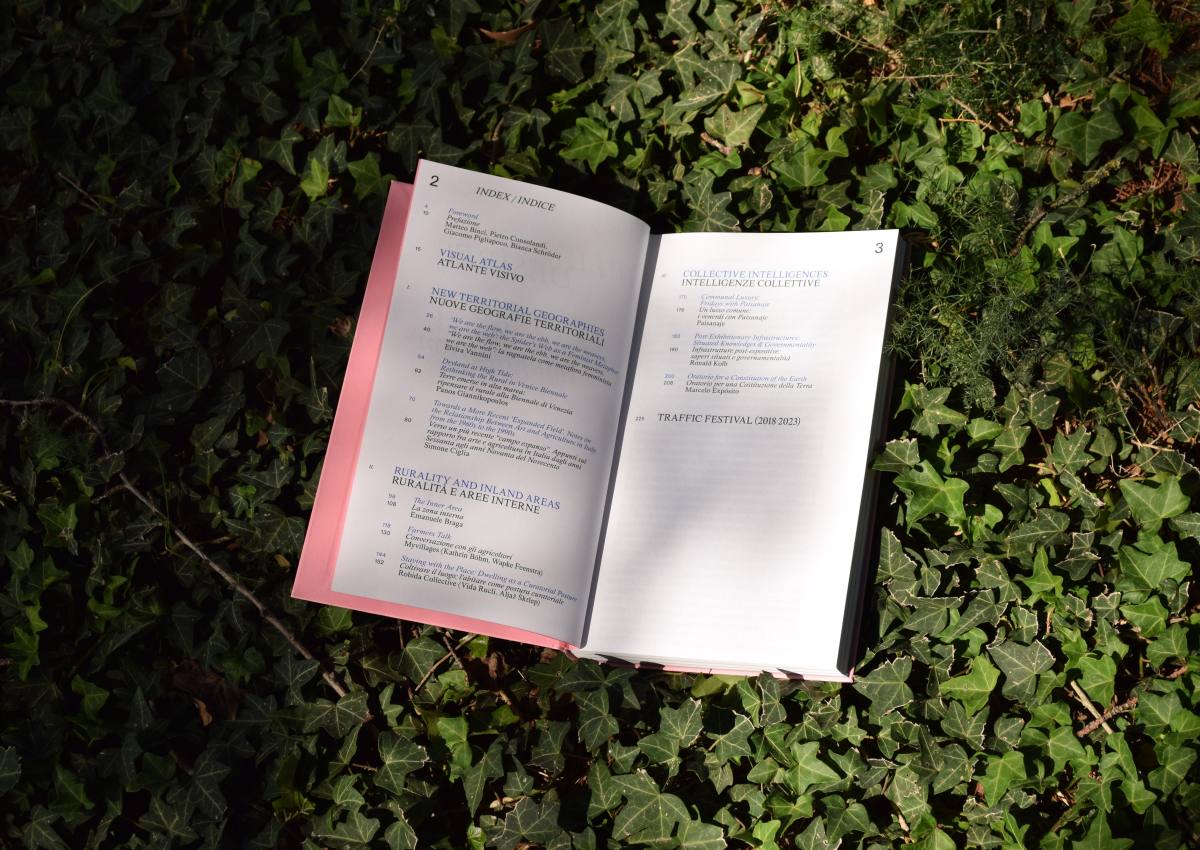
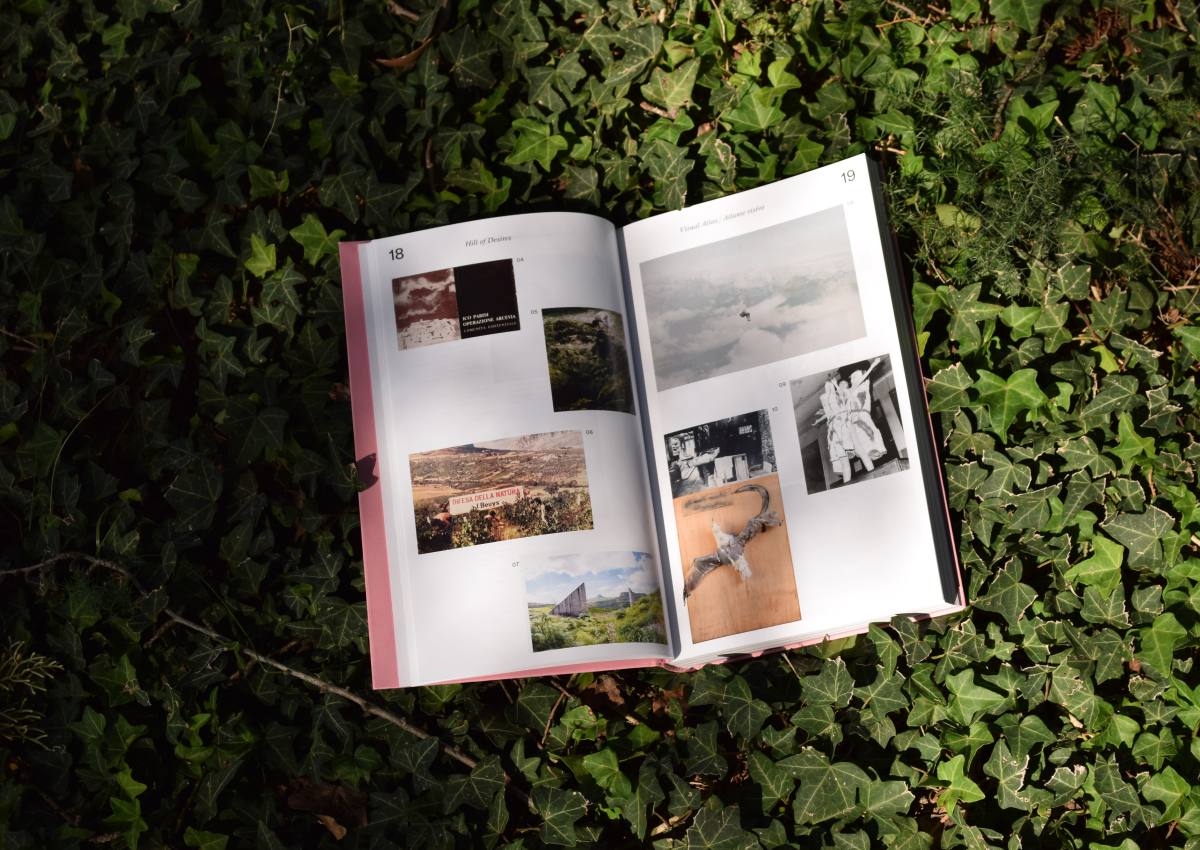
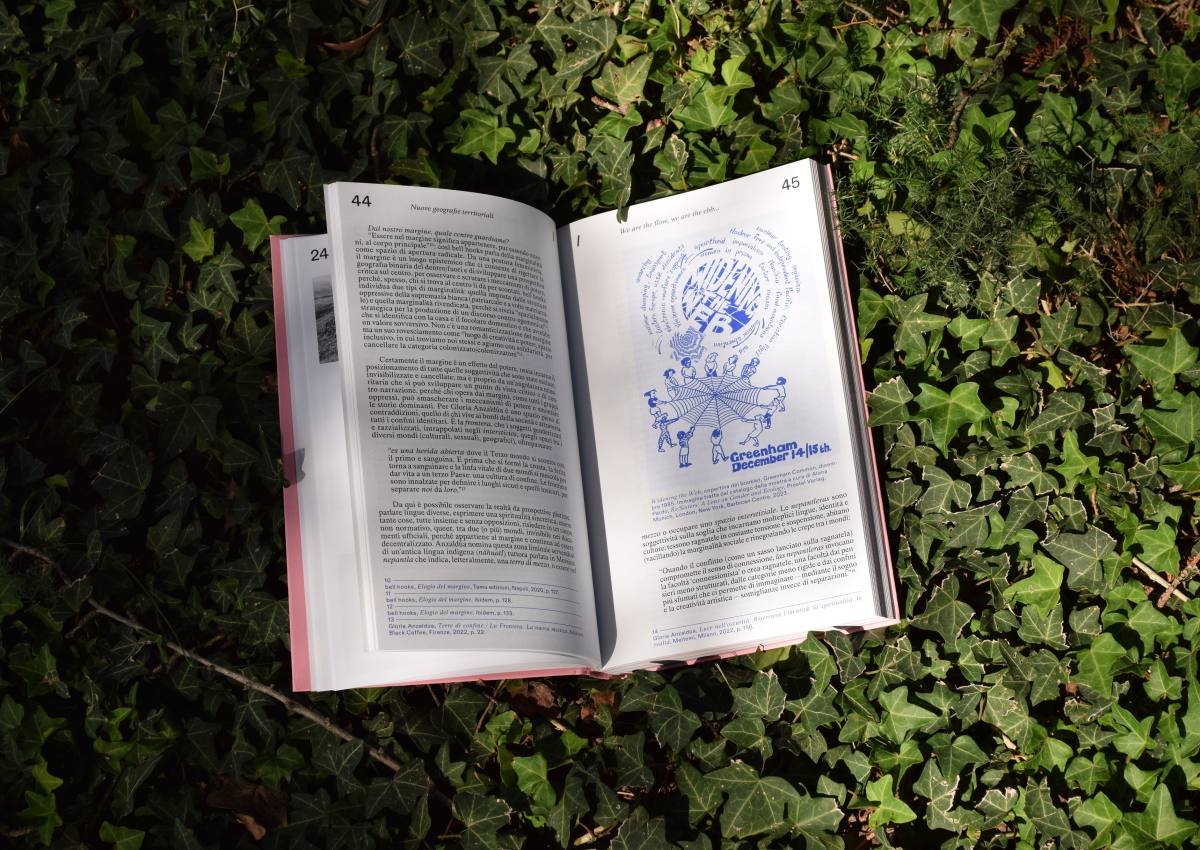
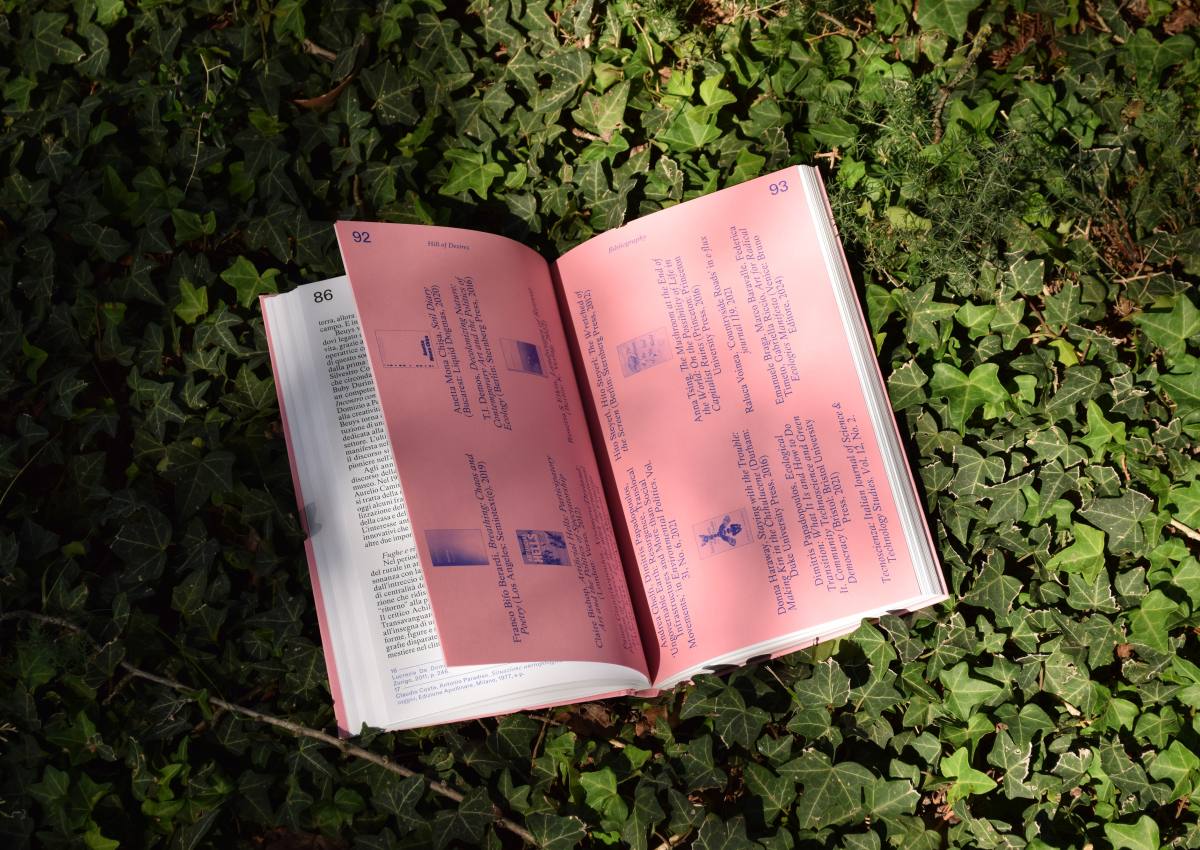
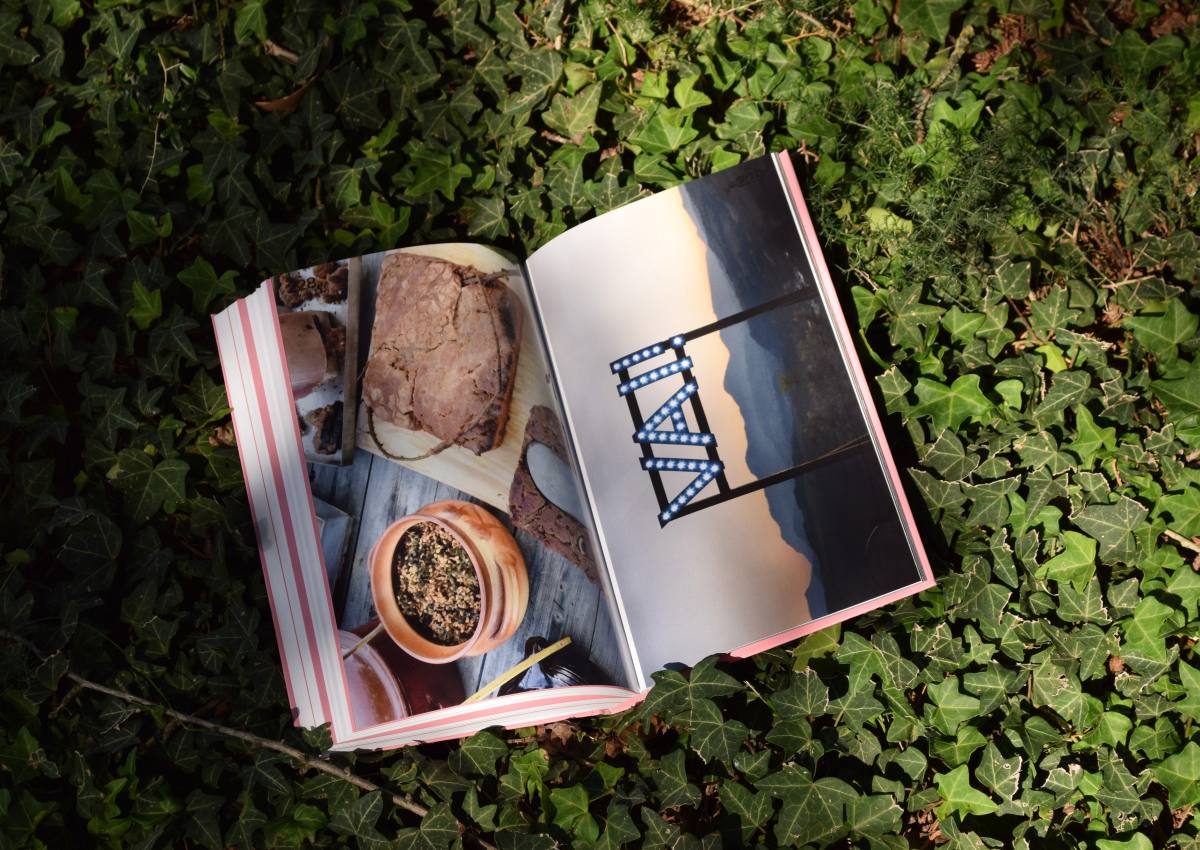
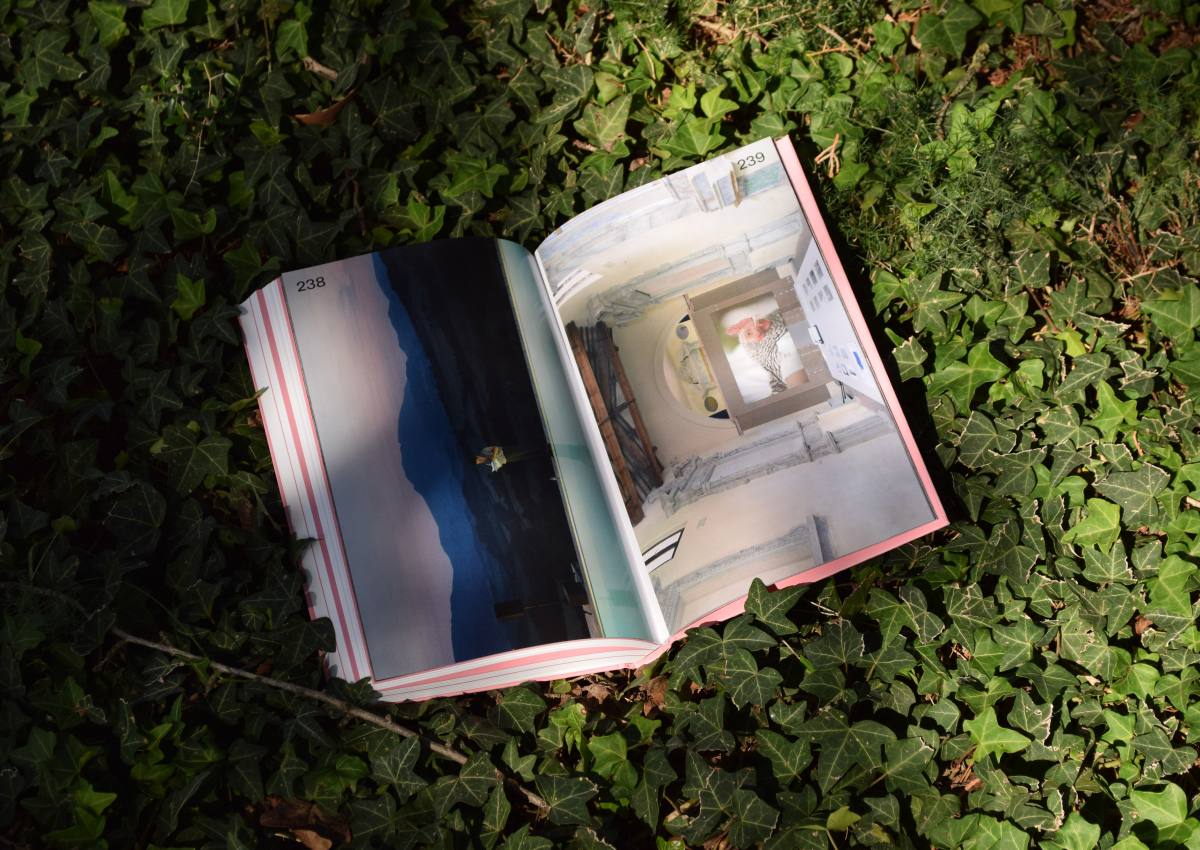
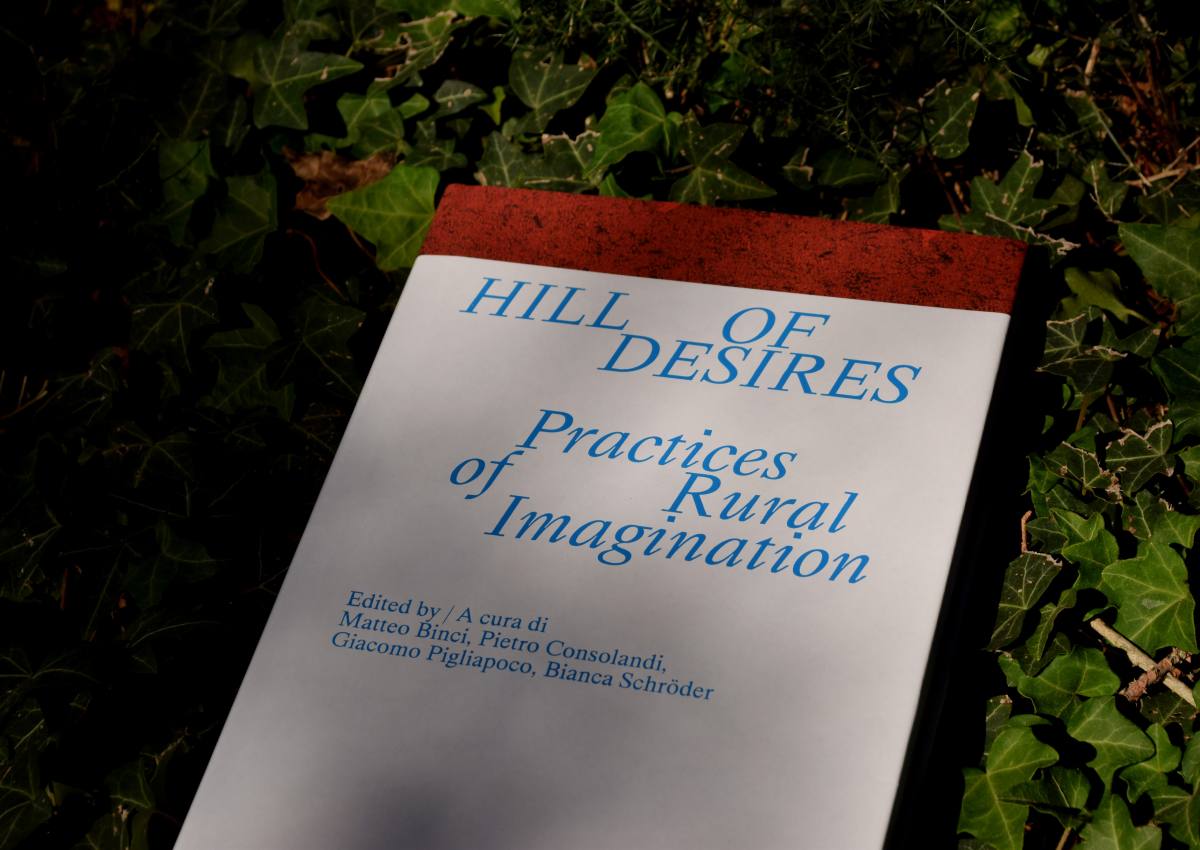
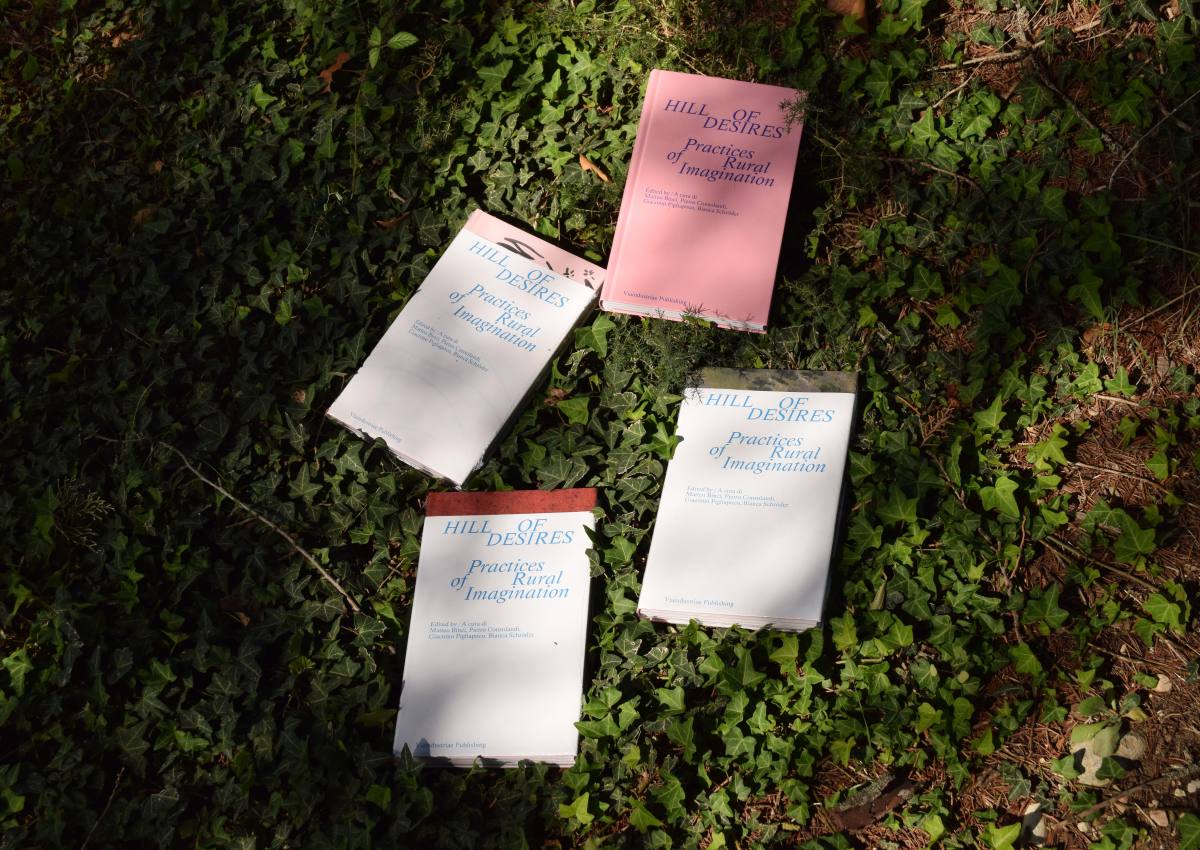
Hill of Desires. Practices of Rural Imagination
€ 25
Edited by Matteo Binci, Pietro Consolandi, Giacomo Pigliapoco, Bianca Schröder
Texts by Elvira Vannini, Panos Giannikopoulos, Simone Ciglia, Emanuele Braga, Myvillages (Kathrin Böhm, Wapke Feenstra), Robida Collective (Vida Rucli, Aljaž Škrlep), Paisanaje, Ronald Kolb, Marcelo Expósito
Artist’s covers by Jumana Manna, Maria Thereza Alves e Bianca Schröder
Research assistant: Amina Berdin
Producer: Anna Mostardi
Copy editing: Giulia Angeloni
Communication manager: Nicoletta Graziano
Supported by the Italian Council program (2024) Direzione Generale Creatività Contemporanea del Ministero della Cultura
264 pp.
14,5 X 24 cm
eng/ita
2025
ISBN 979-12-81790-40-7
Hill of Desires is a collective publishing device that engages with contemporary art as a situated practice rooted in European peripheral and inland territories. It is a radical exercise in imag ination that embraces rurality as a space of counter-narration, one capable of generating political ecologies, affective infrastructures and non-institutional forms of knowledge, offering a critical contribution to the redefinition of cultural geographies and curatorial paradigms beyond the logic of the event. The project is split into five sections: a visual atlas featuring key works created in Italy from 1960 to the present; three specially commissioned artist-designed dust jackets; nine essays written for the publication; a collective bibliography and photographic documentation of the multi-year Traffic Festival.
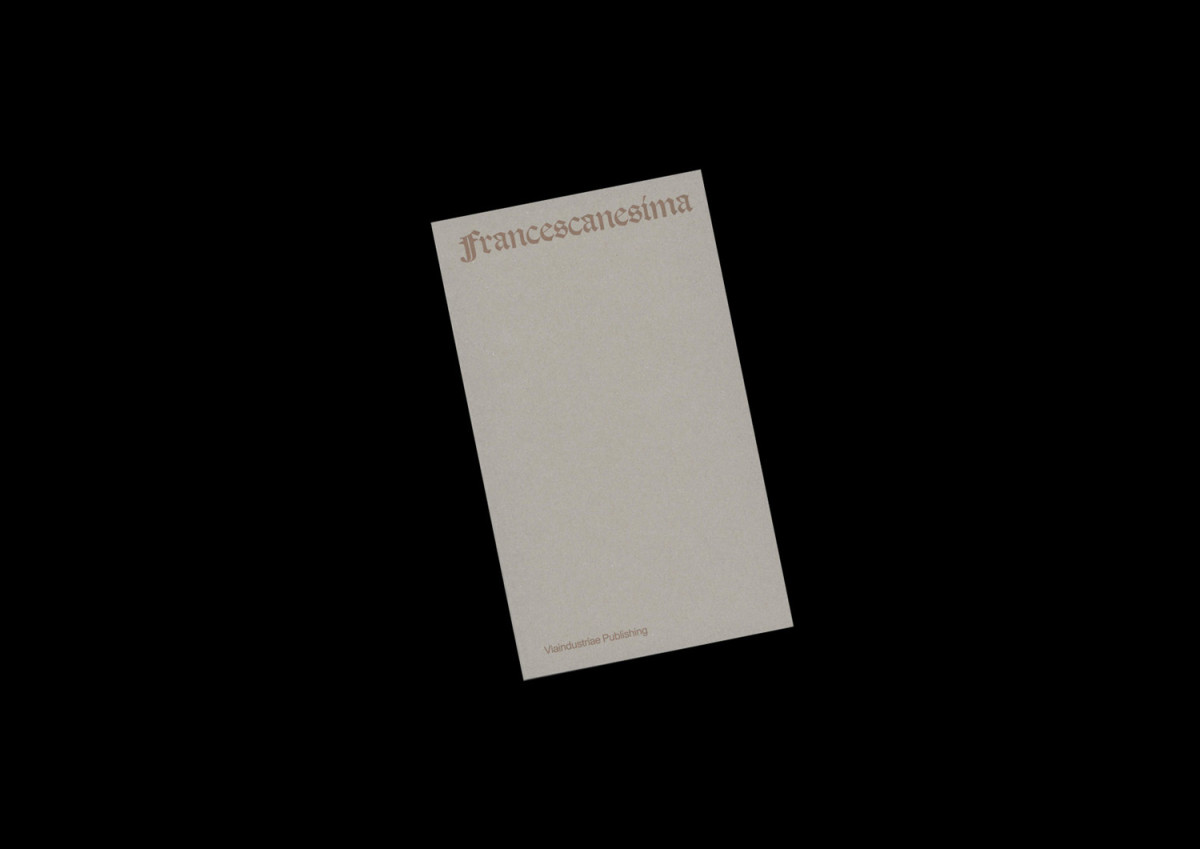
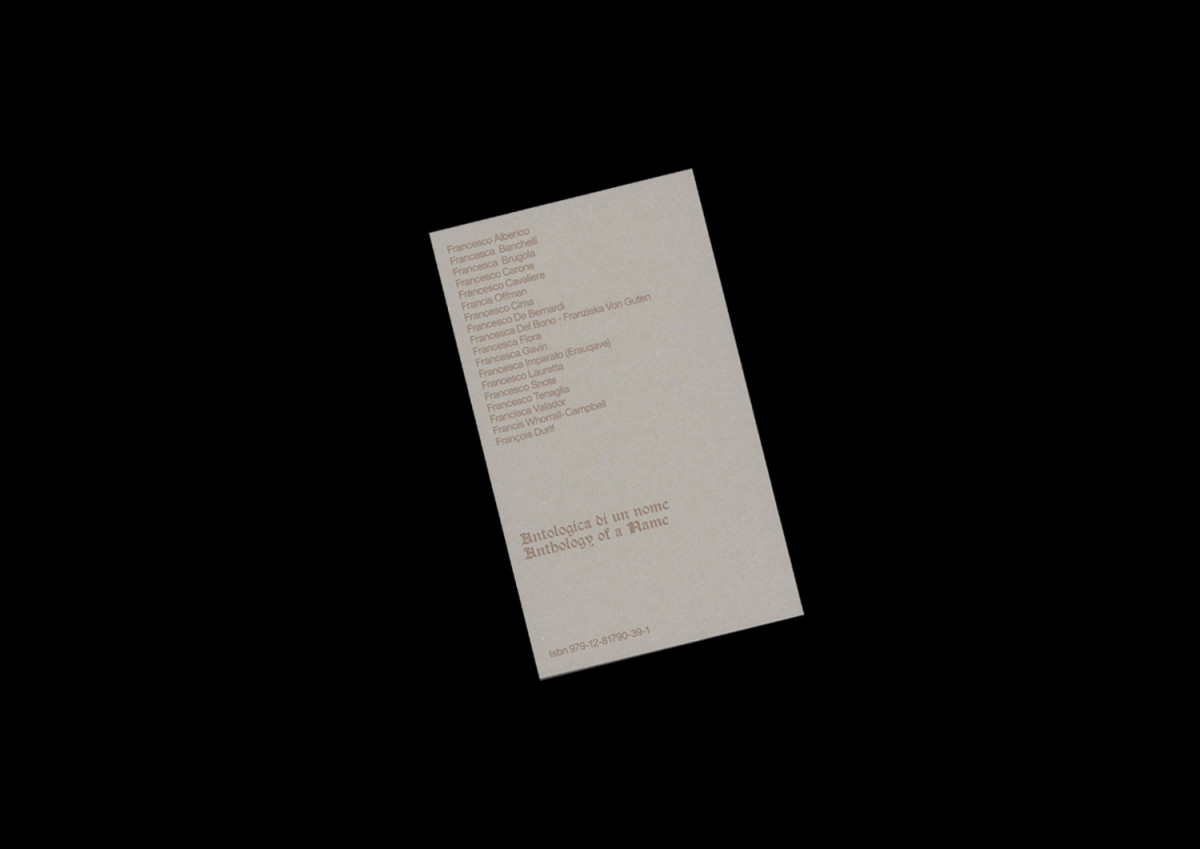
Vv. Aa.
Francescanesima. Antologica di un nome
€ 12.26
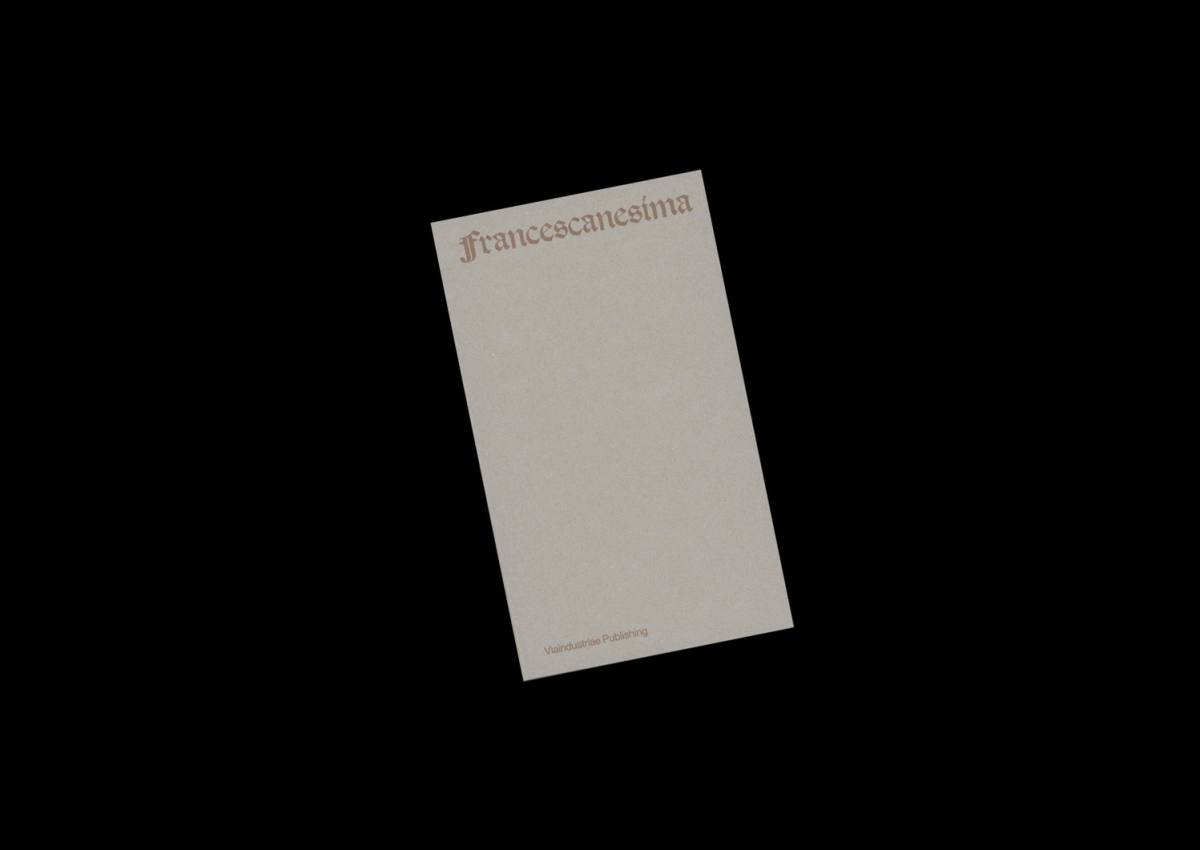
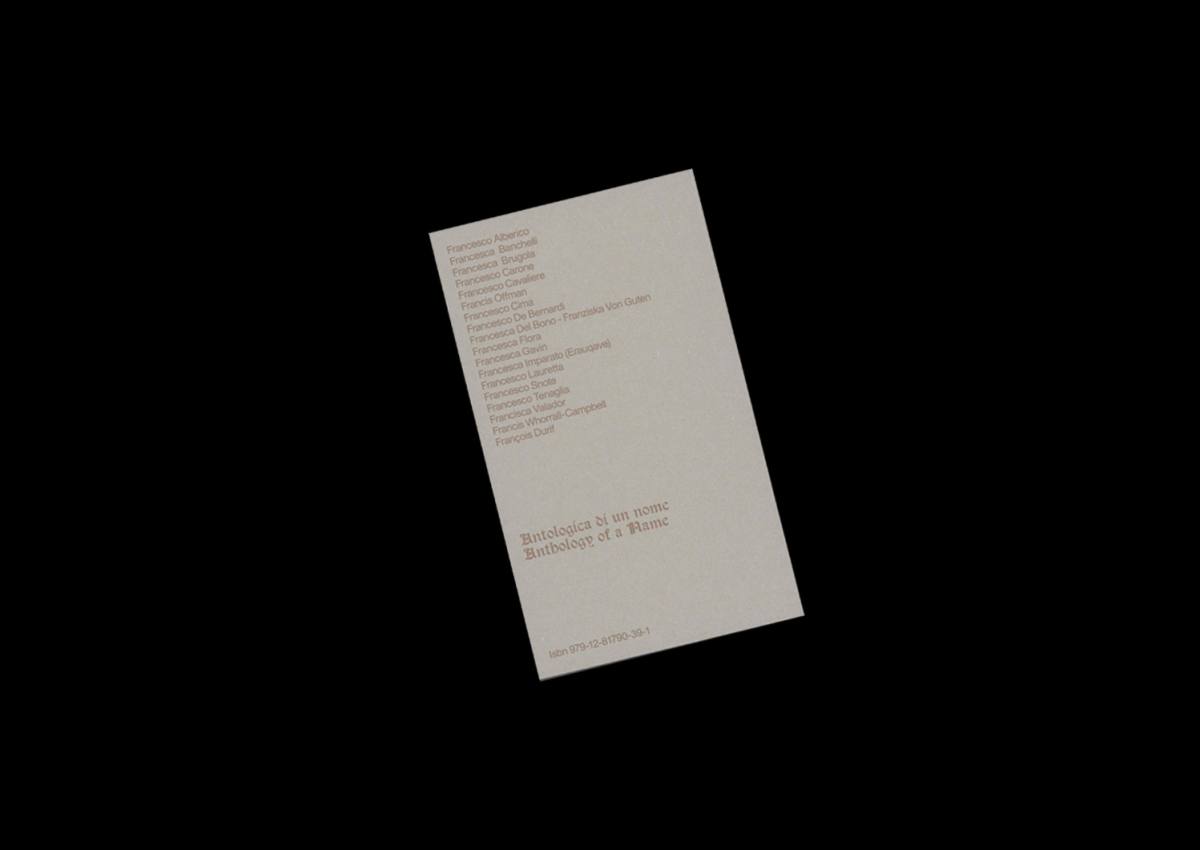
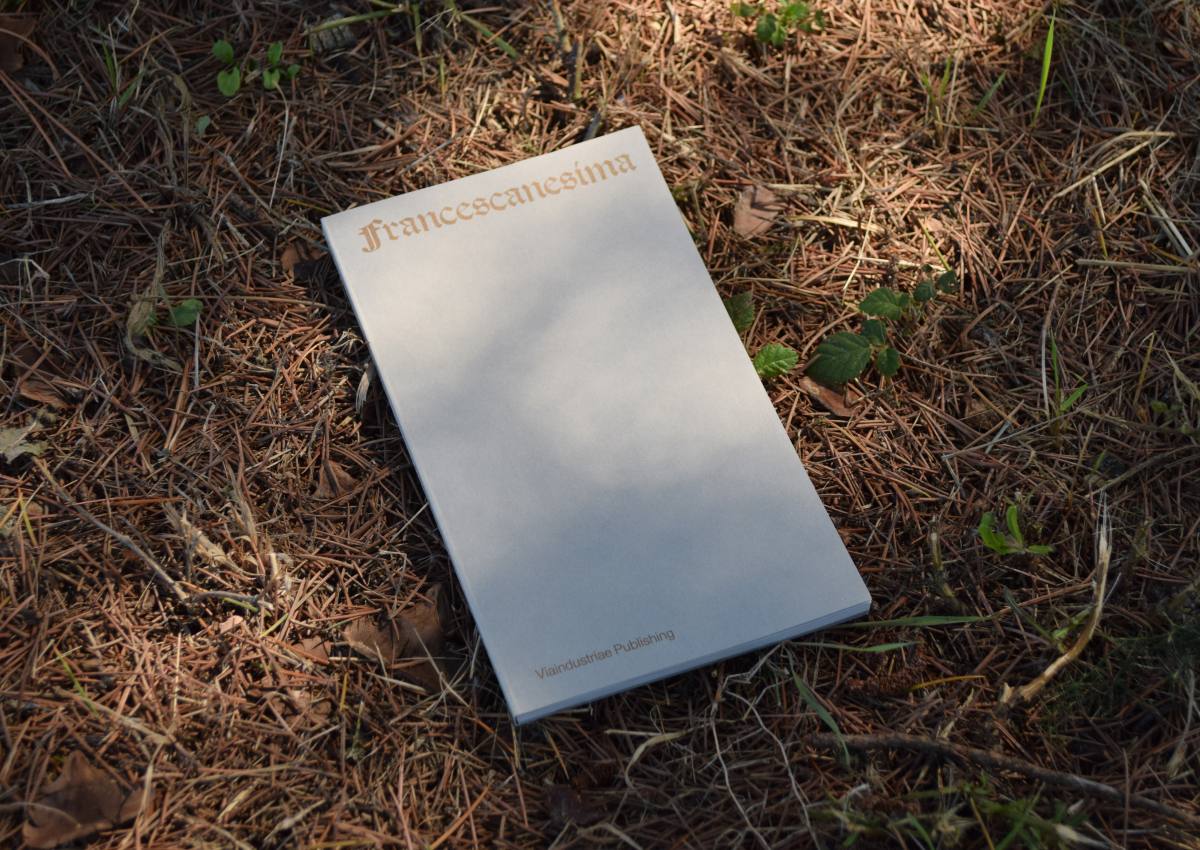
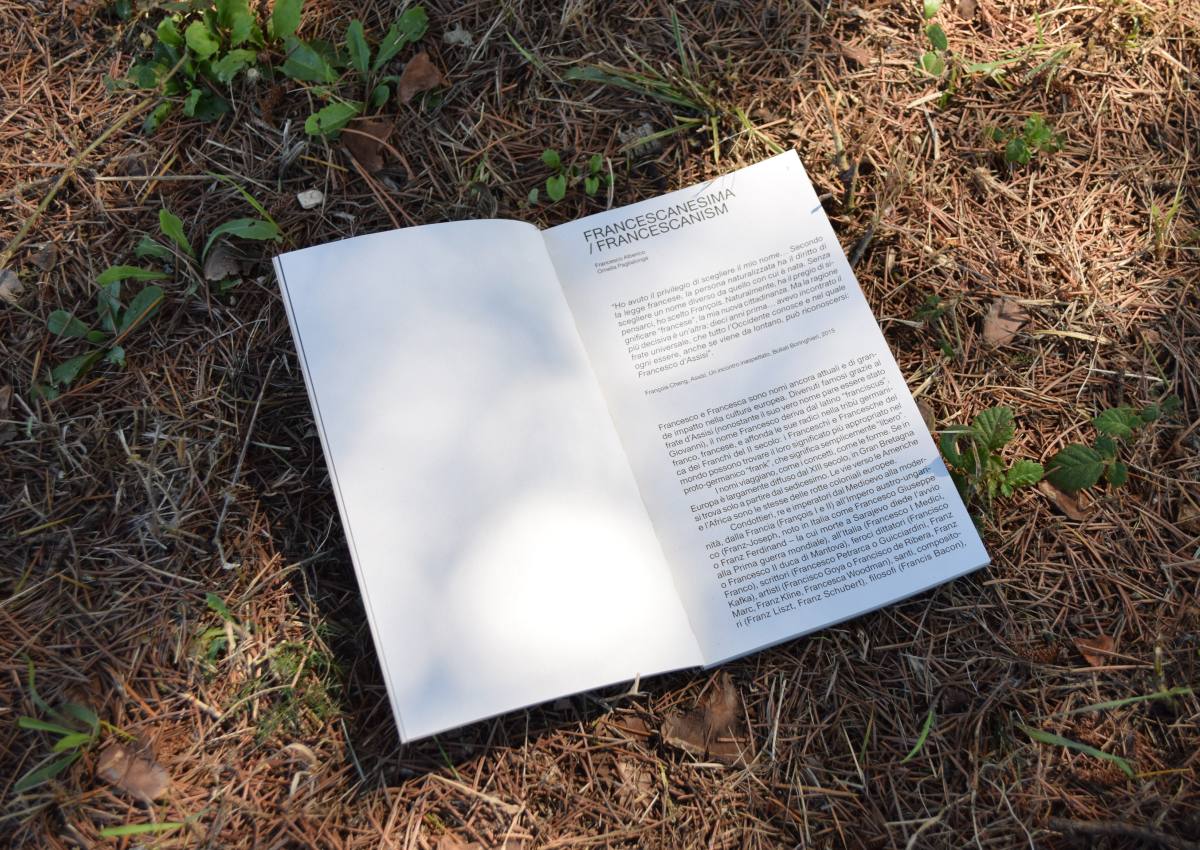
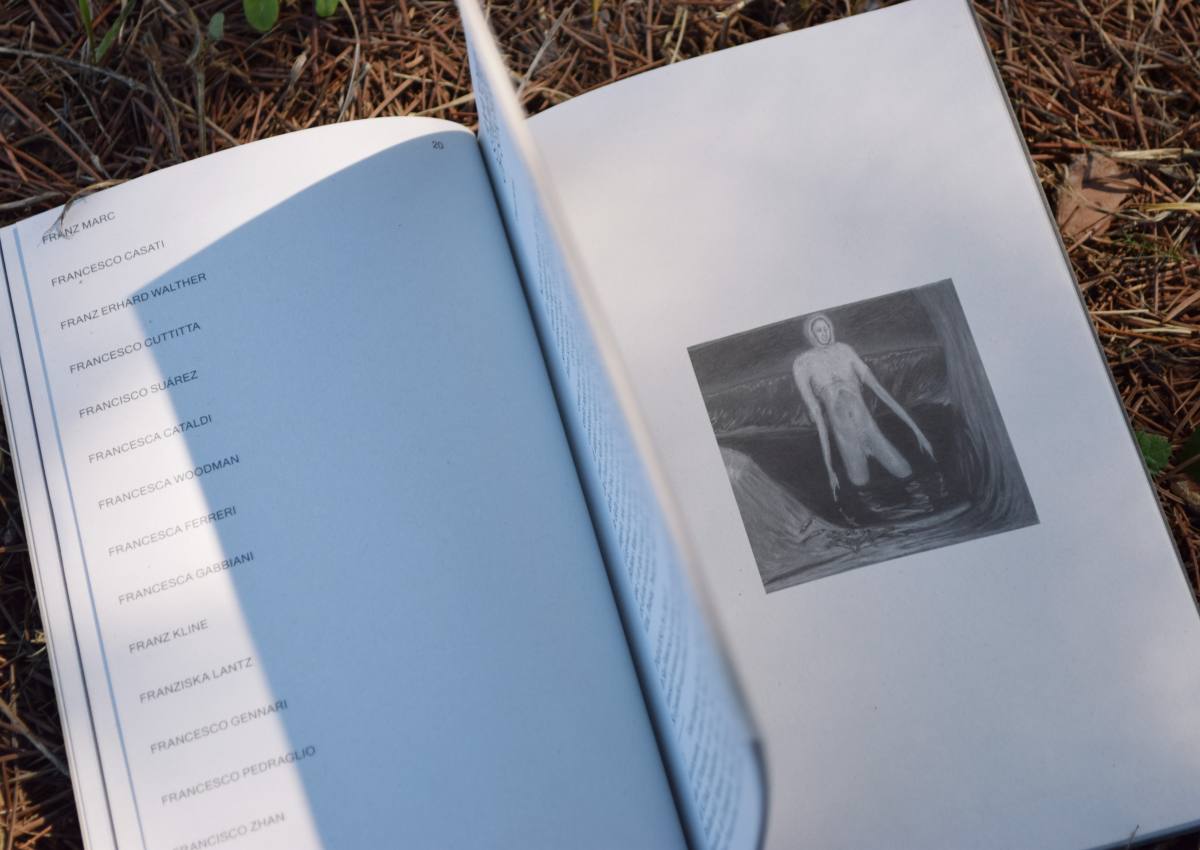
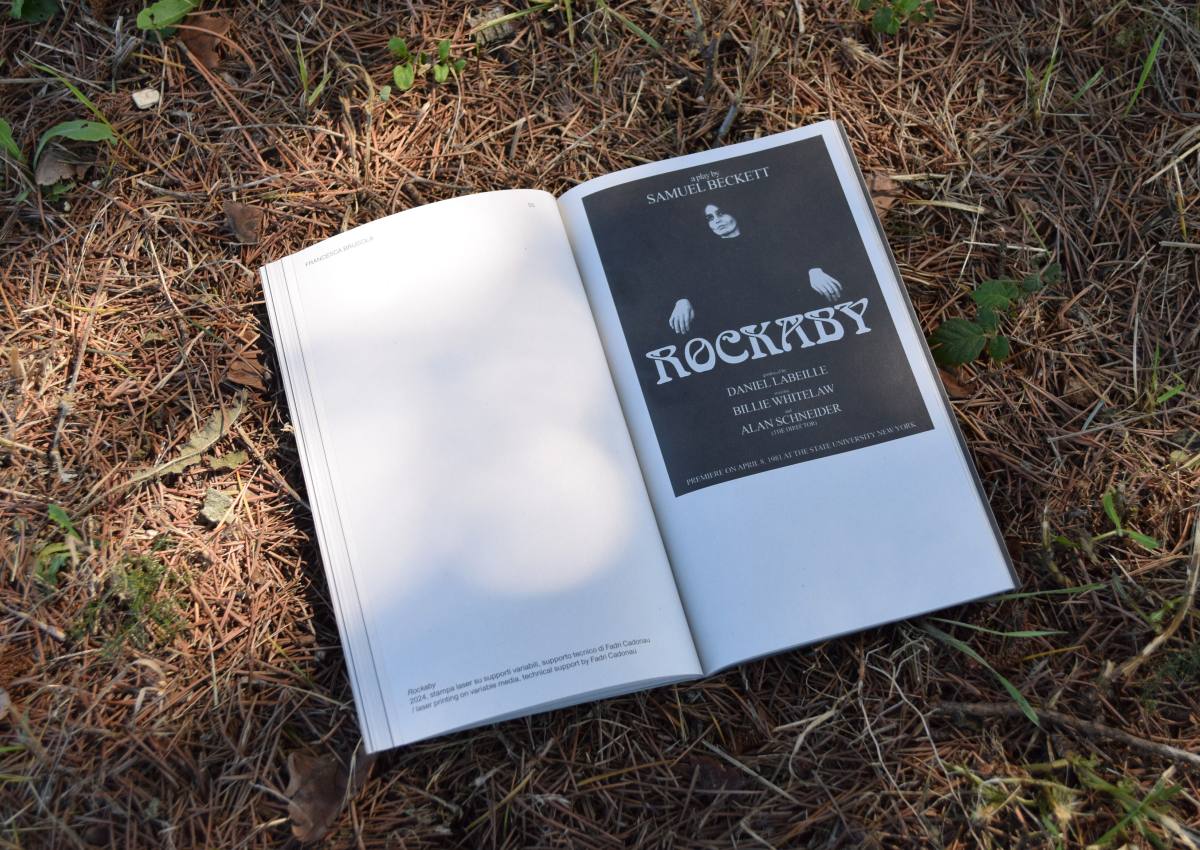
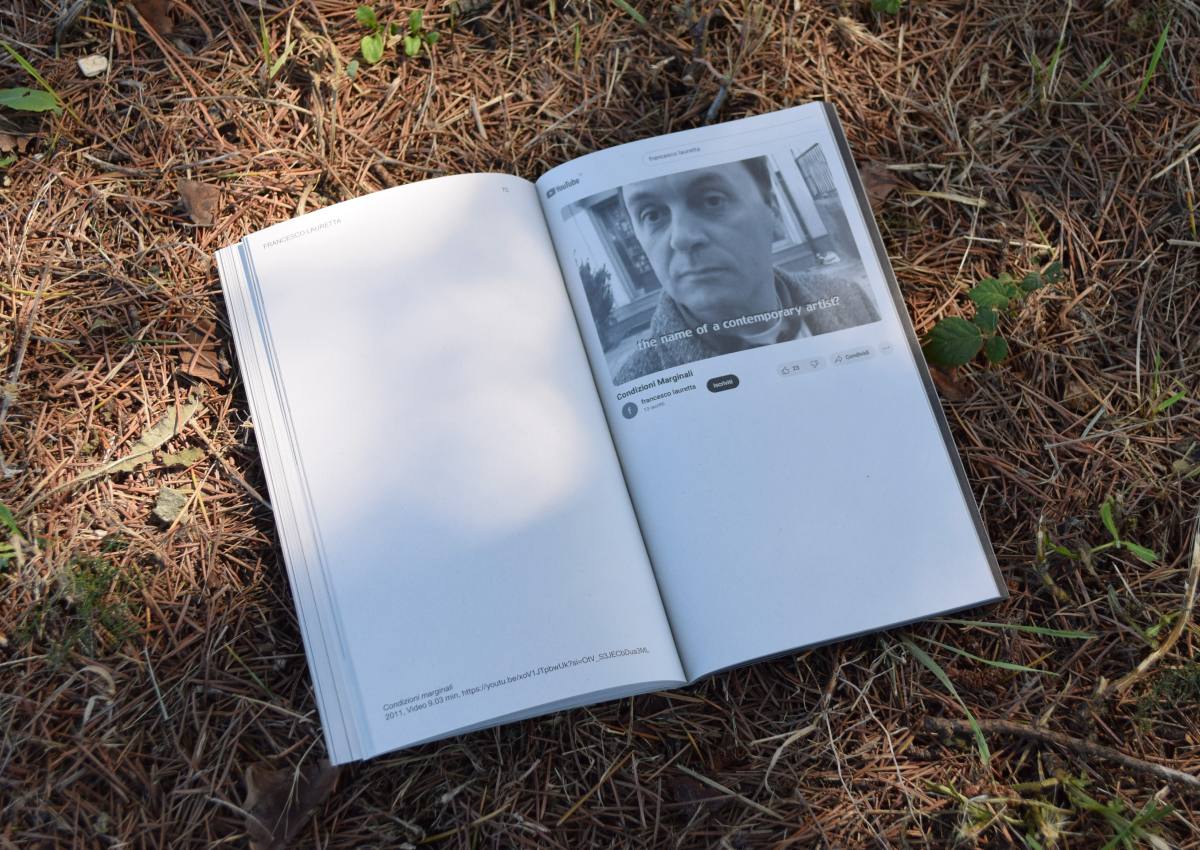
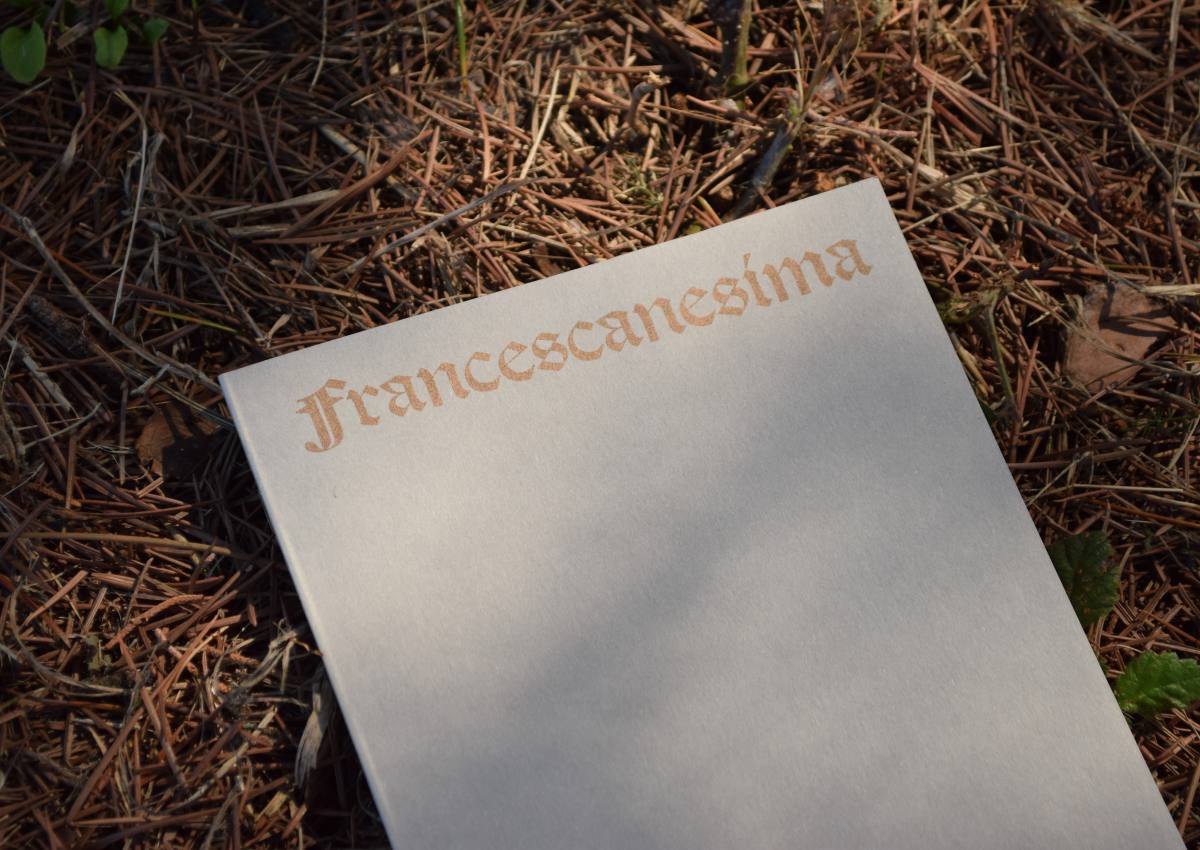
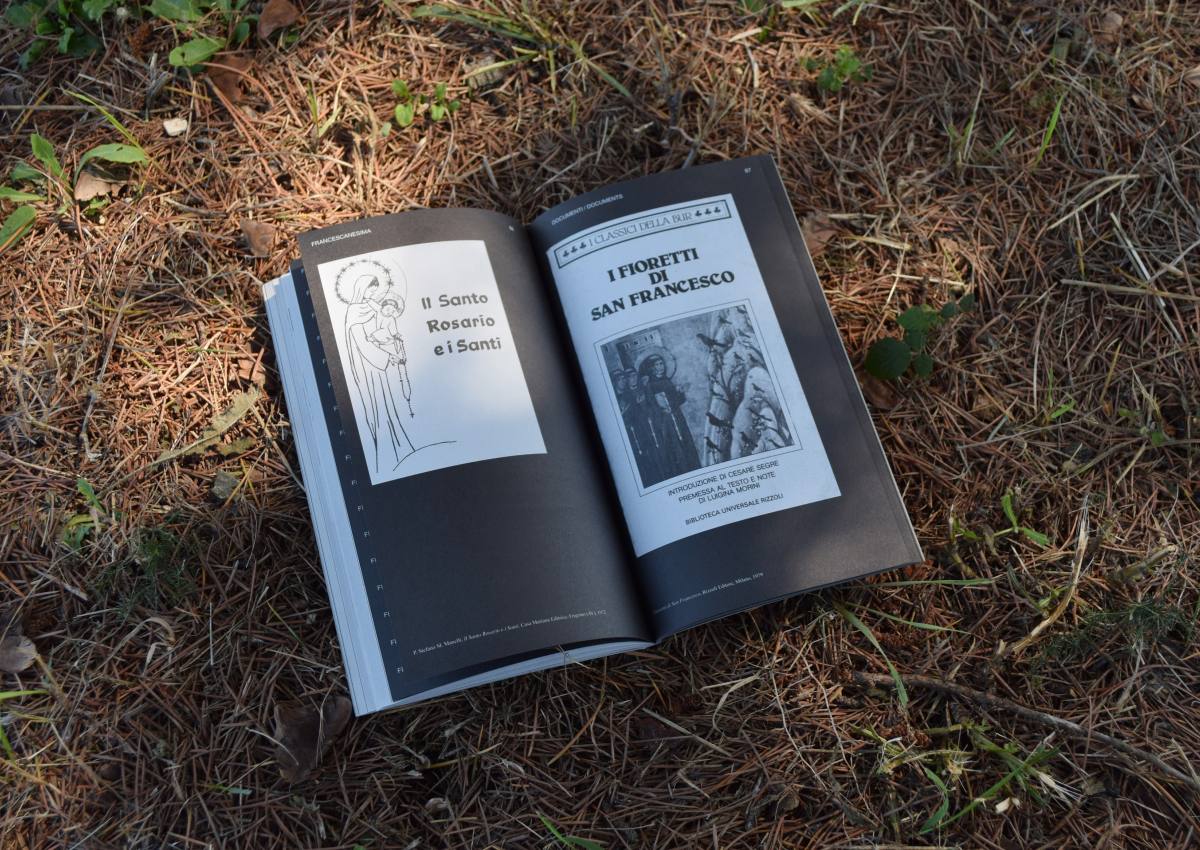
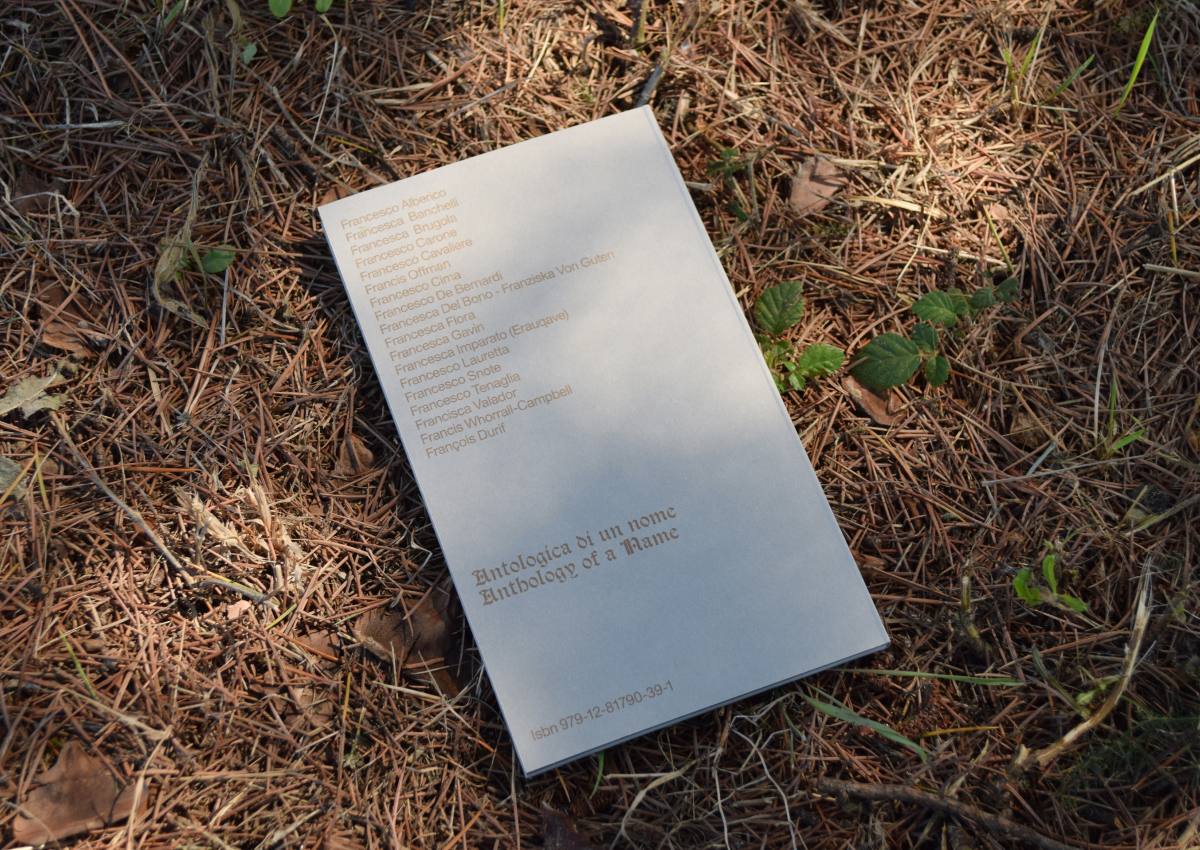
Vv. Aa.
Francescanesima. Anthology of a Name
€ 12.26
Edited by Francesco Alberico, Ornella Paglialonga
Testi di Gianni Carrera, Francesco Paolo Ciglia
Francesche e Franceschi: Francesco Alberico, Francesca Banchelli, Francesca Brugola, Francesco Carone, Francesco Cavaliere, Francis Offman, Francesco Cima, Francesco De Bernardi, Francesca Del Bono – Franziska Von Guten, Francesca Flora, Francesca Gavin, Francesca Imparato (Erauqave), Francesco Lauretta, Francesco Snote, Francesco Tenaglia, Francisca Valador, Francis Whorrall-Campbell, François DurifFrancesche e Franceschi: Francesco Alberico, Francesca Banchelli, Francesca Brugola, Francesco Carone, Francesco Cavaliere, Francis Offman, Francesco Cima, Francesco De Bernardi, Francesca Del Bono – Franziska Von Guten, Francesca Flora, Francesca Gavin, Francesca Imparato (Erauqave), Francesco Lauretta, Francesco Snote, Francesco Tenaglia, Francisca Valador, Francis Whorrall-Campbell, François Durif
112 pp.
12 X 20,5 cm
ita/eng
2025
ISBN 979-12-81790-39-1
Francescanesima was born as a hybrid work of textual and visual contents realised by artists with very different practices together with theorists: a paradoxical encounter of Francis and Frances (in any language), thus deconstructing, in a somewhat irreverent way, the clichés through which artists are selected in contemporary art exhibitions.
Francis and Frances are names that are still relevant and impactful in European culture. Made famous by the friar of Assisi (although his real name seems to have been Giovanni), the name Francis derives from the Latin 'franciscus', franc, French and has its roots in the Germanic tribe of the Franks of the 2nd century.
But the story of 'Francesco/a' is the story of a name so widely spread it almost seems to lose the thread that binds it to its origins. Does it make sense today to reflect on the fate of a 'name', its function, and whether or not it can influence our lives? How much history can there be behind a name and how much does it affect us?
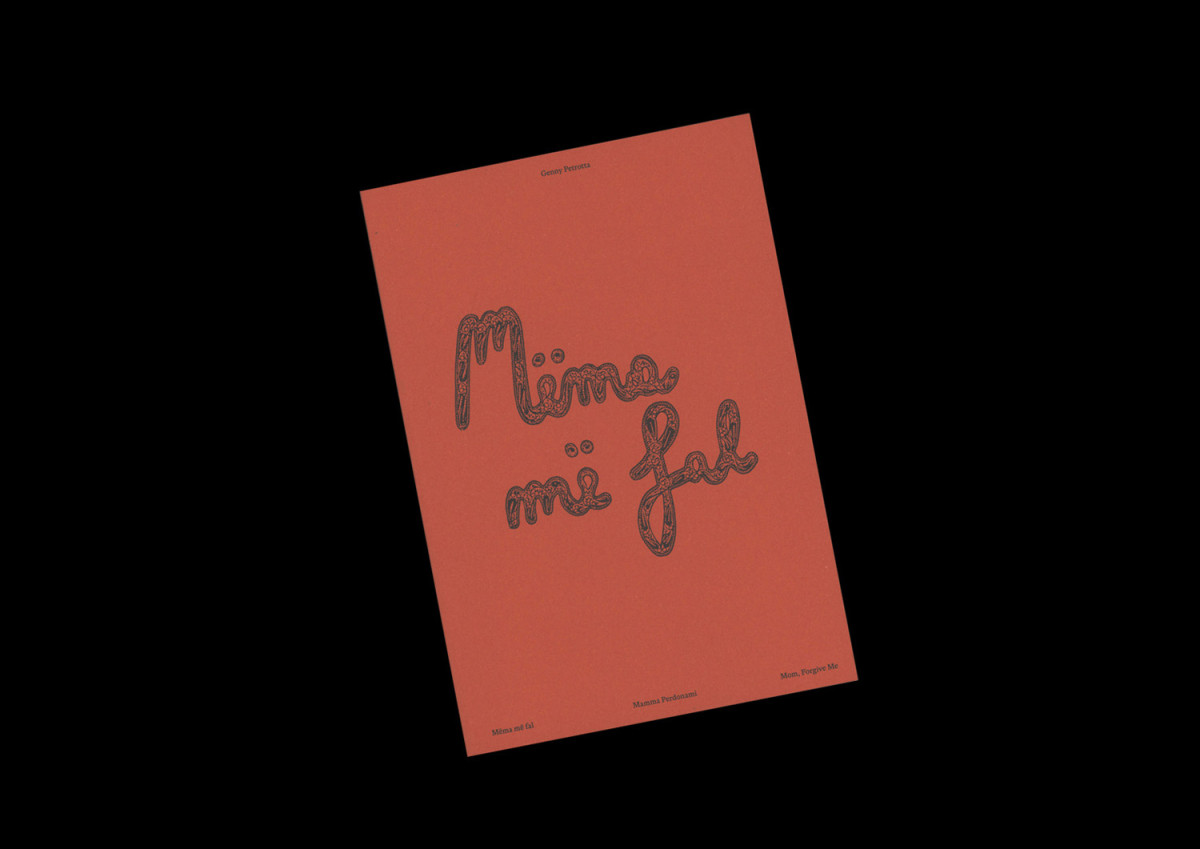
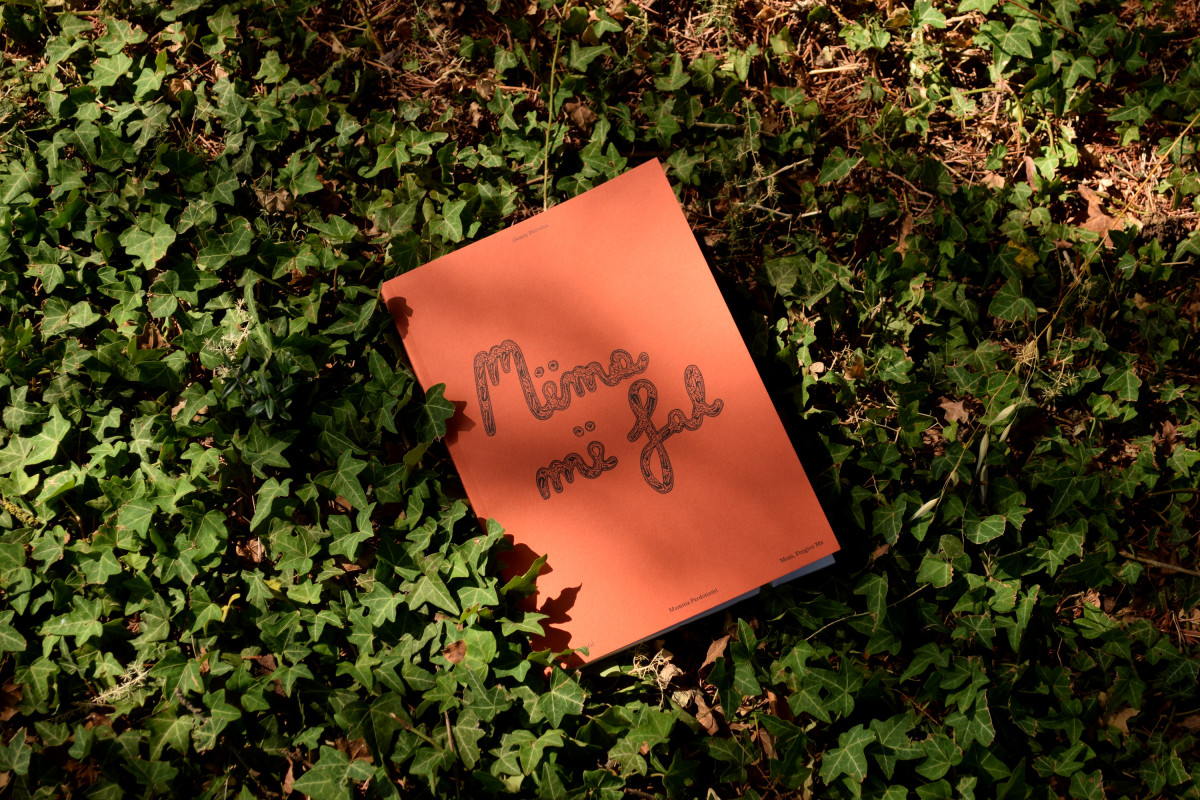
Genny Petrotta
Mëma më fal. Mom, Forgive Me
€ 18
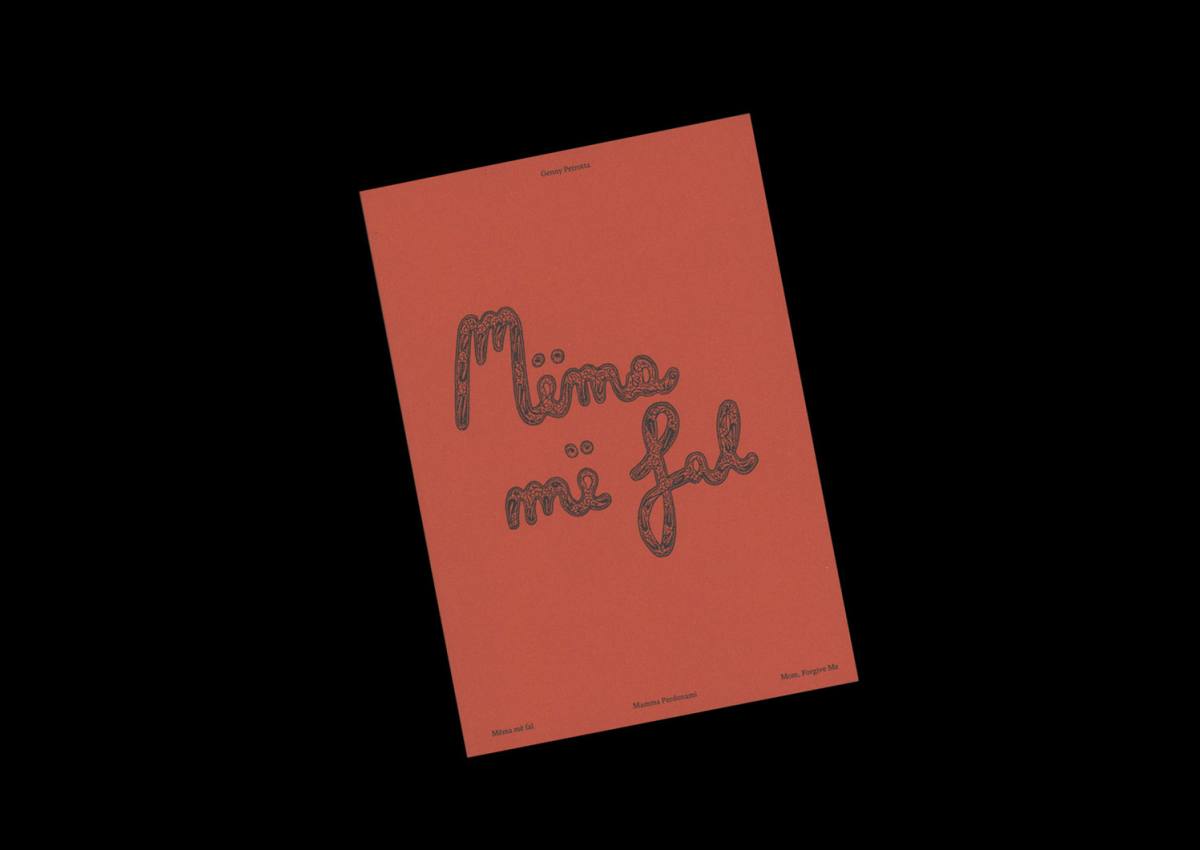
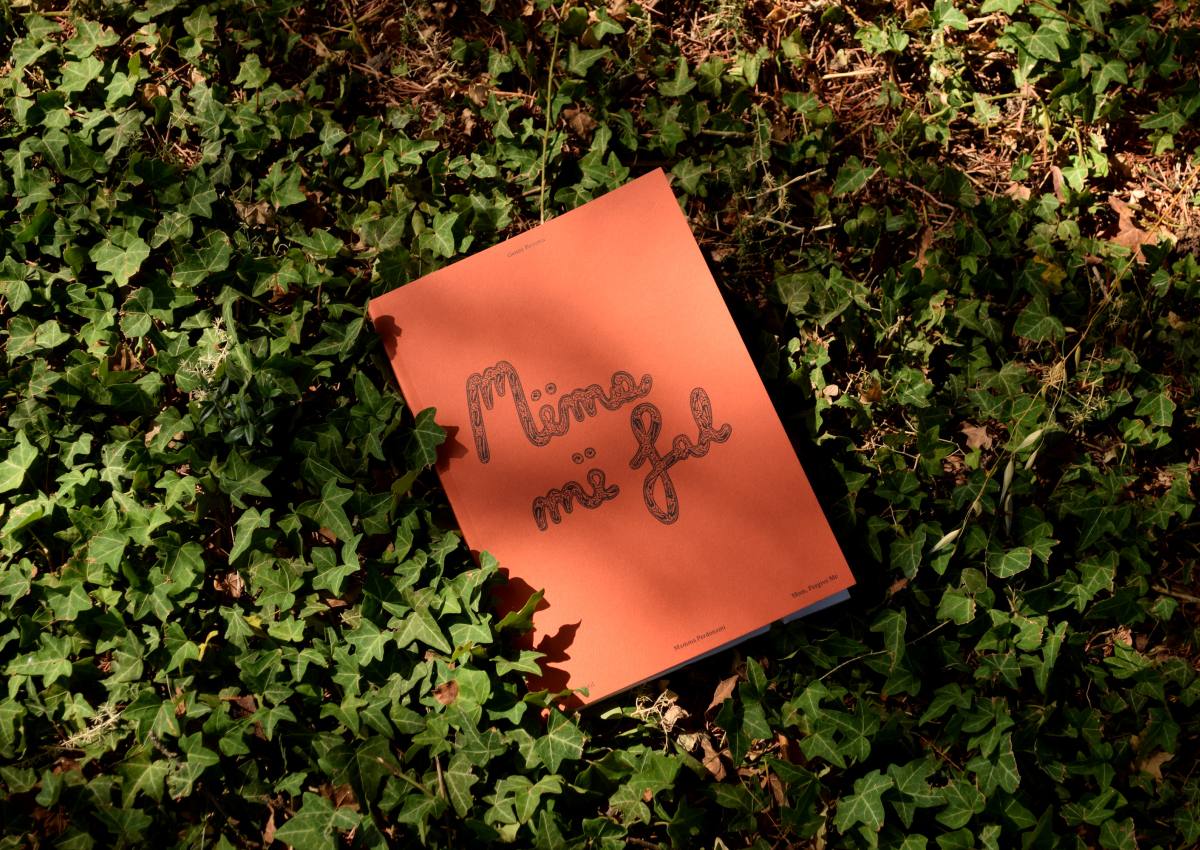
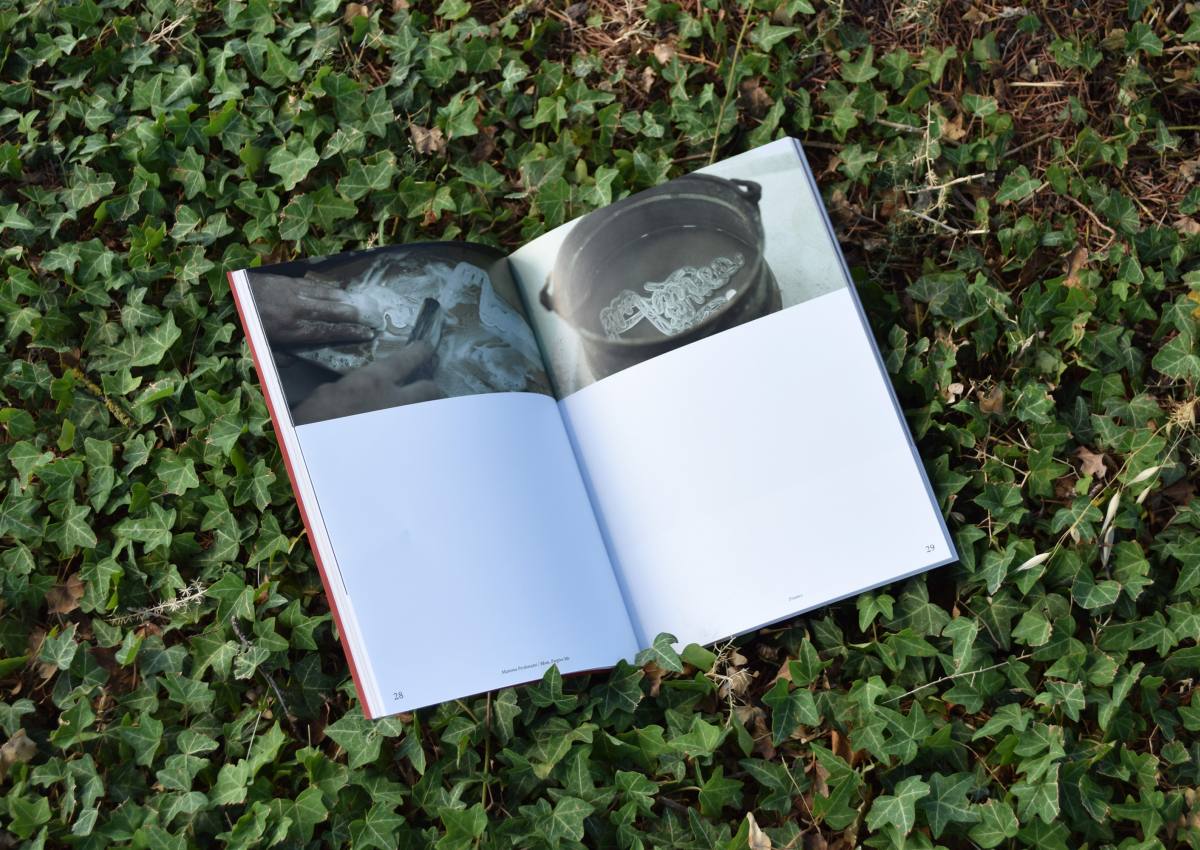
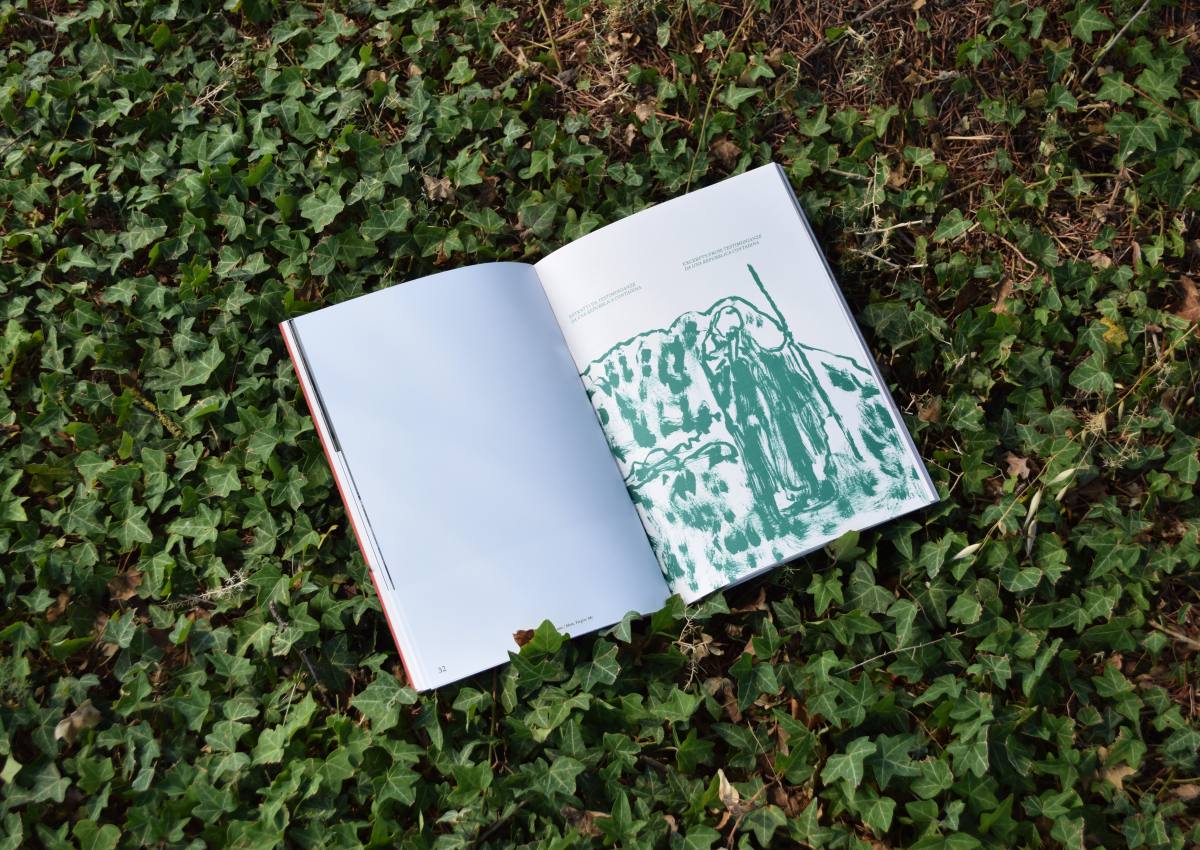
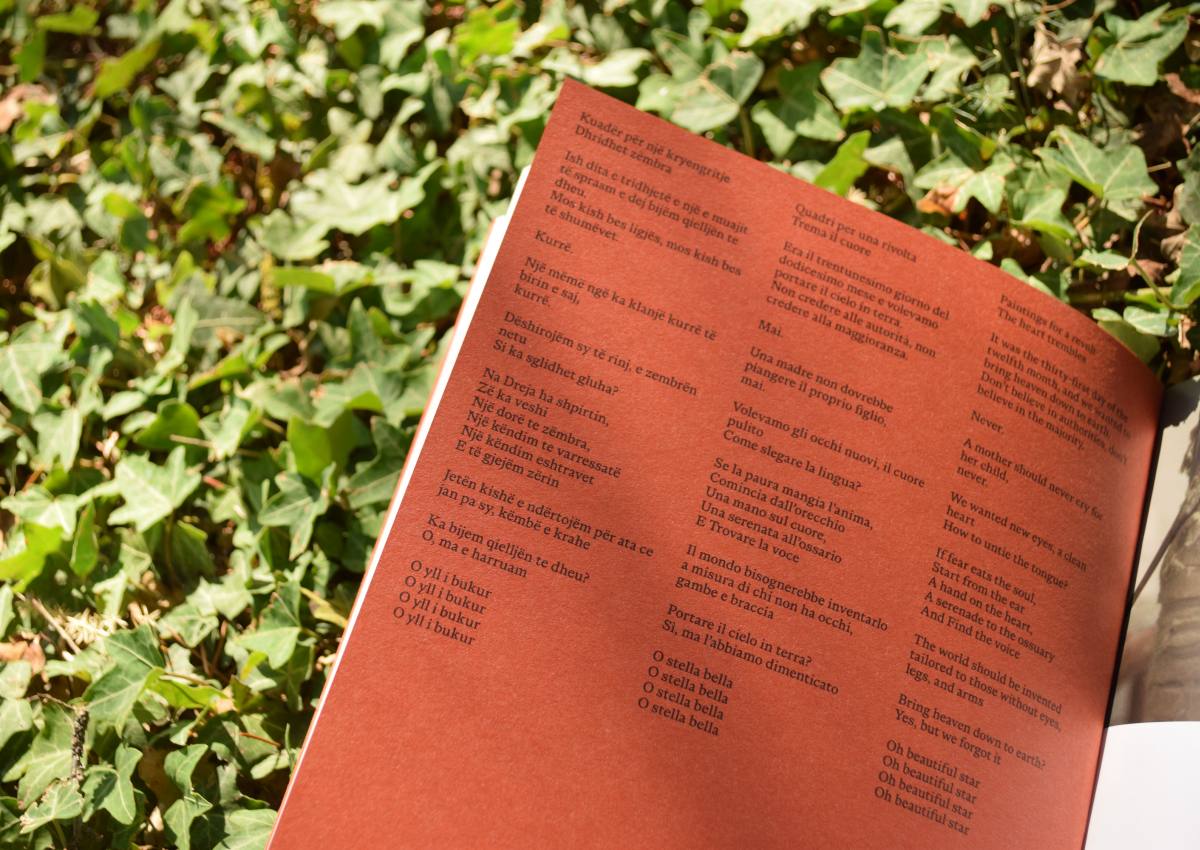
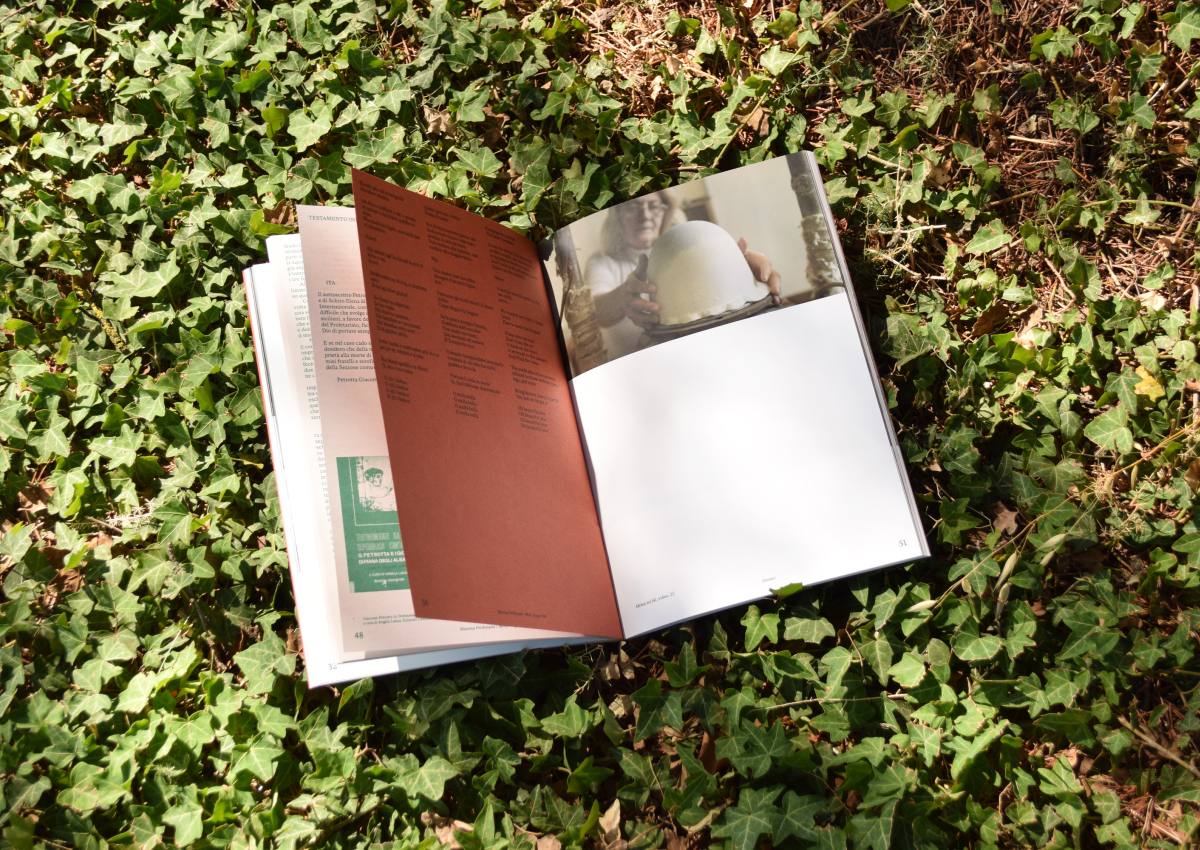
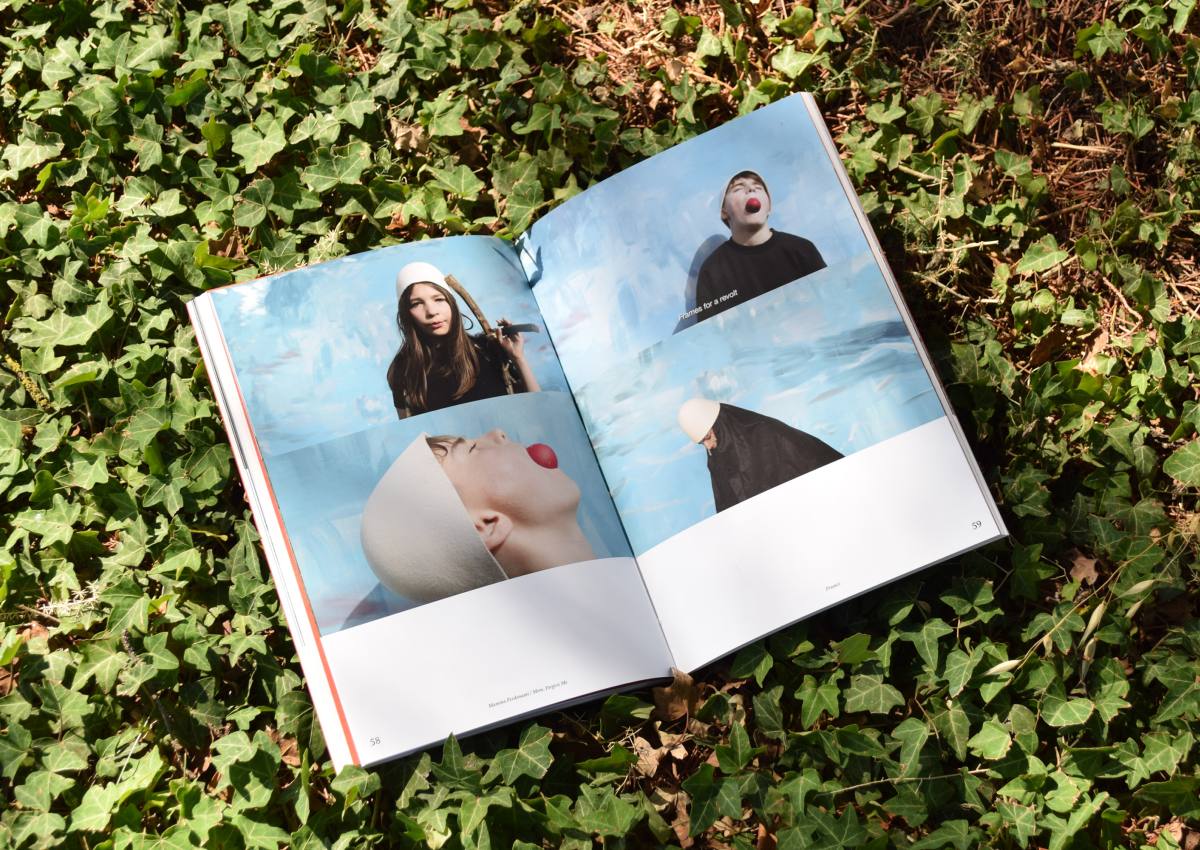
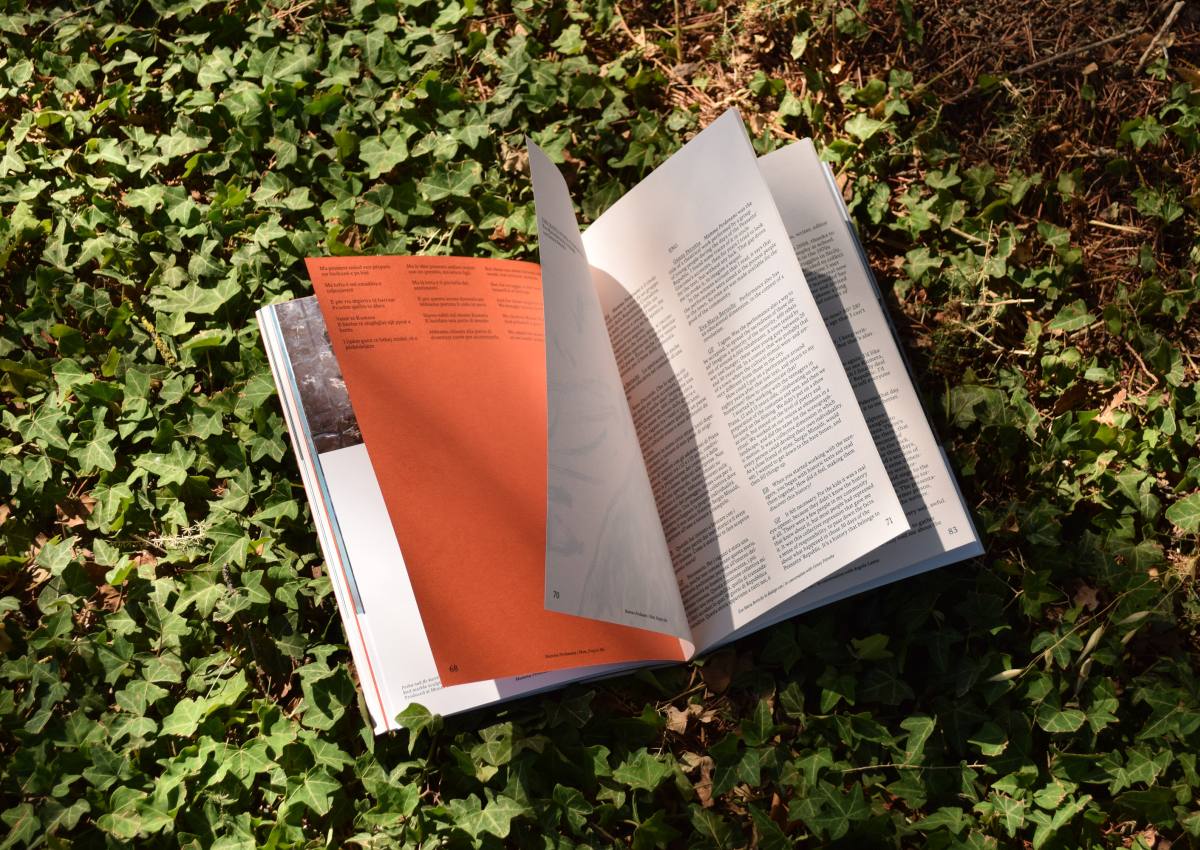
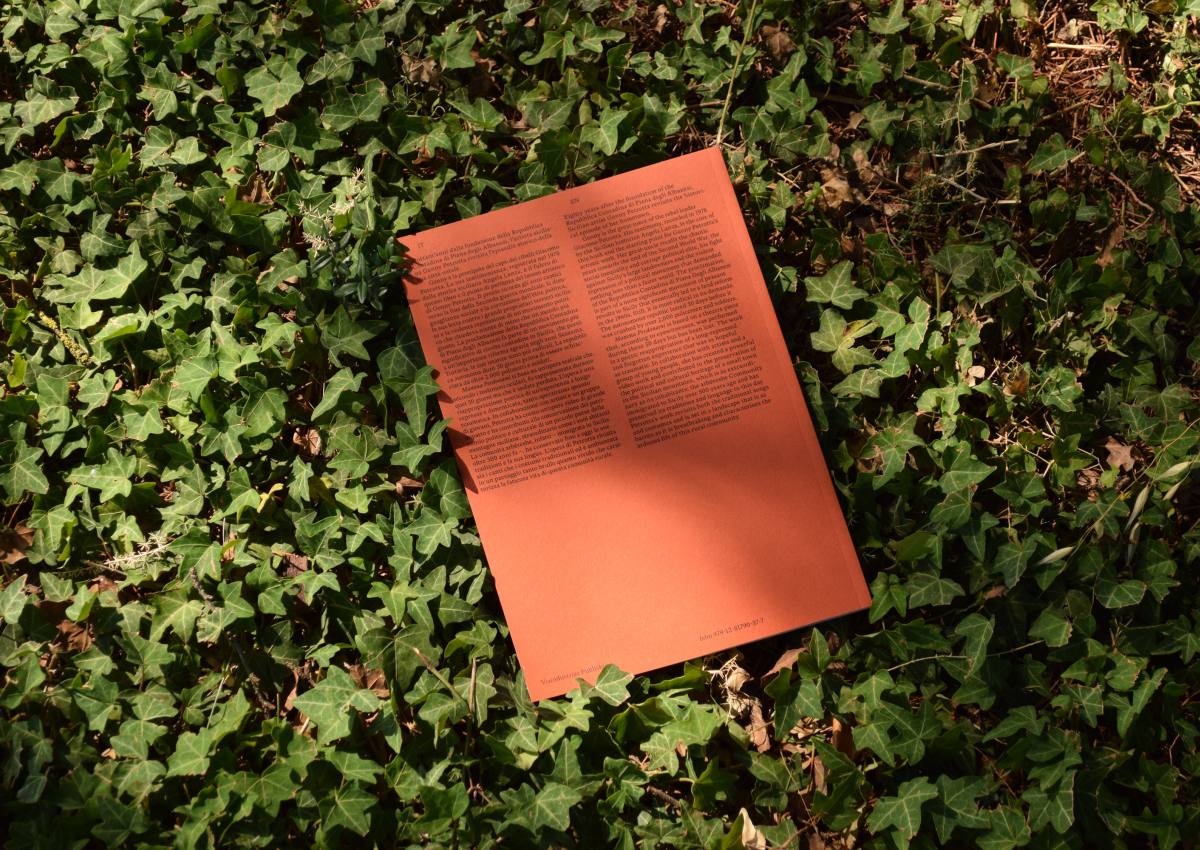
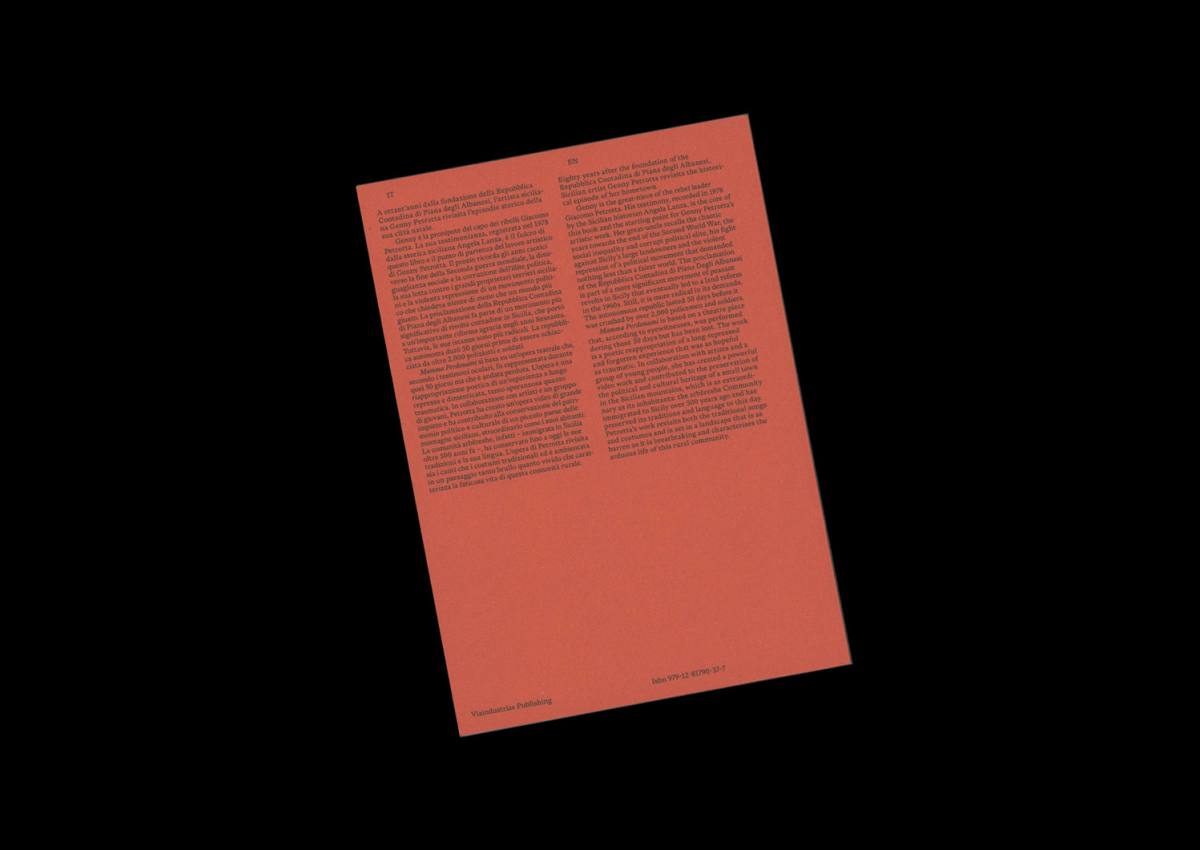
Genny Petrotta
Mëma më fal. Mom, Forgive Me
€ 18
Project coordinated by Isabella Anna Moren
Produced by Fondazione Studio Rizoma
Texts by Laura Barreca, Eva-Maria Betschy, Renzo Del Carria, Douglas Estevam, Angela Lanza, Giulia Luppino, Emanuele Macaluso, Giacomo Petrotta, Genny Petrotta, Claudio Reale, Giuseppe Schirò di Modica
108 pp.
19 X 27 cm
ita/eng
2025
ISBN 979-12-81790-37-7
Eighty years after the foundation of the Repubblica Contadina di Piana degli Albanesi, Sicilian artist Genny Petrotta revisits the historical episode of her hometown. Genny is the great-niece of the rebel leader Giacomo Petrotta. His testimony, recorded in 1978 by the Sicilian historian Angela Lanza, is the core of this book and the starting point for Genny Petrotta's artistic work. Her great-uncle recalls the chaotic years towards the end of the Second World War, the social inequality and corrupt political elite, his fight against Sicily's large landowners and the violent repression of a political movement that demanded nothing less than a fairer world.
The proclamation of the Repubblica Contadina di Piana Degli Albanesi is part of a more significant movement of peasant revolts in Sicily that eventually led to a land reform in the 1960s. Still, it is more radical in its demands. The autonomous republic lasted 50 days before it was crushed by over 2,000 policemen and soldiers.
Mamma Perdonami is based on a theatre piece that, according to eyewitnesses, was performed during these 50 days but has been lost. The work is a poetic reappropriation of a long-repressed and forgotten experience that was as hopeful as traumatic. In collaboration with artists and a group of young people, she has created a powerful video work and contributed to the preservation of the political and cultural heritage of a small town in the Sicilian mountains, which is as extraordinary as its inhabitants: the arbëreshe Community immigrated to Sicily over 500 years ago and has preserved its traditions and language to this day.
Petrotta's work revisits both the traditional songs and costumes and is set in a landscape that is as barren as it is breathtaking and characterises the arduous life of this rural community.
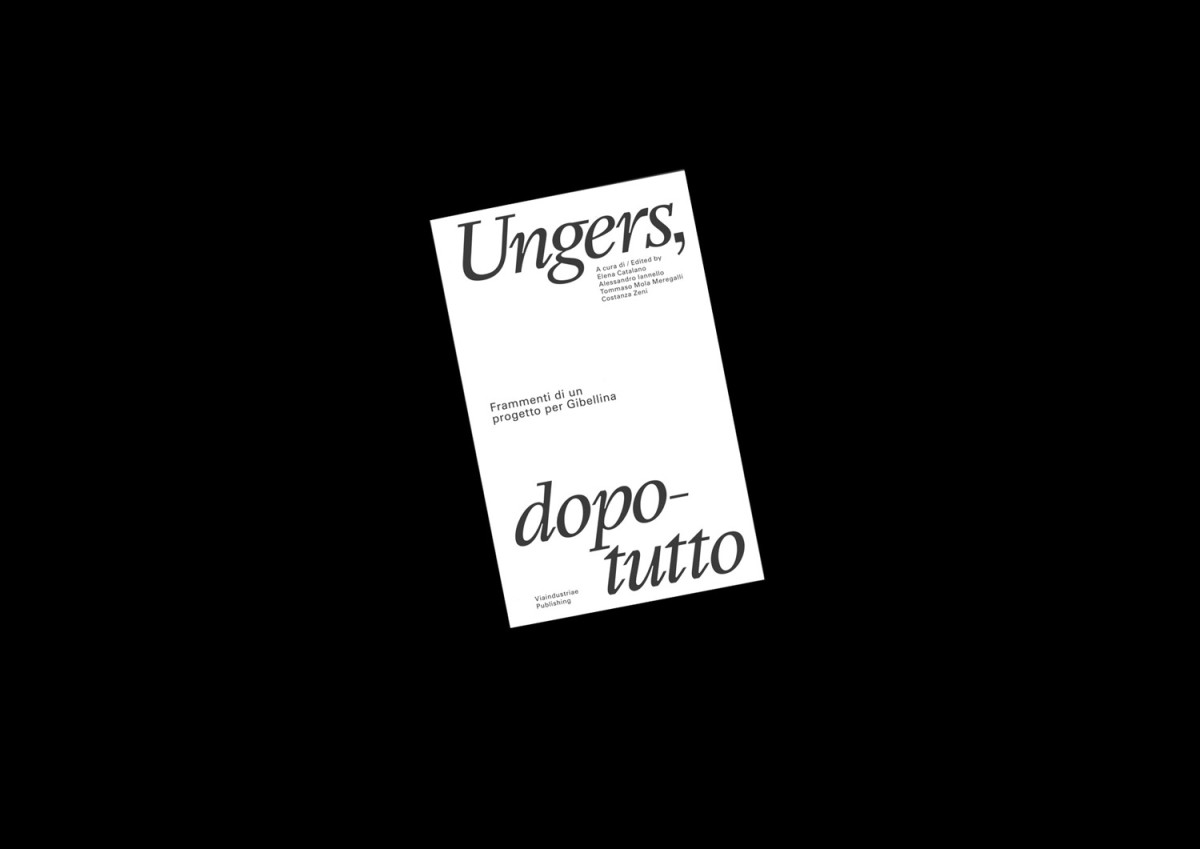
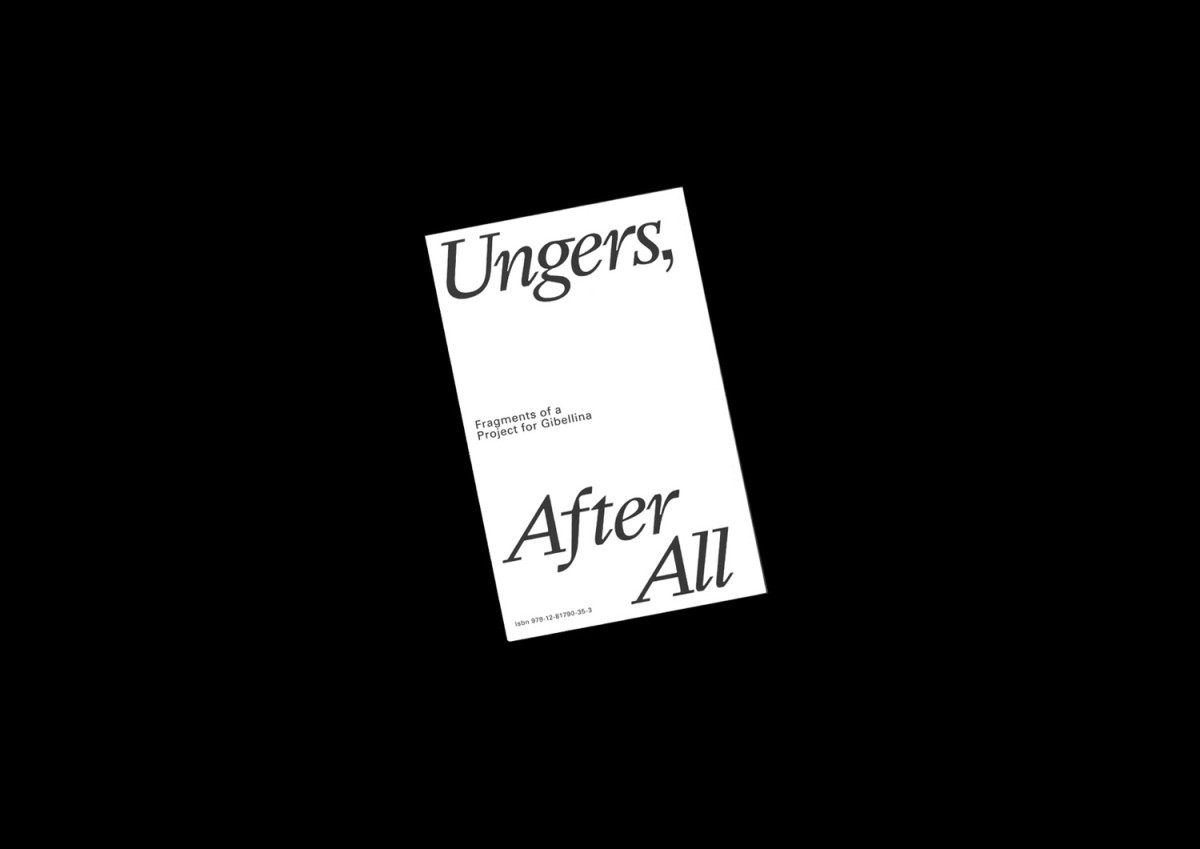
Aa. Vv.
Ungers, dopotutto. Ungers, dopotutto. Frammenti di un progetto per Gibellina
€ 12
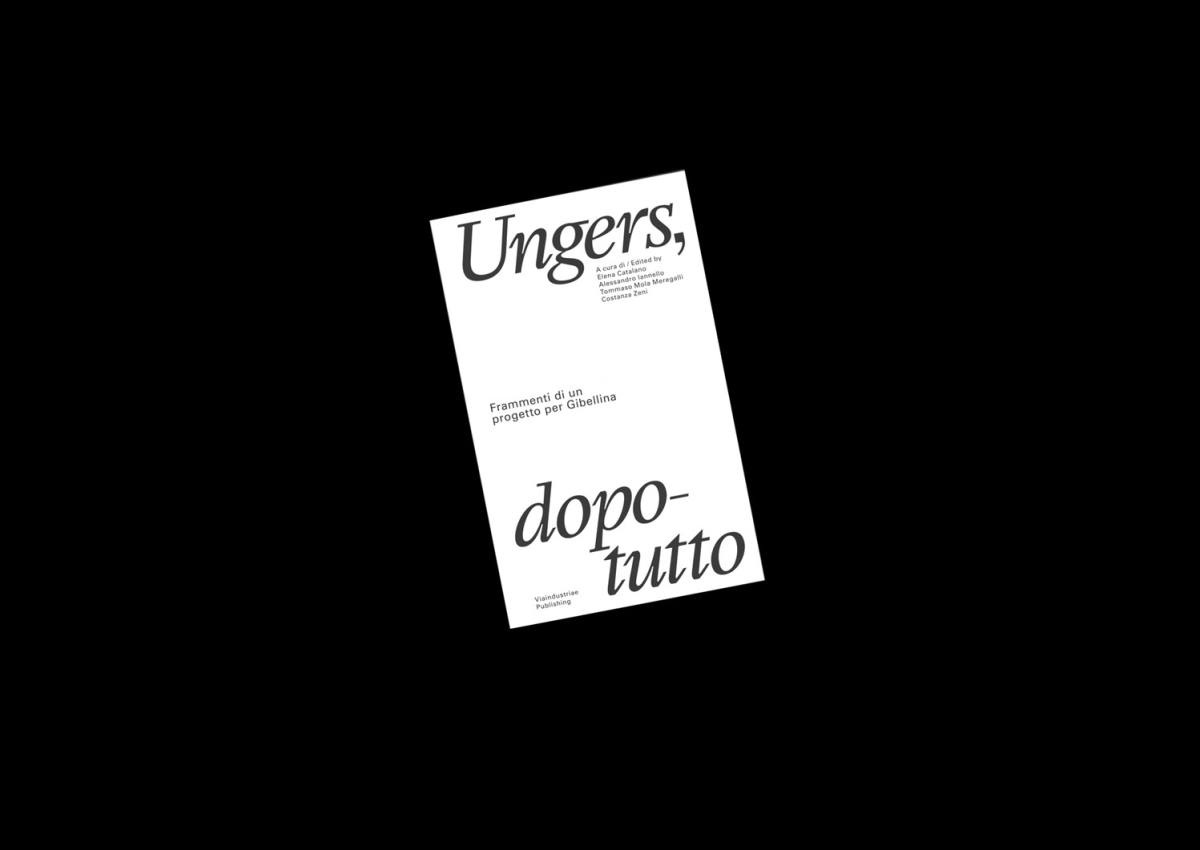
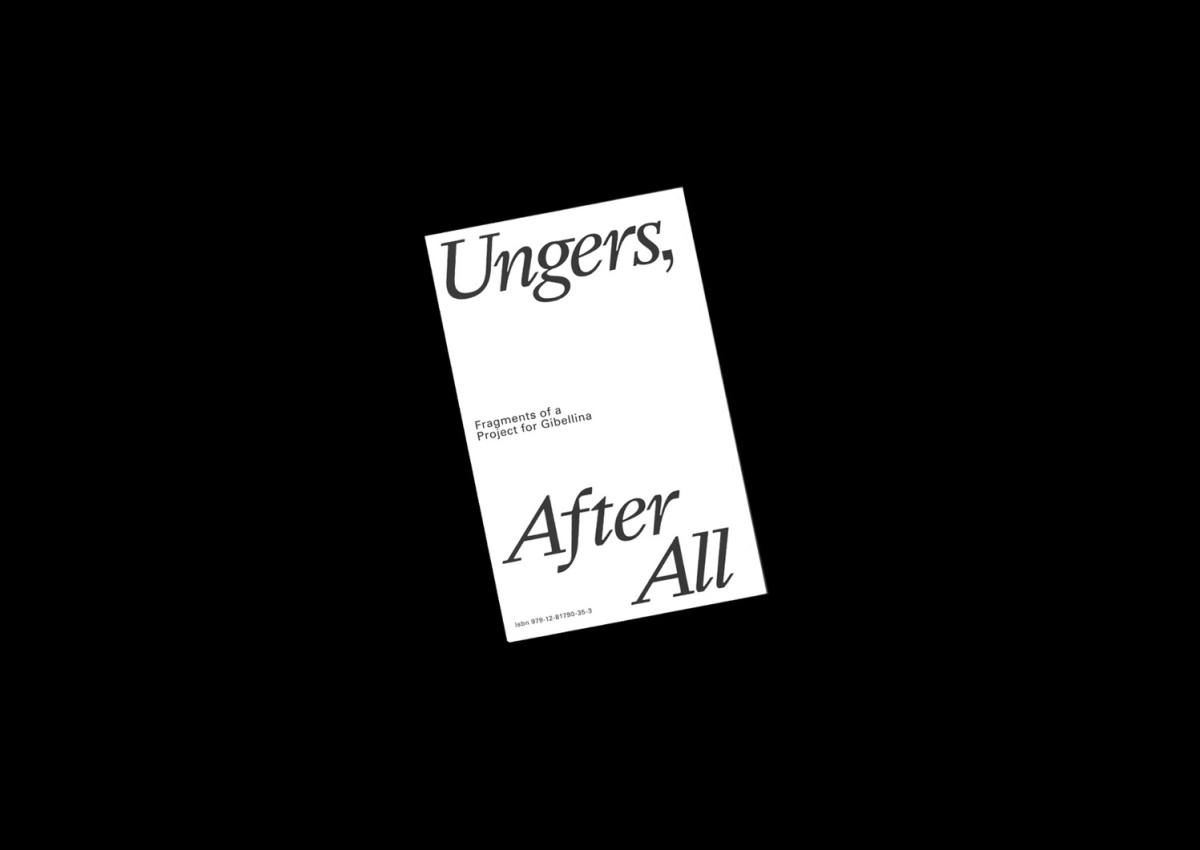

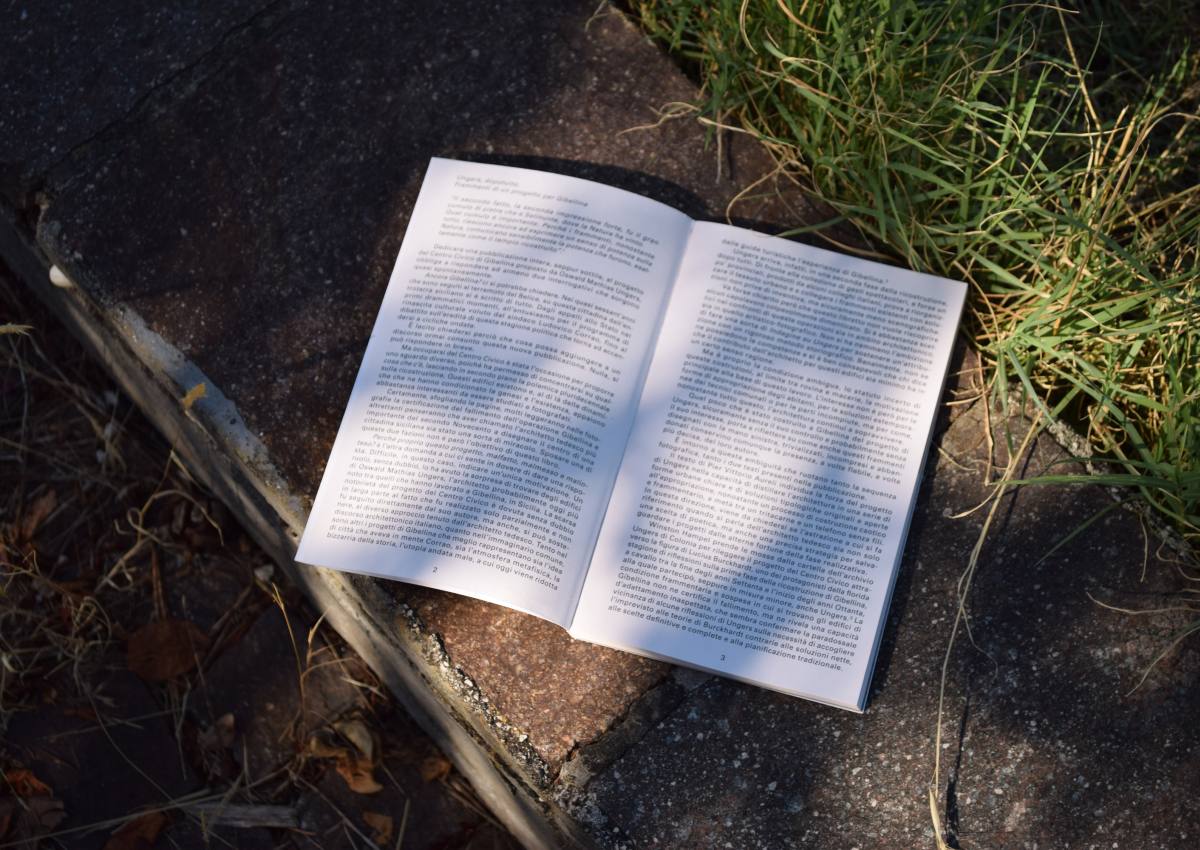

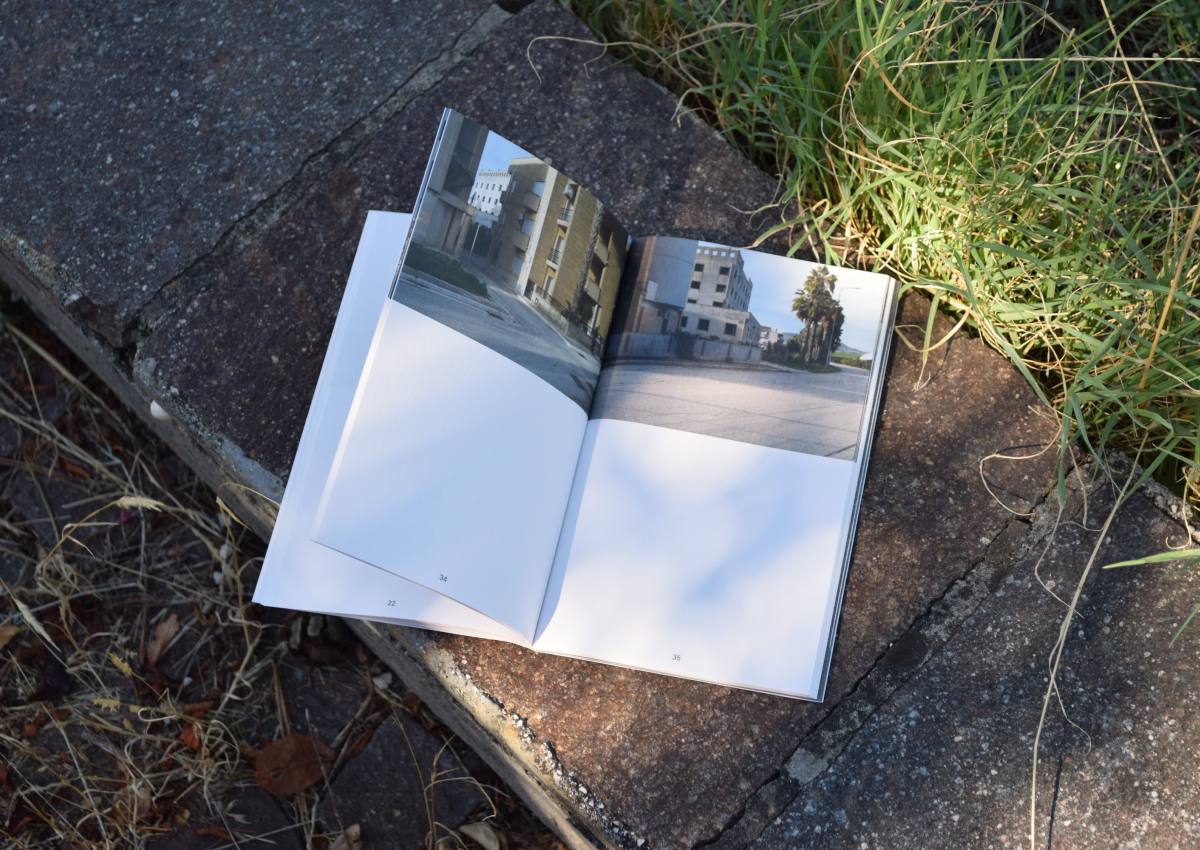



Aa. Vv.
Ungers, After All. Fragments of a Project for Gibellina
€ 12
Edited by Elena Catalano, Alessandro Iannello, Tommaso Mola Melegalli, Costanza Zeni
Produced by Fondazione Studio Rizoma
Texts by Pier Vittorio Aureli, Winston Hampel
80 pp.
12 X 19 cm
ita/eng
2025
ISBN 979-12-81790-35-3
Category: Catalogues Territorial research
A few years after the 1968 earthquake, the Istituto Superiore per l'Edilizia Sociale of Rome sent the plan for the total reconstruction of Gibellina Nuova, inspired by the models of the English New Towns. After an initial phase during which mayor Ludovico Corrao invited international architects and artists to participate in the city redesign, in the late 1970s a group of professors from the University of Palermo organised a series of seminars and workshops to reflect on the reconstruction. At that moment, Oswald Mathias Ungers was called to design the central area of the settle-ment, which was still undefined. His Civic Centre proposal reflected on the relationship between built and public space, between city, monument and history. However, little was real-ised, not really with rigour. The hotel, started on the edge of town, was soon abandoned. The artisanal district was freely adjusted to the needs of local activities. The housing along Viale Belice was built but its public walkway leads nowhere. What remains of the block of houses that was supposed to enclose a garden is a huge dry meadow and a small lake, ironically the element most faithful to the original project, in the centre of the town.
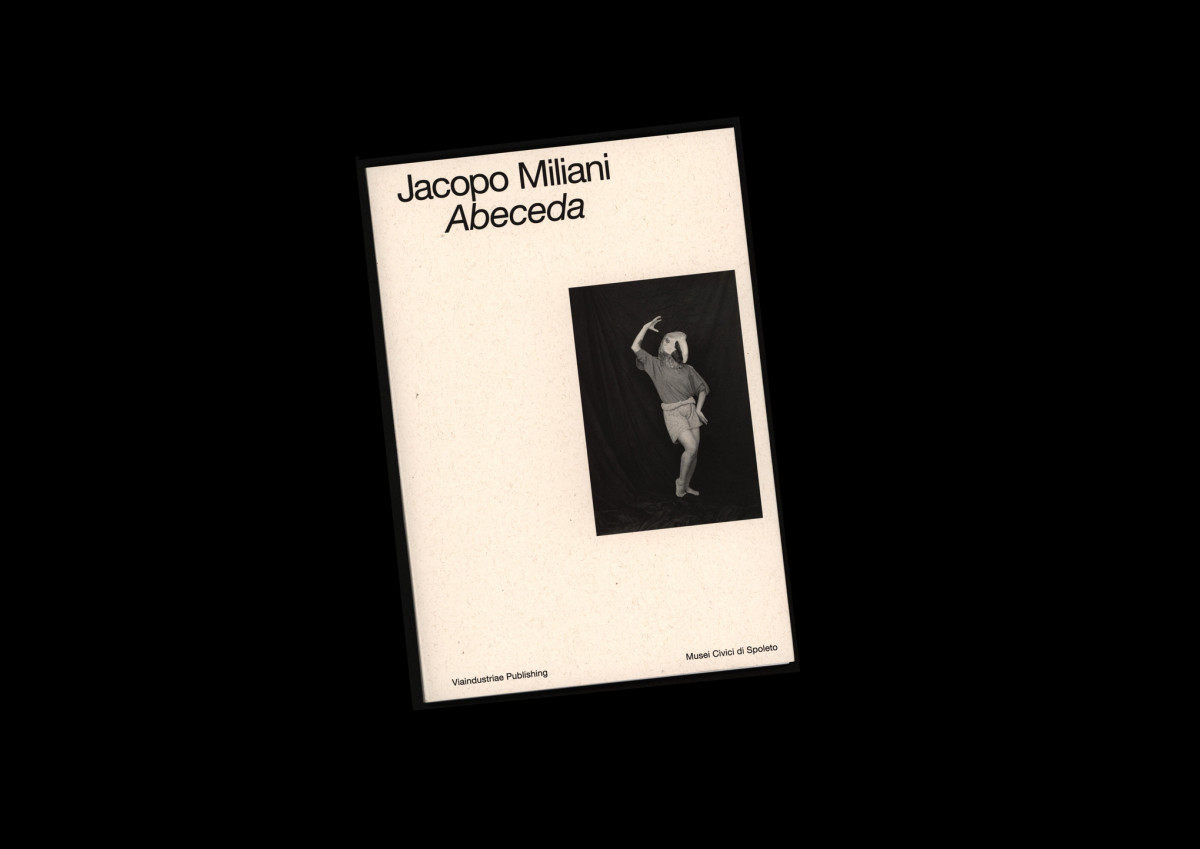
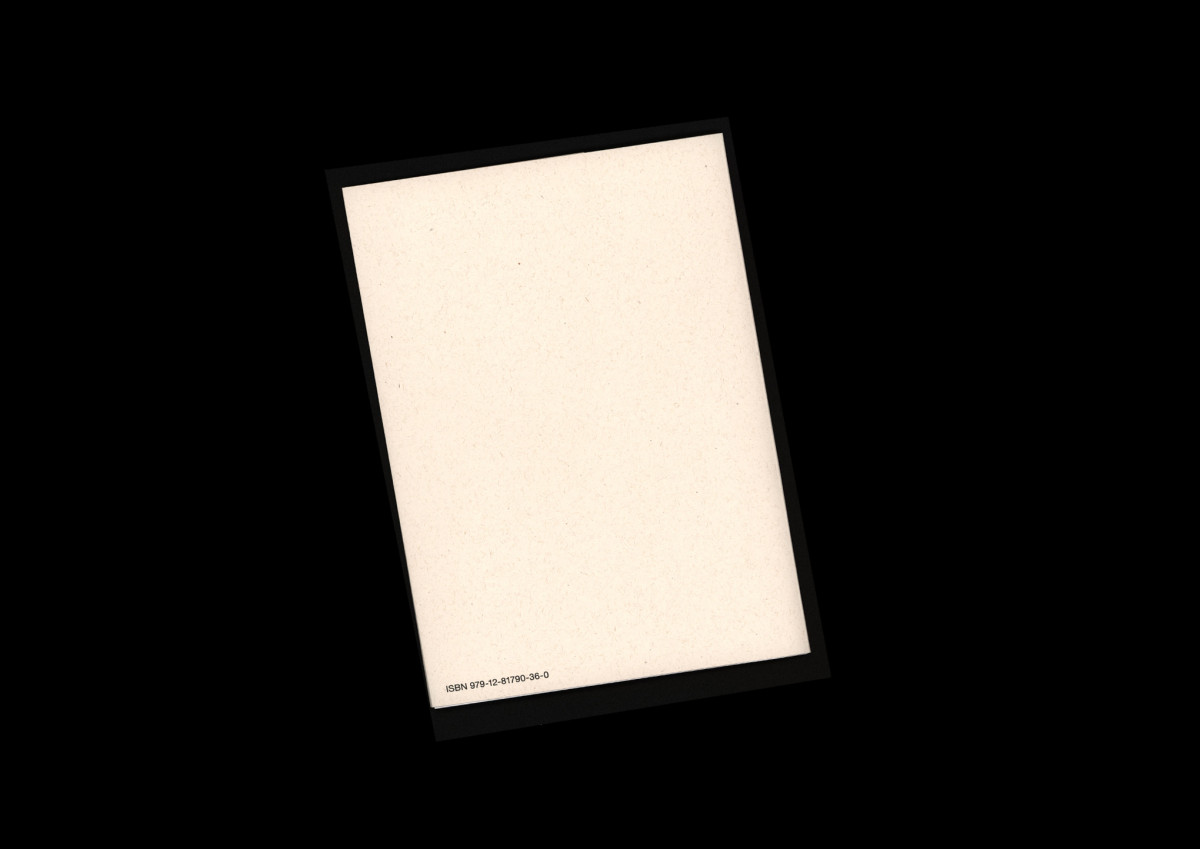
Jacopo Miliani
Abeceda
€ 20
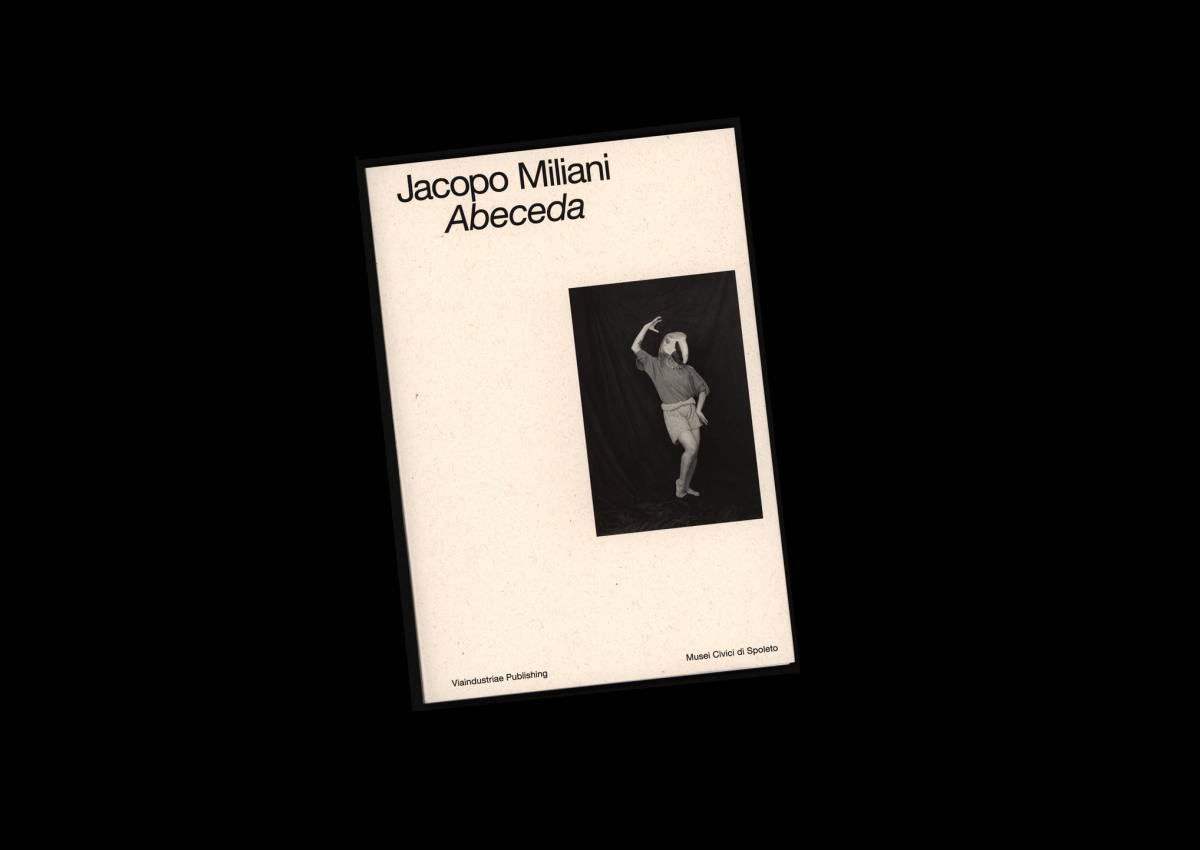
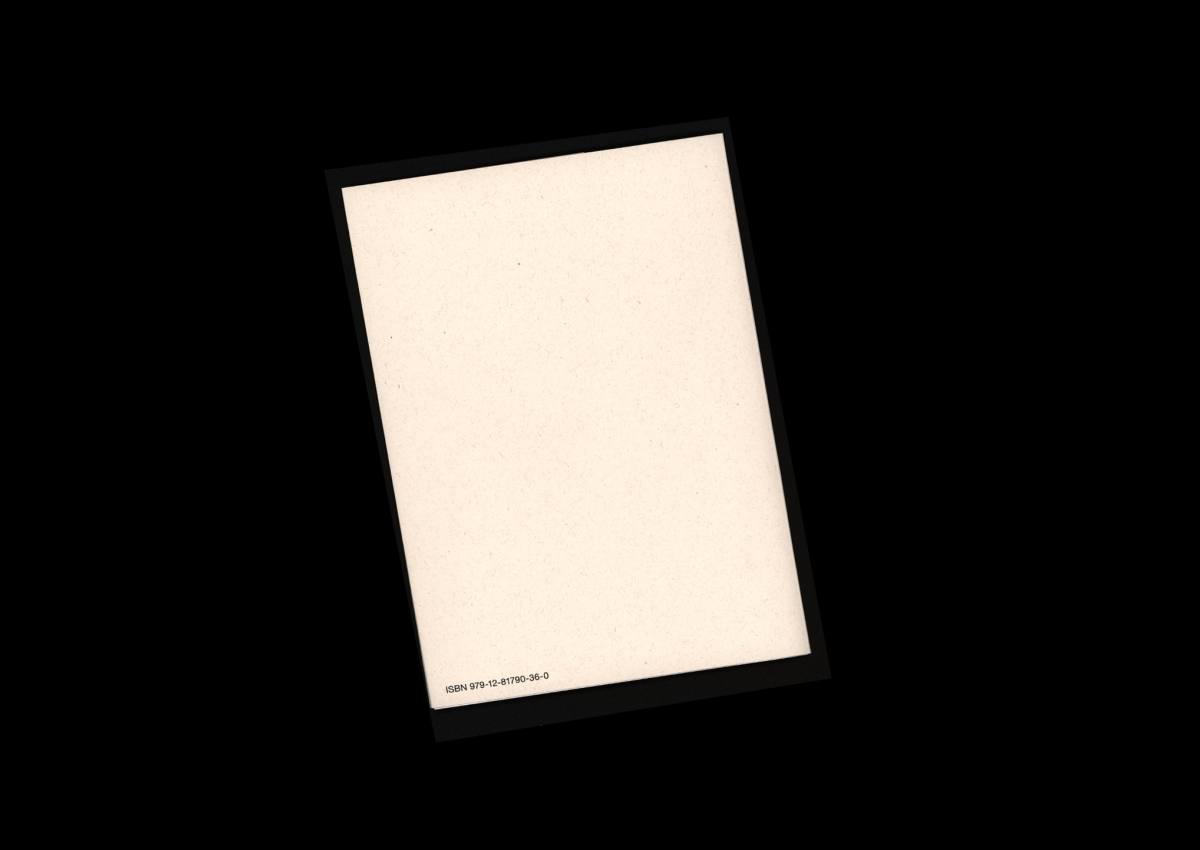
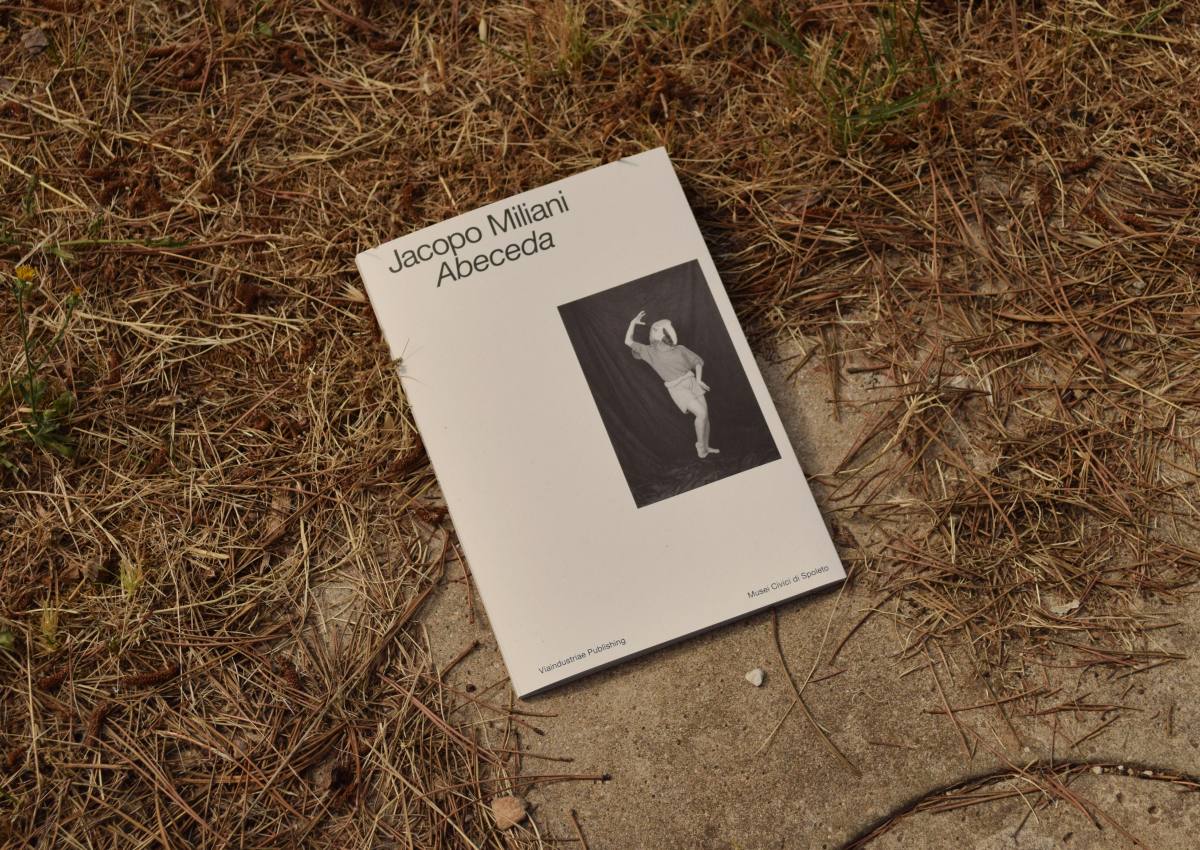
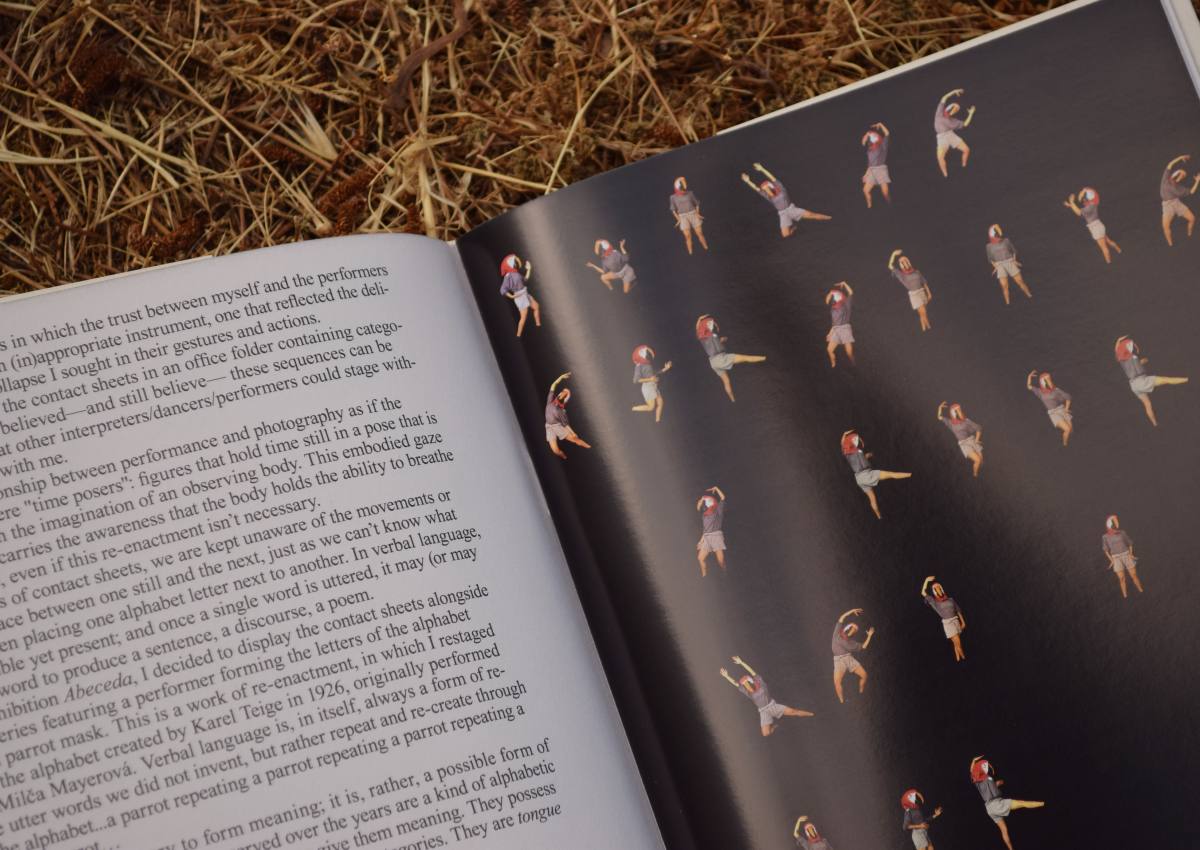
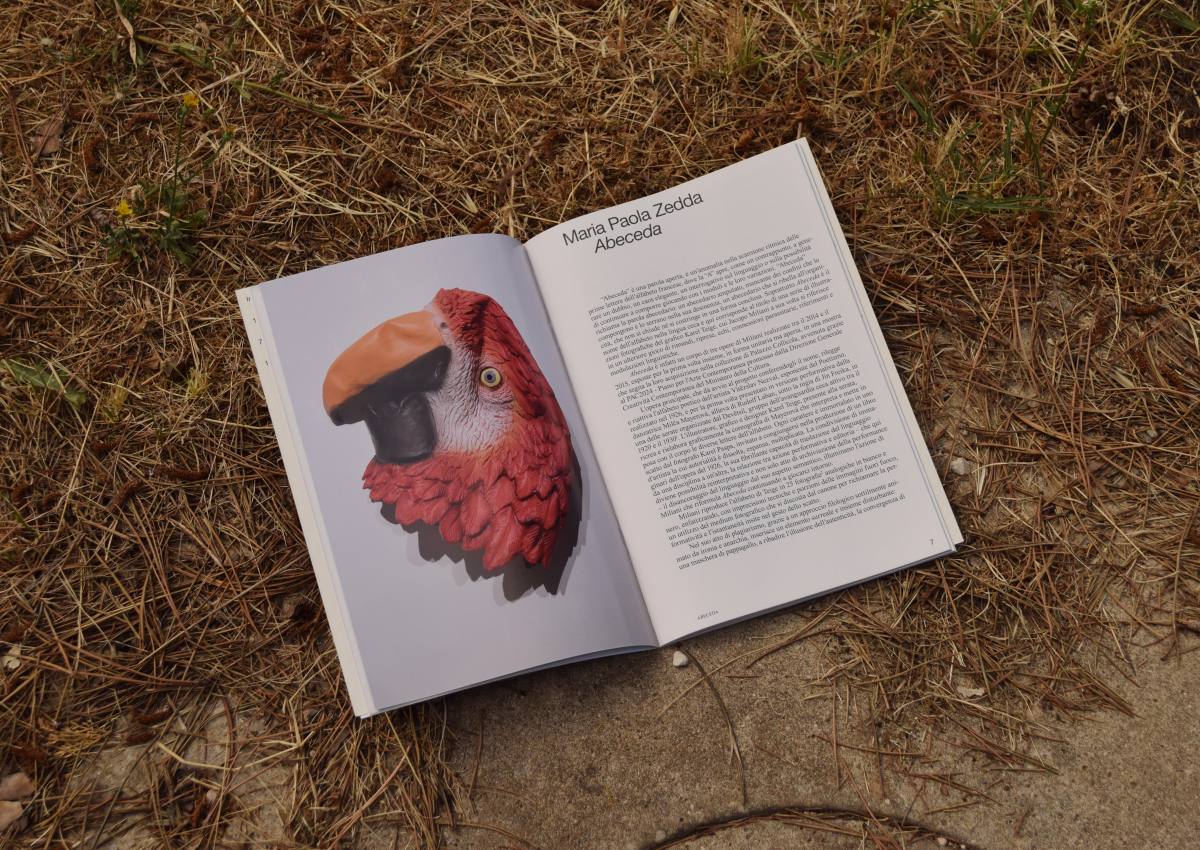
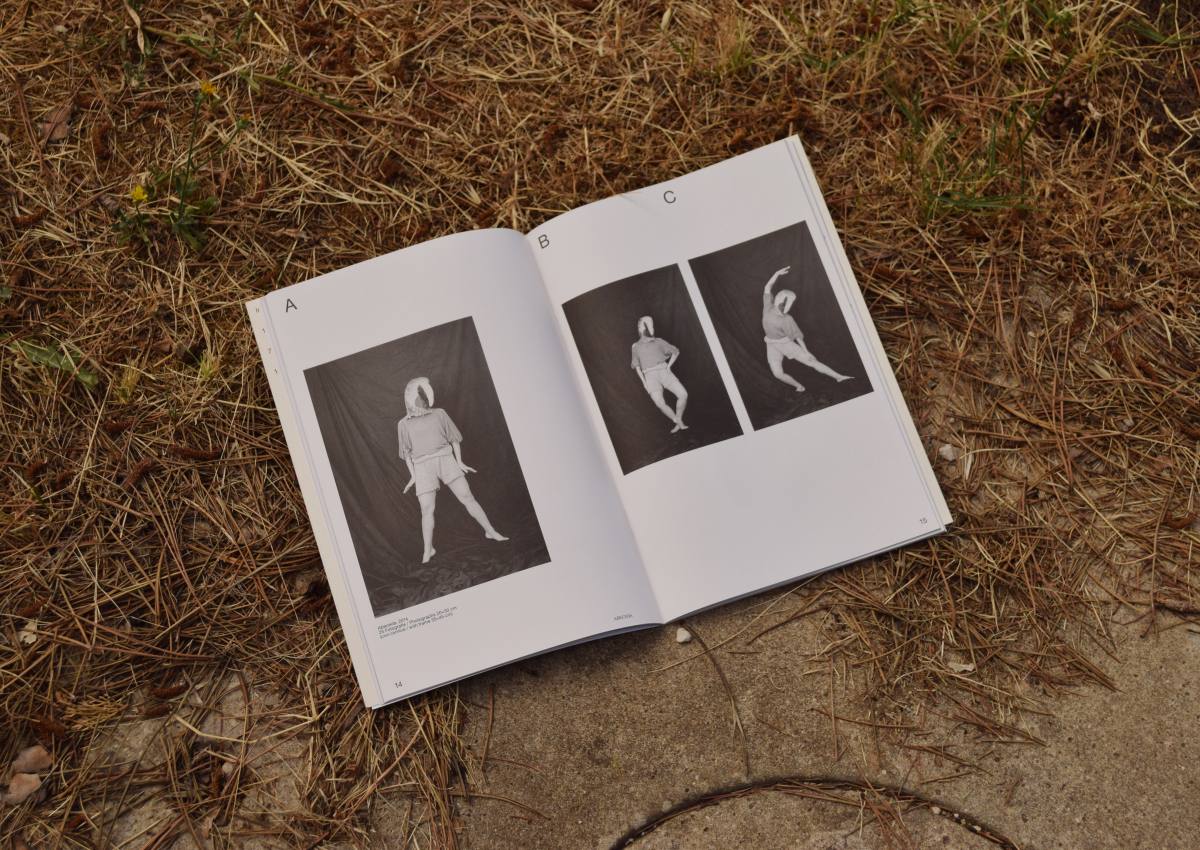
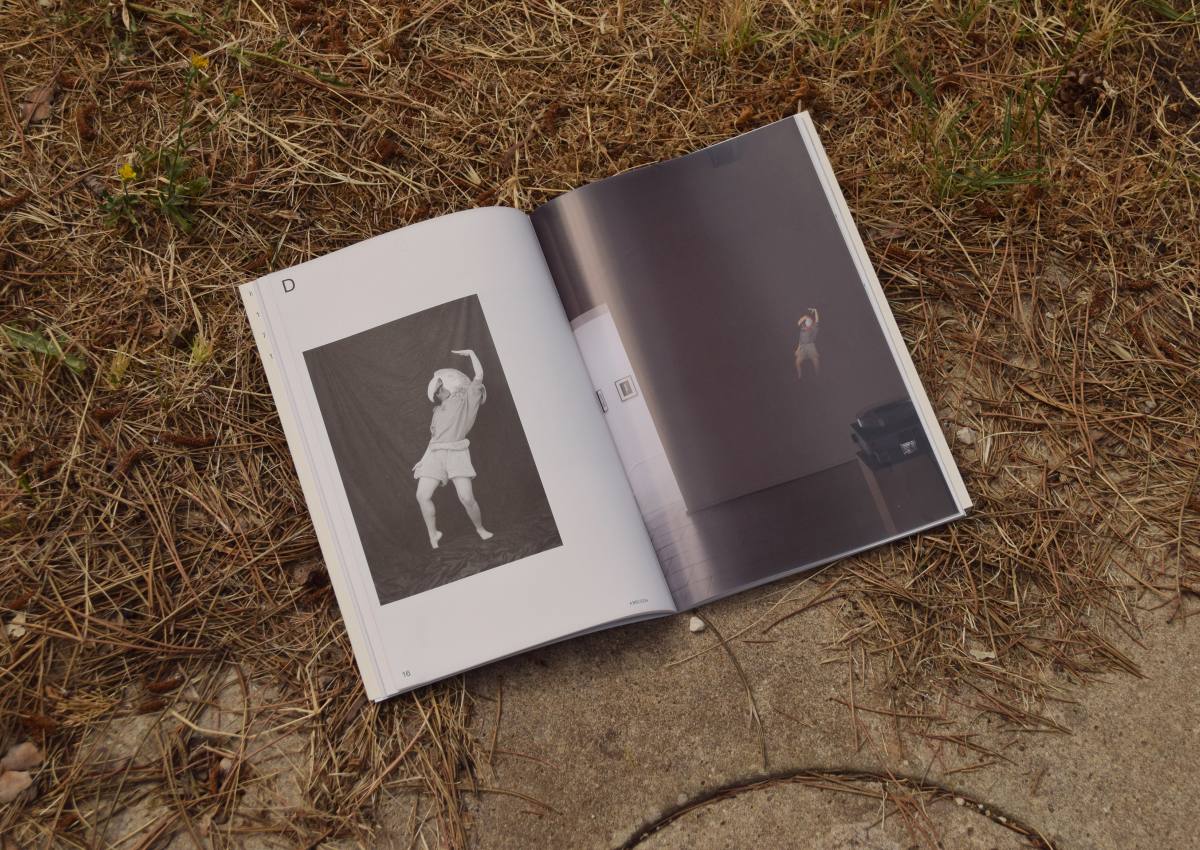
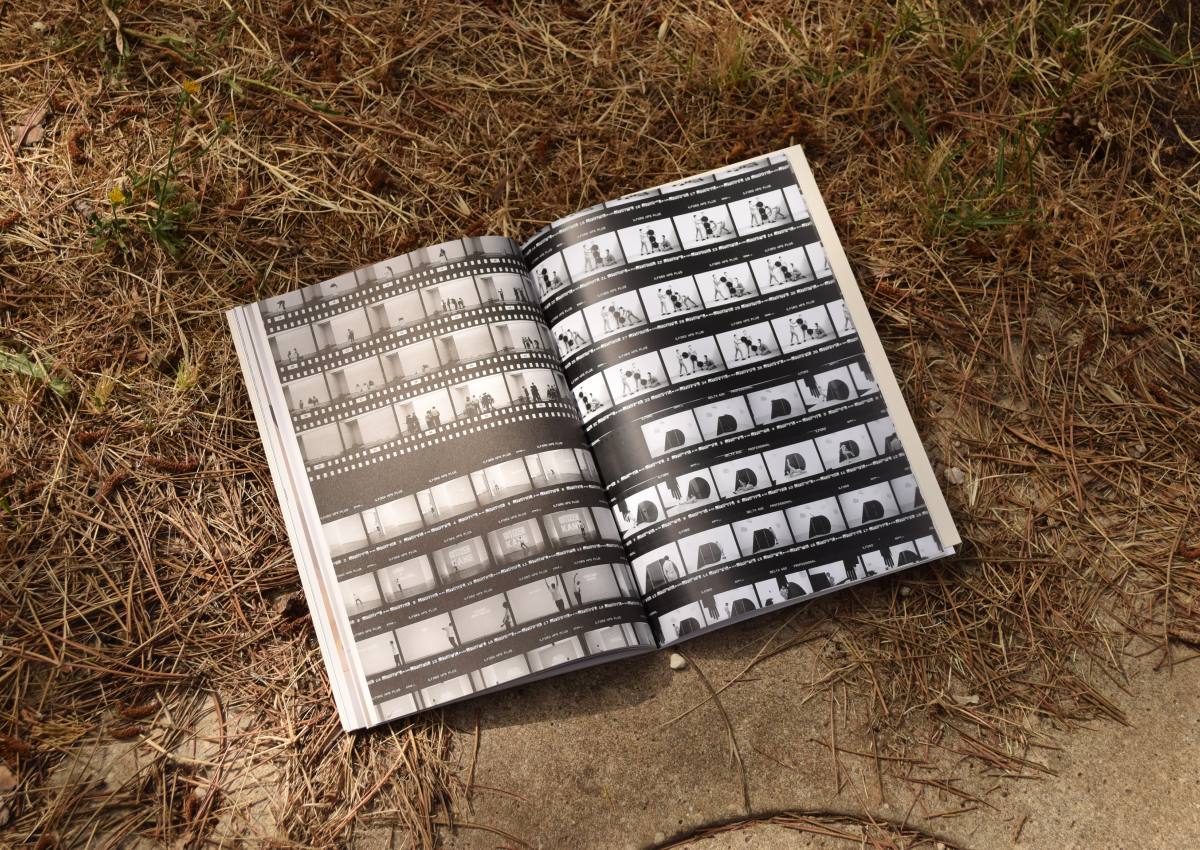
Jacopo Miliani
Abeceda
€ 20
Co-published with Palazzo Collicola, Spoleto
Edited by Maria Paola Zedda
Project supported by PAC2024 - Piano per l’Arte Contemporanea, promoted by Directorate-General for Contemporary Creativity of the Italian Ministry of Culture
52 pp.
19 x 28 cm
color and bw printing
ita/eng
2025
ISBN 979-12-81790-36-0
Abeceda is a re-enactment by Jacopo Miliani inspired by Vítězslav Nezval's poetic alphabet (1926) that was originally presented in a performance by the dancer Milča Mayerová, who was Rudolf Laban's student, during one of the evenings organised by Devětsil—a Checz Avantgarde group active from 1920 and 1930. Karel Teige graphically reinterpreted Mayerová's choreography, photographing her as she pose to interpret the different letters of the alphabet with her body. Drawing from Teige's book with the same title, Miliani re-staged this 'dancing alphabet' in 2014-2015, asking the performer to wear a parrot-shaped mask to underline the ambiguity of verbal language through its repetitions and variations.
Abeceda was produced on the occasion of the acquisition of a group of works by Jacopo Miliani for Palazzo Collicola in Spoleto, made possible by PAC 2024–Piano per l’Arte Contemporanea, promoted by the General–Directorate for Contemporary Creativity of the Italian Ministry of Culture.
Abeceda è stato realizzato in occasione dell’acquisizione di un gruppo di opere di Jacopo Miliani da parte di Palazzo Collicola a Spoleto, grazie al PAC 2024 - Piano per l’Arte Contemporanea, promosso dalla Direzione Generale Creatività Contemporanea del Ministero della Cultura.
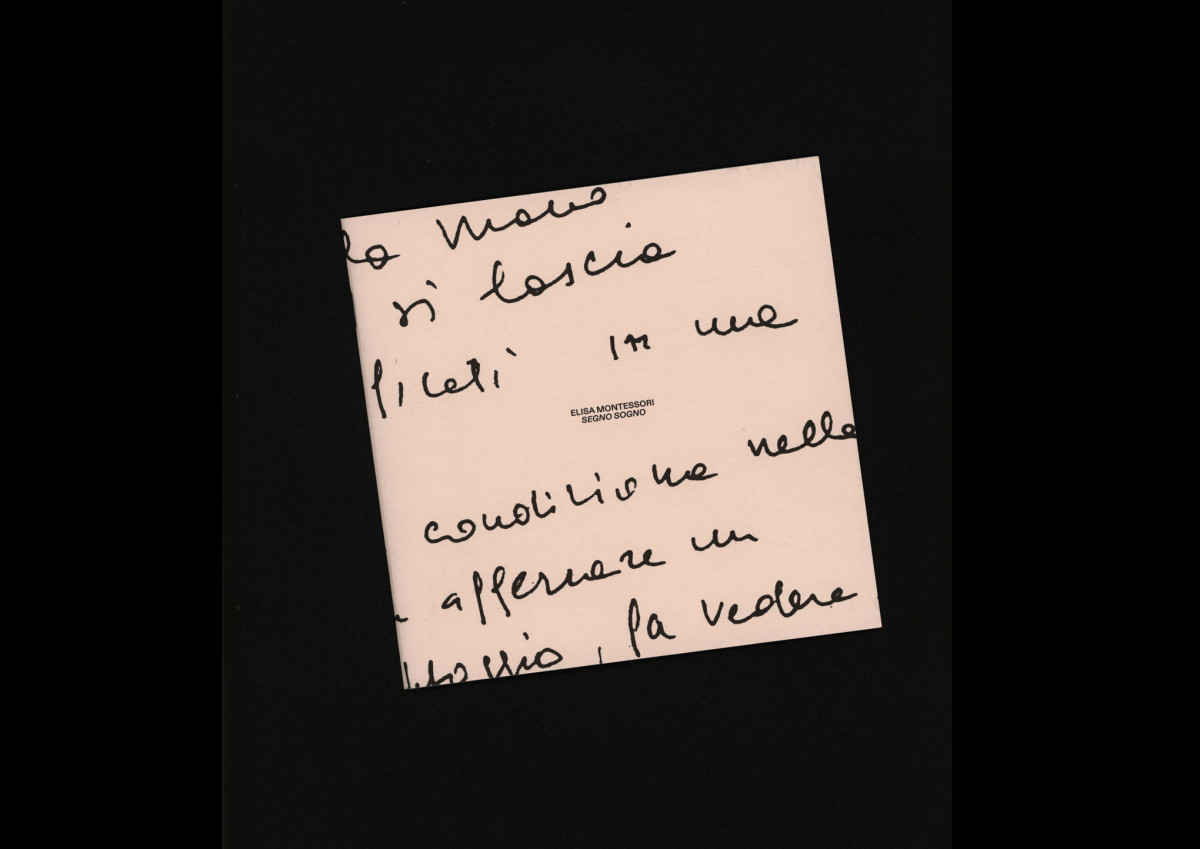

Elisa Montessori
Segno Sogno
€ 20

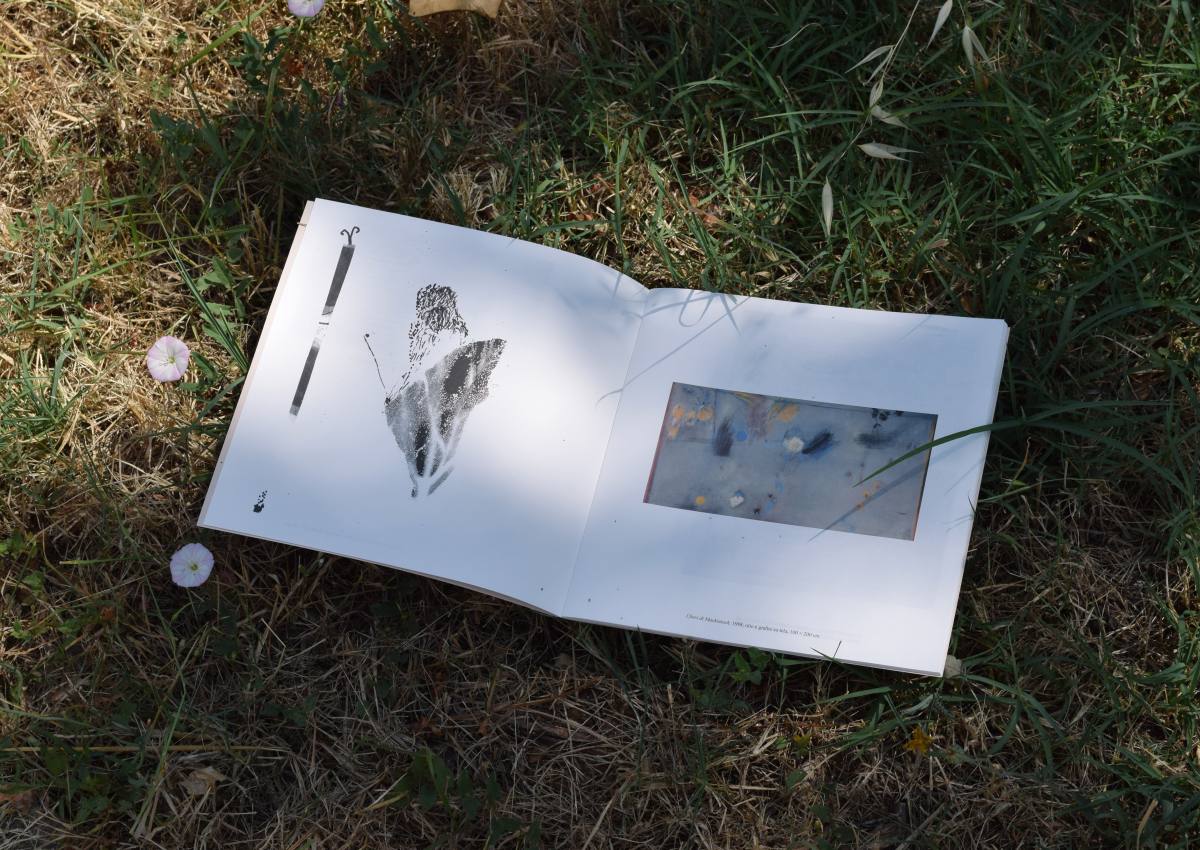
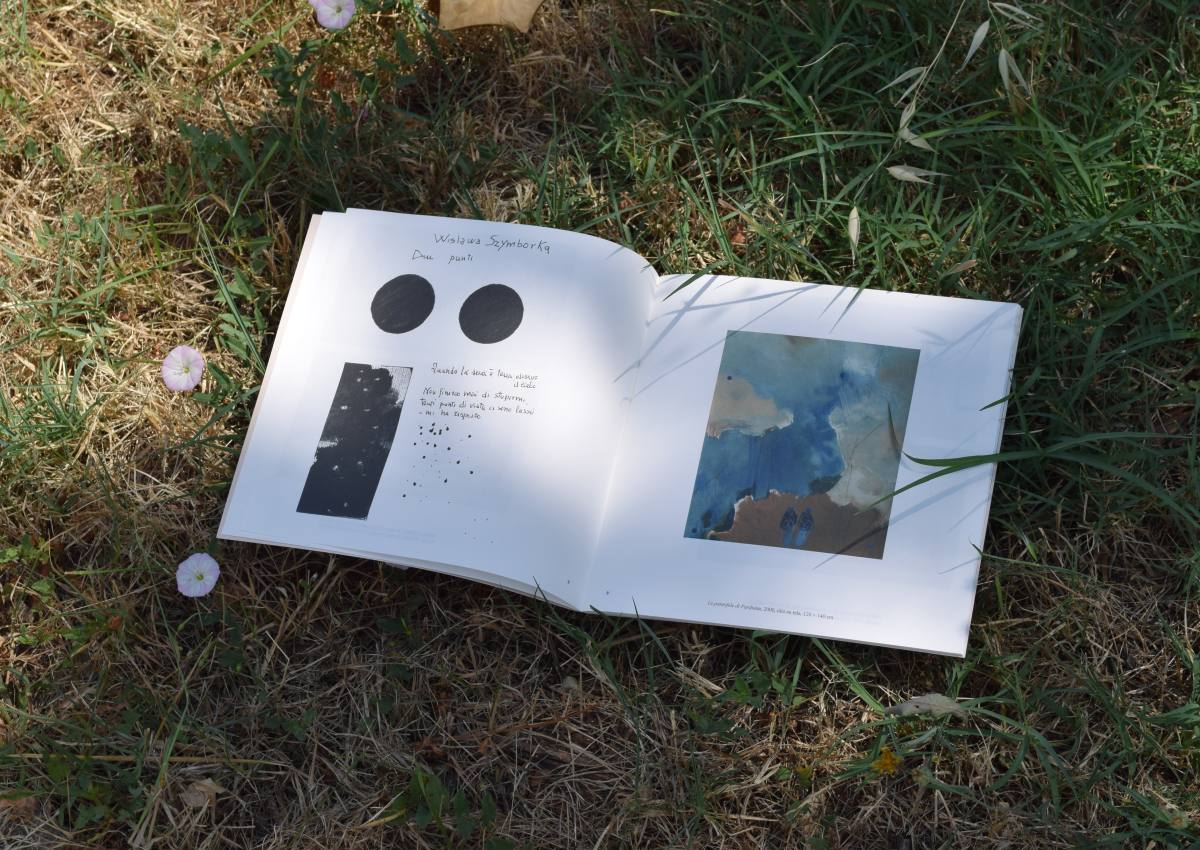

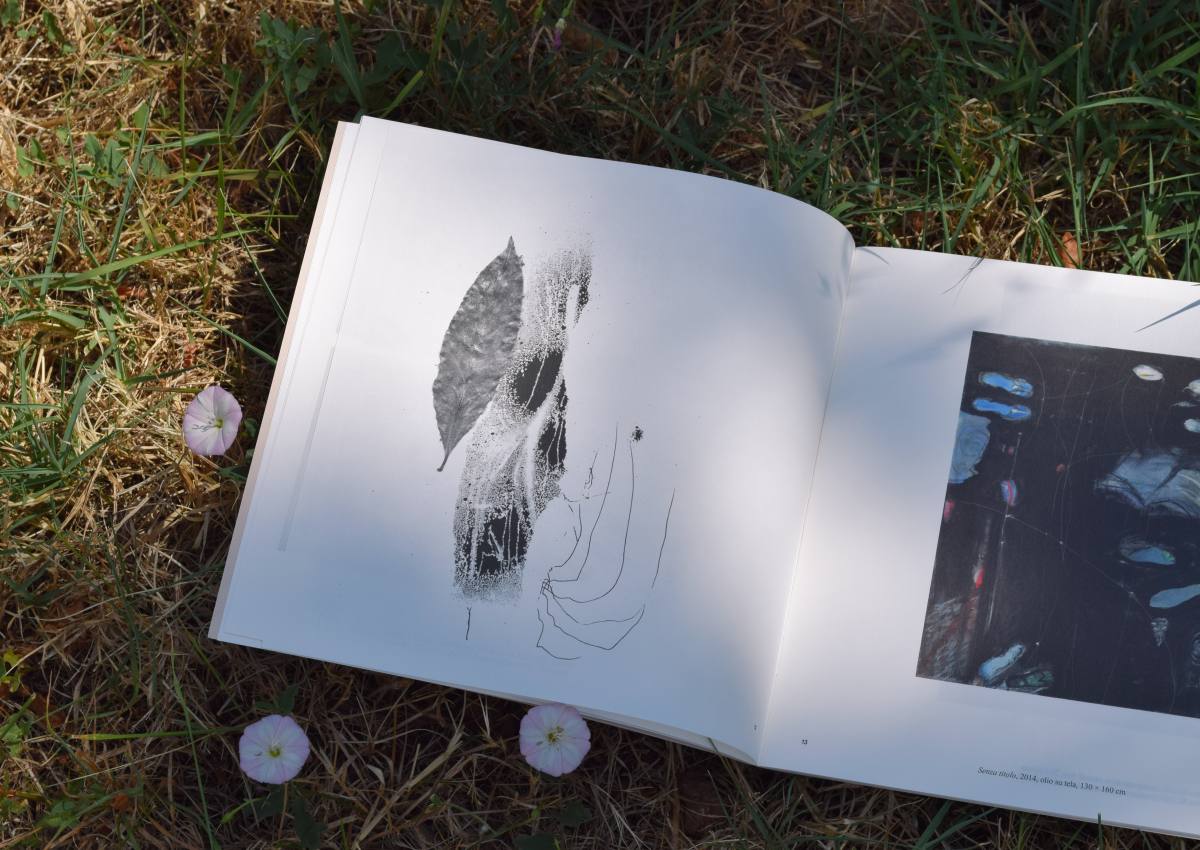

Elisa Montessori
Segno Sogno
€ 20
A cura di Stefano Verri
Pubblicazione realizzata in occasione della mostra Segno Sogno, Palazzo Bisaccioni, Jesi
Promossa da Fondazione CR Jesi
Con il patrocinio del Comune di Jesi
40 pp.
20 x 20 cm
ita
ISBN 979-12-81790-33-9
Category: Catalogues
Attraverso una gestualità spontanea e intensa, Montessori esplora visioni interiori, sospese tra realtà e immaginazione, in un dialogo costante con il mondo del sogno. Come nei sogni, l’artista torna ciclicamente su temi ricorrenti: natura, letteratura, arte, riletti attraverso un linguaggio personale e poetico. Simbolo chiave dell’esposizione è il vortice, figura archetipica che incarna trasformazione, rinascita e discesa nelle profondità dell’essere. Una spirale vitale, che per Montessori rappresenta la struttura intima dell’identità umana, una metafora del DNA. Le carte, medium prediletto da Montessori, rivelano la delicatezza e al tempo stesso la densità del suo pensiero. Un materiale “umile” che diventa strumento di introspezione. Le tele, più strutturate e stratificate, esprimono un’urgenza materica, un bisogno di approfondimento e sedimentazione. Segno sogno è dunque un viaggio nella poetica di Elisa Montessori, un invito a immergersi in un universo dove ogni opera è una domanda aperta, un richiamo alla riflessione, una possibilità di riconoscimento.
Catalogo della mostra Segno Sogno, a cura di Stefano Verri, 14 giugno – 28 settembre 2025, Palazzo Bisaccioni, Jesi.
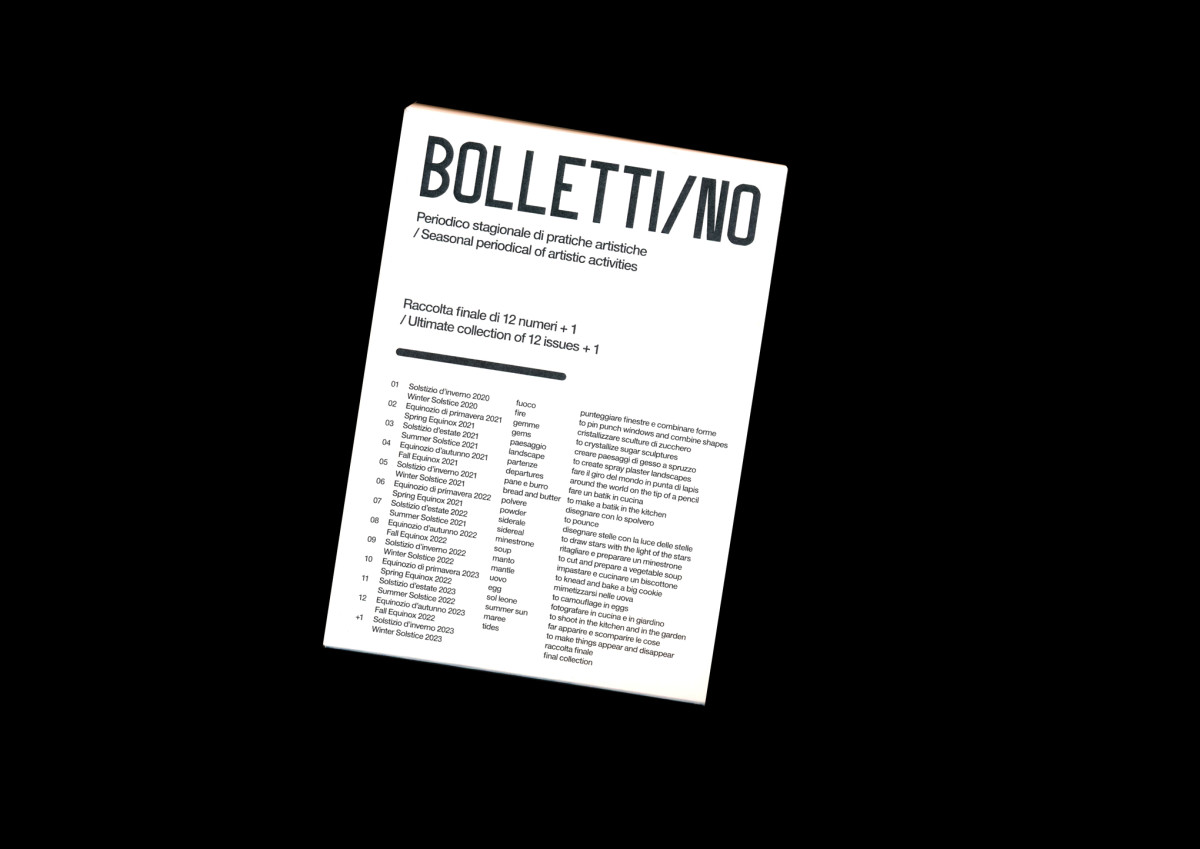

Virginia Di Lazzaro, Giulia Filippi
Bolletti/no. Raccolta finale
€ 30
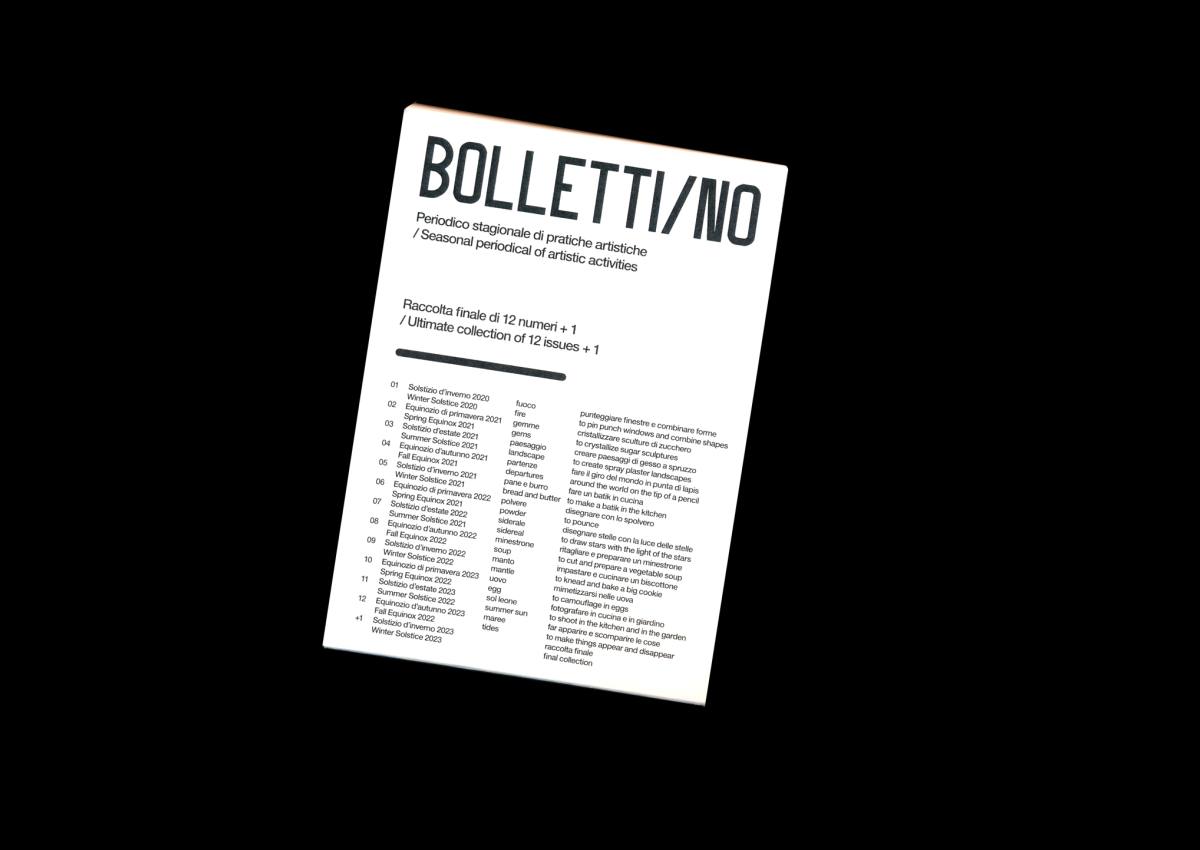

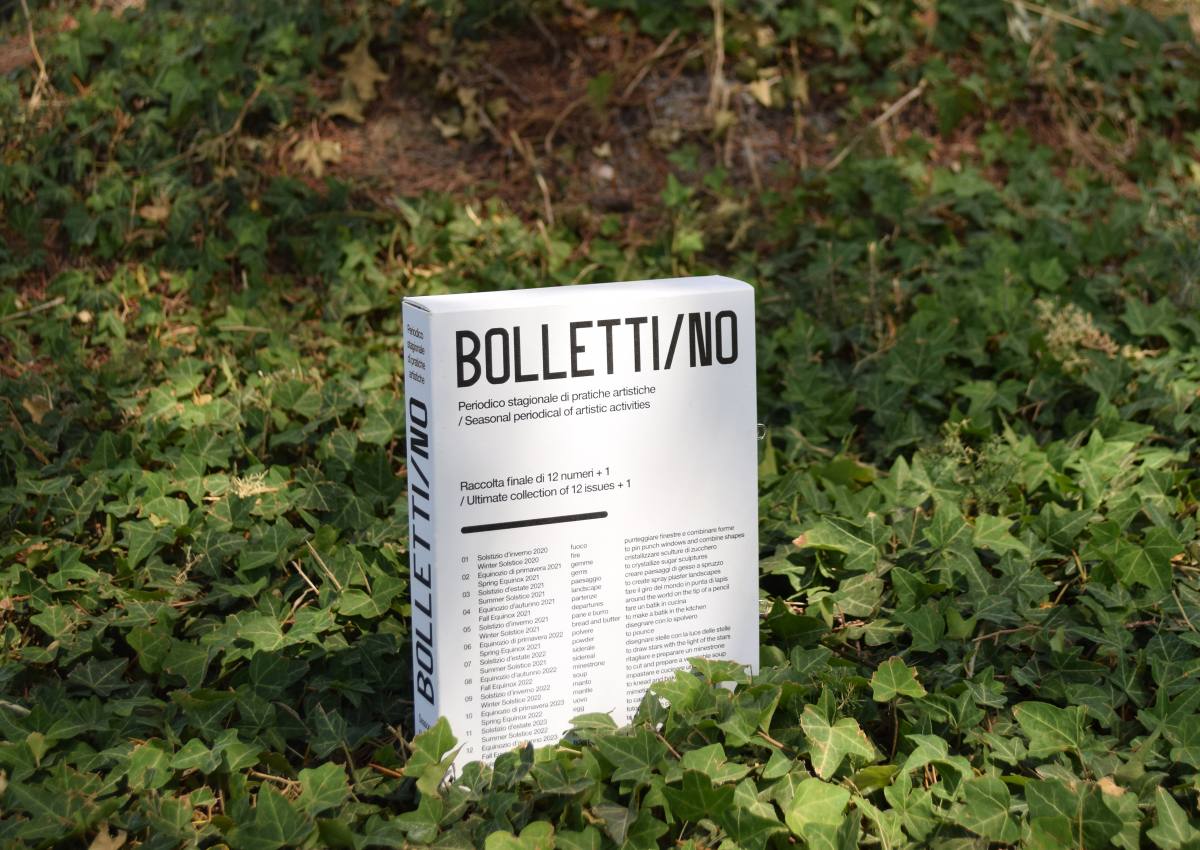

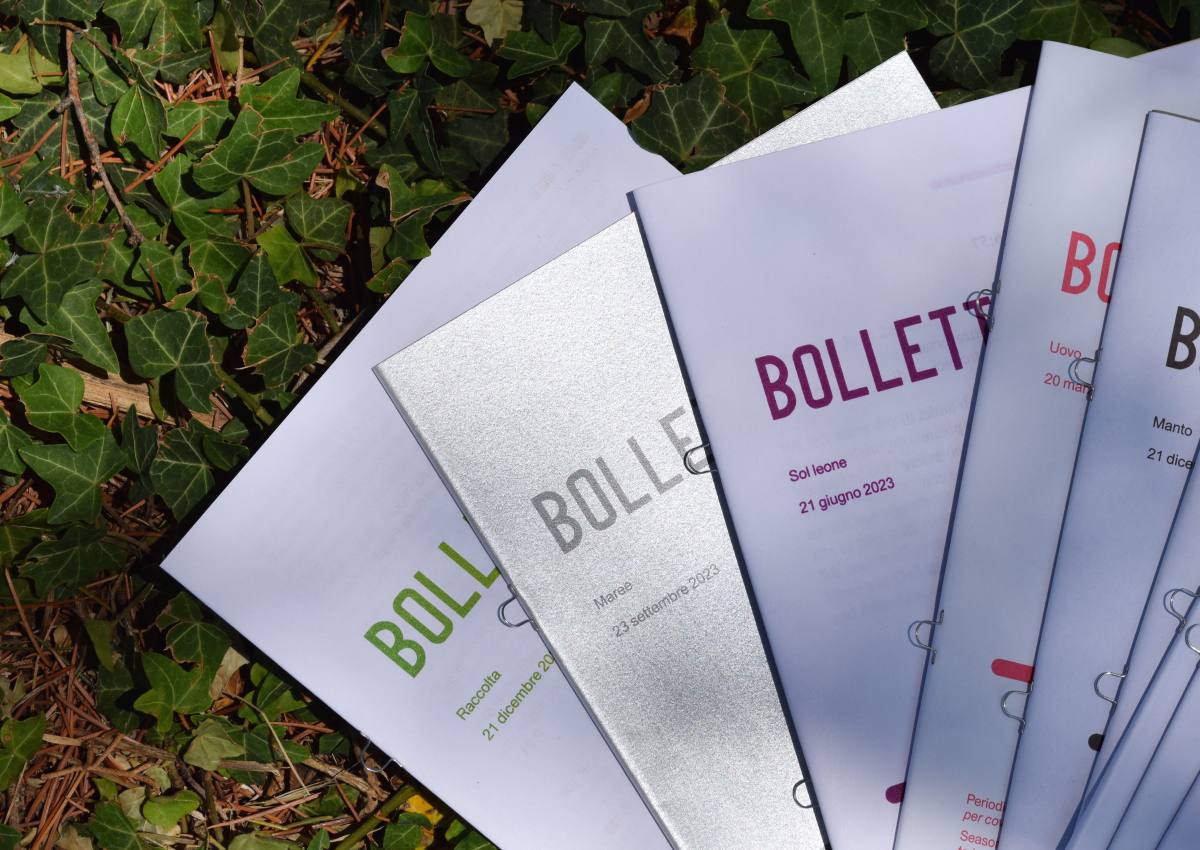


Virginia Di Lazzaro, Giulia Filippi
Bolletti/no. Ultimate collection
€ 30
Ultimate collection of 12 issues + 1
01. Winter Solstice 2020, fire, to pin punch windows and combine shapes
02. Sprint Equinox 2021, gems, to crystallize sugar sculptures
03. Summer Solstice 2021, landscape, to create spray plaster landscapes
04. Fall Equinox 2021, departures, around the world on the tip of a pencil
05. Winter Solstice 2021, bread and butter, to make a batik in the kitchen
06. Sprint Equinox 2022, powder, to pounce
07. Summer Solstice 2022, sidereal, to draw stars with the light of the stars
08. Fall Equinox 2022, soup, to cut and prepare a vegetable soup
09. Winter Solstice 2022, mantle, to knead and bake a big cookie
10. Sprint Equinox 2023, egg, to camouflage in eggs
11. Summer Solstice 2023, summer sun, to shoot in the kitchen and in the garden
12. Fall Equinox 2023, tides, to make things appear and disappear
13. Winter Solstice 2023, final collection
15x21 cm
ita/eng
ISBN 979-12-81790-31-5
Category: Territorial research Catalogues Theory
Bolletti/no is a journal of experimental didactics published for each solstice and equinox over a period of 3 years, between 2020 and 2023, for a total of 12 issues + a final extra issue. It was created to give a concrete printed form to a series of practices developed by Virginia Di Lazzaro and Giulia Filippi during their shared workshop activities with children and adults. Over these three years, the artists and authors have reflected on the world around them, accompanied by characters, stories, artistic practices and techniques, materials, matter, the seasons, and all the people and living beings they've encountered. Bolletti/no was created with the intention of being a tool that sparks action and inspiration. Each issue invites the reader to experience the world around them through exercises of observation, experimentation, collection, and storytelling, allowing them to build a small collection of "domestic art". Bolletti/no has experimented not only with content but also with distribution methods over the years: initially distributed individually, then as a subscription sent directly to the homes of those who chose to support the project, it now becomes a box set containing all 12 issues, plus the special issue and the related posters.


Pietro Perotti
THE Fiat Mirafiori Toilets. Actions and Photographies
€ 15


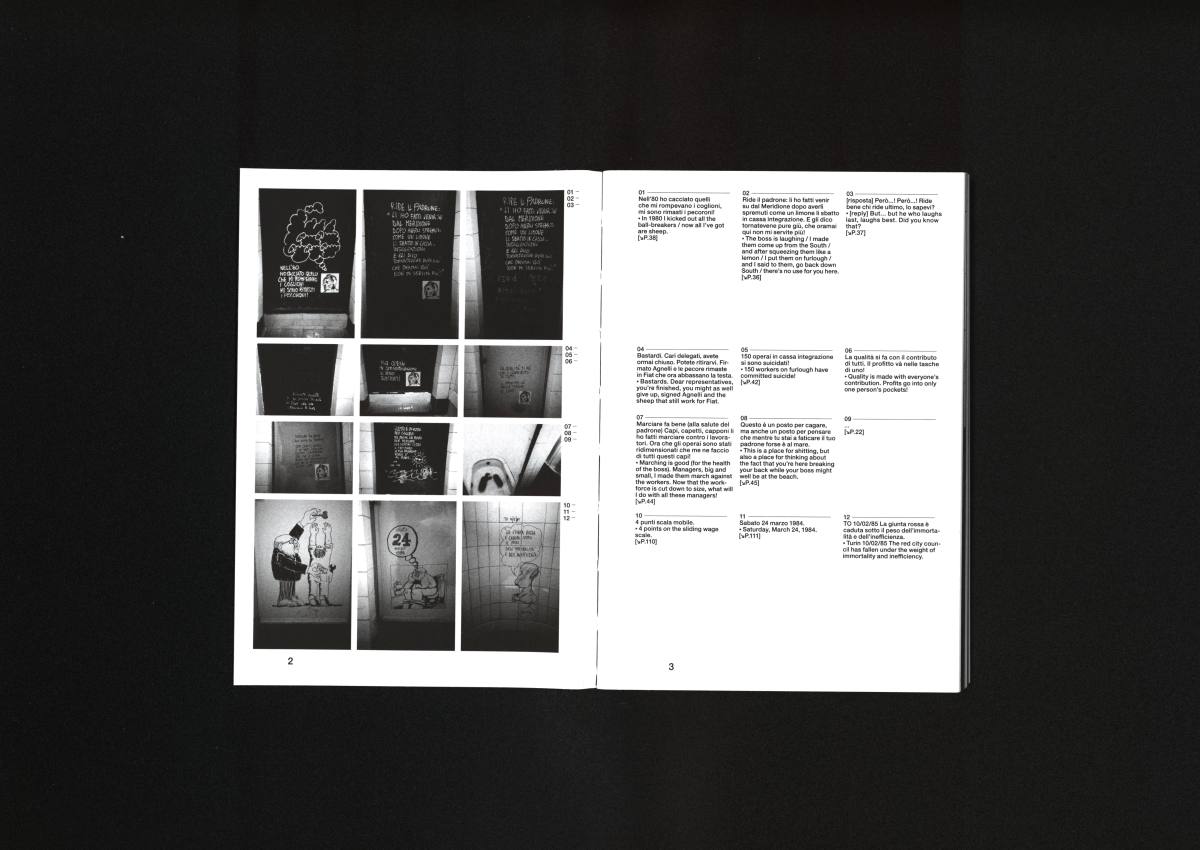


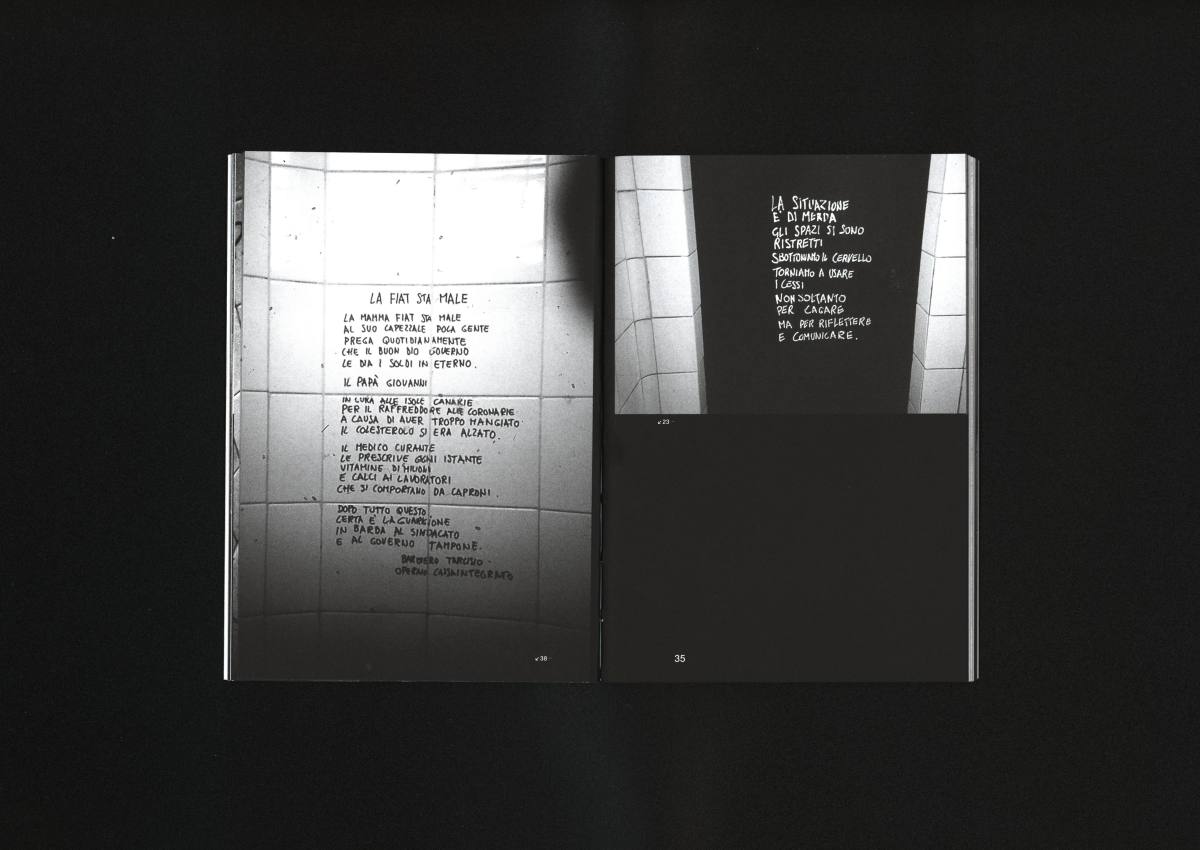
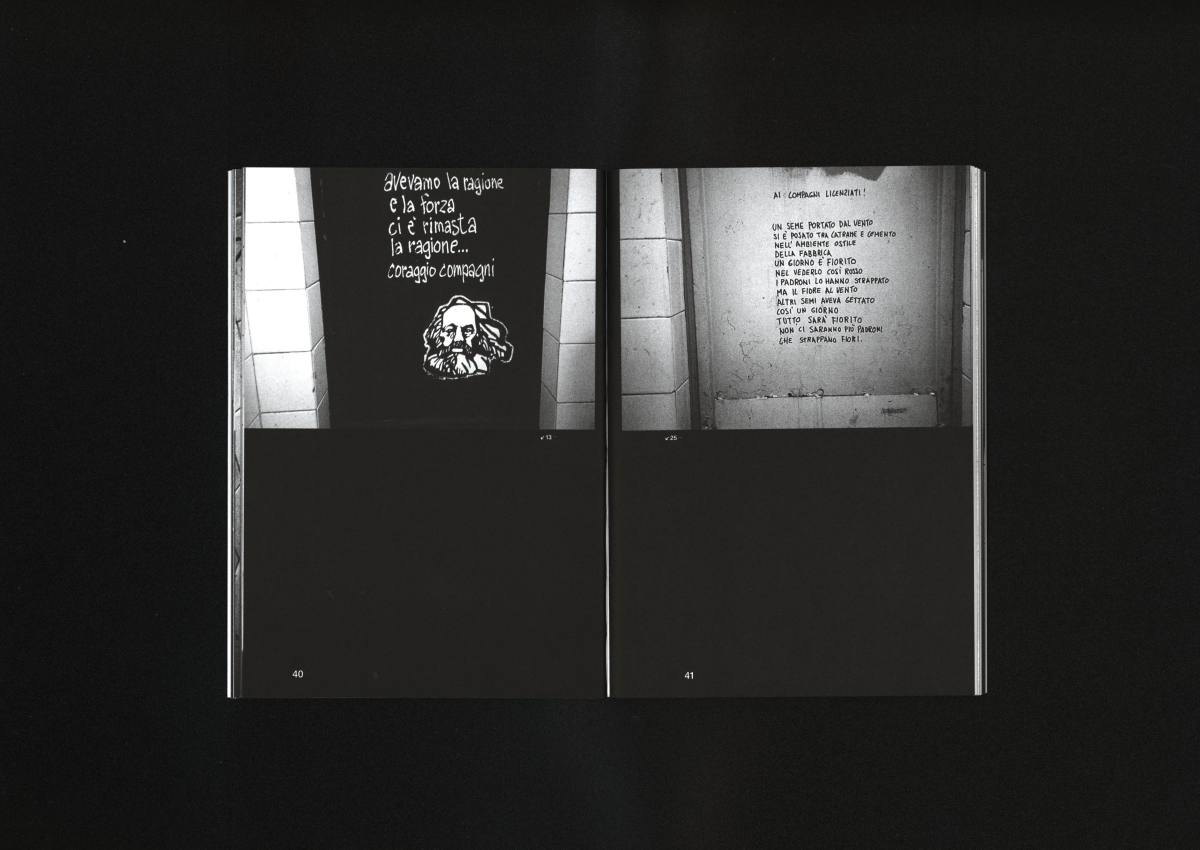
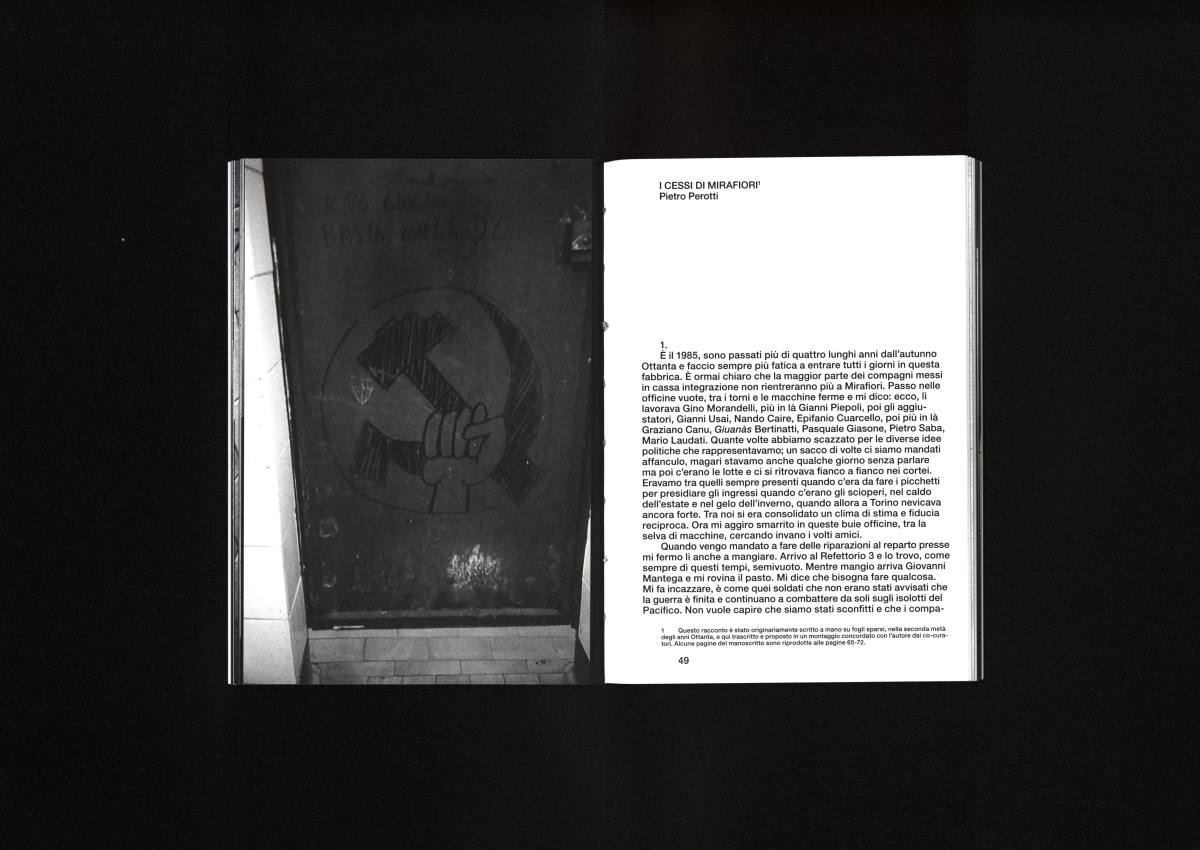
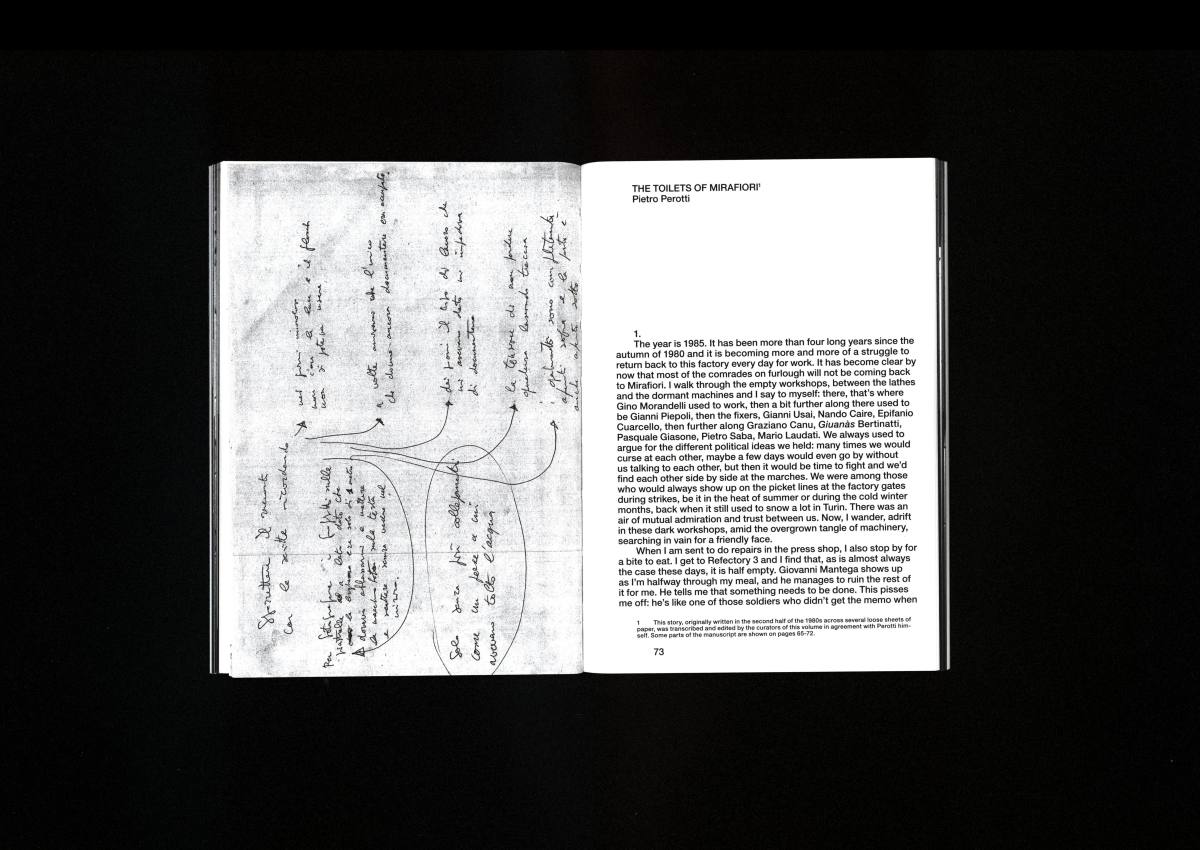

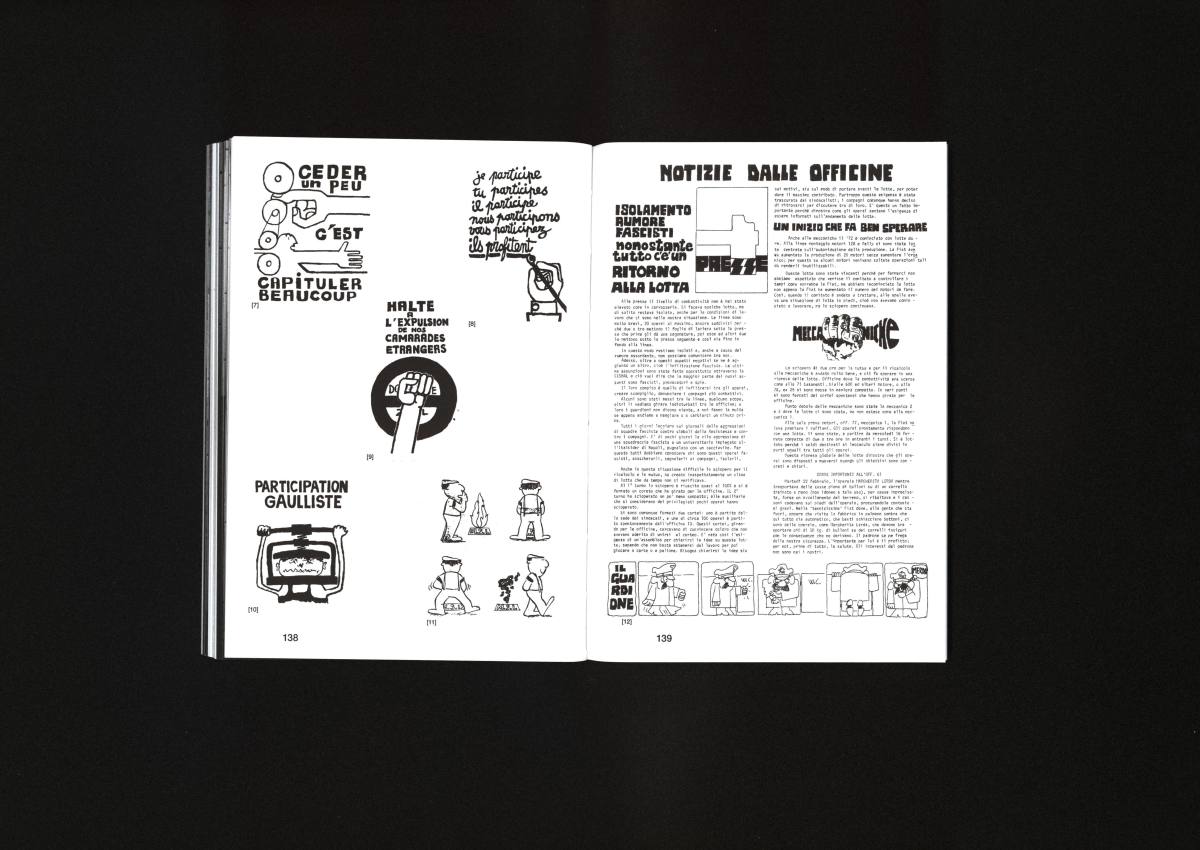
Pietro Perotti
THE FIAT MIRAFIORI TOILETS. ACTIONS AND PHOTOGRAPHIES
€ 15
Edited by Davide Tidoni, Franco Berteni
In collaboration with Compulsive Archive, Milan
144 pp.
17 x 25 cm
ita/eng
ISBN 979-12-81790-29-2
Category: Artist's books Catalogues
This book collects photographs taken by Pietro Perotti – a worker at the Fiat Mirafiori plant in Turin – who, starting in 1985, created protest writings and drawings in the factory toilets to oppose the oppressive policies of the company and of the FIAT boss Agnelli. This widespread and personal form of protest followed years of activism in class struggles and strikes during the previous decade.
Perotti systematically photographed the drawings and writings, secretly bringing a camera into the factory and timing the shutter release with the automated toilet flushes to muffle the sound of the click.
Perotti’s story starts at a precise moment in time, at the beginning of 1985, and in a precise location, the FIAT factory at Torino Mirafiori, transporting the reader back in time. Assembled for the very first time in this volume, here is a working-class story that was first scrawled and scribbled in the large factory’s toilet cubicles, and then documented on photographic paper.
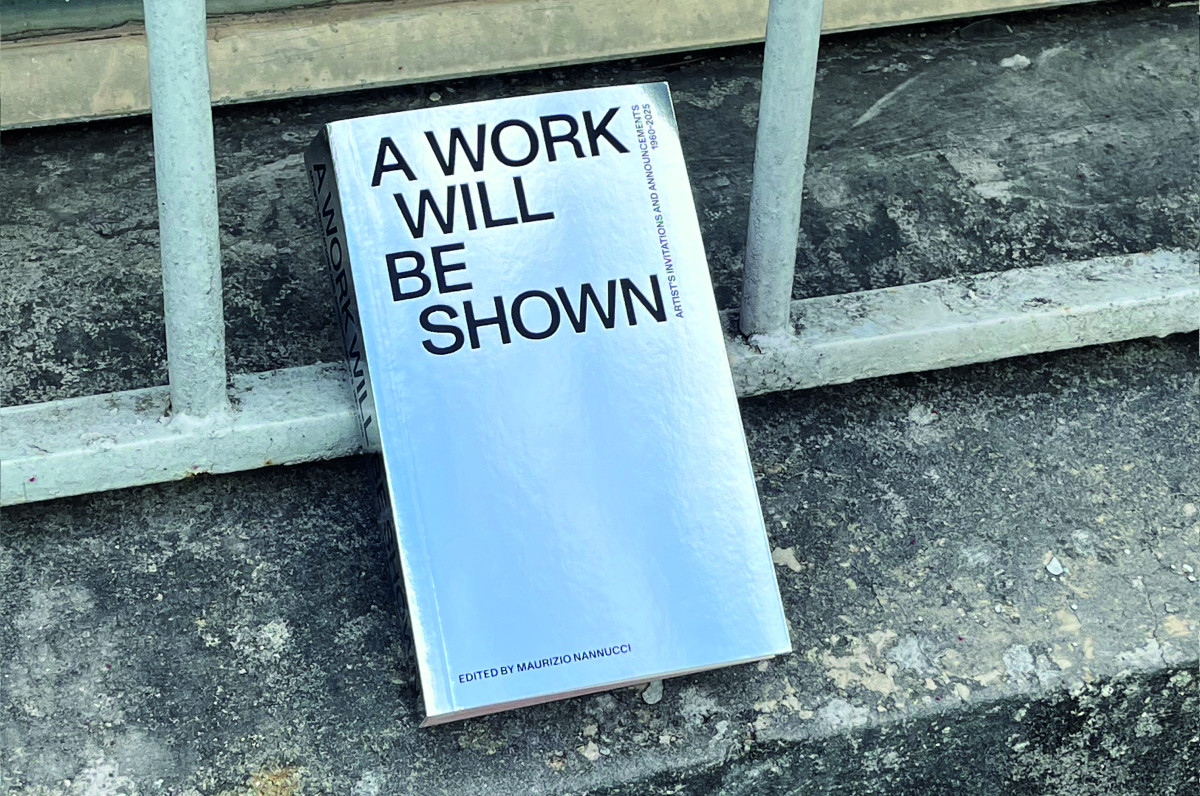
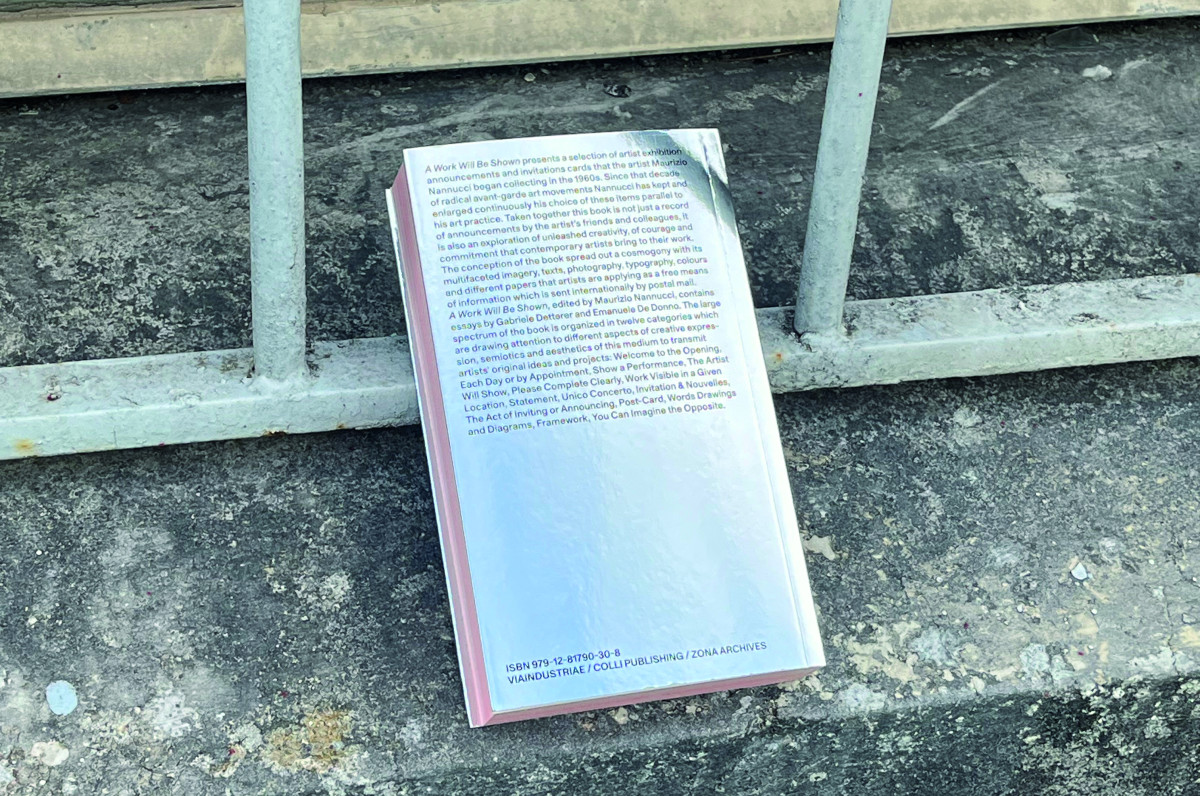
Maurizio Nannucci
A Work Will Be Shown
Out of stock
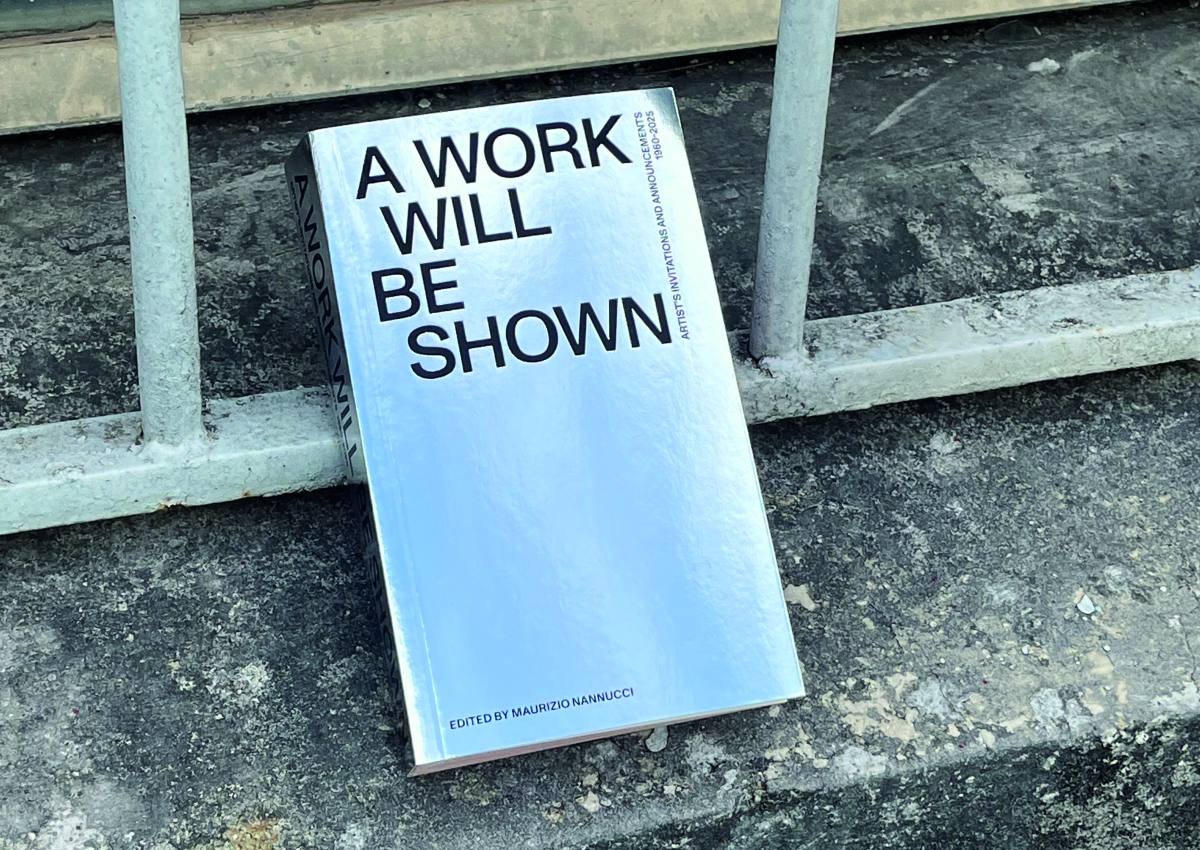
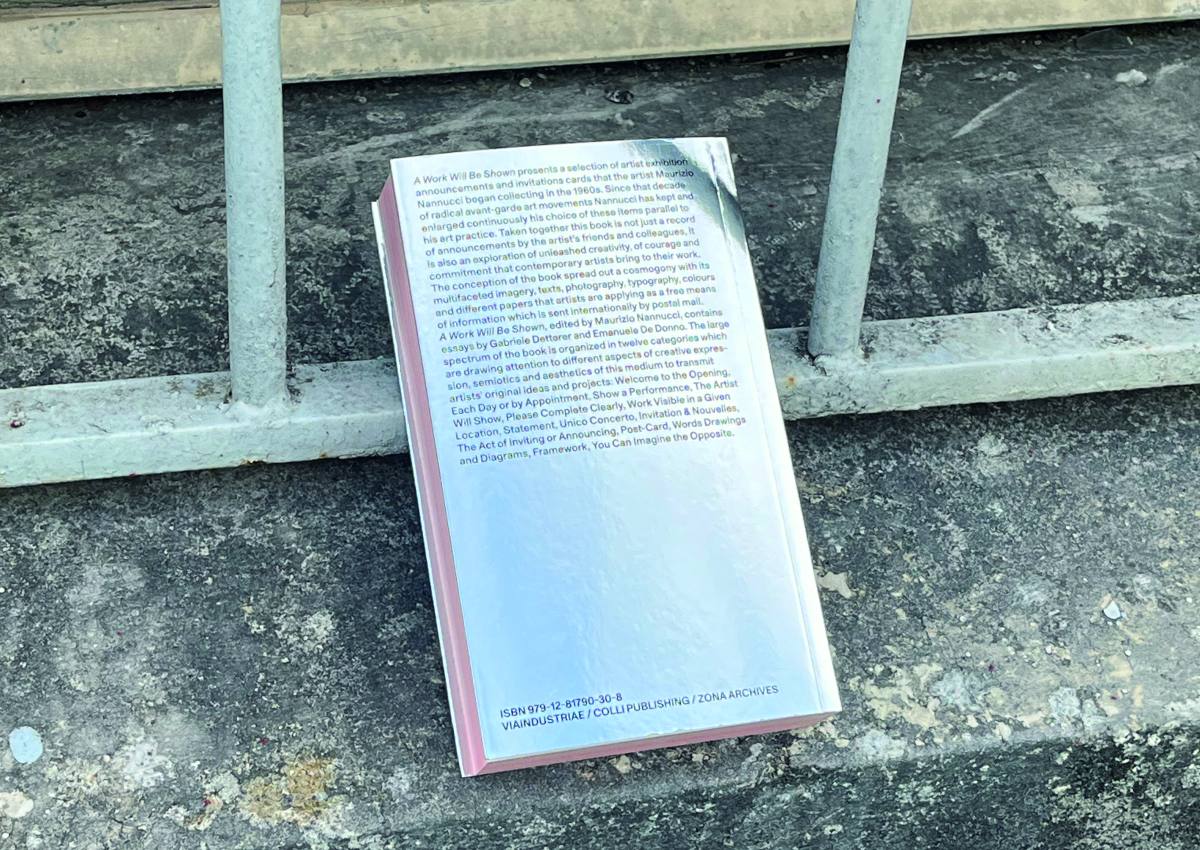
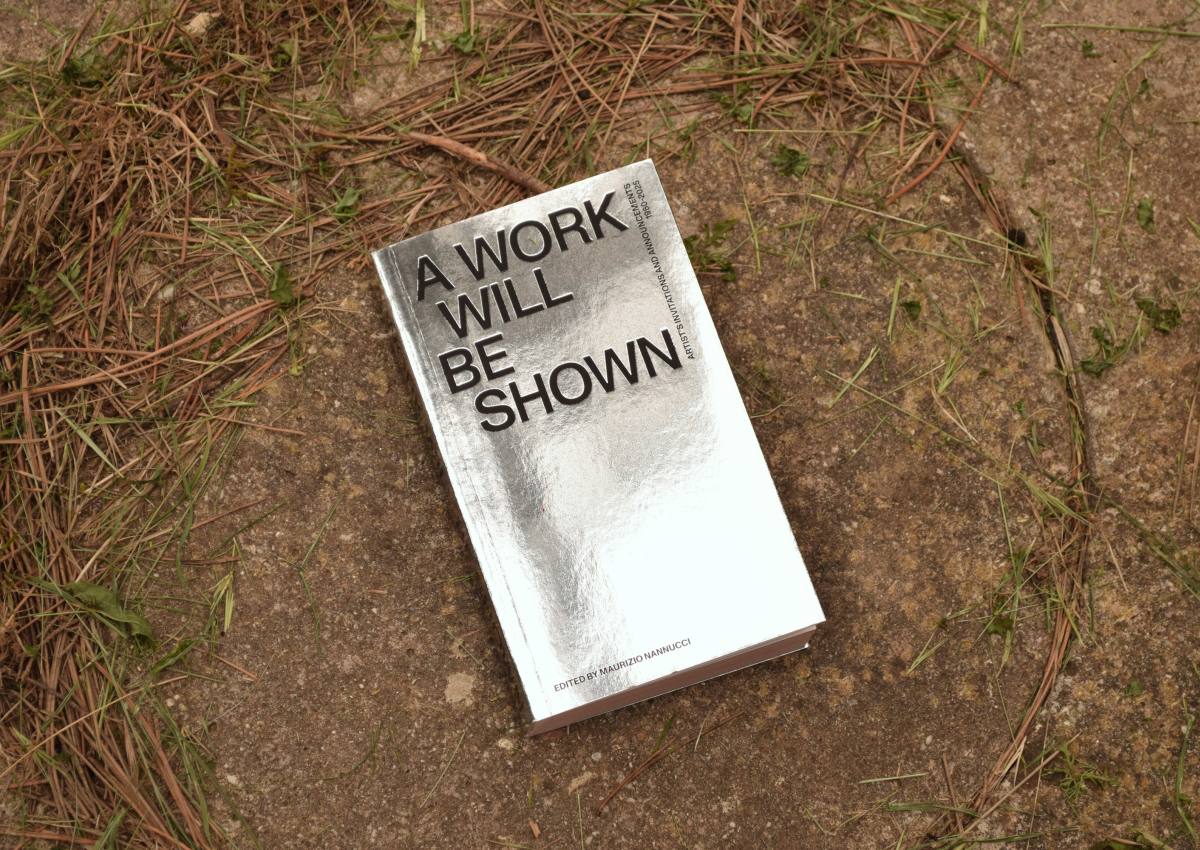
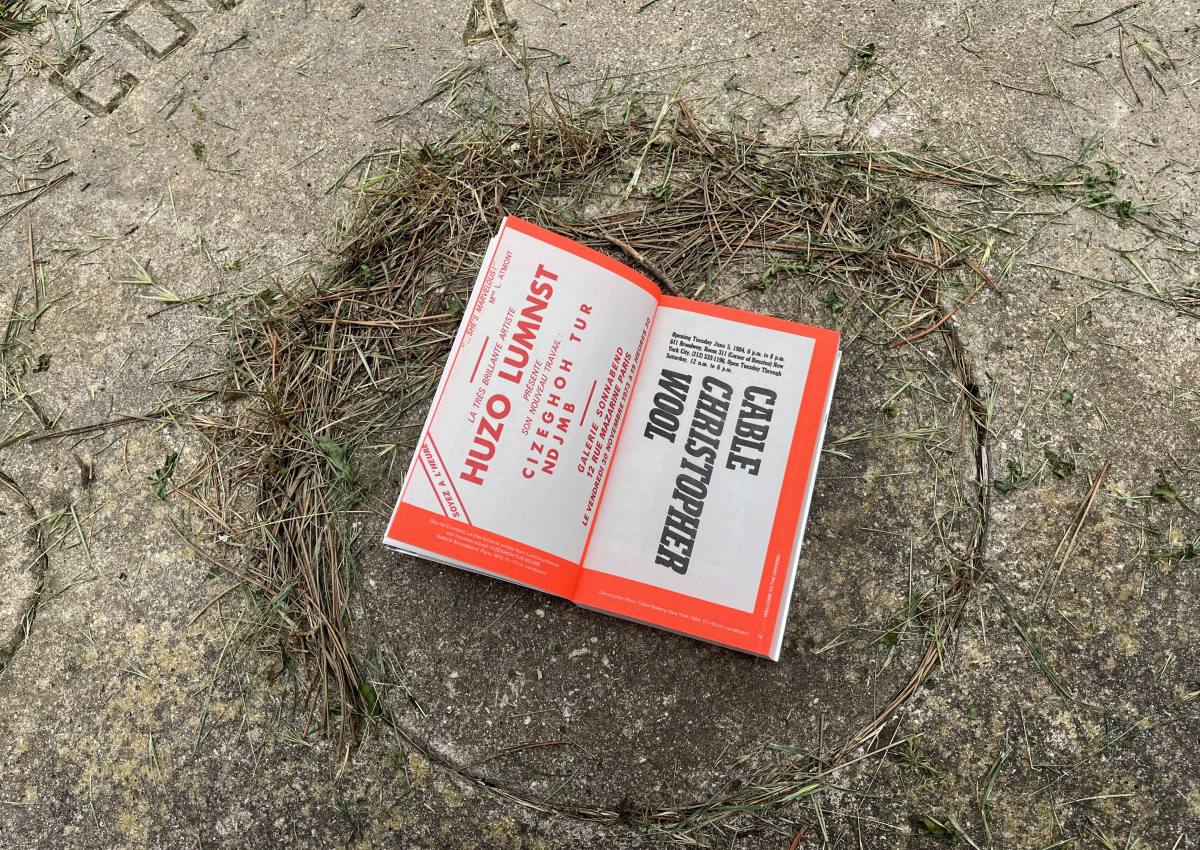
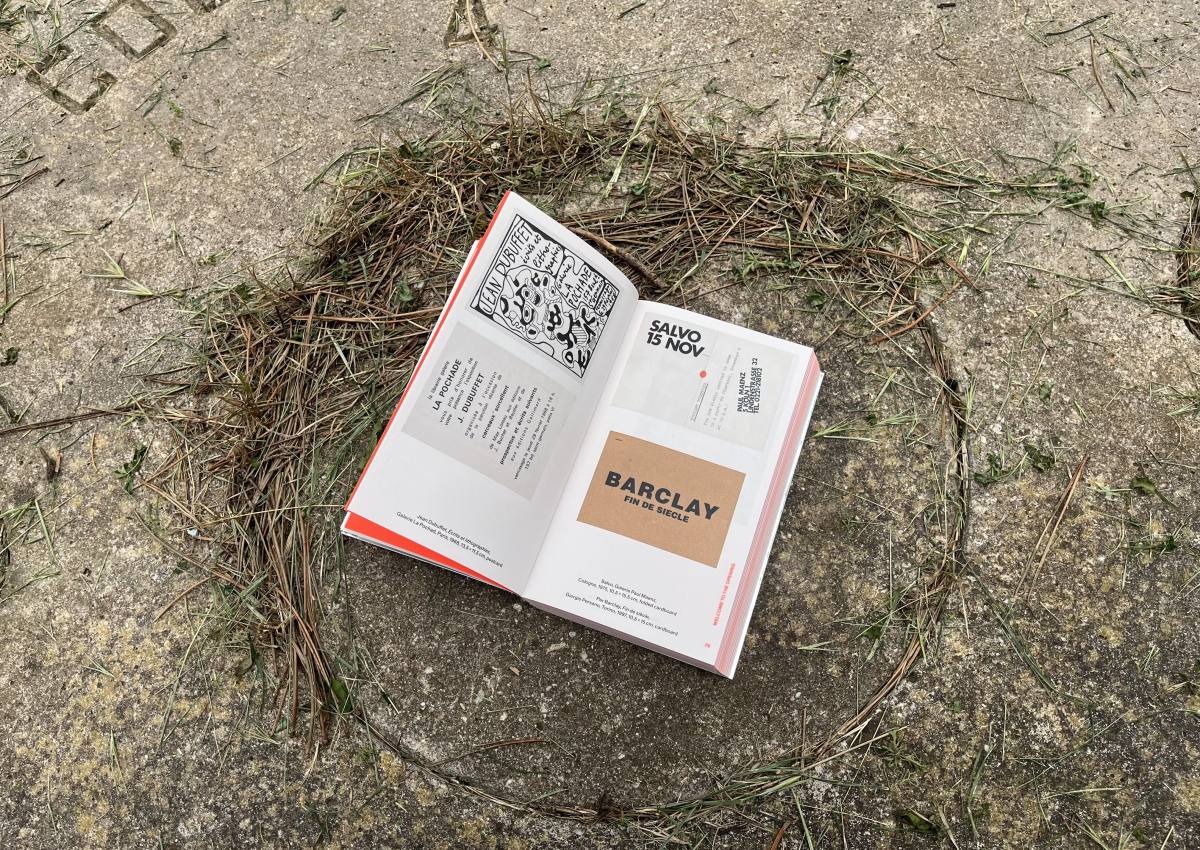
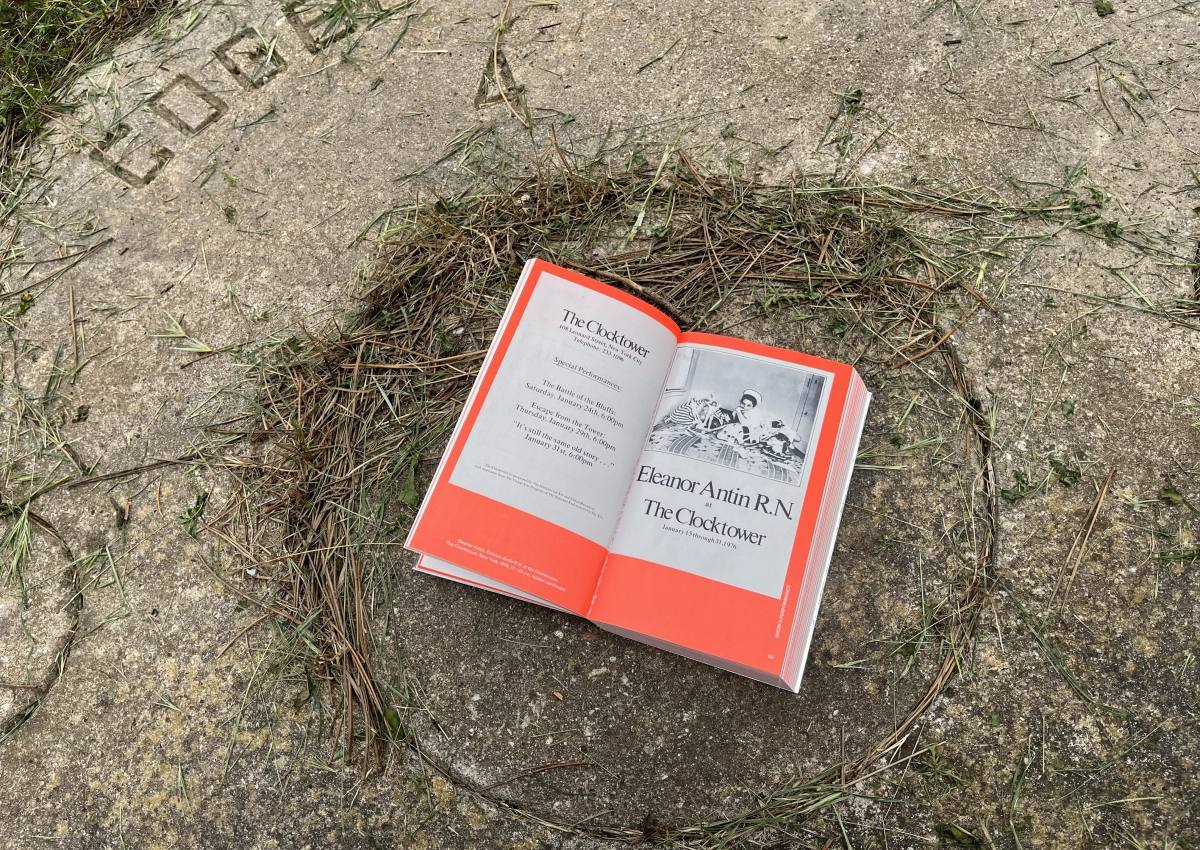
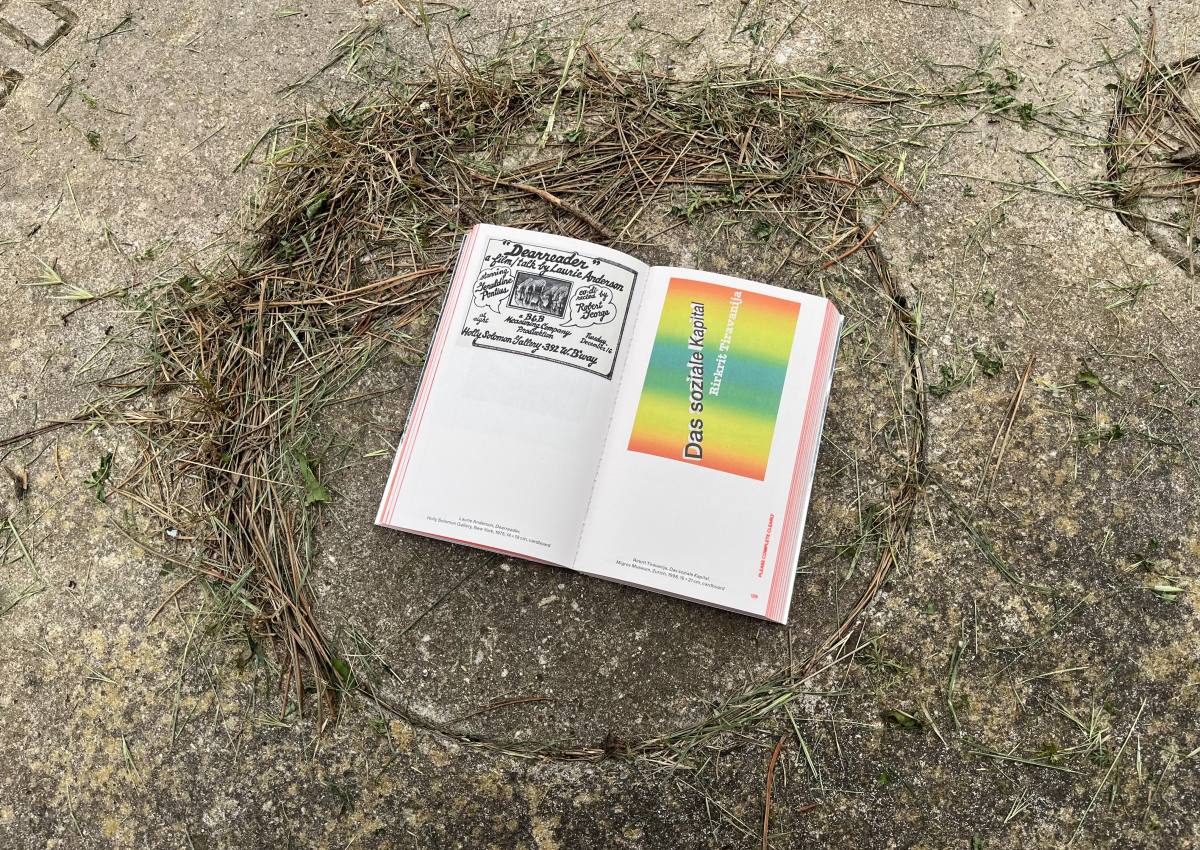
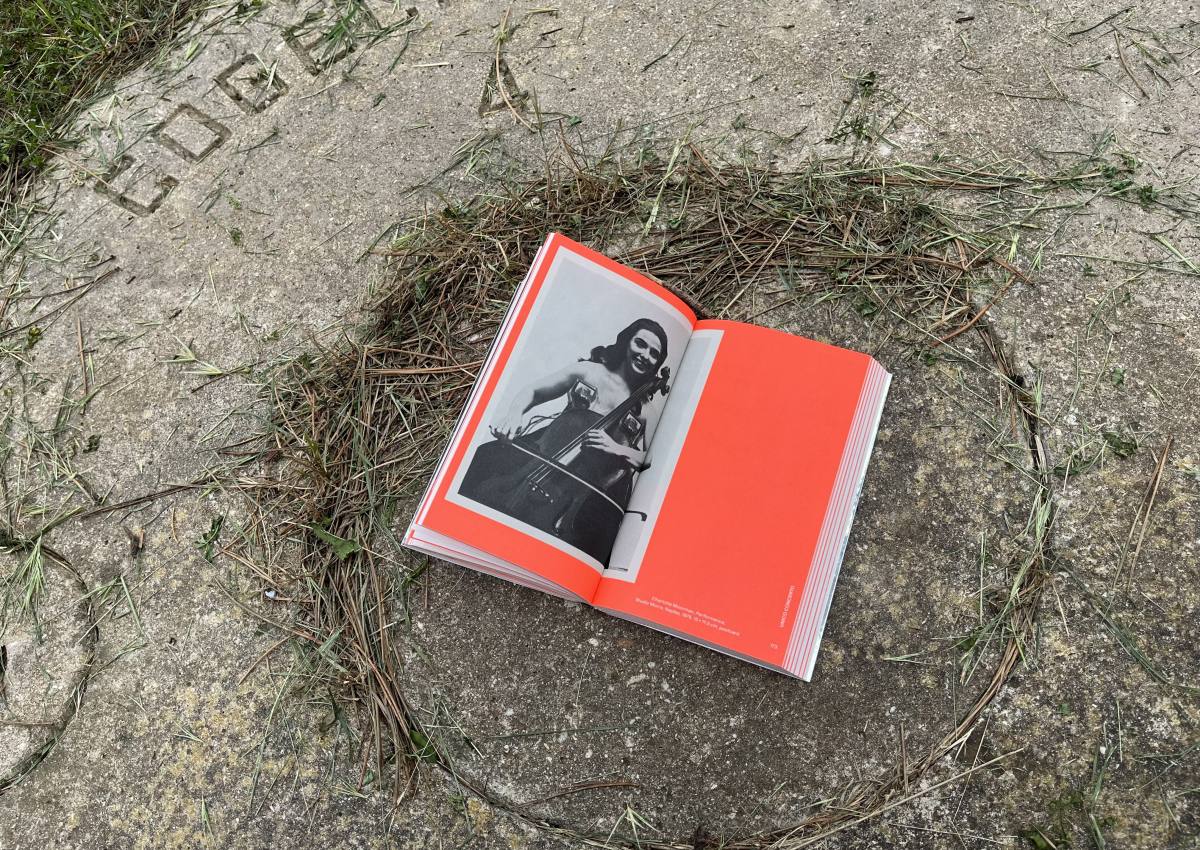
Maurizio Nannucci
A Work Will Be Shown
Out of stock
A cura di Maurizio Nannucci
360 pp.
10,5 x 18 cm
eng
ISBN 979-12-81790-30-8
A Work Will Be Shown presents a selection of artist exhibition announcements and invitations cards that the artist Maurizio Nannucci began collecting in the 1960s. Since that decade of radical avant-garde art movements Nannucci has kept and enlarged continuously his choice of these items parallel to his art practice. Taken together this book is not just a record of exhibition announcements by the artist’s friends and colleagues, it is also an exploration of unleashed creativity, of courage and commitment that contemporary artists bring to their work. The conception of the book spread out a cosmogony with its multifaceted imagery, texts, photography, typography, colours and different papers that artists are applying as a free means of information which is sent internationally by postal mail. A Work Will Be Shown edited by Maurizio Nannucci, contains essays by Gabriele Detterer and Emanuele De Donno. The large spectrum of exhibition announcement cards is organized in twelve categories which are drawing attention to different aspects of creative expression, semiotics and aesthetics of this medium to transmit artists' original ideas and projects: Welcome to the Opening, Each Day or by Appointment, Show A Performance, The Artist Will Show, Please Complete Clearly, Work Visible in a Given Location, Statement, Unico Concerto, Invitation & Nouvelles, The Act of Inviting or Announcing, Post-Card, Words Drawings and Diagrams, Framework, You Can Imagine the Opposite. This structure of the book as a kind of meta-text complements the personal narrative that underlies Nannucci’s investigation and imprint of his choice of exhibition announcement cards. As a whole the book’s two-dimensional approach results in an unusual insight into the history of contemporary art since the second half of the 20th century until today.
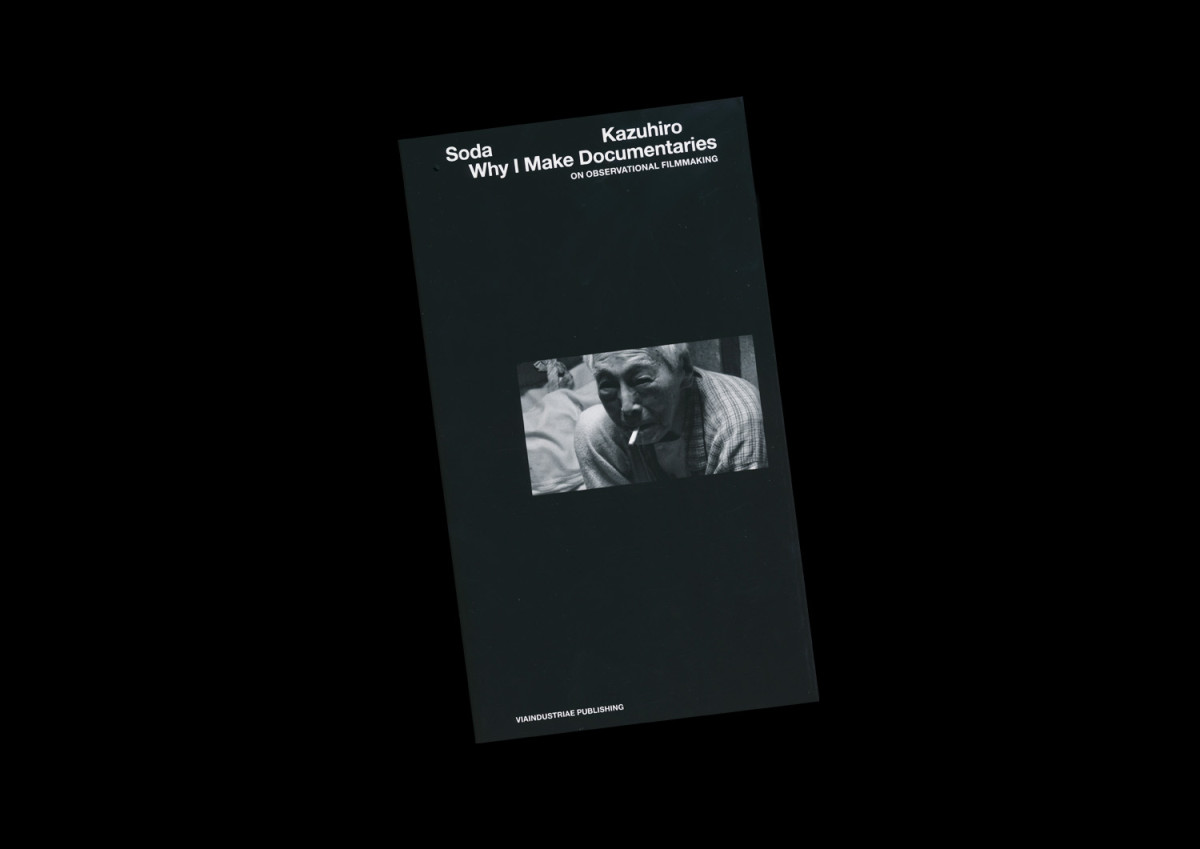
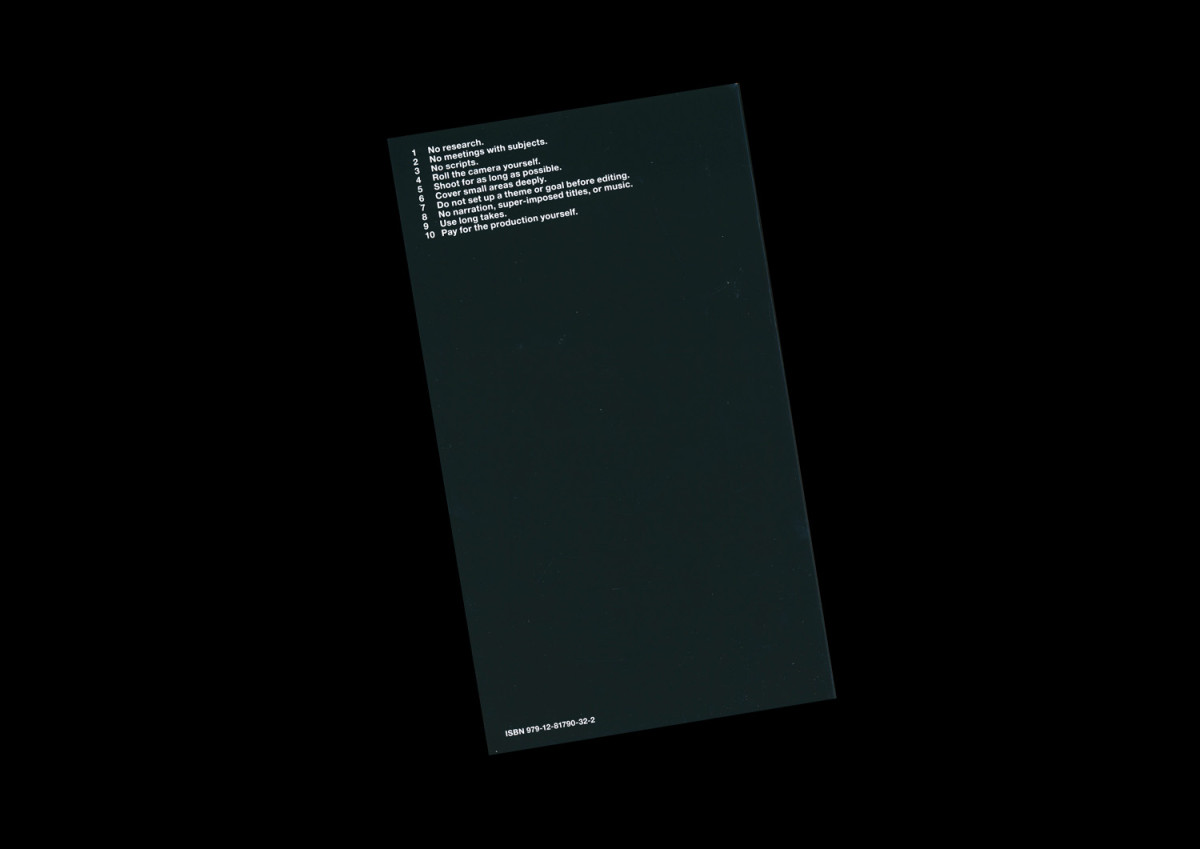
Soda Kazuhiro
Why I Make Documentaries. On Observational Filmmaking
€ 20
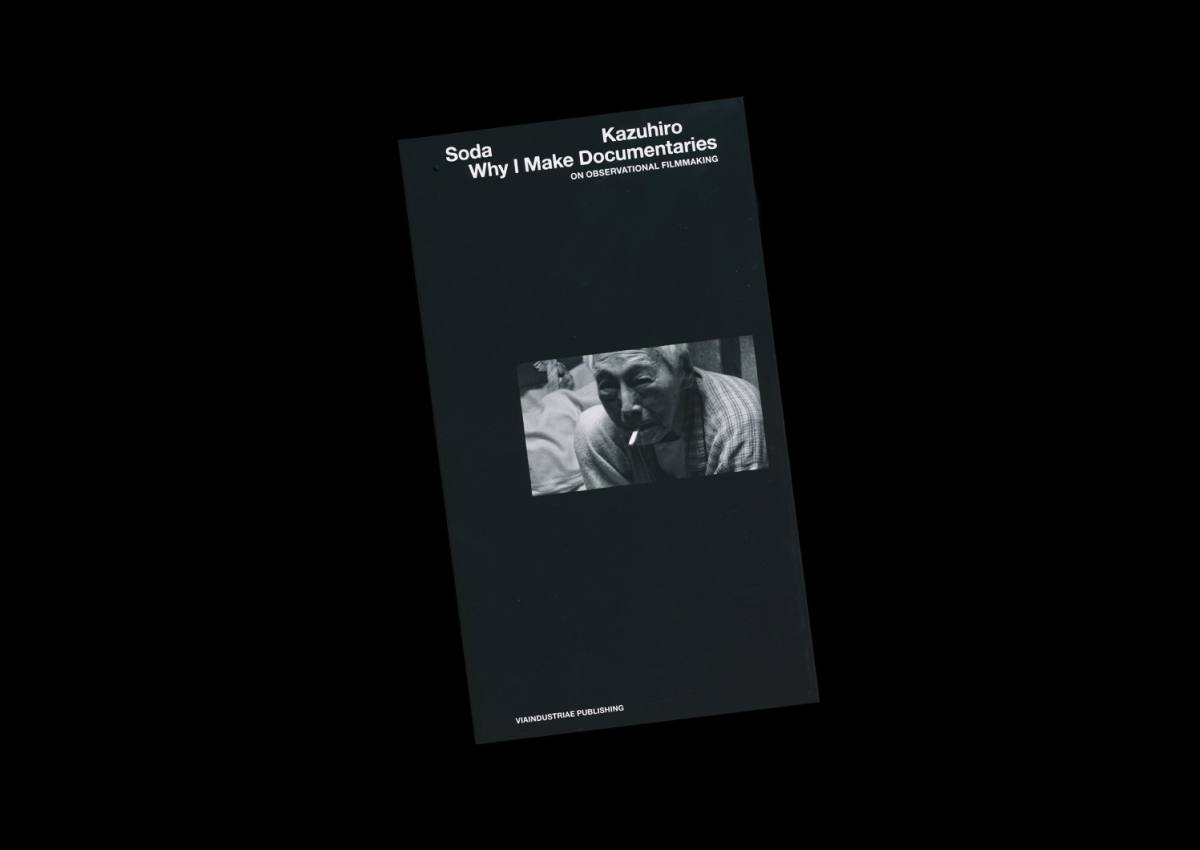
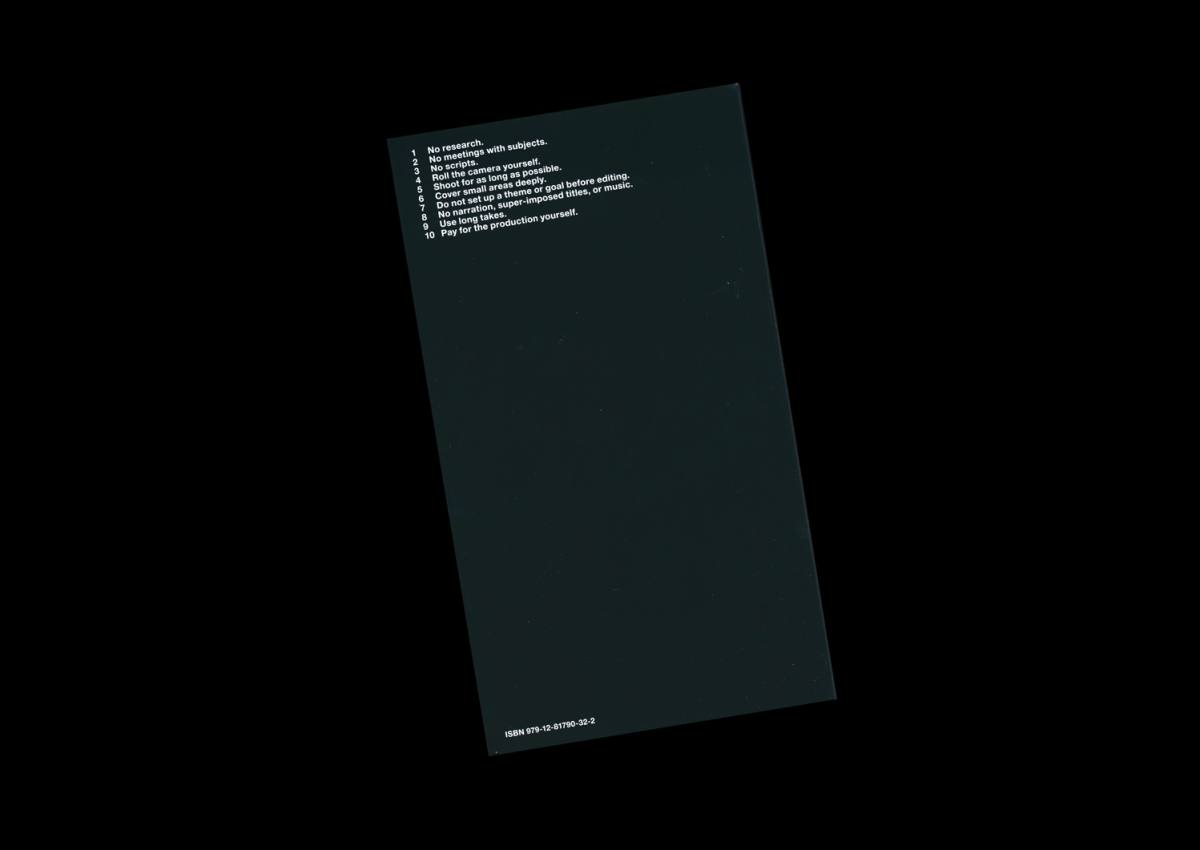
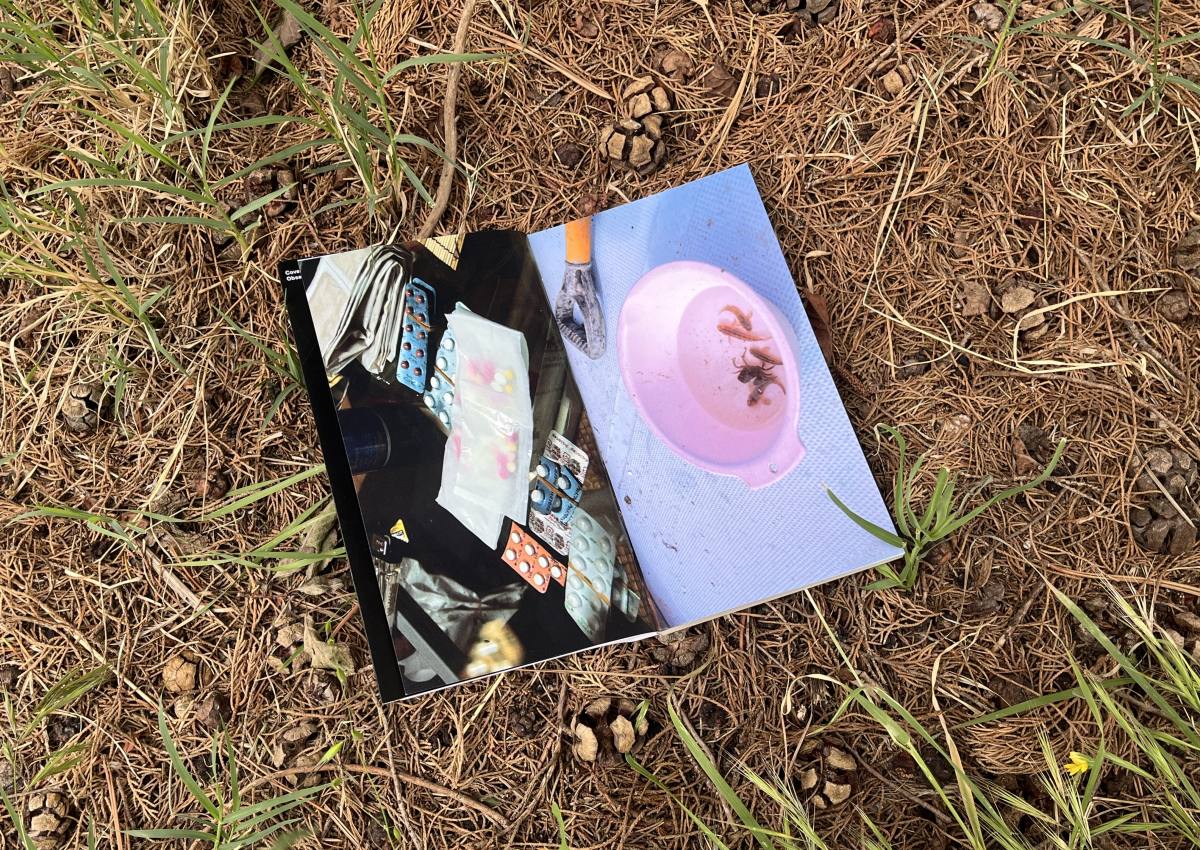
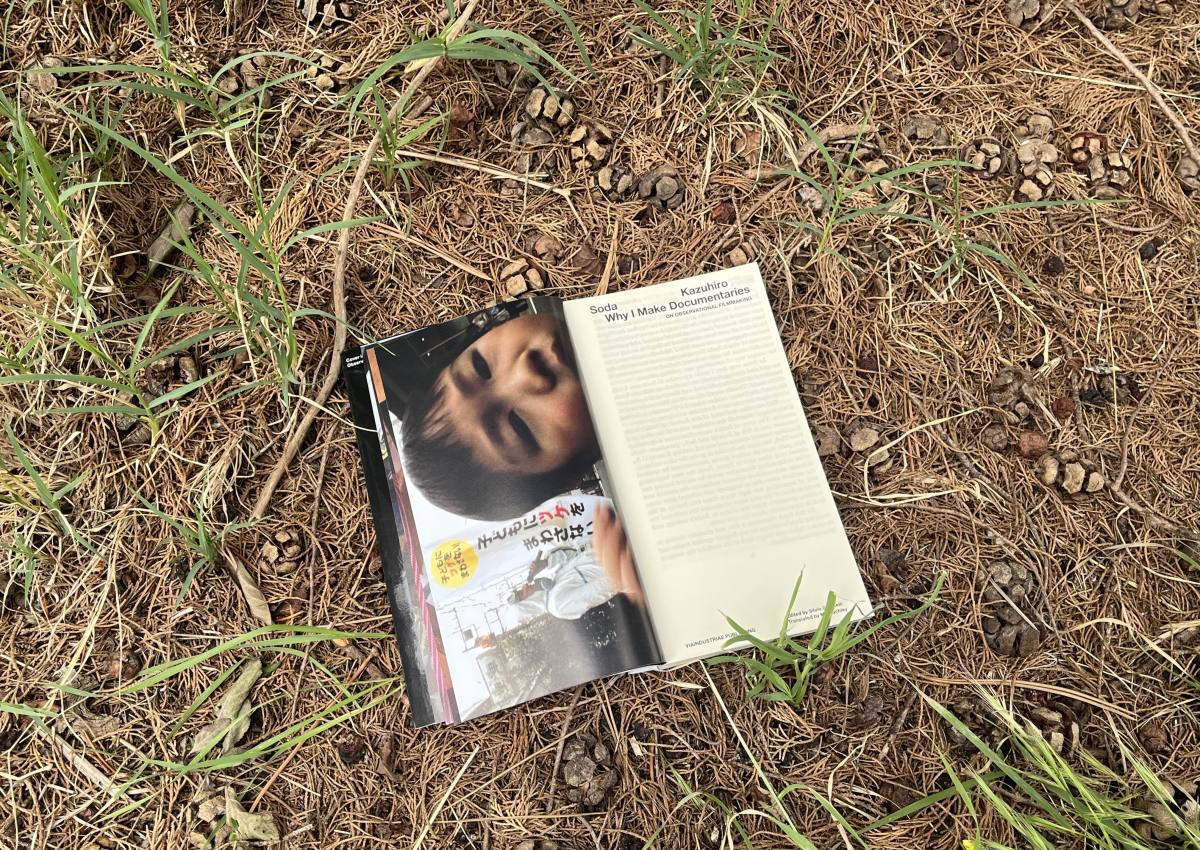
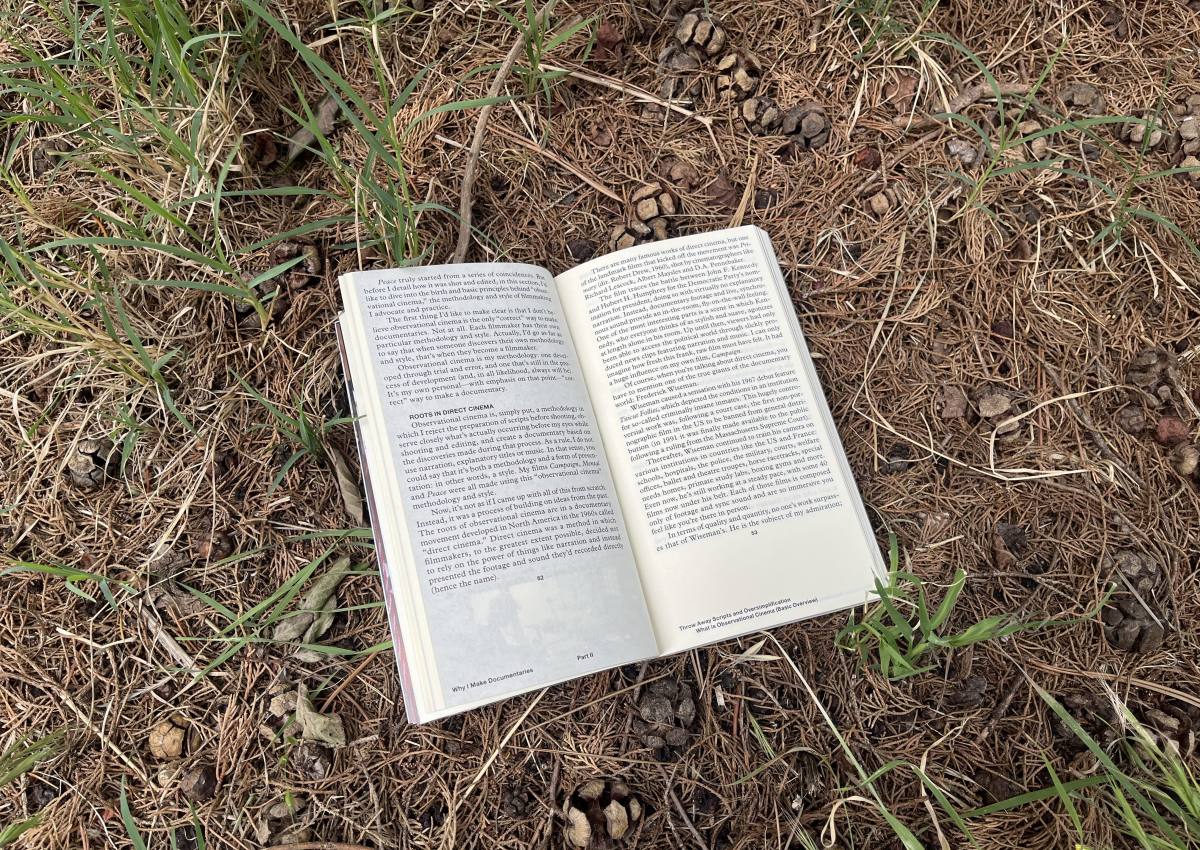
Soda Kazuhiro
Why I Make Documentaries. On Observational Filmmaking
€ 20
Edited by Silvio Grasselli
Translated by Matt Schley
Second edition
208 pp
11 × 20 cm
eng
2023
ISBN 978-88-97753-85-8
Category: Theory
“What is a documentary?” “Why do I make documentaries?”. Soda Kazuhiro – one of the most prominent Japanese filmmakers, who has based his documentarist career on a radically independent filmmaking method, – writes this reflexive diary on his own work pursuing to find answers to these and to other crucial questions that arose along his long path of research. This second curated English version of his most enlightening and complete text has been enriched with a brand new iconographic apparatus from Soda Kazuhiro’s movies and a new updated introduction by the author himself. Second edition with new image selection and new cover.

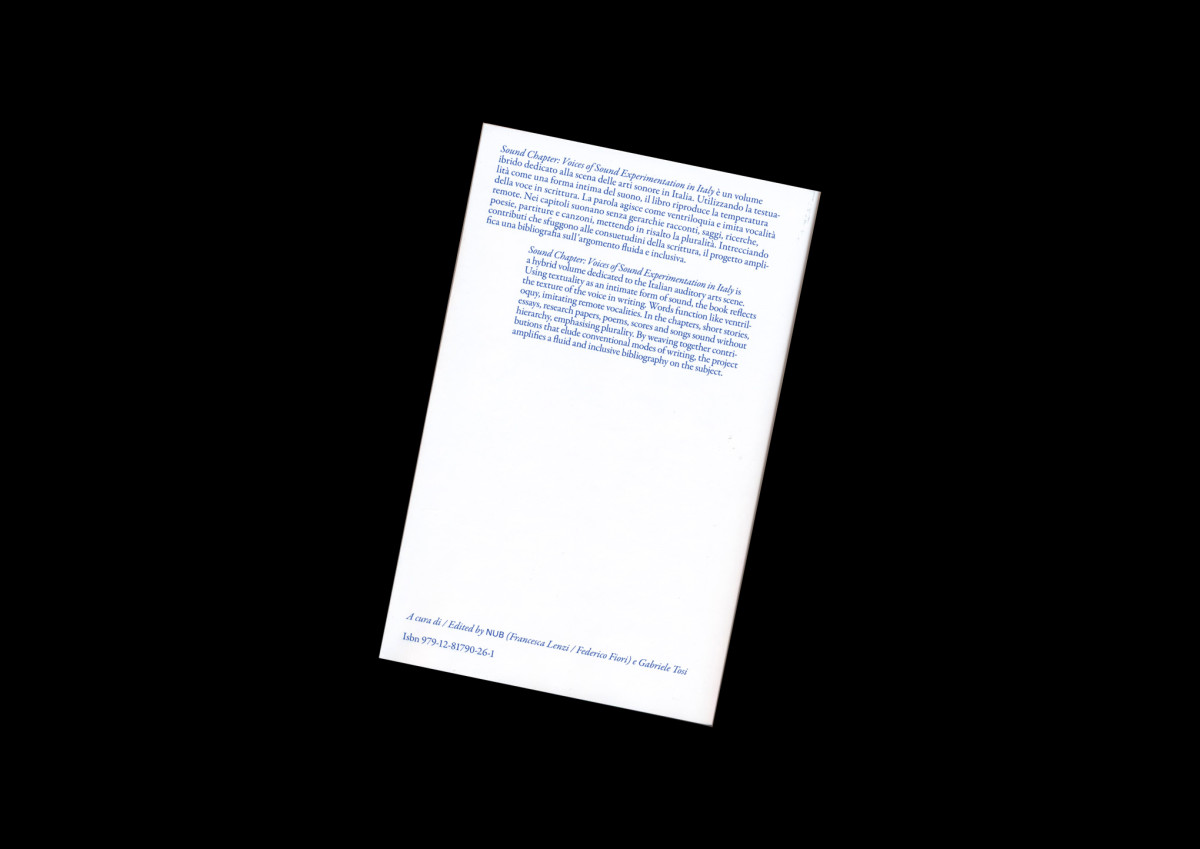
Vv. Aa.
Sound Chapters
€ 15


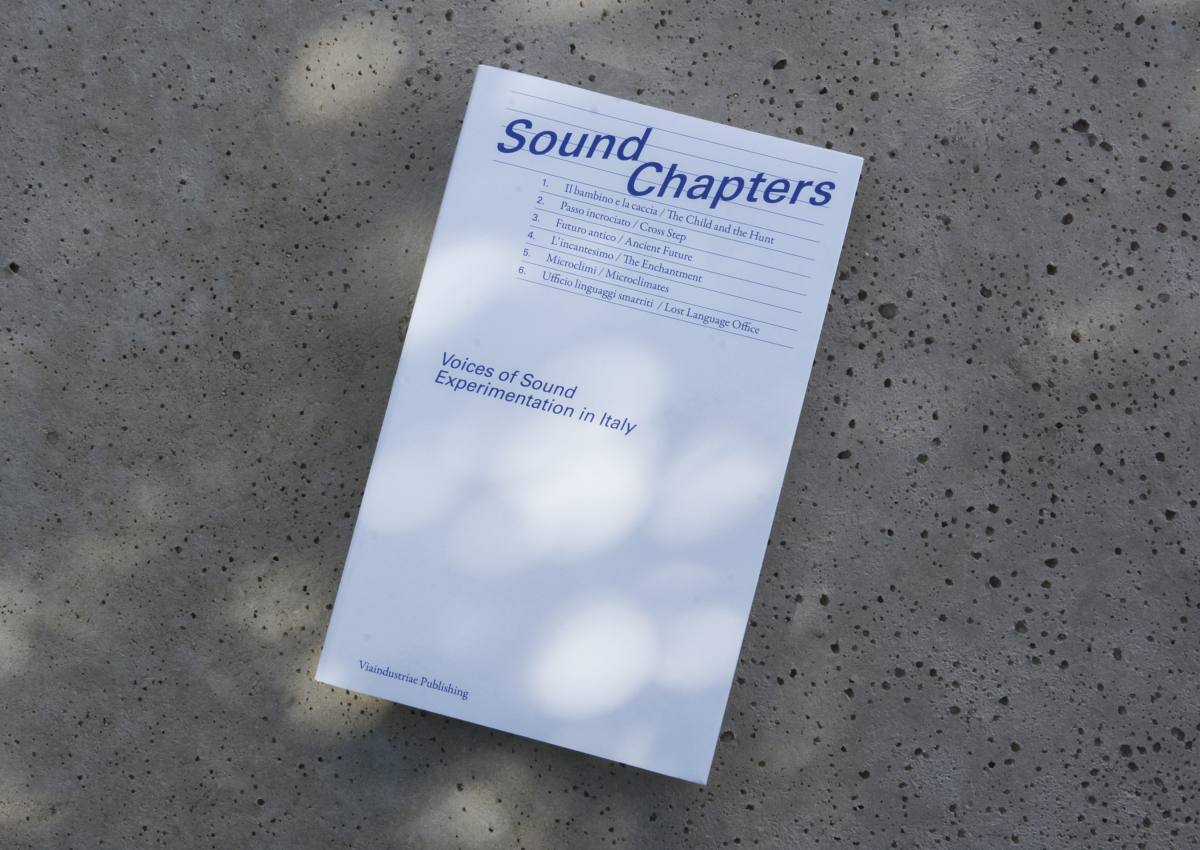



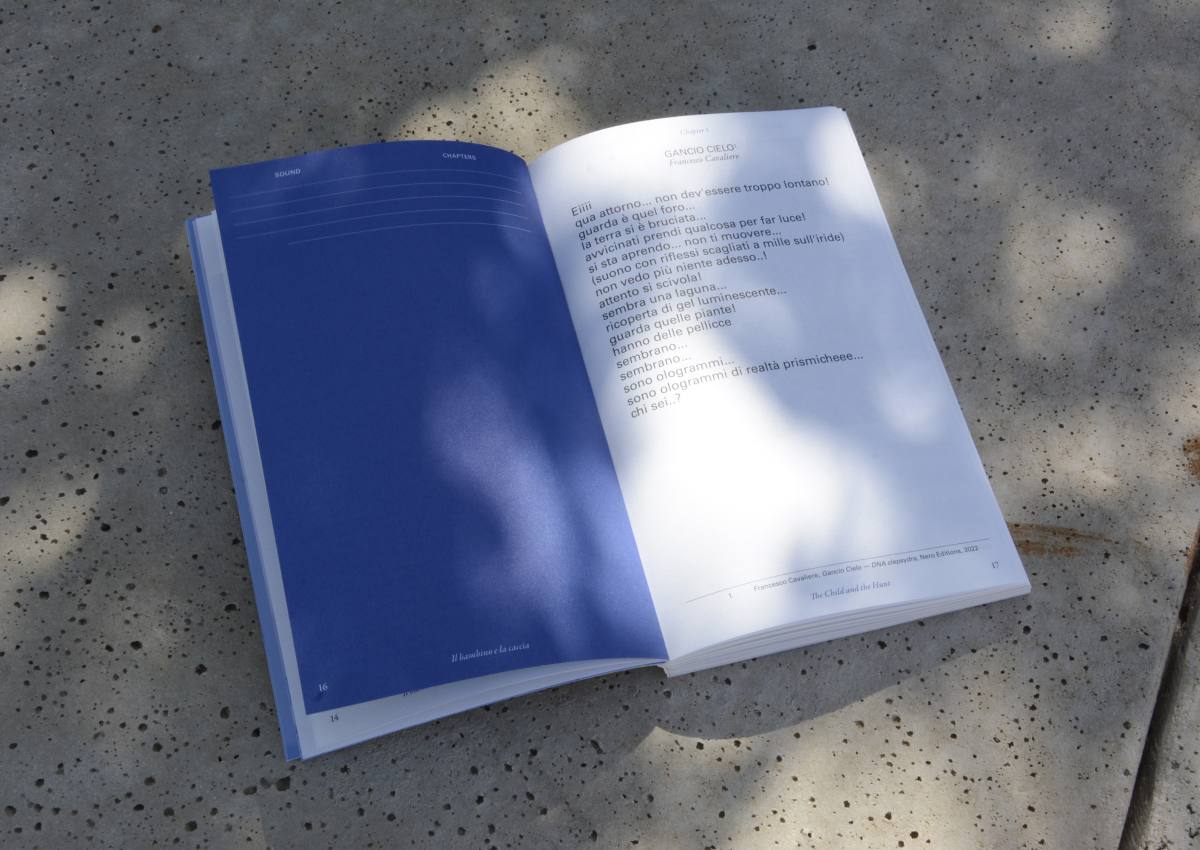
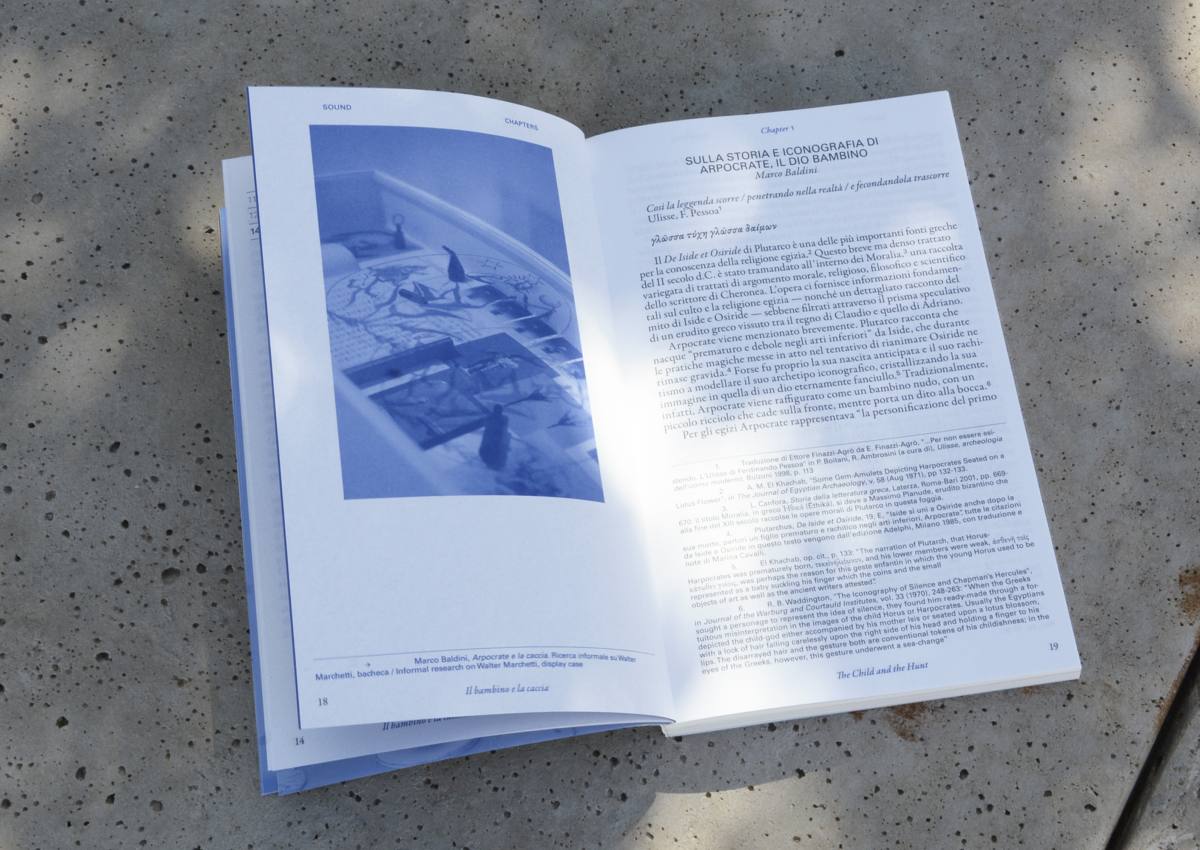

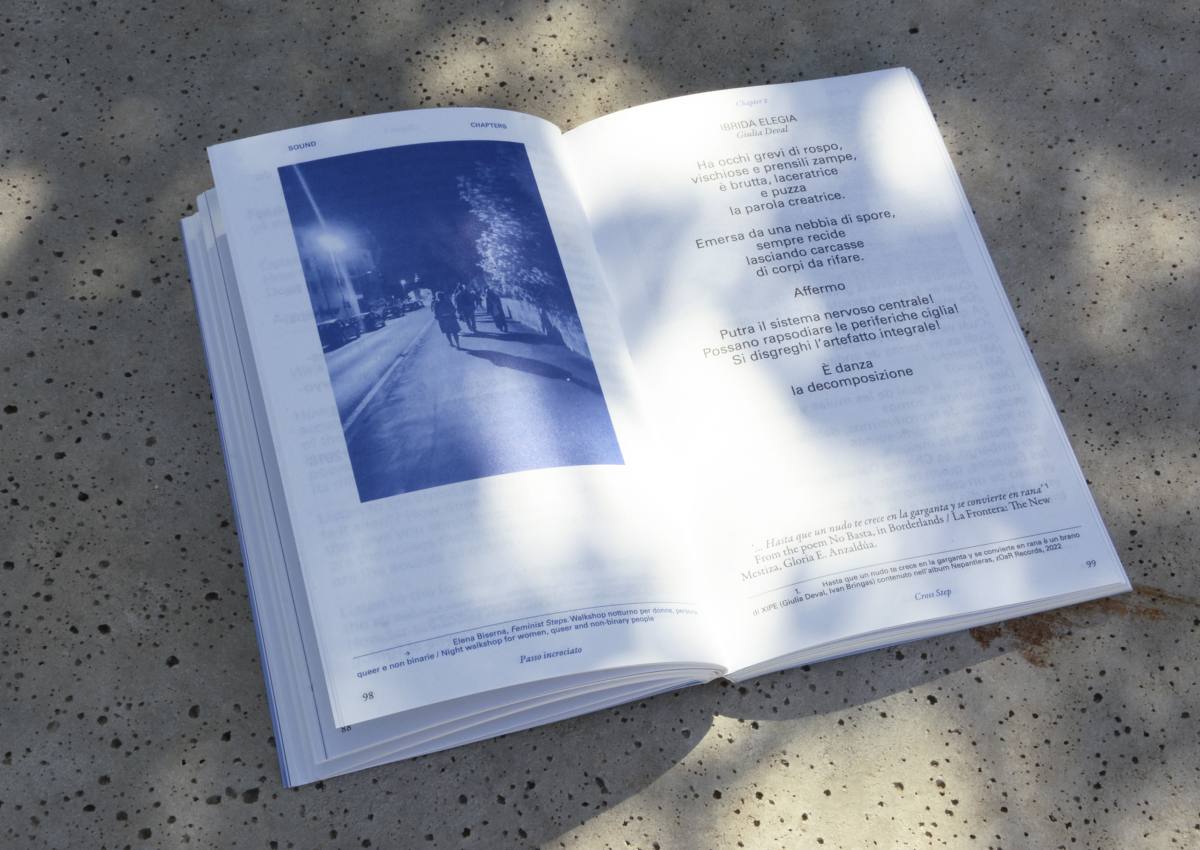
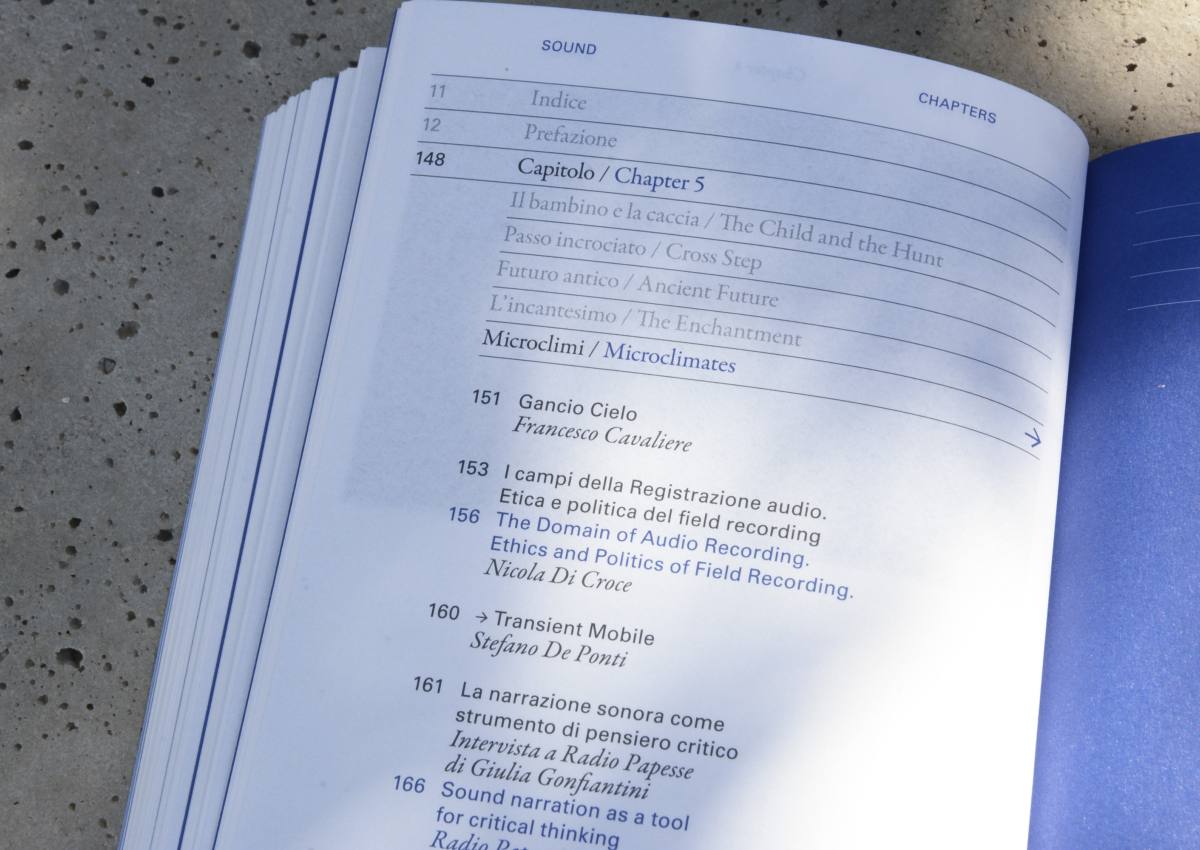


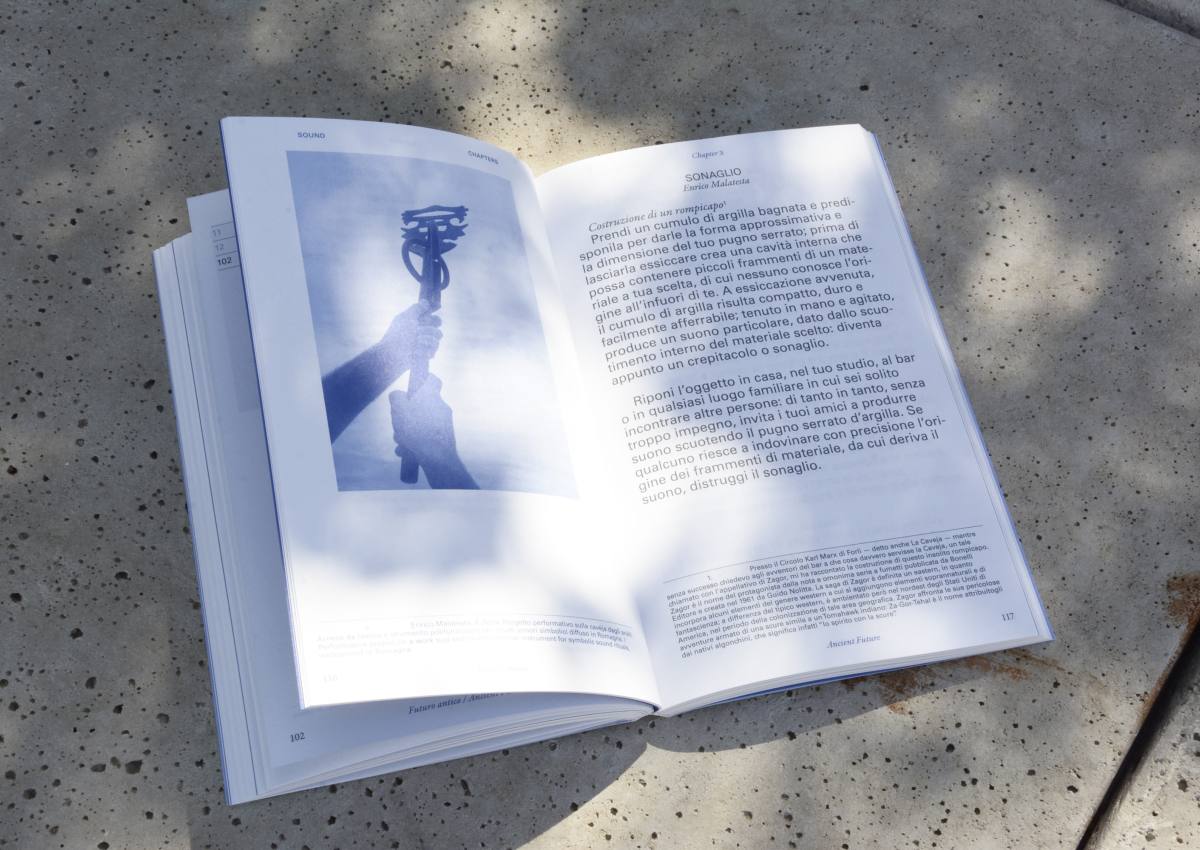
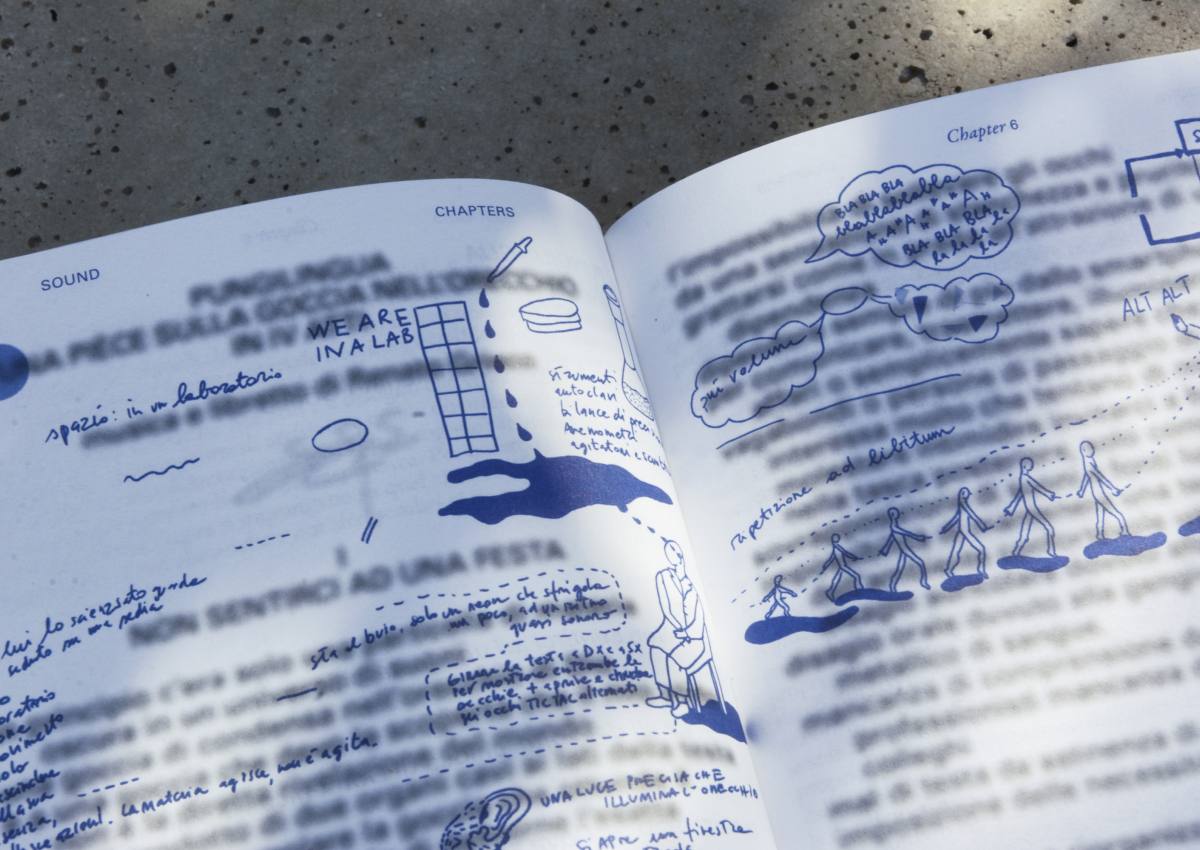

Vv. Aa.
Sound Chapters. Voices of Sound Experimentation in Italy
€ 15
Edited by NUB (Francesca Lenzi / Federico Fiori) and Gabriele Tosi
224 pp.
11,5 x 18,5 cm
ita/eng
ISBN 979-12-81790-26-1
Category: Catalogues Sound
Sound Chapters: Voices of Sound Experimentation in Italy is a hybrid volume dedicated to the Italian auditory arts scene. Using textuality as an intimate form of sound, the book reflects the texture of the voice in writing. Words function like ventril-oquy, imitating remote vocalities. In the chapters, short stories, essays, research papers, poems, scores and songs sound without hierarchy, emphasising plurality. By weaving together contri-butions that elude conventional modes of writing, the project amplifies a fluid and inclusive bibliography on the subject. Le autrici e gli autori di questo libro sono artiste, ricercatrici, curatrici e organizzatrici culturali che, negli ultimi dieci anni, hanno avuto un ruolo attivo nella scena sperimentale della arti sonore in Italia. The book is not only a theoretical reflection on the Italian soul scene but also a catalogue for Mezz'aria. La strana apertura della ricerca sonora, a collective project that explored sound research within the exhibition setting of the Museo del Novecento e del Contemporaneo di Palazzo Fabroni a Pistoia (20.05-15.08 2023). Artists and researchers: Marco Baldini, Elena Biserna, Luca Boffi, Andrea Borghi, Mattia Capelletti, Francesco Cavaliere, Stefano De Ponti, Nicola Di Croce, Giulia Deval, Alessandra Eramo, Paolo Gabriotti, Giulia Gonfiantini, Renato Grieco, Riccardo La Foresta, Enrico Malatesta, Chiara Pavolucci, Leandro Pisano, Diana Lola Posani, Radio Papesse, Francesco Toninelli.
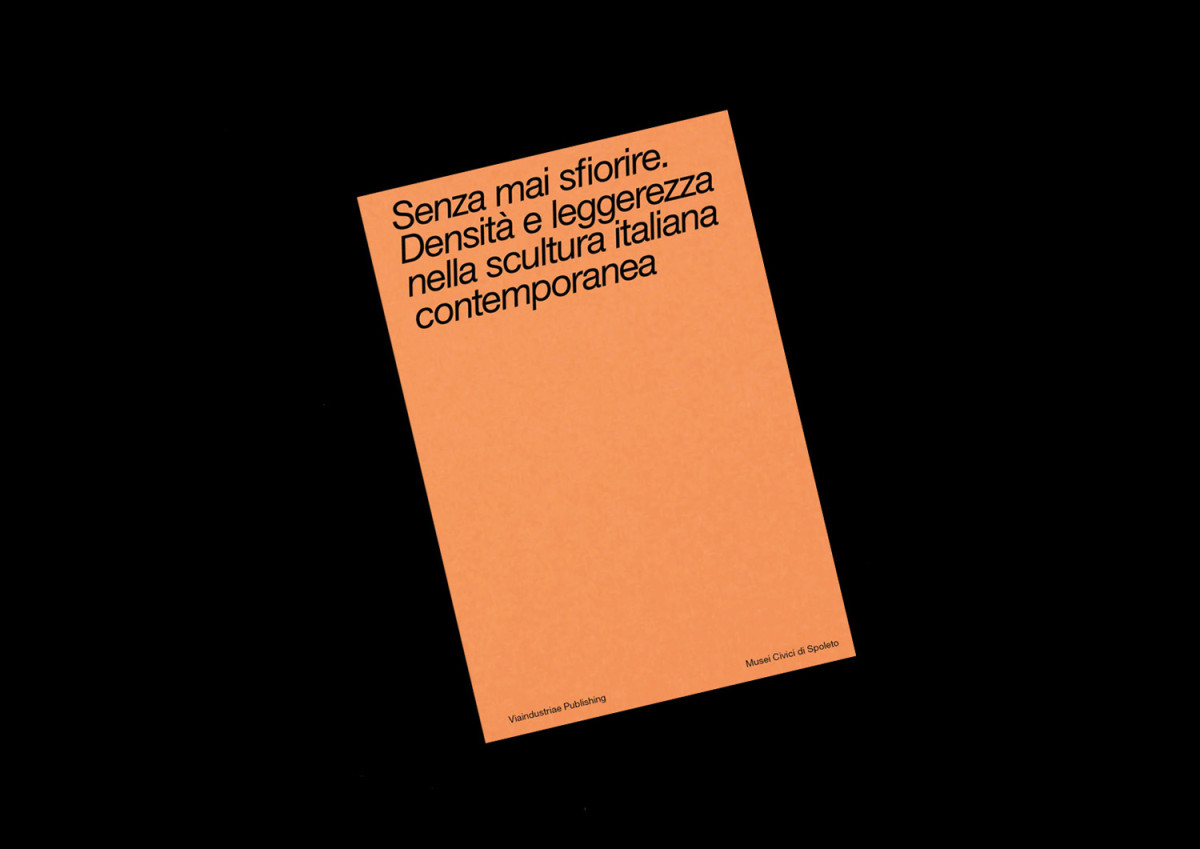
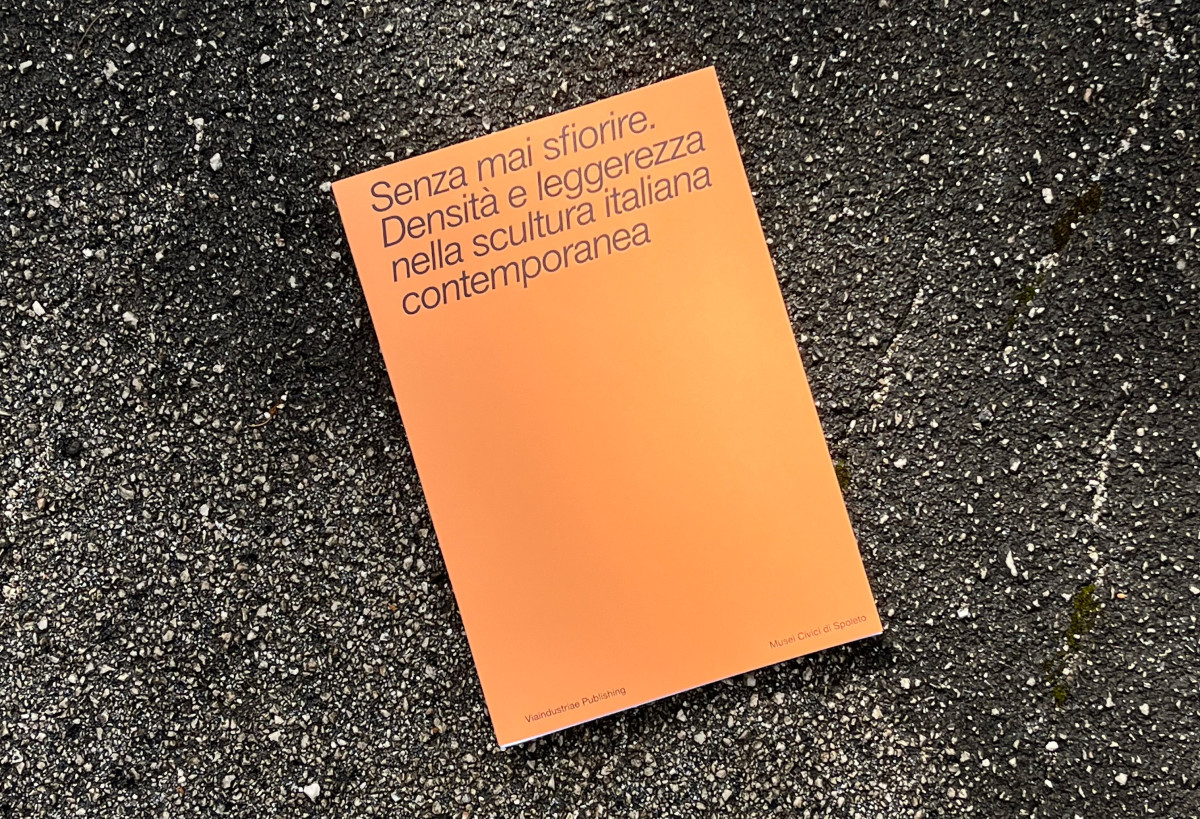
Aa. Vv.
Senza mai sfiorire. Densità e leggerezza nella scultura italiana contemporanea
€ 20






Aa. Vv.
Senza mai sfiorire. Densità e leggerezza nella scultura italiana contemporanea
€ 20
Co-published with Palazzo Collicola, Spoleto
Edited by Saverio Verini
With a conversation between Saverio Verini and Cecilia Canziani
52 pp.
19 x 28 cm
bw and color print
ita/eng
2025
ISBN 979-12-81790-28-5
Category: Catalogues
Senza mai sfiorire. Densità e leggerezza nella scultura italiana contemporanea Without ever fading. Density and lightness in contemporary Italian sculpture) presents to the public a selection of works of artists born in the 1970s. The exhibition path combines different interpretations of sculptural language: a survey of the trends and developments of a medium in continuous transformation, capable of constantly challenging itself and its assumptions, renewing and regenerating itself over time. The set-up, characterised by one work per room, is designed to enhance the singularity of each work and create an intimate dialogue between the works and Palazzo Collicola's Piano Nobile. The age factor, together with the reflection on the plastic dimension, is not the only distinctive element. In fact, all the works exhibited seem to share a specific internal tension: in each work, references to tradition coexist with elements that seem to contradict it, a sense of gravity and lightness, organic materials and others of industrial origin, duration and ephemeral character.
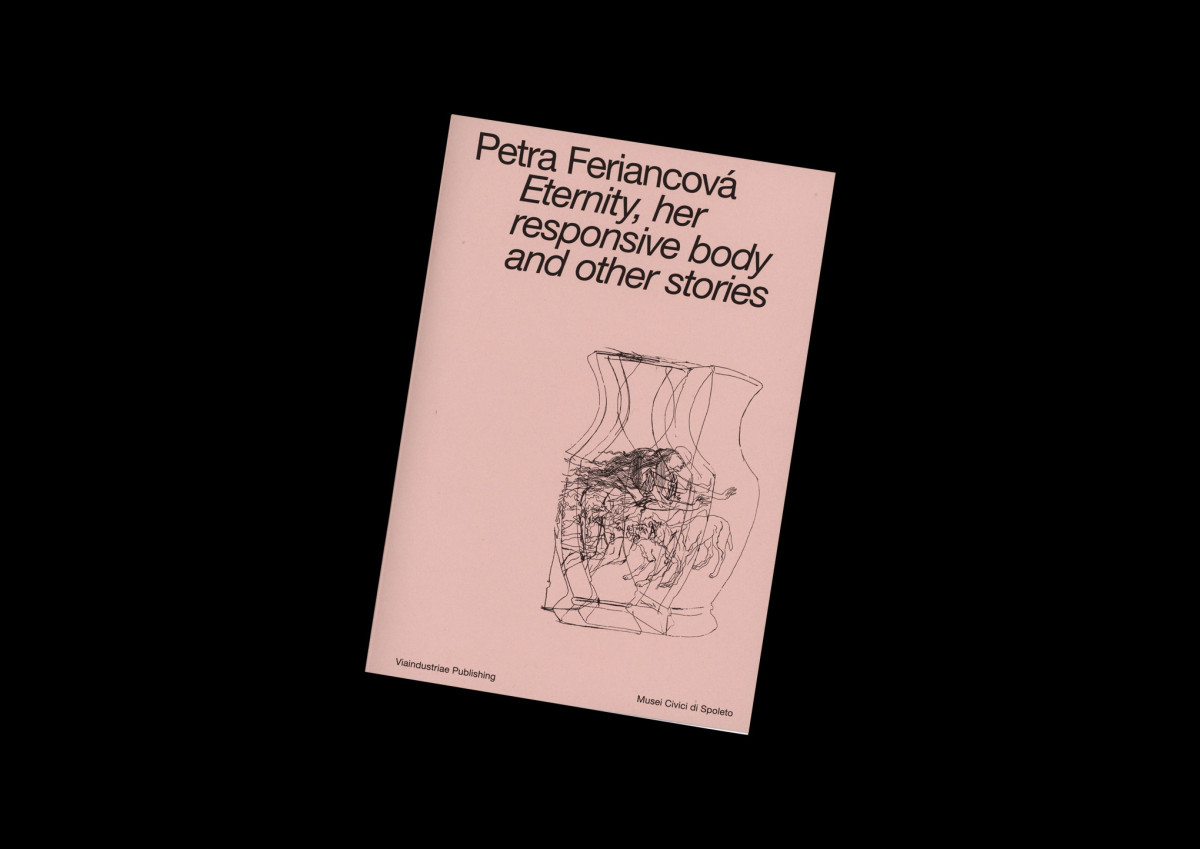

Petra Feriancová
Eternity, her responsive body and other stories
€ 20
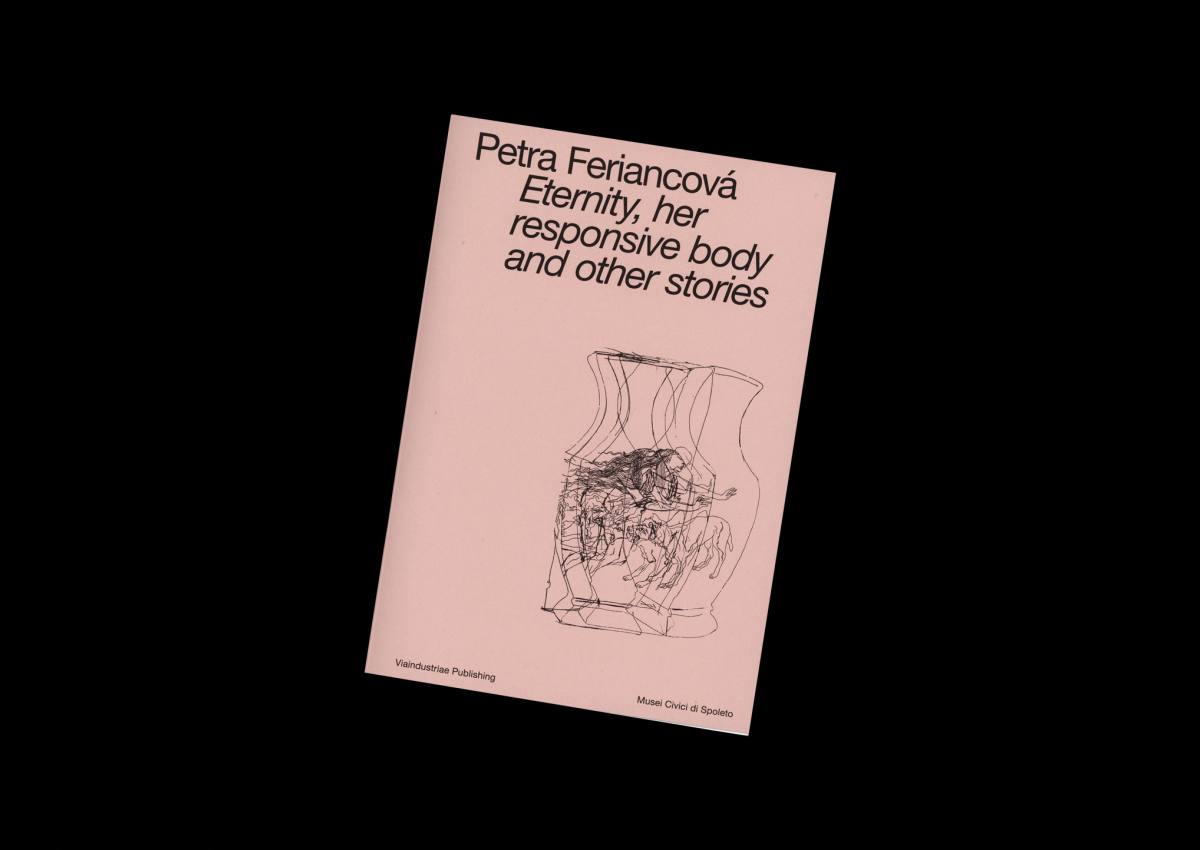

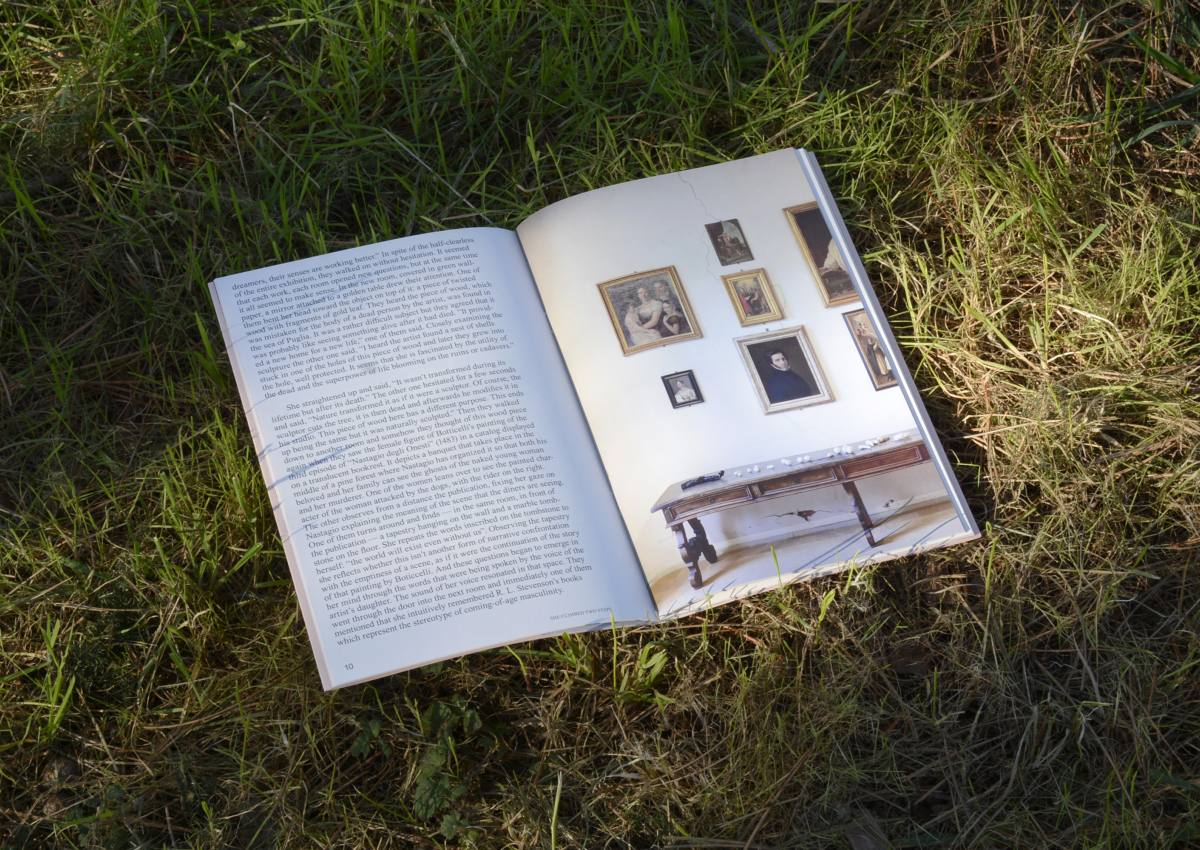

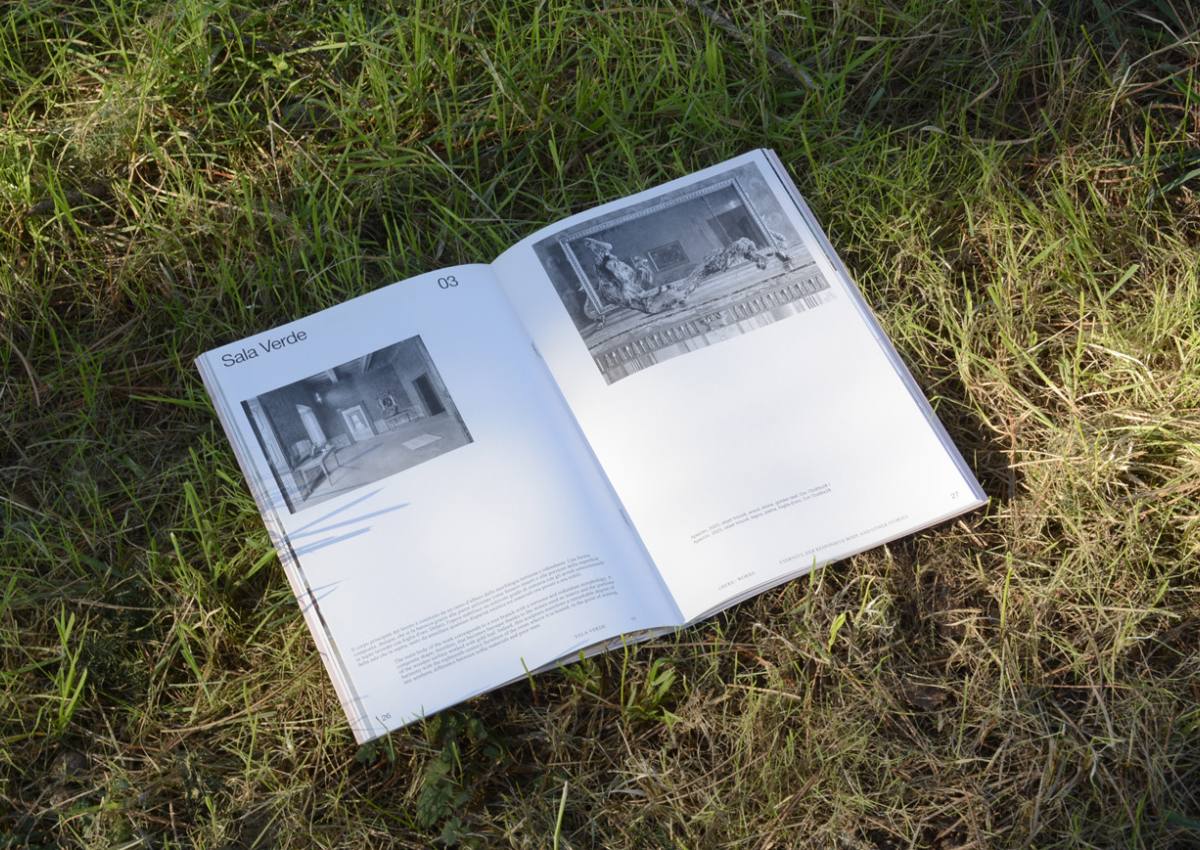

Petra Feriancová
Eternity, her responsive body and other stories
€ 20
In co-edizione con Palazzo Collicola, Spoleto
A cura di Tiago de Abreu Pinto, Davide Silvioli
Supported by Galleria Gilda Lavia, Rome
Slovak Arts Council, Bratislava
52 pp.
19 x 28 cm
stampa a colori e bn
ita/eng
2025
ISBN 979-12-81790-20-9
Category: Catalogues
Eternity, her responsive body and other stories, solo show by Petra Feriancová, hosted in the Noble Floor of Palazzo Collicola, already suggests the narrative nature of the project, because of its title. Here, the artist reinterpreting the spaces and the features of this old dwelling, through a series of interventions characterized by an almost mimetic quality, conceived for this occasion. The exhibition design includes a technically heterogeneous selection of works, embracing sculptures, installations and sound works, in order to make them dialogue, in contrast or in harmony, with the rooms composing the noble residence and the historical artefacts preserved there. According to this approach, works belonging to different periods and languages, not caring about chronological or stylistic hierarchies, coexist together, giving rise to new associations of contents and directions of meaning, perceptible just in backlight, emerging thanks to the contribution given by the artist. The result is a unified narrative, dealing, timed along the rooms of the flat, with topics such as metamorphosis, the notion of memory, time, the concept of interpretation and that one of archive, always been the focus of the artistic practice by Feriancová.
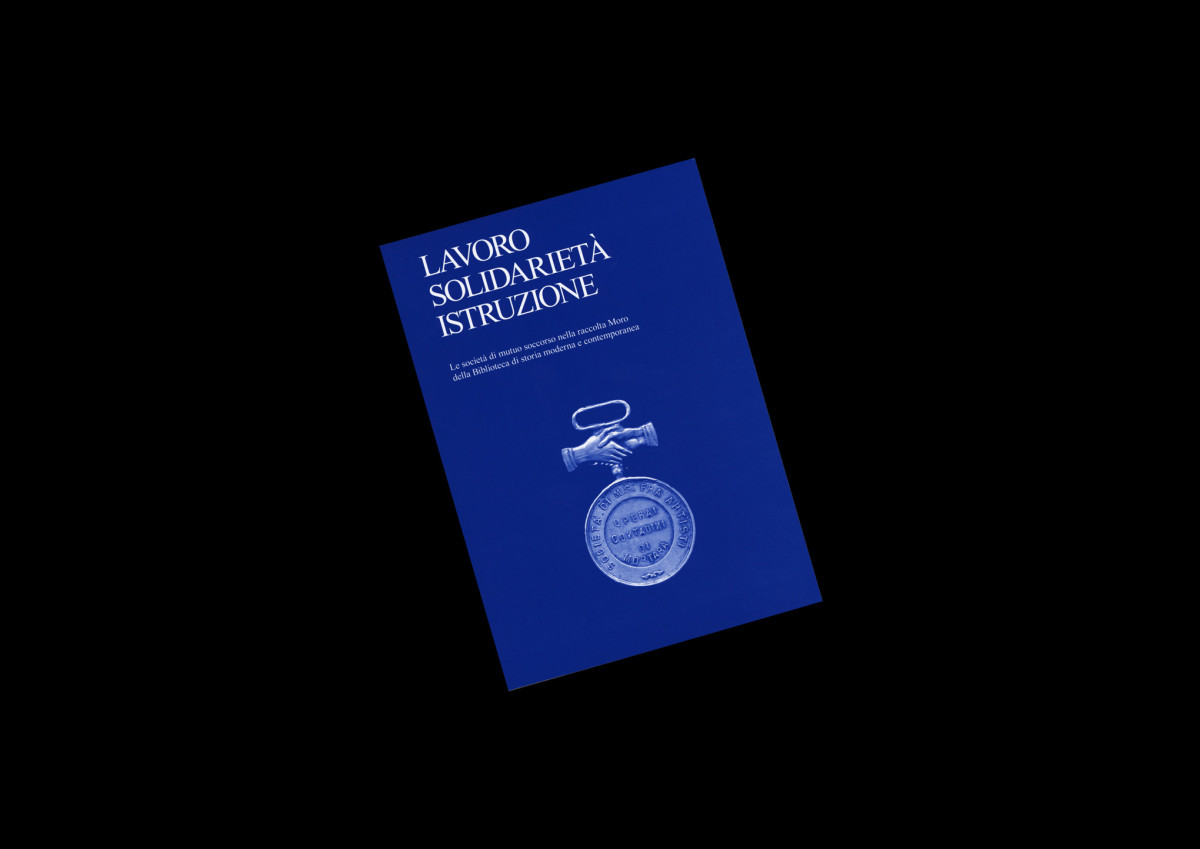

Vv. Aa.
Lavoro, solidarietà, istruzione
Out of stock
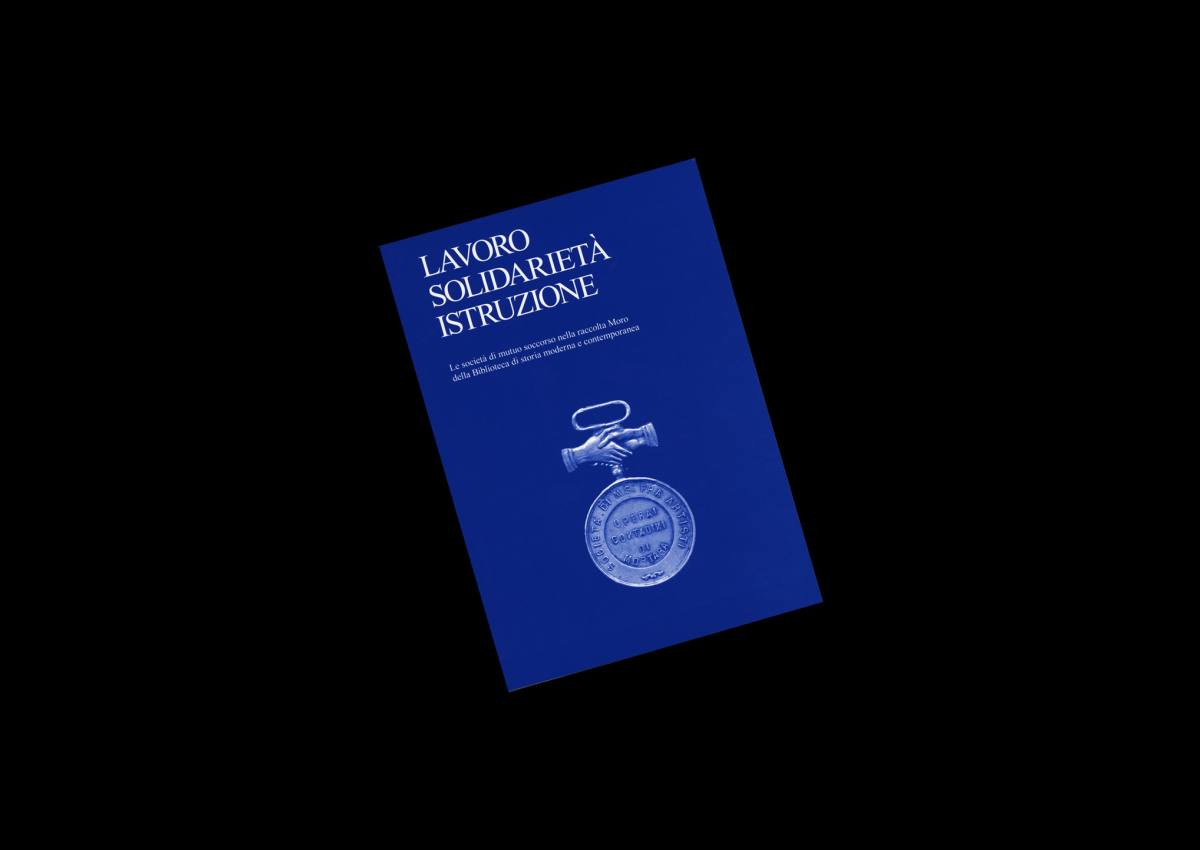

Vv. Aa.
Lavoro, solidarietà, istruzione. The mutual aid society in the Moro collection at the Library of Modern and Contemporary History.
Out of stock
A cura di Caterina Borelli, Rosanna De Longis
In collaborazione con Maura Giacobbe Borelli
208 pp.
15 X 21 cm
bn print
ita
2024
ISBN 979-12-81790-25-4
Category: Catalogues
The collection on mutual aid societies and workers' associations created by Giovanna Moro (1920-2012) testifies to the fight for decent work and the right to education for all. The birth of these societies was an important milestone in the history of labor movements and a sign of awareness of the power of collective action. The collector's decision to donate the collection to a public institution that ensures its wide accessibility has enriched the existing documentation at the Library of Modern and Contemporary History in Rome.
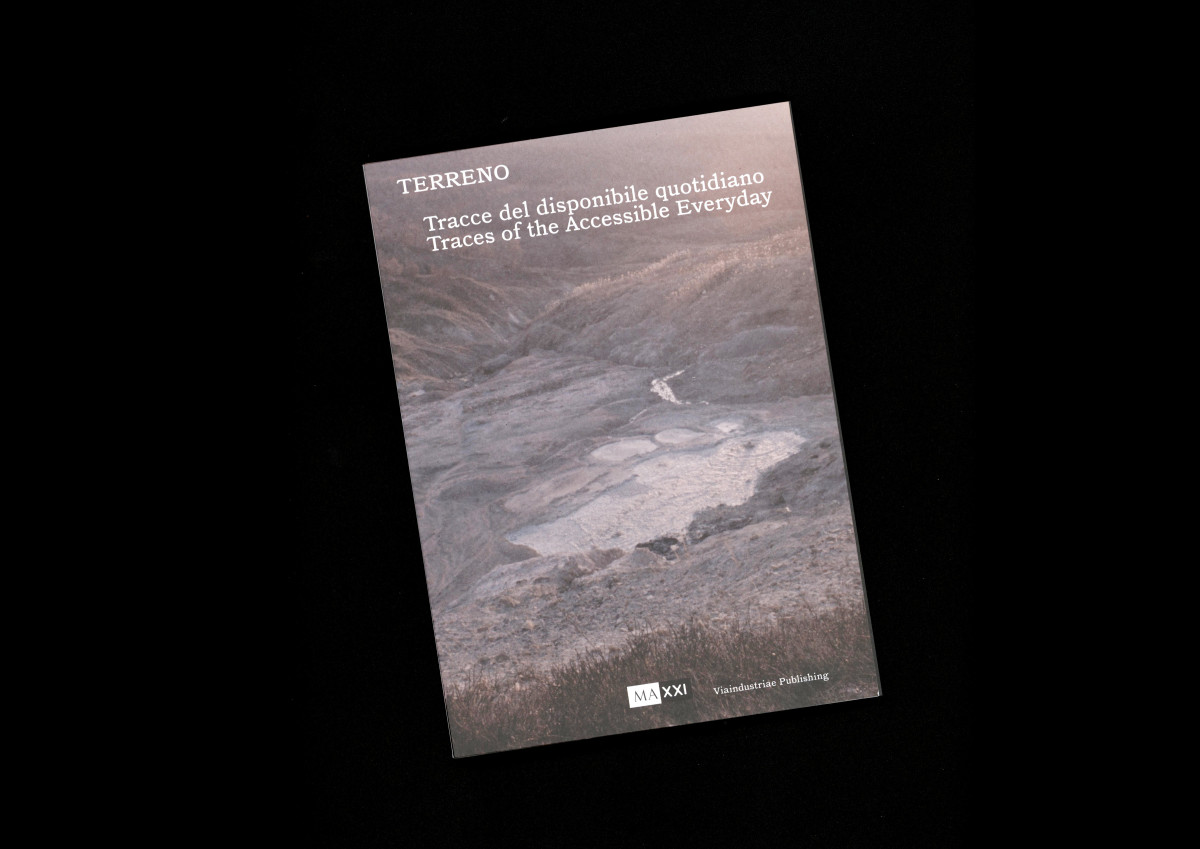
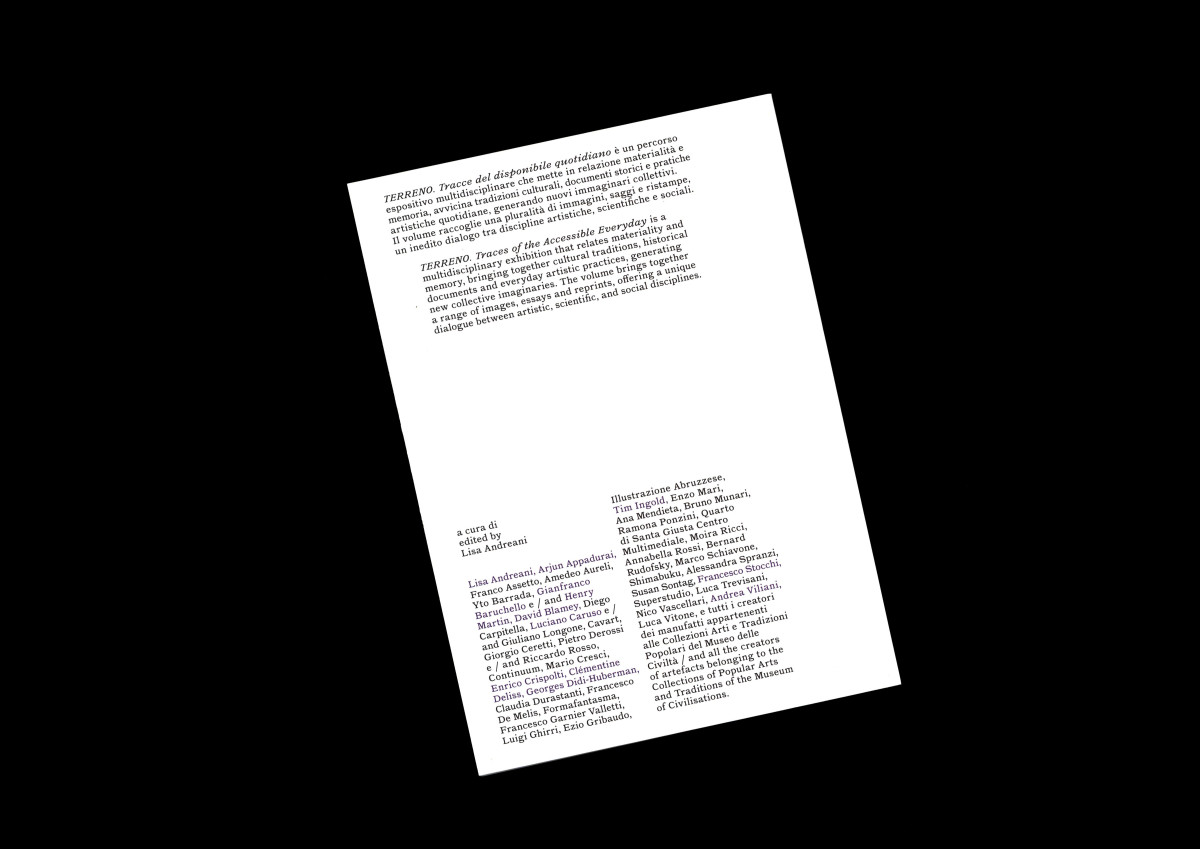
Vv. Aa.
Terreno. Traces of the Accessible Everyday
€ 18

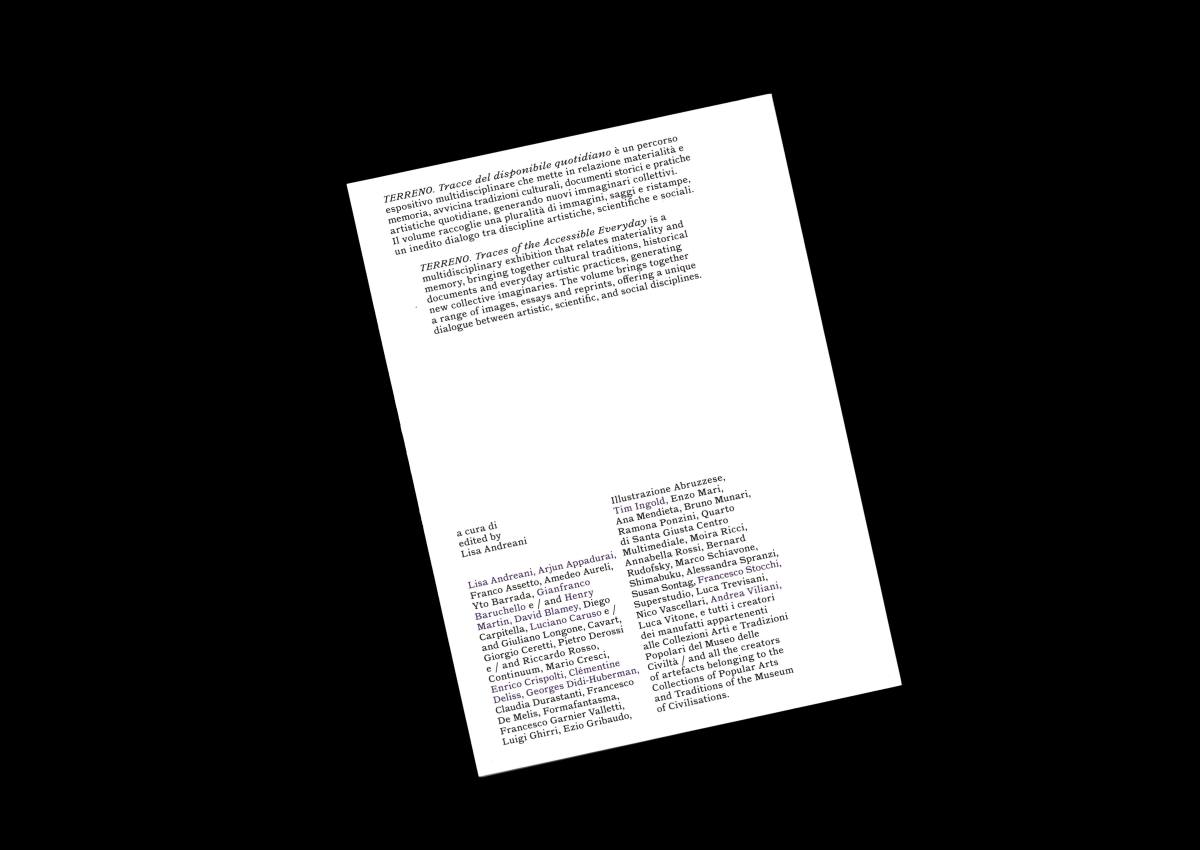

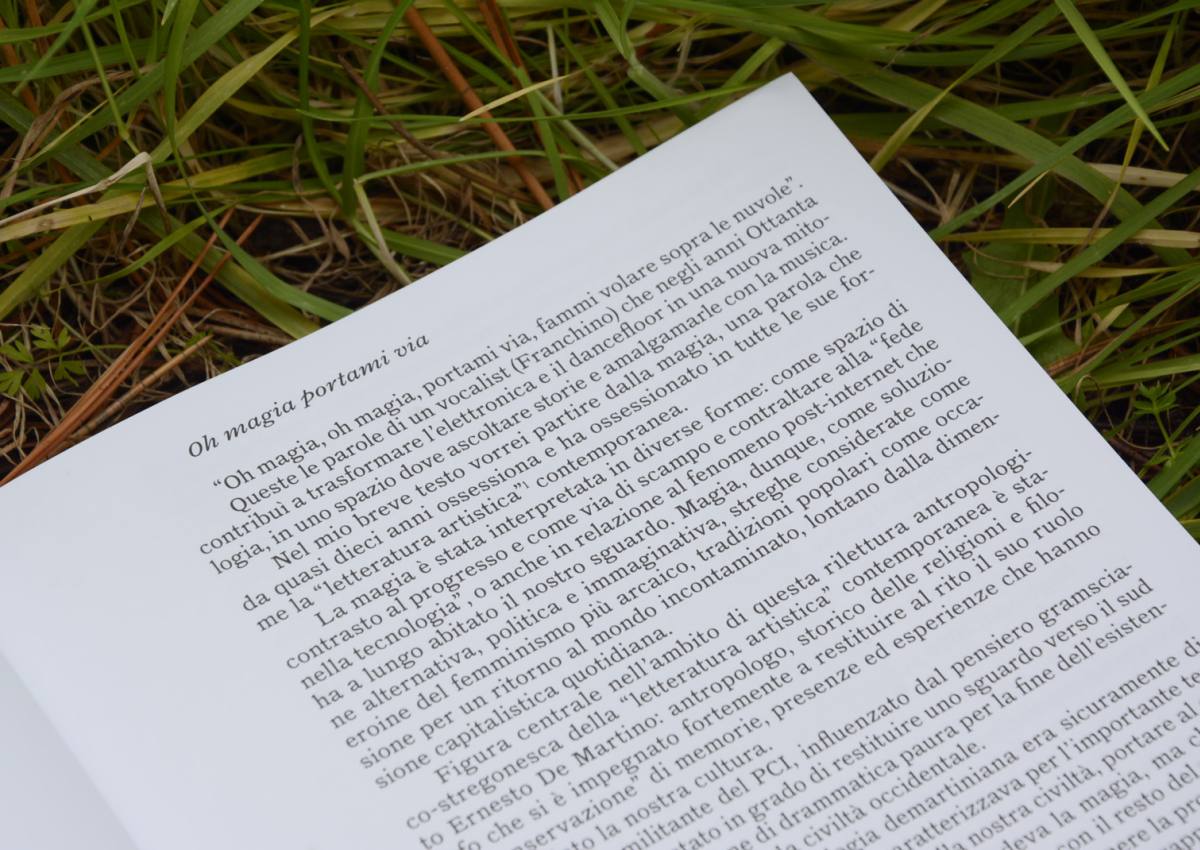
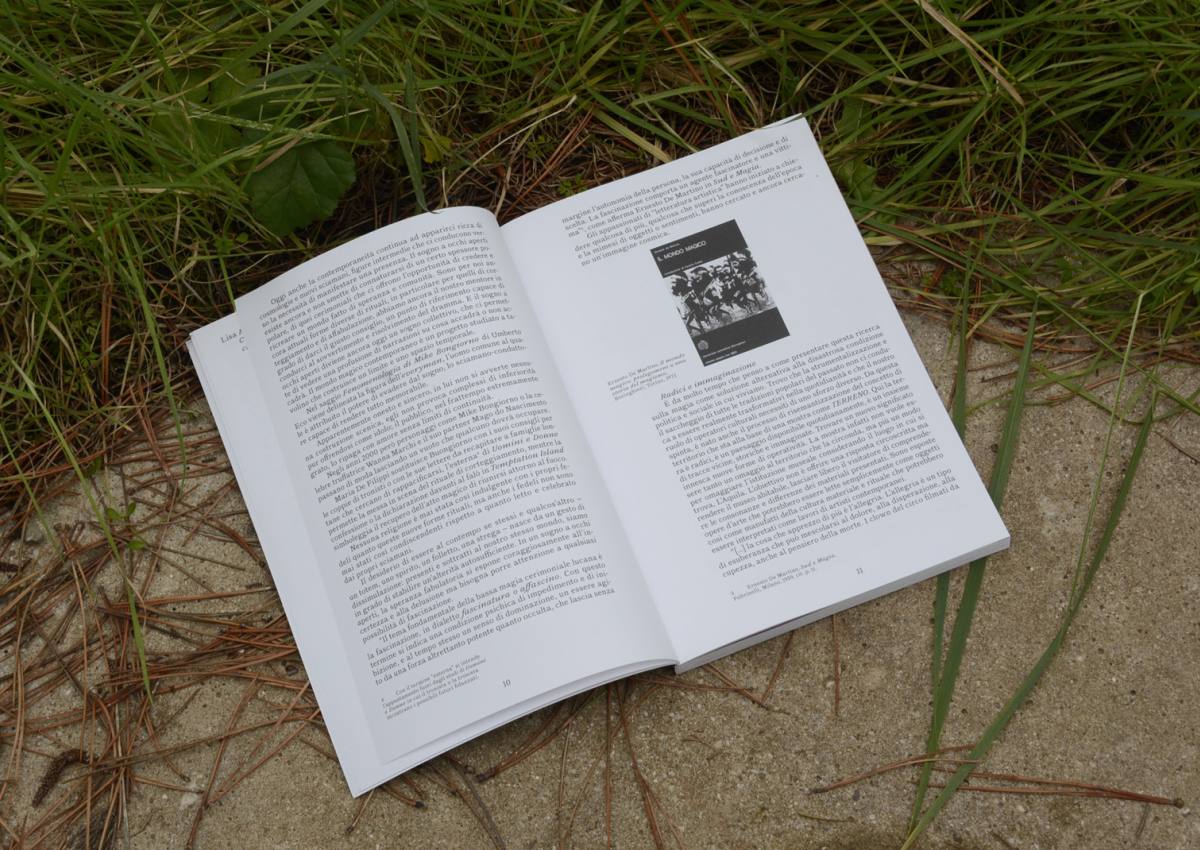

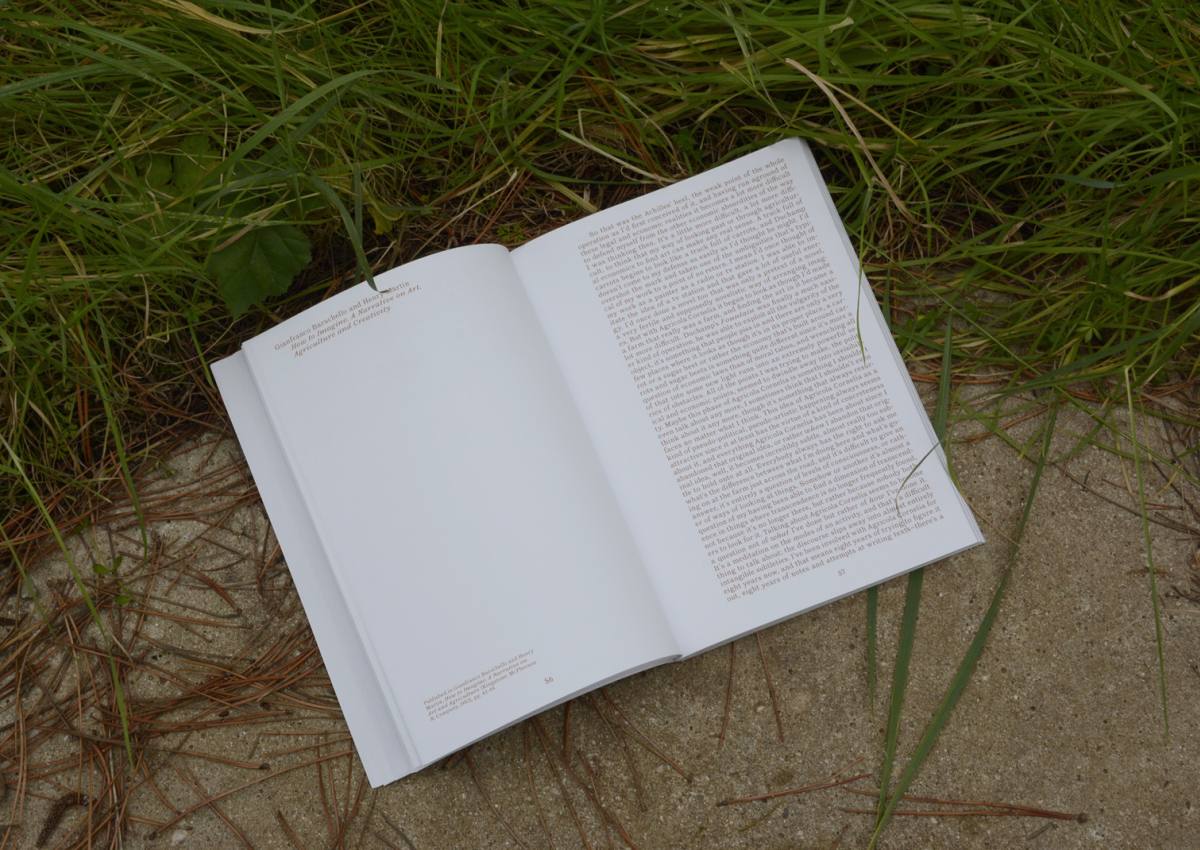

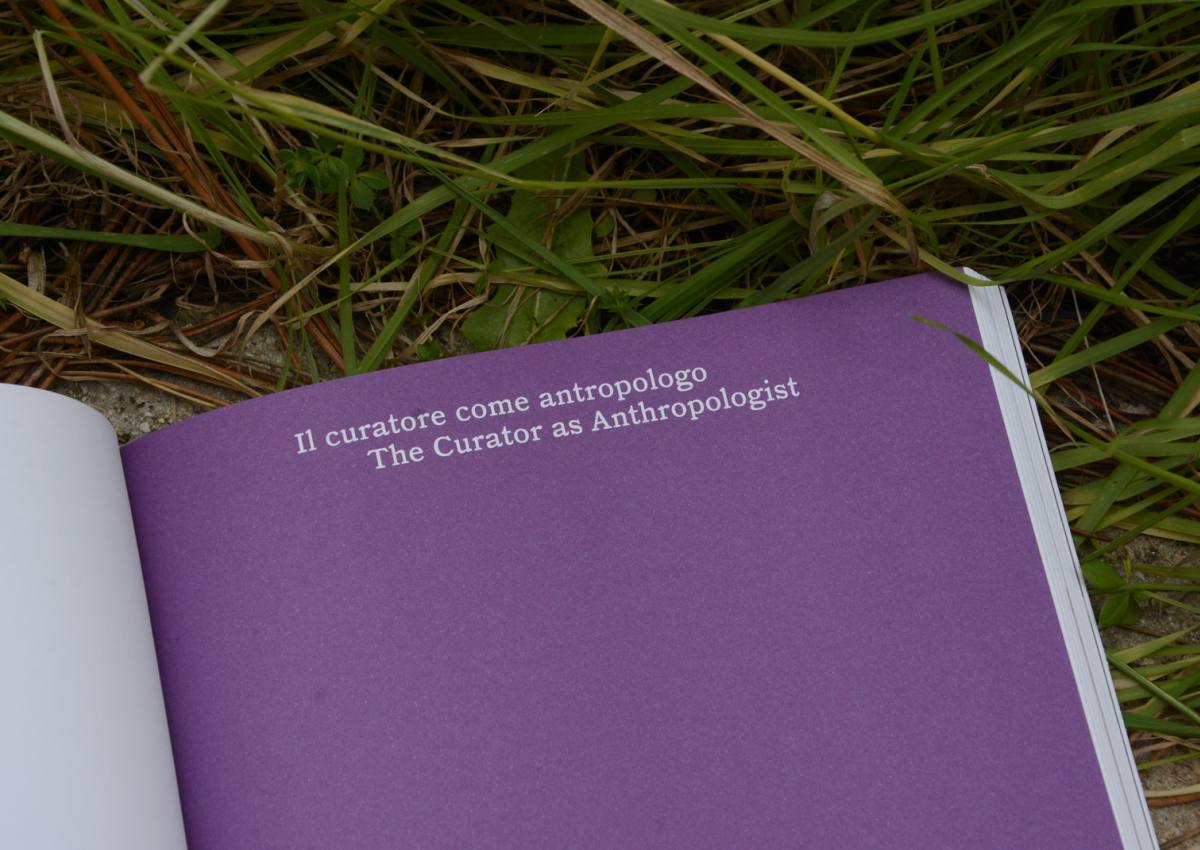

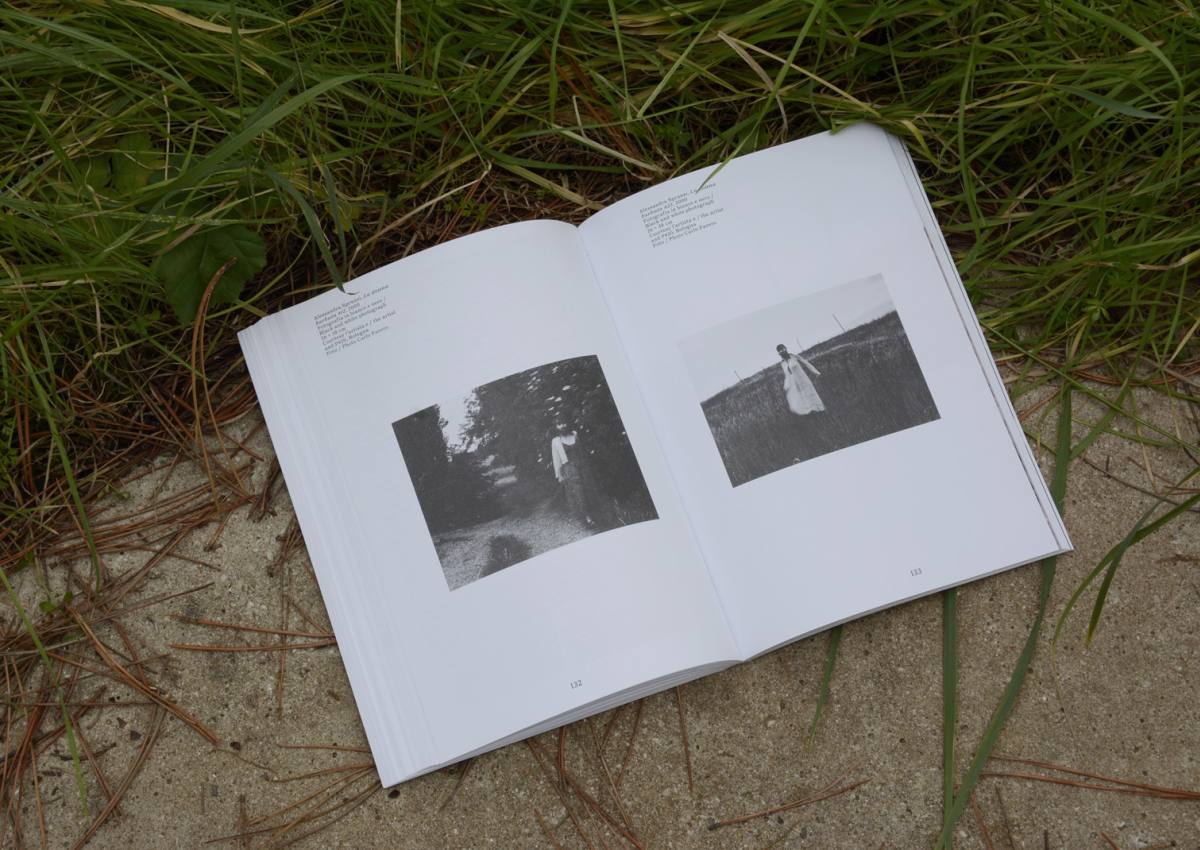
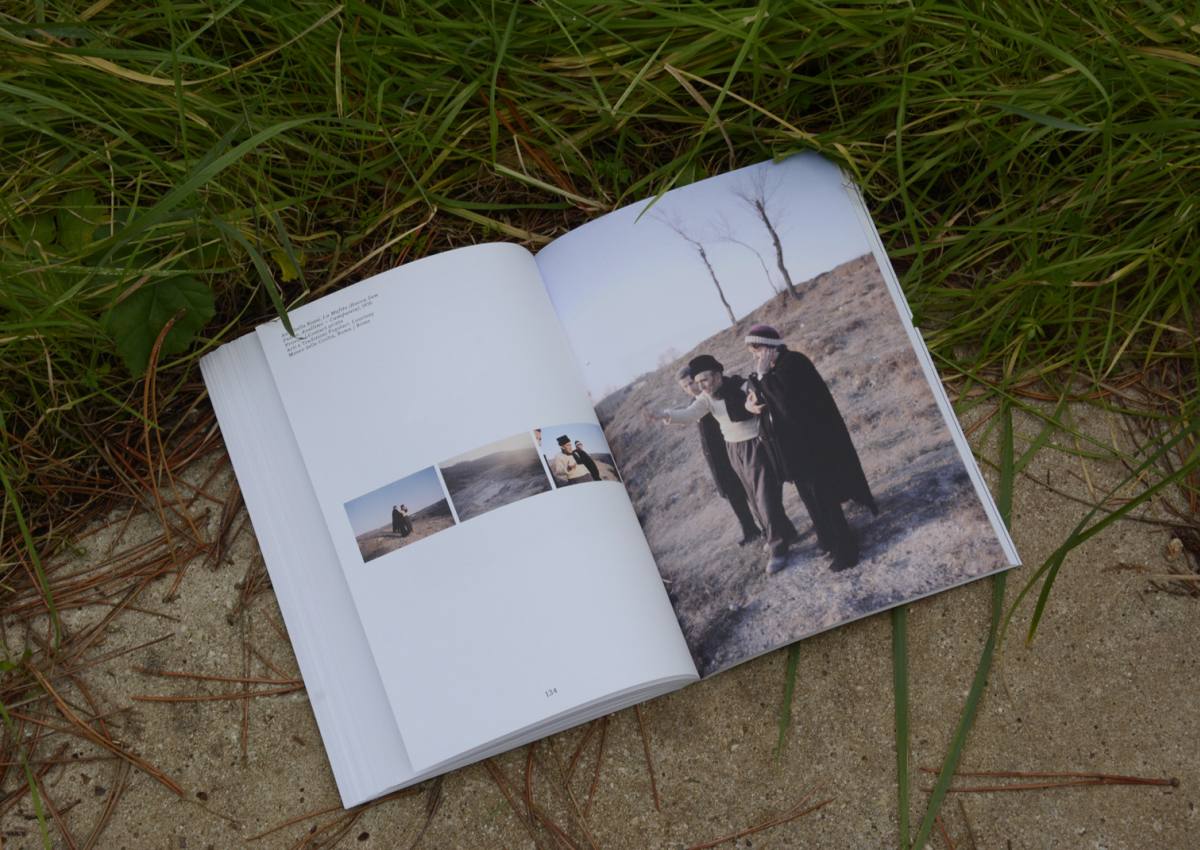

Vv. Aa.
Terreno. Traces of the Accessible Everyday
€ 18
Edited by Lisa Andreani
Texts by Lisa Andreani, Arjun Appadurai, Gianfranco Baruchello e Henry Martin, David Blamey, Luciano Caruso, Enrico Crispolti, Clémentine Deliss, Georges Didi-Huberman, Tim Ingold, Francesco Stocchi, Andrea Viliani.
Published in the occasion of the exhibition
TERRENO. Traces of the Accessible Everyday
L’Aquila, MAXXI L’Aquila
7 December 2024 - 4 May 2025
208 pp.
17 x 24 cm
Color and bw printing
ita/eng
2024
ISBN 979-12-81790-24-7
Category: Catalogues Territorial research
TERRENO. Tracce del disponibile quotidiano is a multidisciplinary exhibition that relates materiality and memory, bringing together cultural traditions, historical documents and everyday artistic practices, generating new collective imaginaries. The volume brings together a range of images, essays and reprints, offering a unique dialogue between artistic, scientific, and social disciplines. Inspired by Gianni Celati “accessible everyday”, the exhibition takes the visitor on a journey dedicated to the scenes, landscapes, and gestures from the everyday world that often go unnoticed and are rediscovered, grasping their value and revealing new and possible meanings. The rooms of the museum are filled with works of art from the MAXXI Collections, artefacts and photographic documents from the Museum of Civilisations in Rome, editorial materials, design and architectural projects, and a new sound production. This is how fluid and changeable stories and tales are born, joining ordinariness and tradition, historical documentation and invention, in a strong bond with the territory and its artistic and creative community. With: Arjun Appadurai, Franco Assetto, Amedeo Aureli, Yto Barrada, Gianfranco Baruchello and Henry Martin, David Blamey, Diego Carpitella, Luciano Caruso and Giuliano Longone, Cavart, Giorgio Ceretti, Pietro Derossi e Riccardo Rosso, Continuum, Mario Cresci, Enrico Crispolti, Clémentine Deliss, Georges Didi-Huberman, Claudia Durastanti, Francesco De Melis, Formafantasma, Francesco Garnier Valletti, Luigi Ghirri, Ezio Gribaudo, Illustrazione Abruzzese, Tim Ingold, Enzo Mari, Ana Mendieta, Bruno Munari, Ramona Ponzini, Quarto di Santa Giusta Centro Multimediale, Moira Ricci, Annabella Rossi, Bernard Rudofsky, Marco Schiavone, Shimabuku, Alessandra Spranzi, Susan Sontag, Superstudio, Luca Trevisani, Nico Vascellari, Andrea Viliani, Luca Vitone and all the creators of artefacts belonging to the Collections of Popular Arts and Traditions of the Museum of Civilisations.
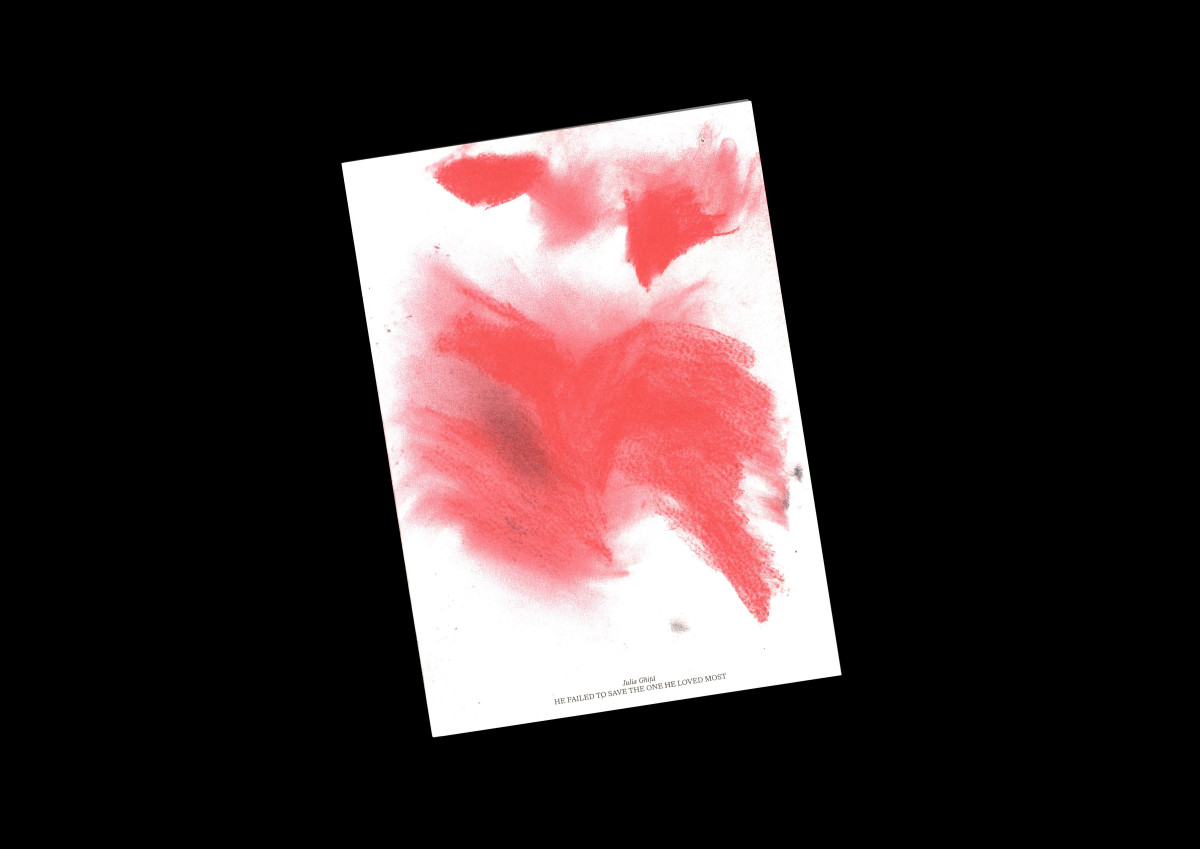
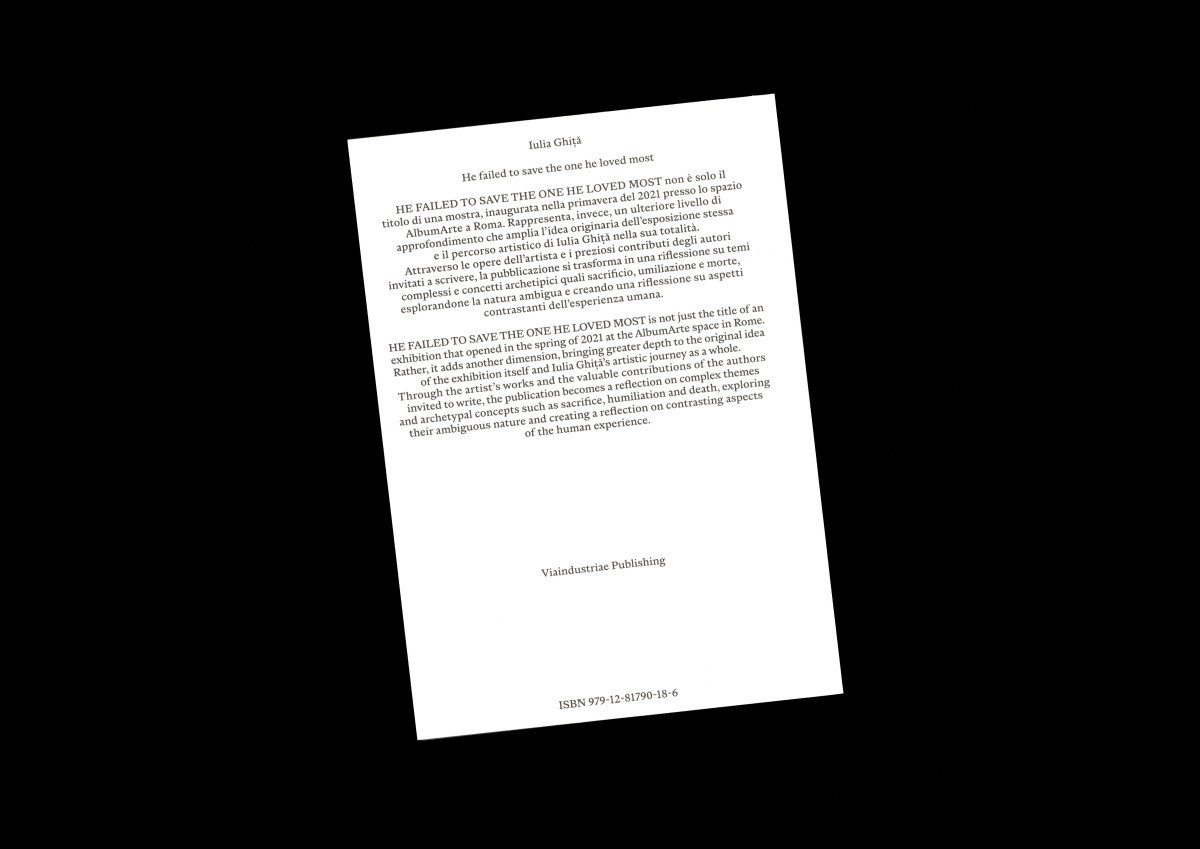
Iulia Ghiță
He Failed to Save The One he Loved Most
€ 20
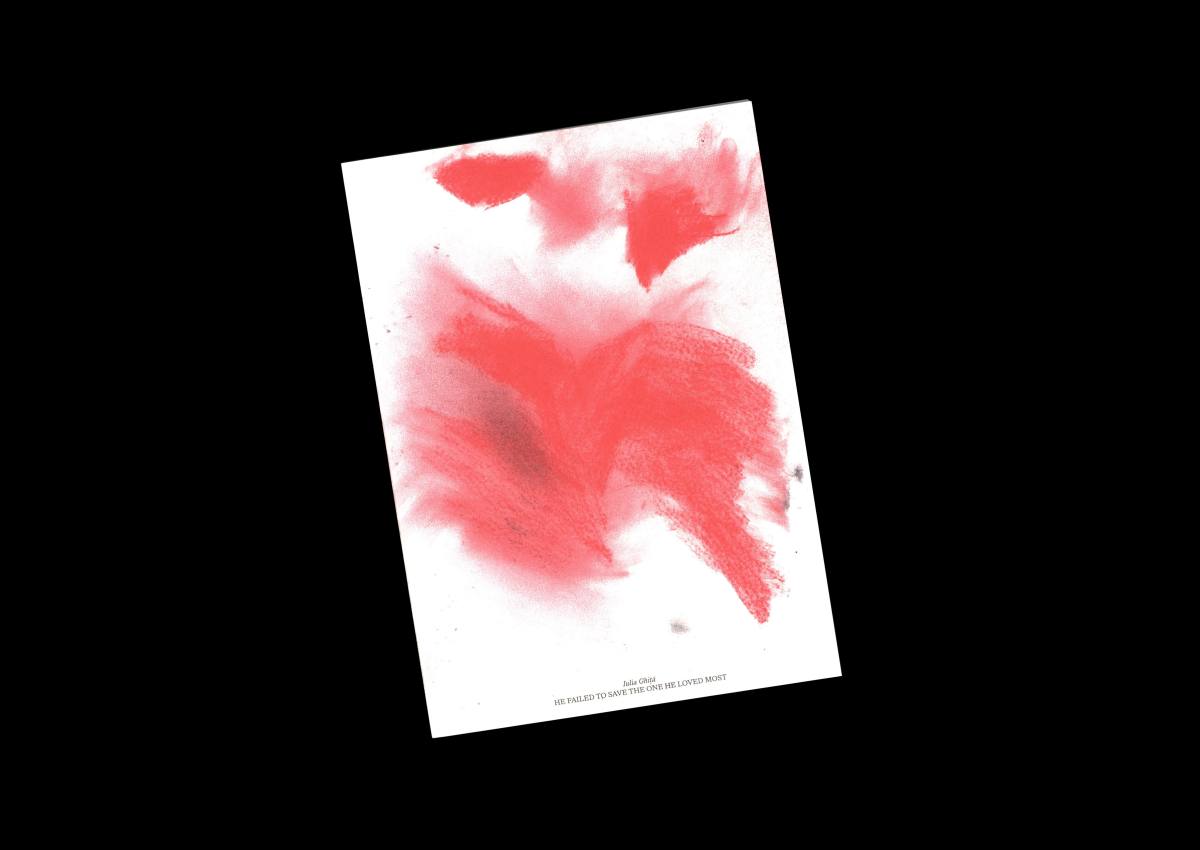
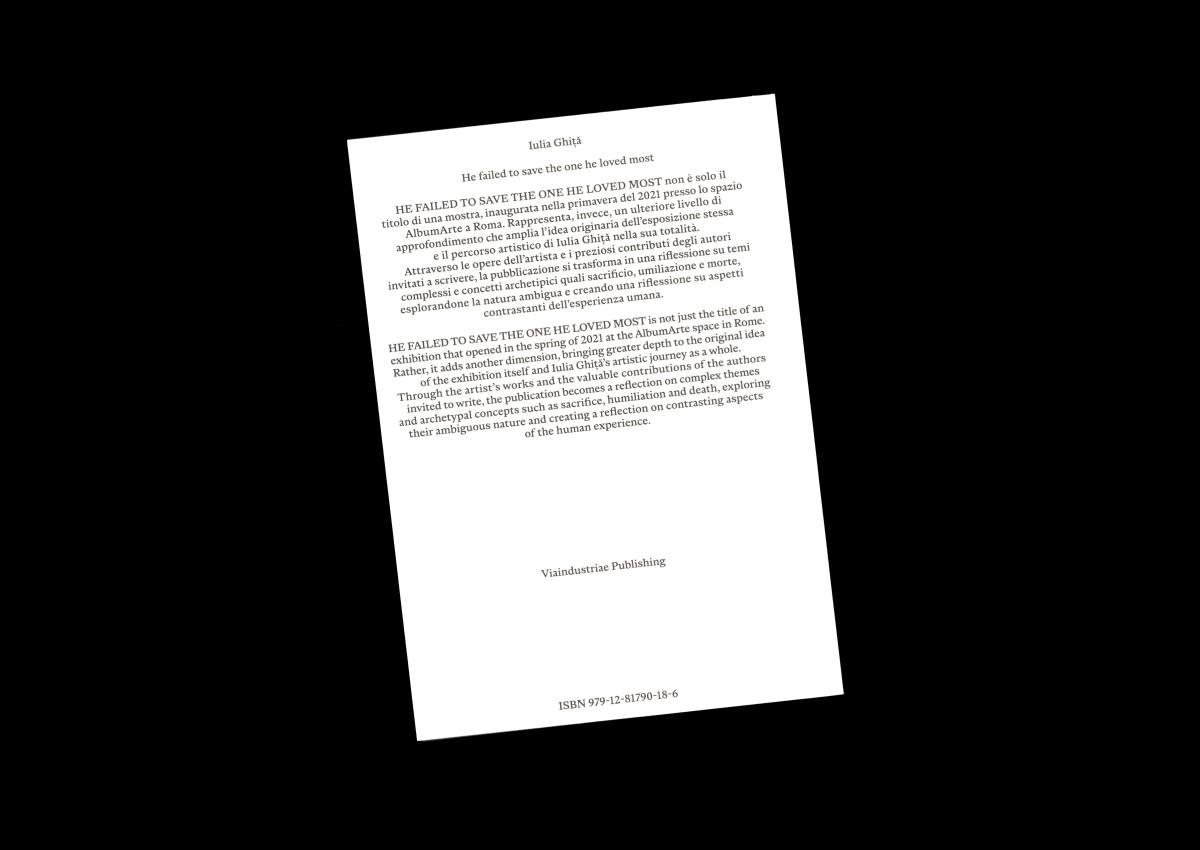
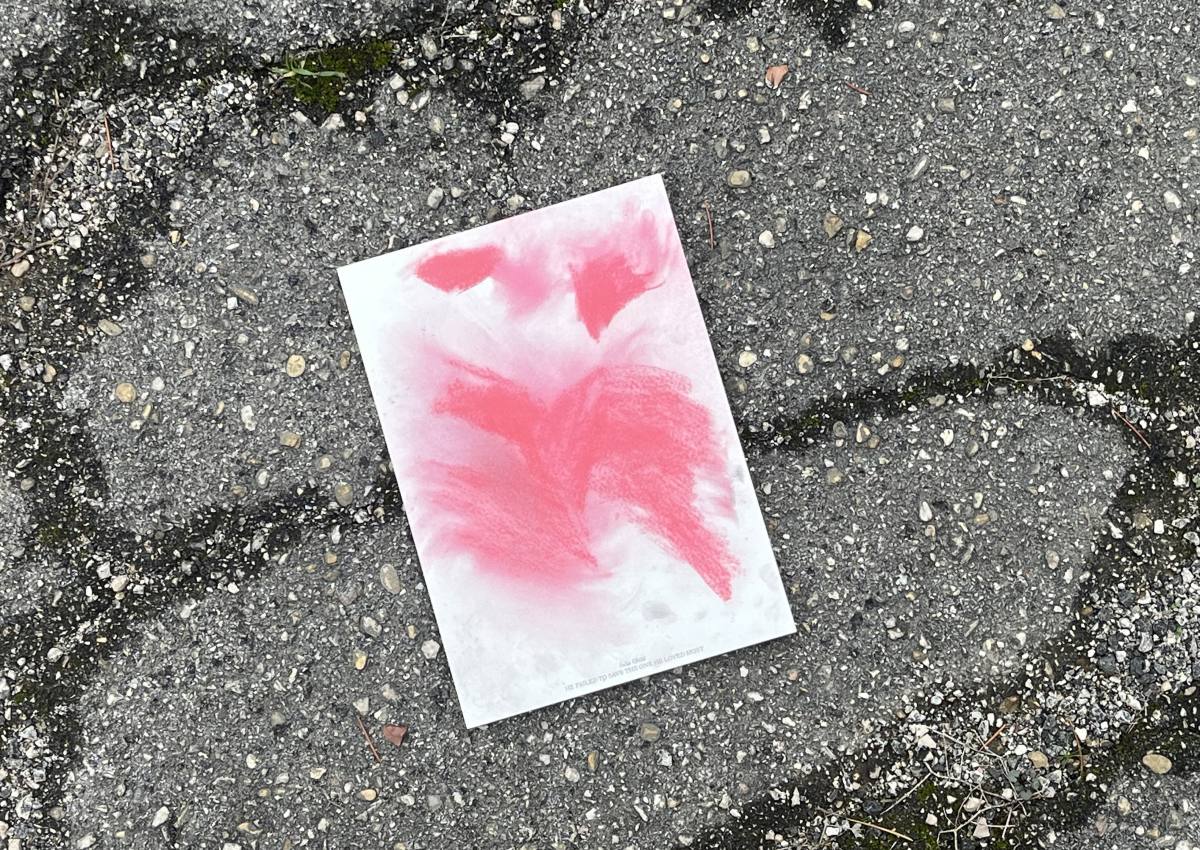
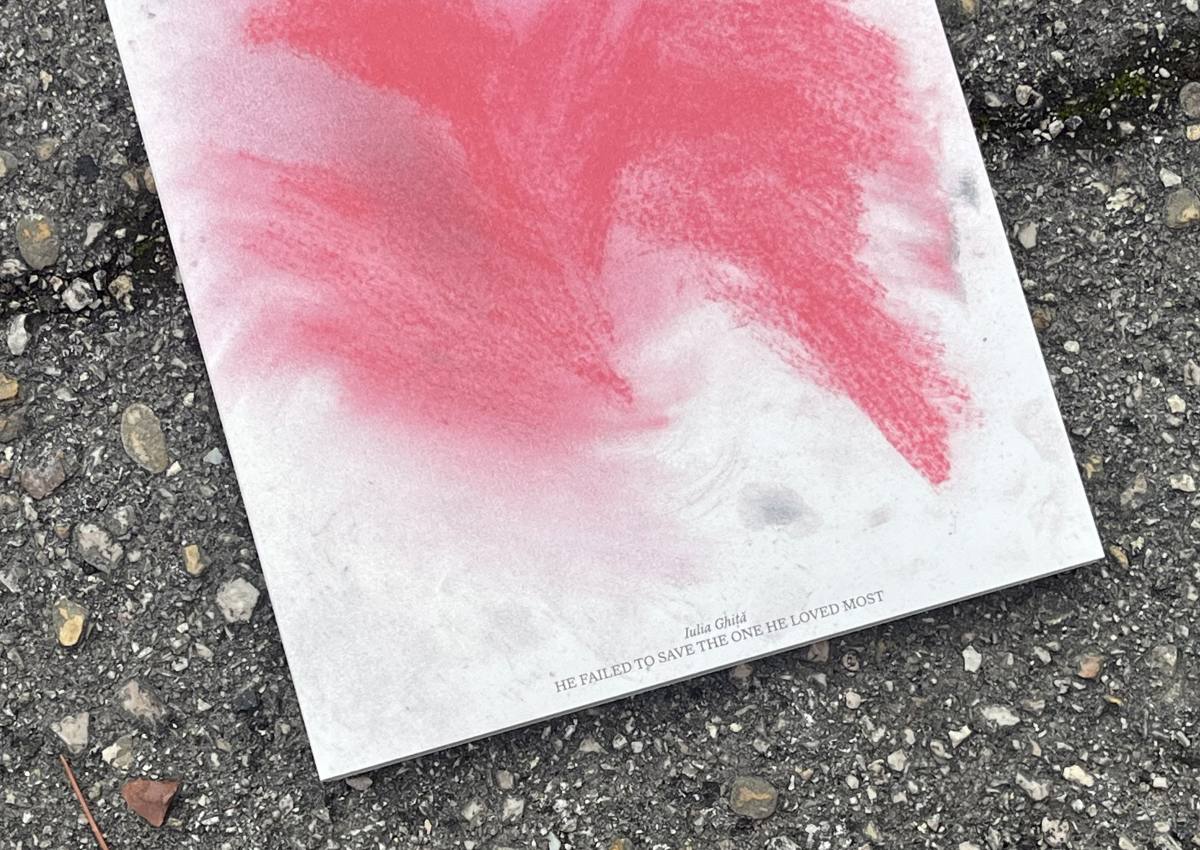

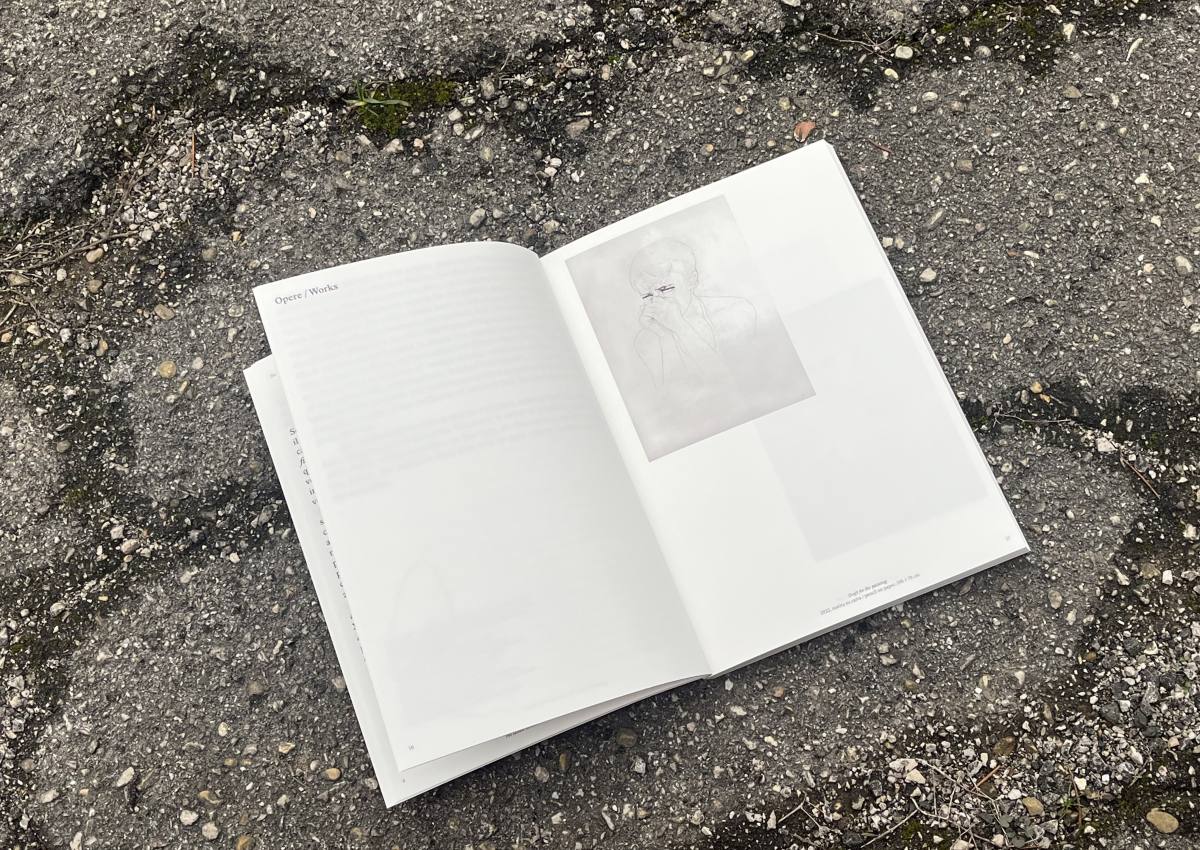
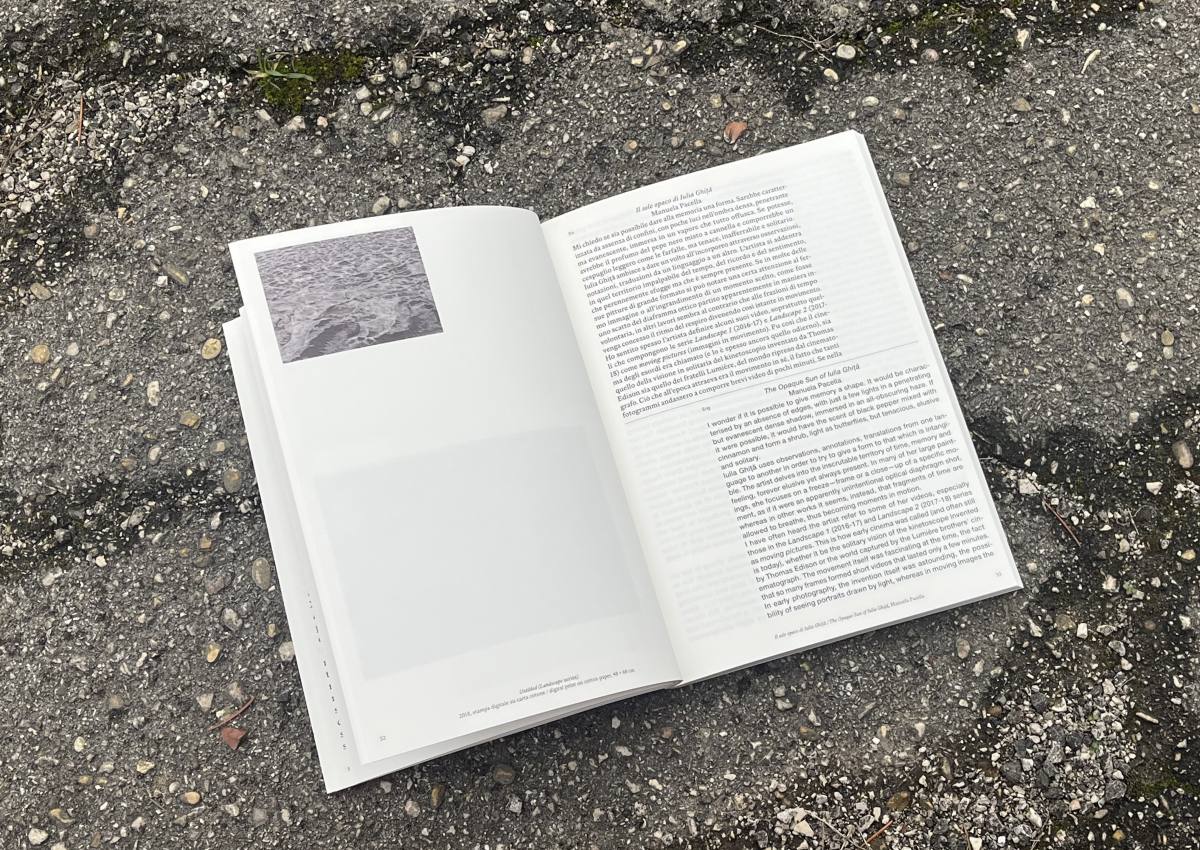
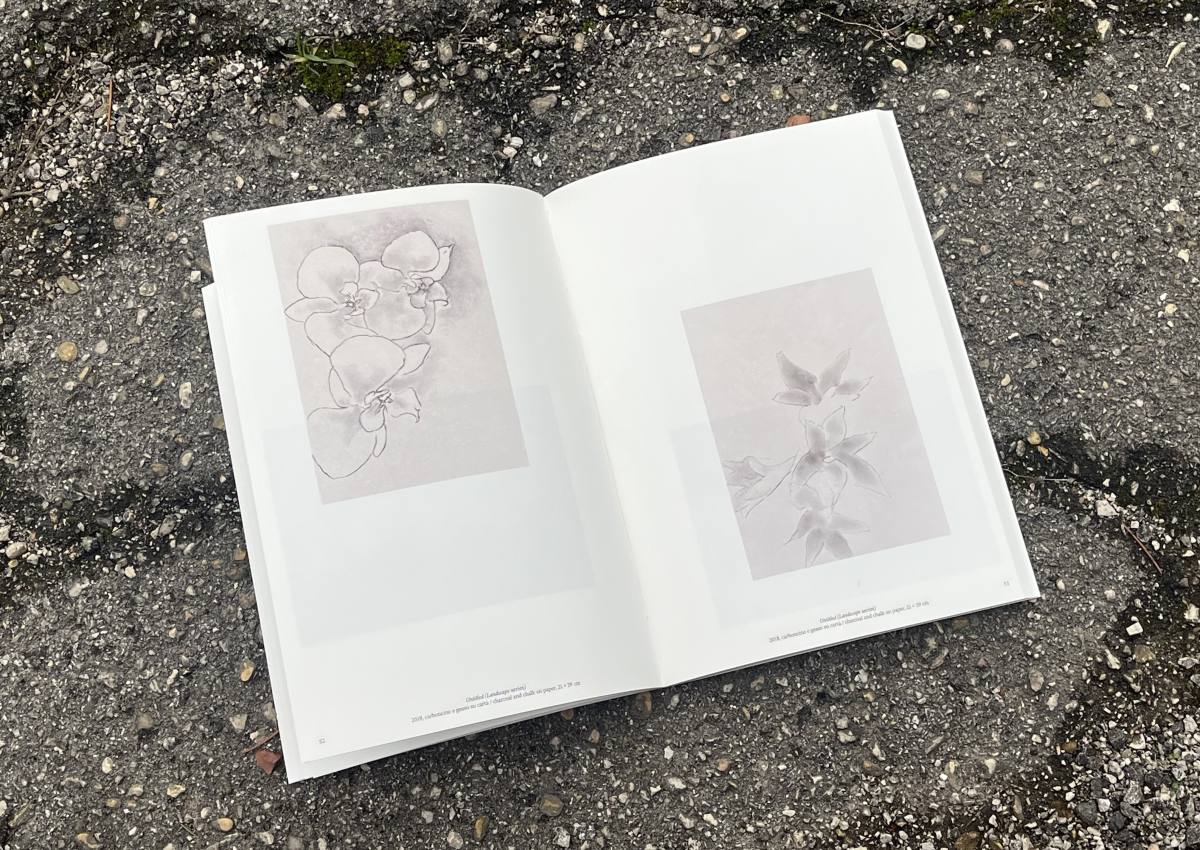

Iulia Ghiță
He Failed to Save The One he Loved Most
€ 20
Edited by Marta Silvi
Texts by Giuliana Benassi, Cecilia Canziani, Cecilia Casorati, Silvano Manganaro, Manuela Pacella, Claudio Libero Pisano, Marta Silvi, Cristian Stănescu.
Support for this publication has been provided by a grant from the Romanian Cultural Institute’s Publishing Romania program
128 pp.
17 x 24 cm
Color and bw printing
ita/eng
2024
ISBN 979-12-81790-18-6
Category: Catalogues
He Failed to Save The One he Loved Most is not just the title of an exhibition that opened in the spring of 2021 at the Albumarte space in Rome. Rather, it adds another dimension, bringing greater depth to the original idea of the exhibition itself and Iulia Ghiță's artistic journey as a whole. Through the artist's works and the valuable contributions of the authors invited to write, the publication becomes a reflection on complex themes and archetypal concepts such as sacrifice, humiliation and death, exploring their ambiguous nature and creating a reflection on contrasting aspects of the human experience.
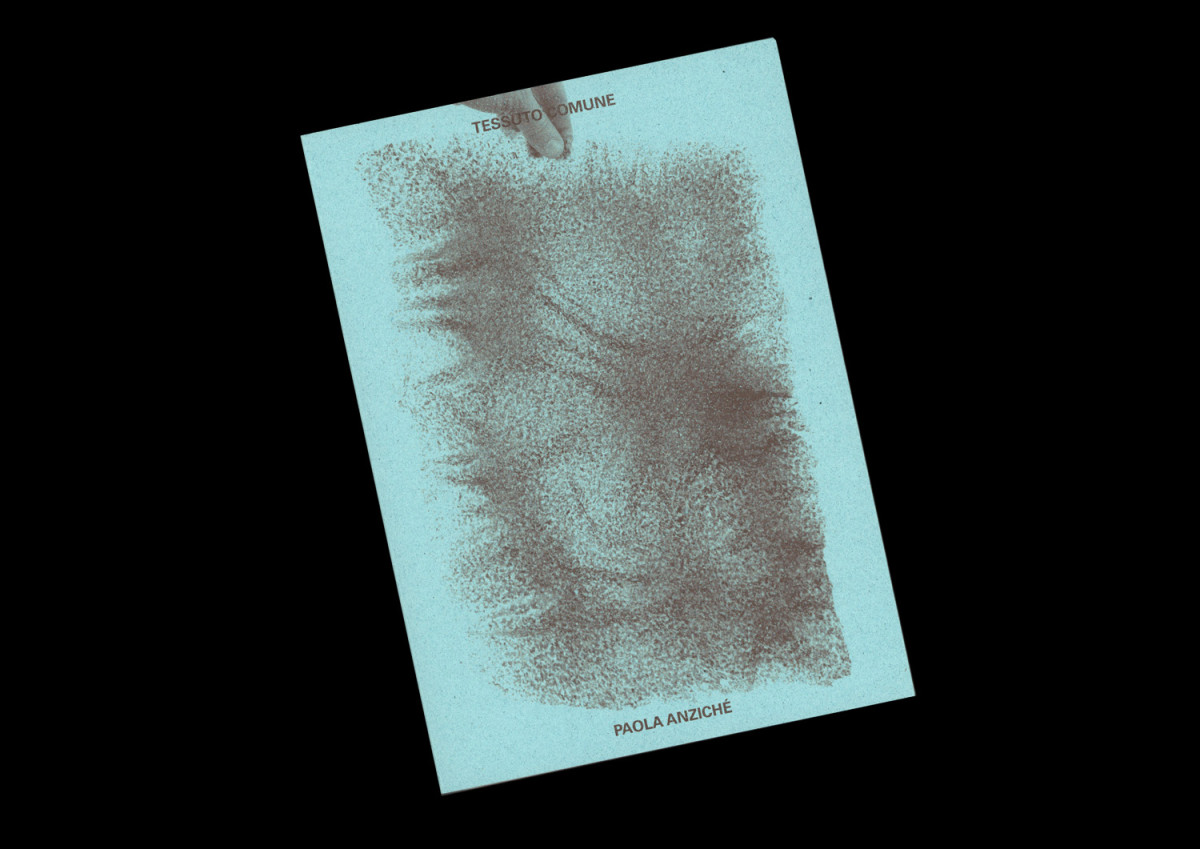
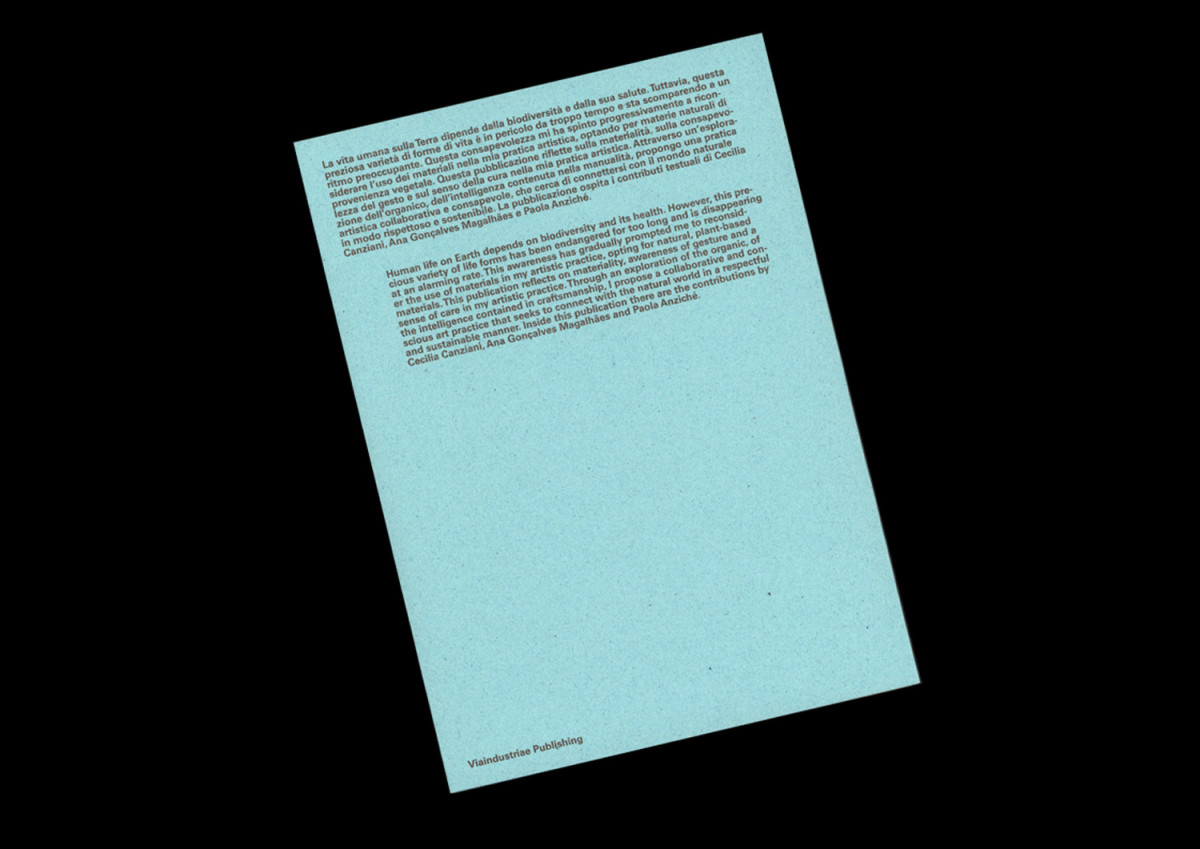
Paola Anziché
Common Threads
€ 13
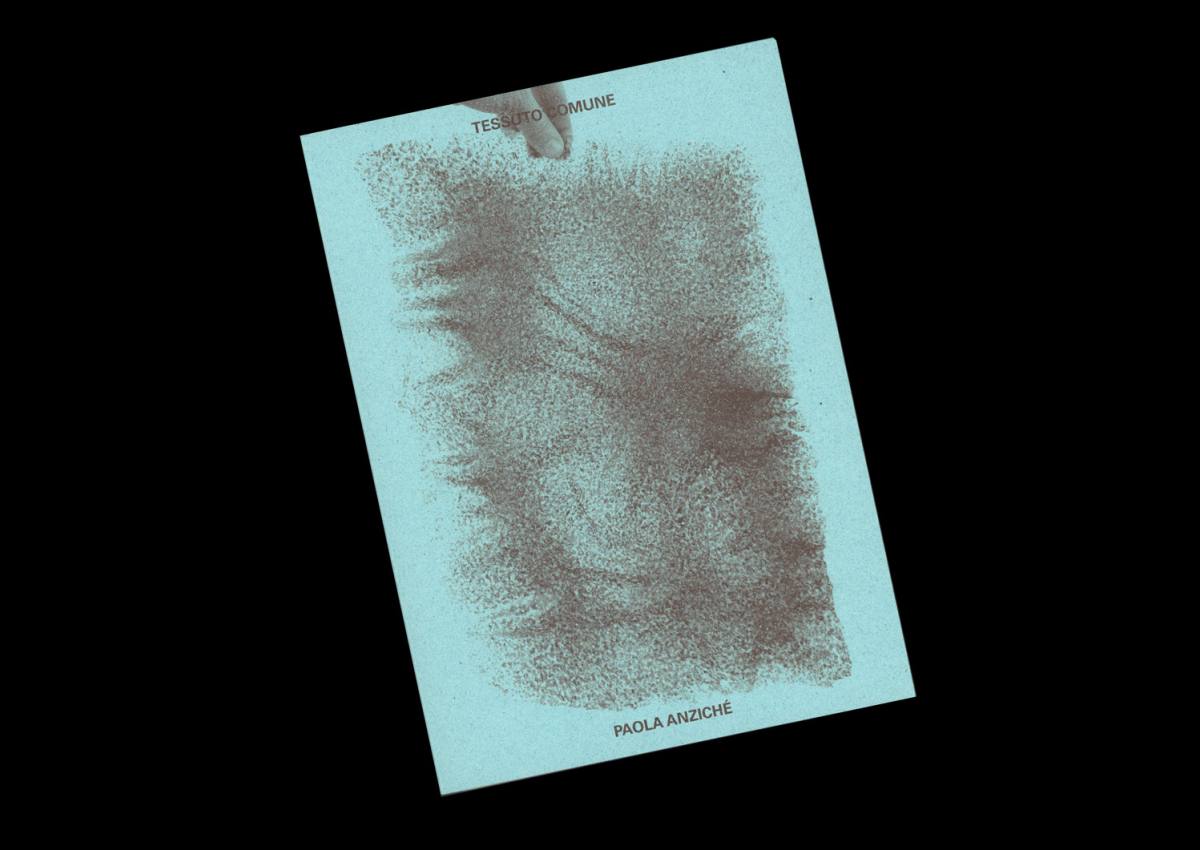
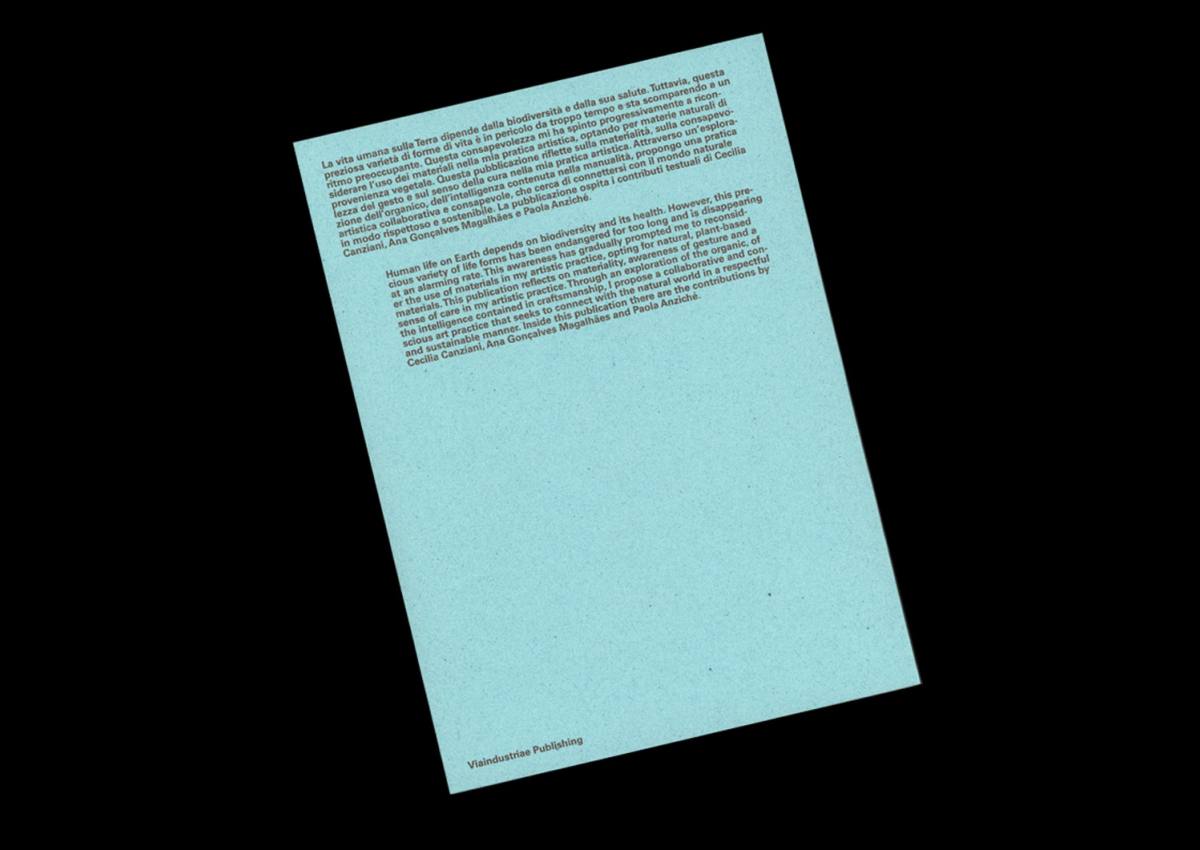
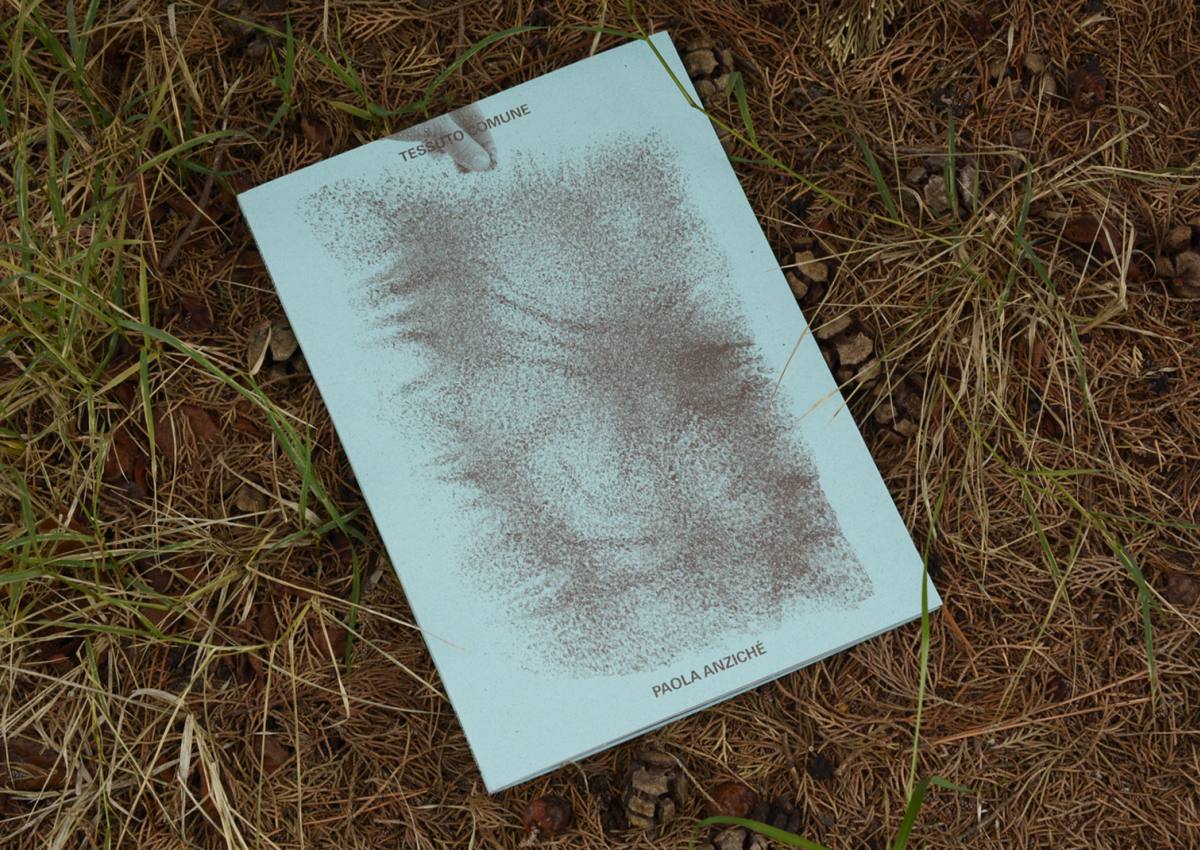
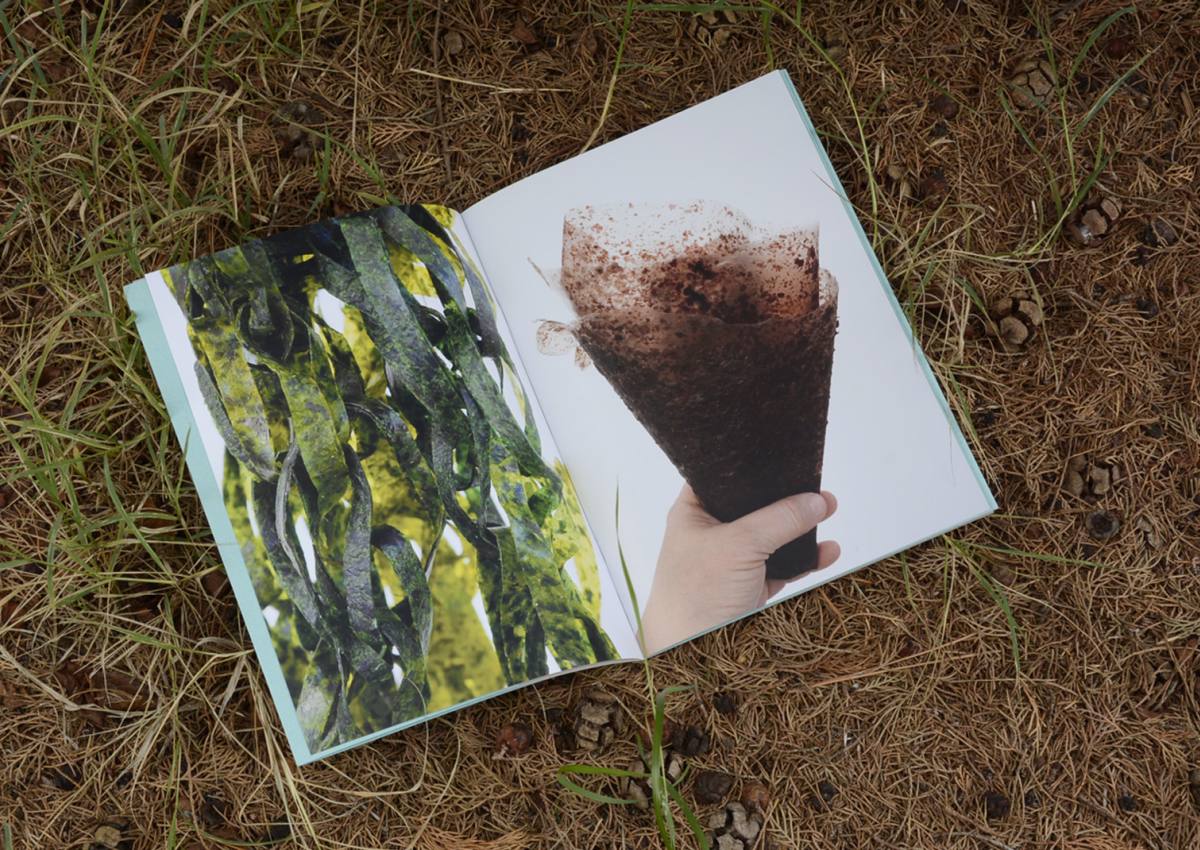
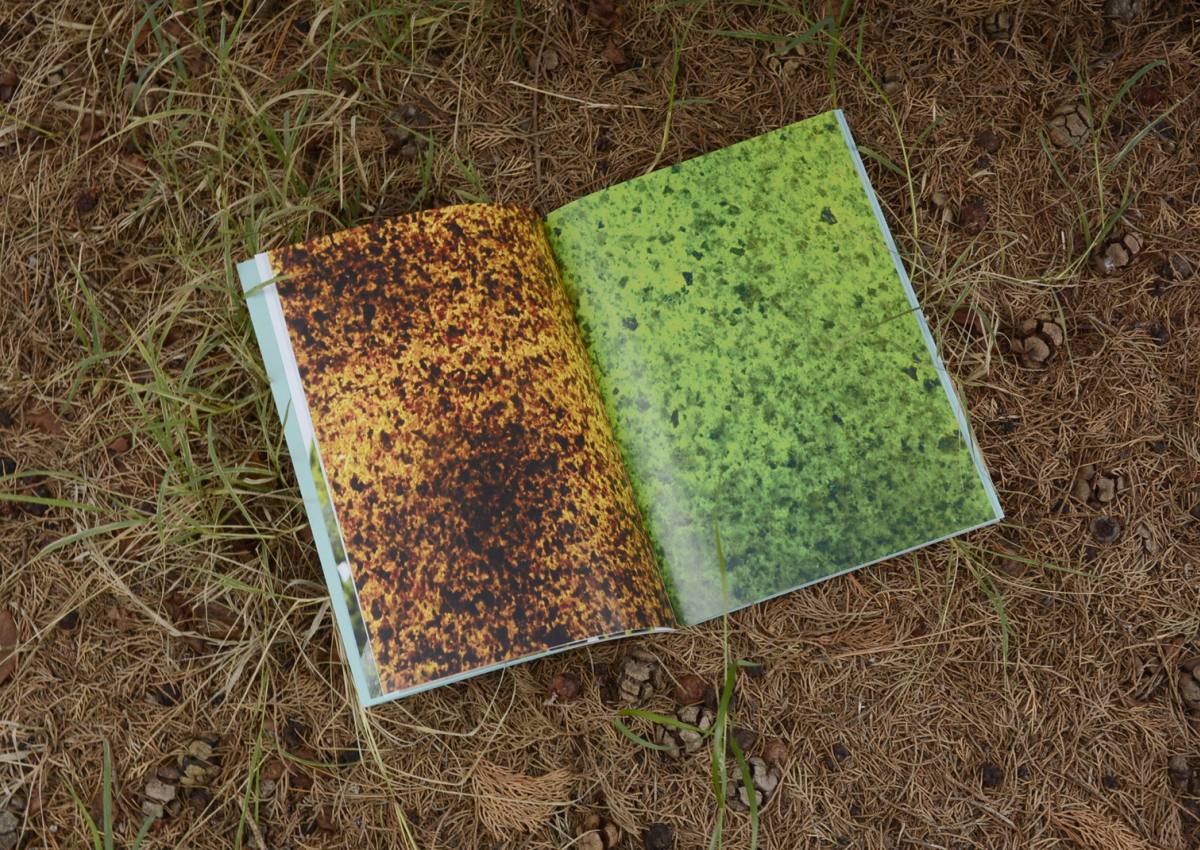
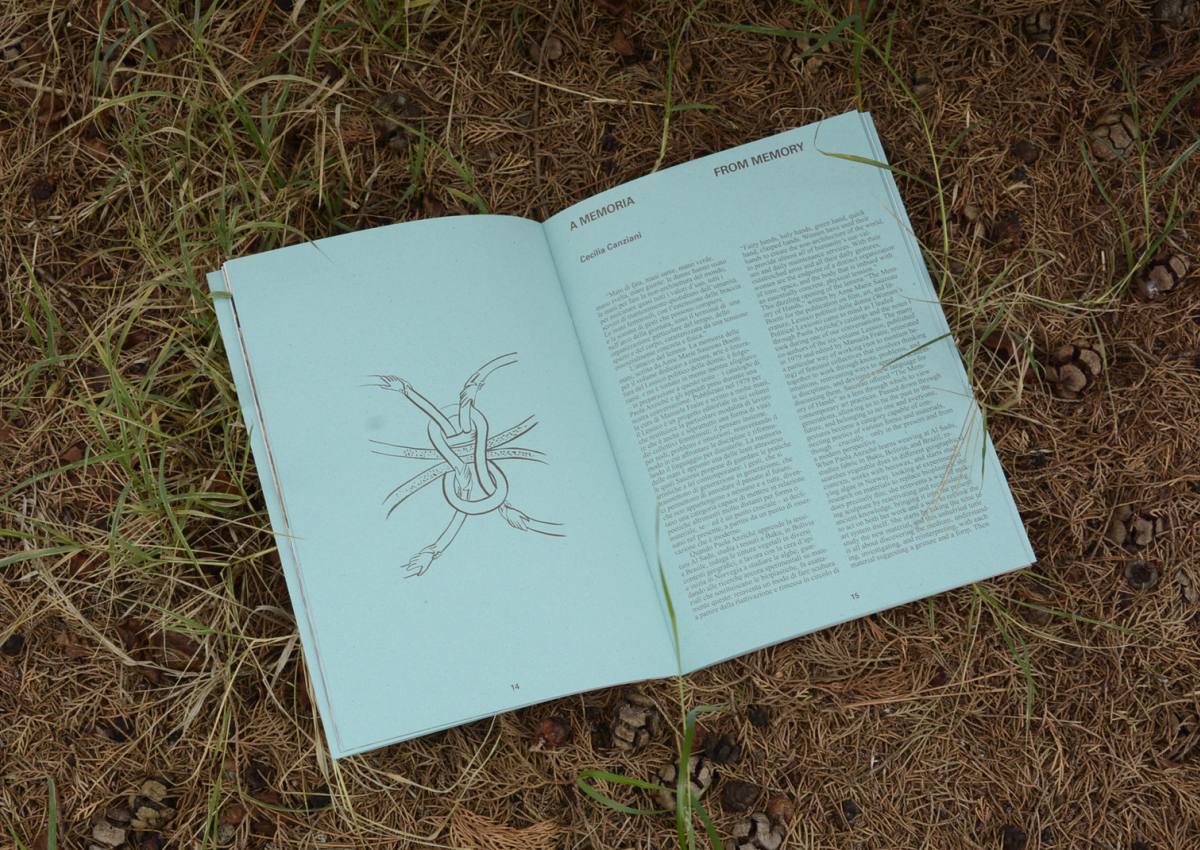
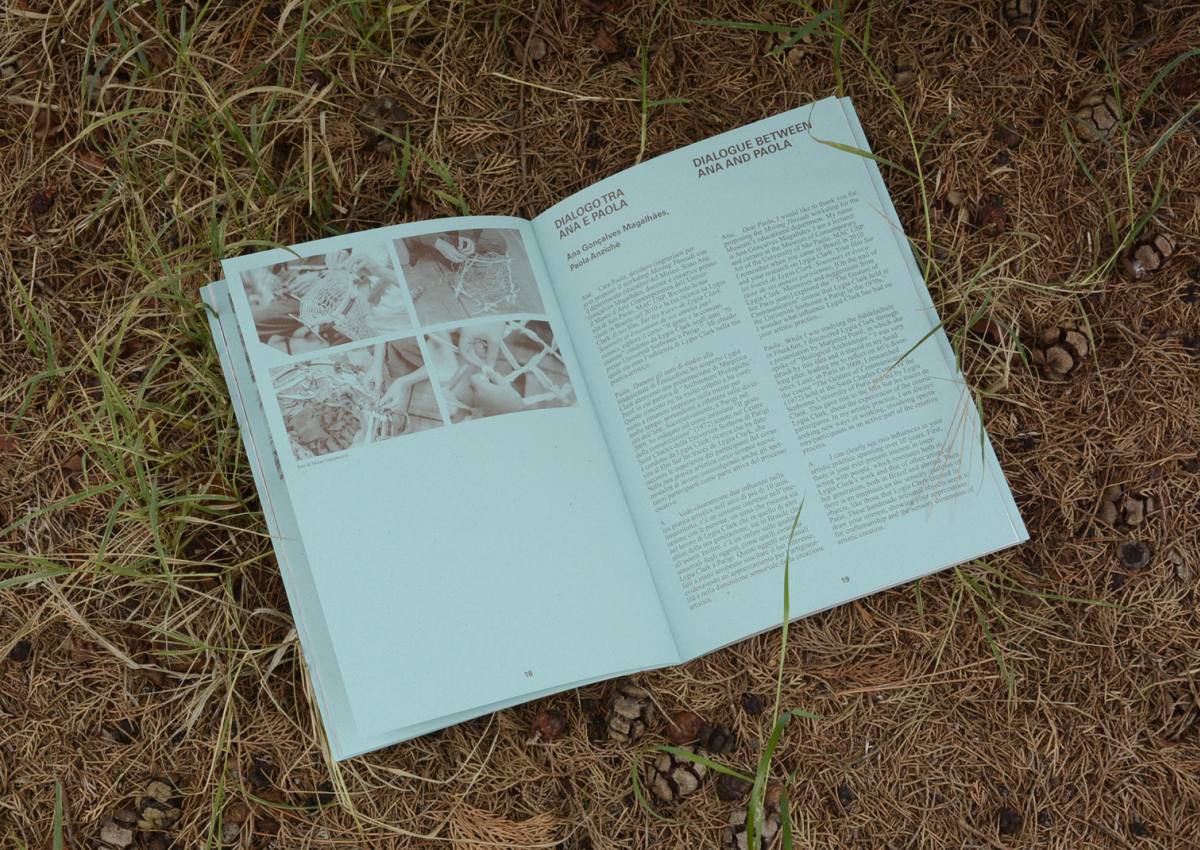
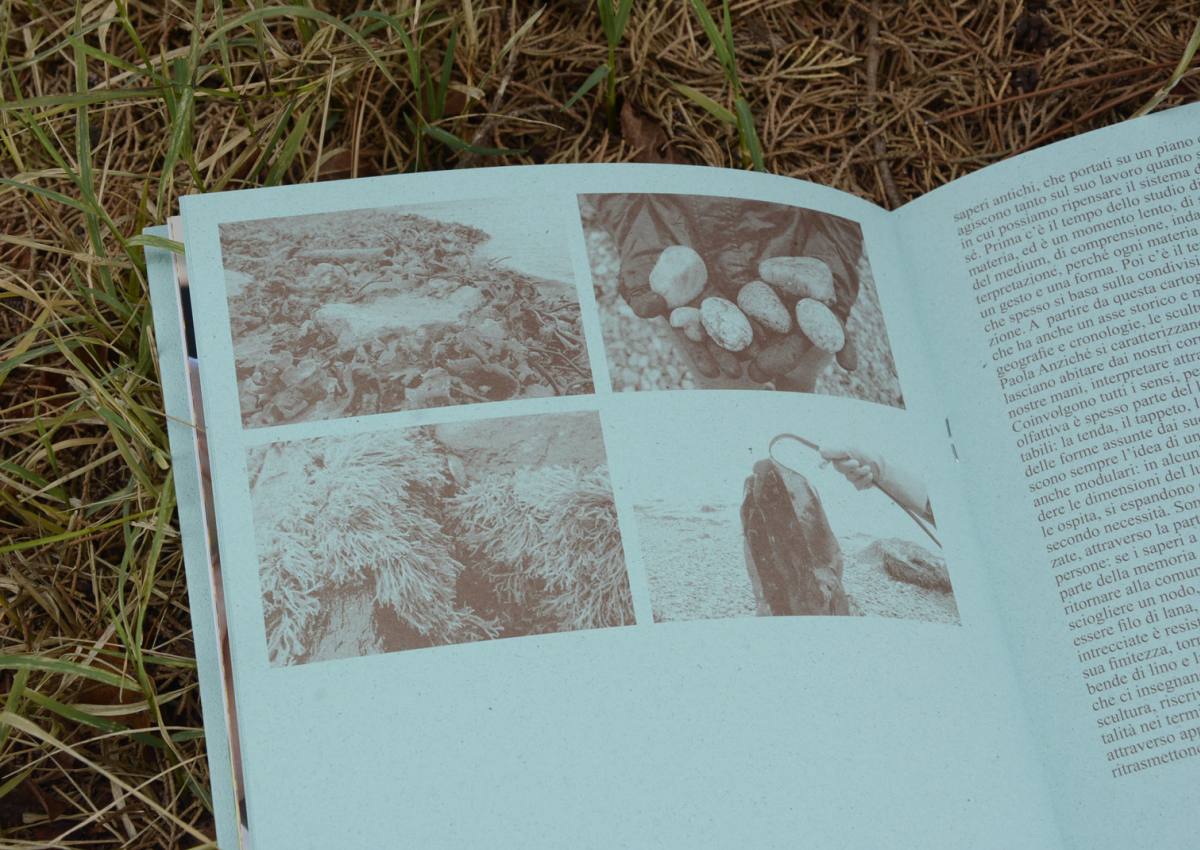
Paola Anziché
Common Threads
€ 13
32 pp.
19 x 28 cm
colour and bw printing
ita/eng
2024
ISBN 979-12-81790-12-4
Category: Artist's books Territorial research
Human life on Earth depends on biodiversity and its health. However, this pre-cious variety of life forms has been endangered for too long and is disappearing at an alarming rate. This awareness has gradually prompted me to reconsid. er the use of materials in my artistic practice, opting for natural, plant-based materials. This publication reflects on materiality, awareness of gesture and a sense of care in my artistic pratice. Through an exploration of the organic, of the intelligence contained in craftsmanship, I propose a collaborative and conscious art practice that seeks to connect with the natural world in a respectful and sustainable manner. Inside this publication there are the contributions by Cecilia Canziani, Ana Gonçalves Magalhães and Paola Anziché.


Aa. Vv.
Barriera Uninstitute
€ 18





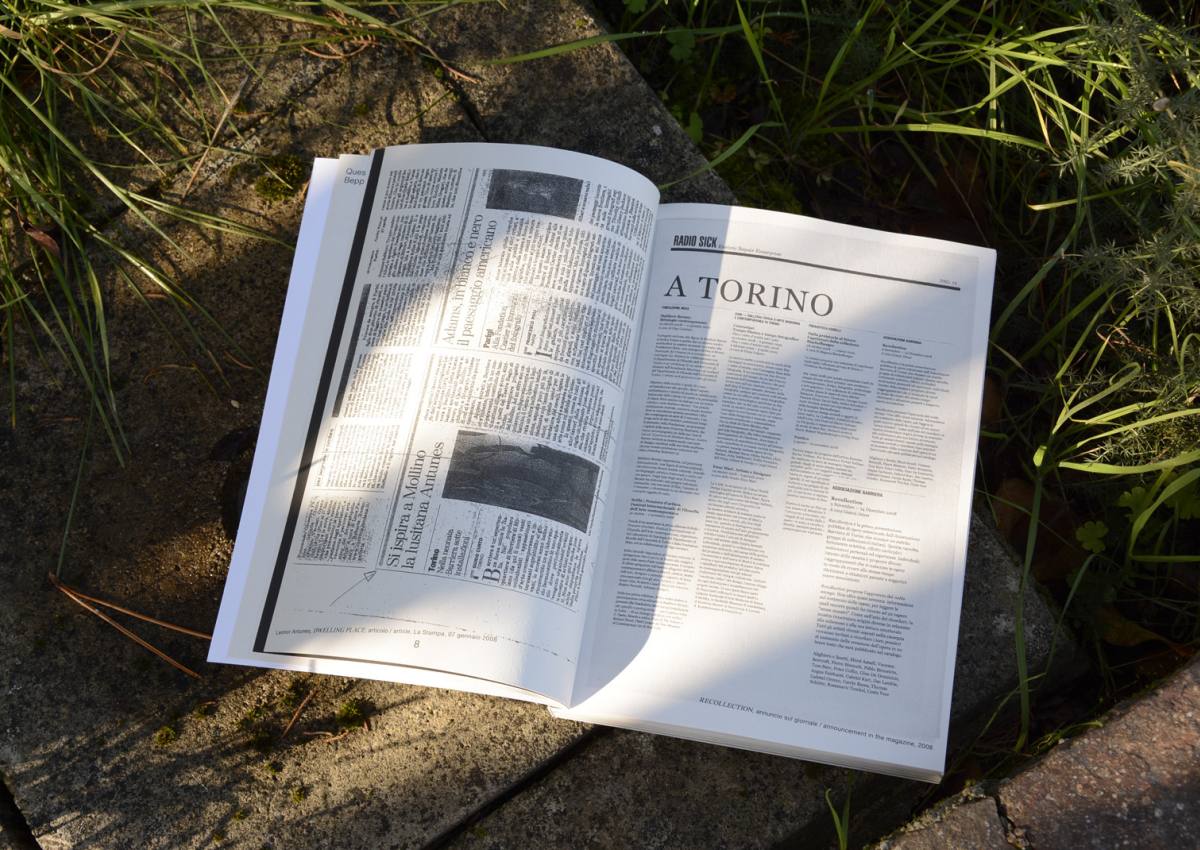
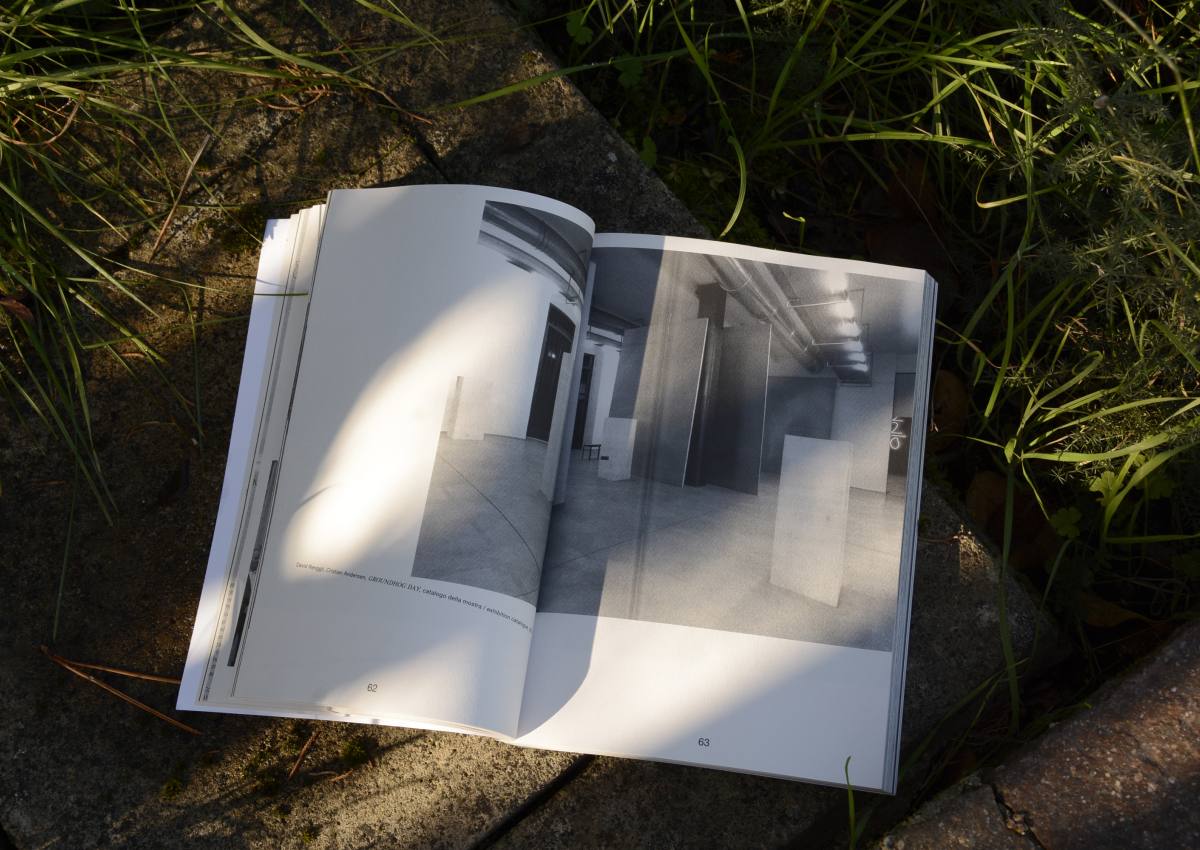
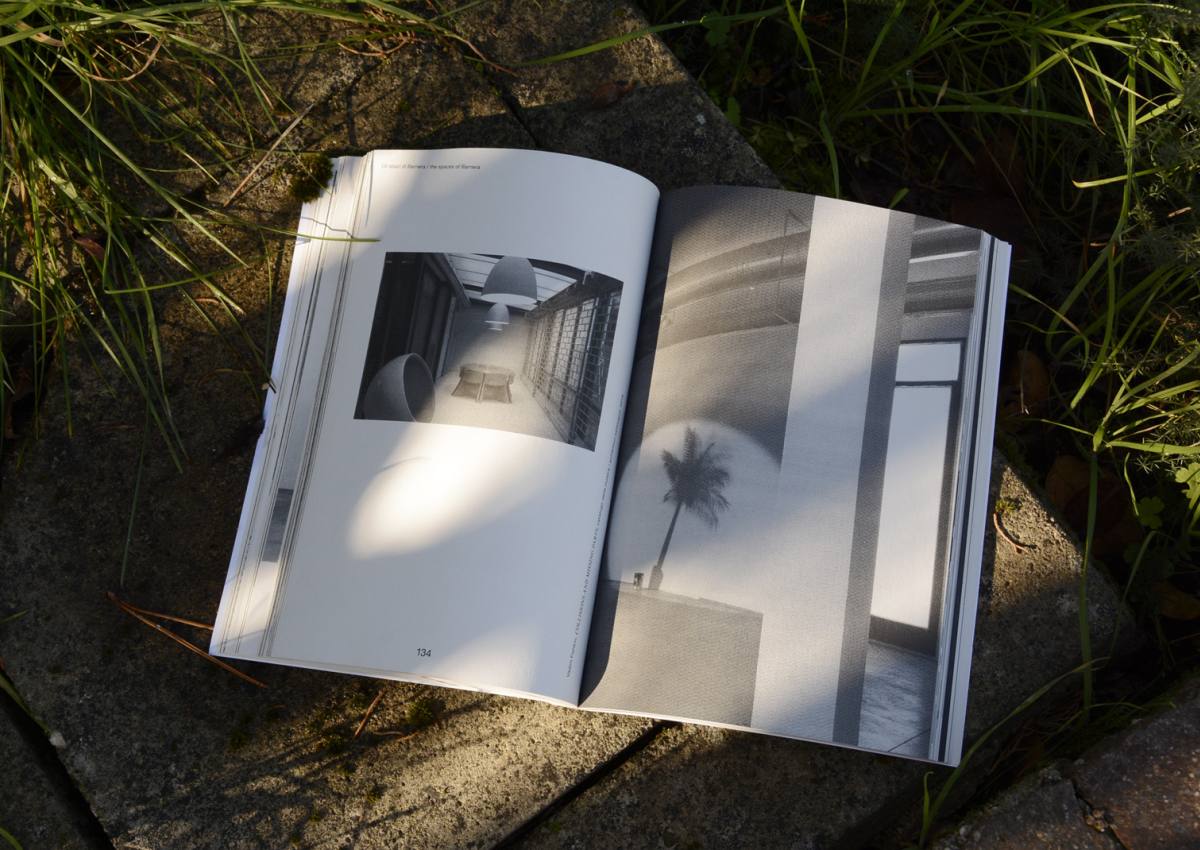
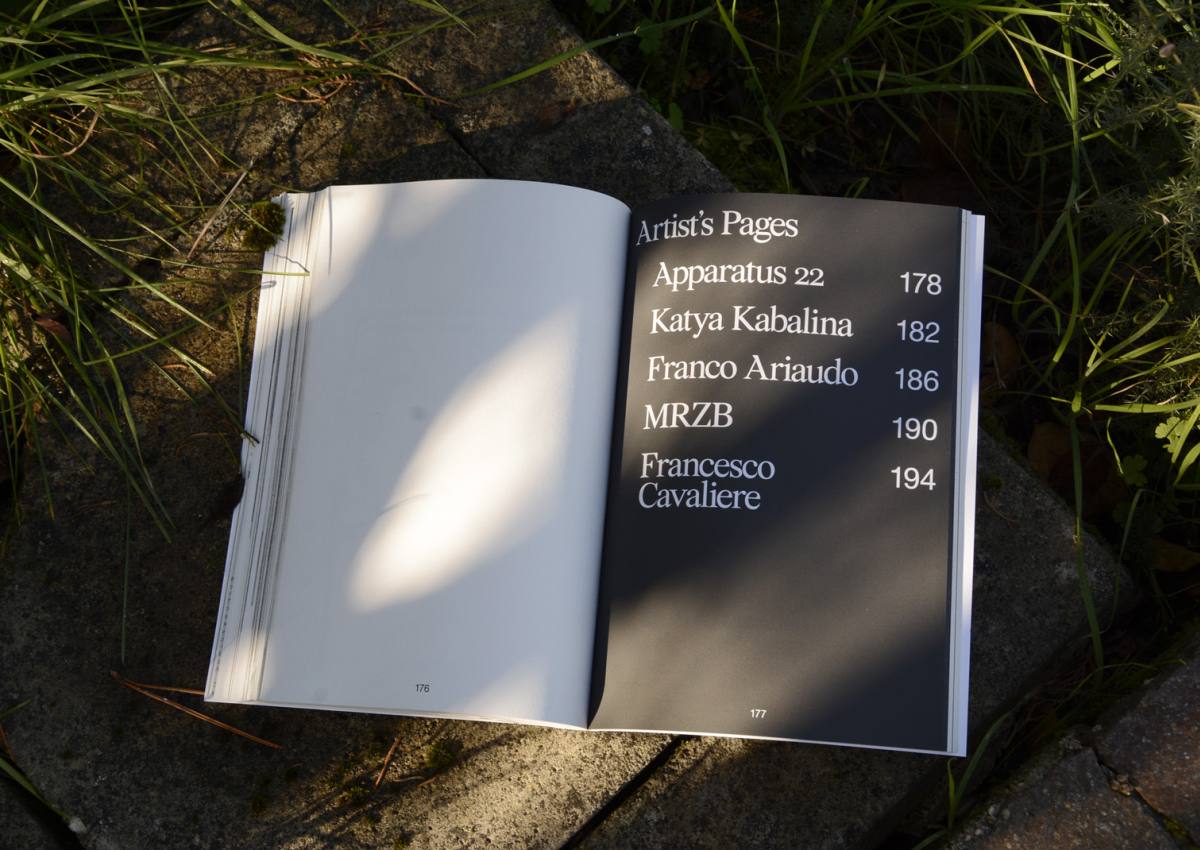
Aa. Vv.
Barriera Uninstitute. The Aftershow Book: A Critical Inventory Of Documents
€ 18
Edited by Sergey Kantsedal
232 pp.
16 x 23 cm
stampa bn
ita/eng
2024
ISBN 979-12-81790-23-o
Category: Catalogues
BARRIERA UNINSTITUTE is the aftershow, a critical inventory of materials documenting the seventeen years of activity at BARRIERA, a contemporary art space founded in 2007 in Turin. This publication seeks to engage with the broader debate surrounding the creation of 'institutional' archives within the fluid practices of contemporary art. How can we envision the future by reflecting on the past? And what role do the archive and the act of archiving play for an institution in this process?
The prefix UN in BARRIERA UNINSTITUTE signifies a re-examination of the status of an entity and a space, evoking the concept of a 'para-institution,' 'quasi-institution,' or 'non-institution.' Its purpose is to encourage the organization to continually recalibrate itself around new projects and programming choices, always moving toward more experimental and dialogical forms.
Rather than emphasizing the artwork, the exhibition as a product, or the collection as heritage, the book focuses on so-called 'printed matter'-ephem-eral, carefully crafted materials that have promoted and supported both exhibition and workshop projects. These include exhibition catalogs, invitations, gallery texts, postcards, leaflets, and booklets. Following this predominantly visual, asynchronous, and 'eccentric' documentary section, the book organizes an index with the events, exhibitions, catalogues, and artists who have passed through BARRIERA's space.
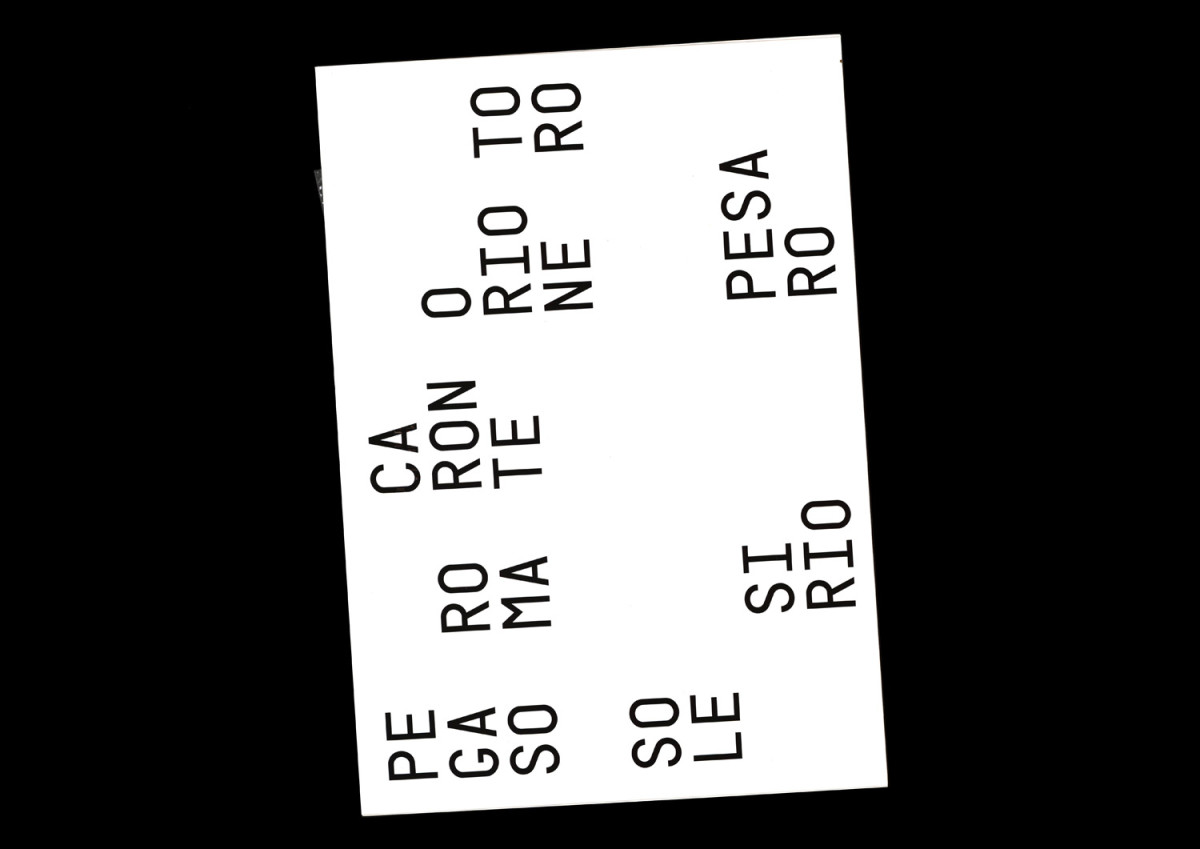
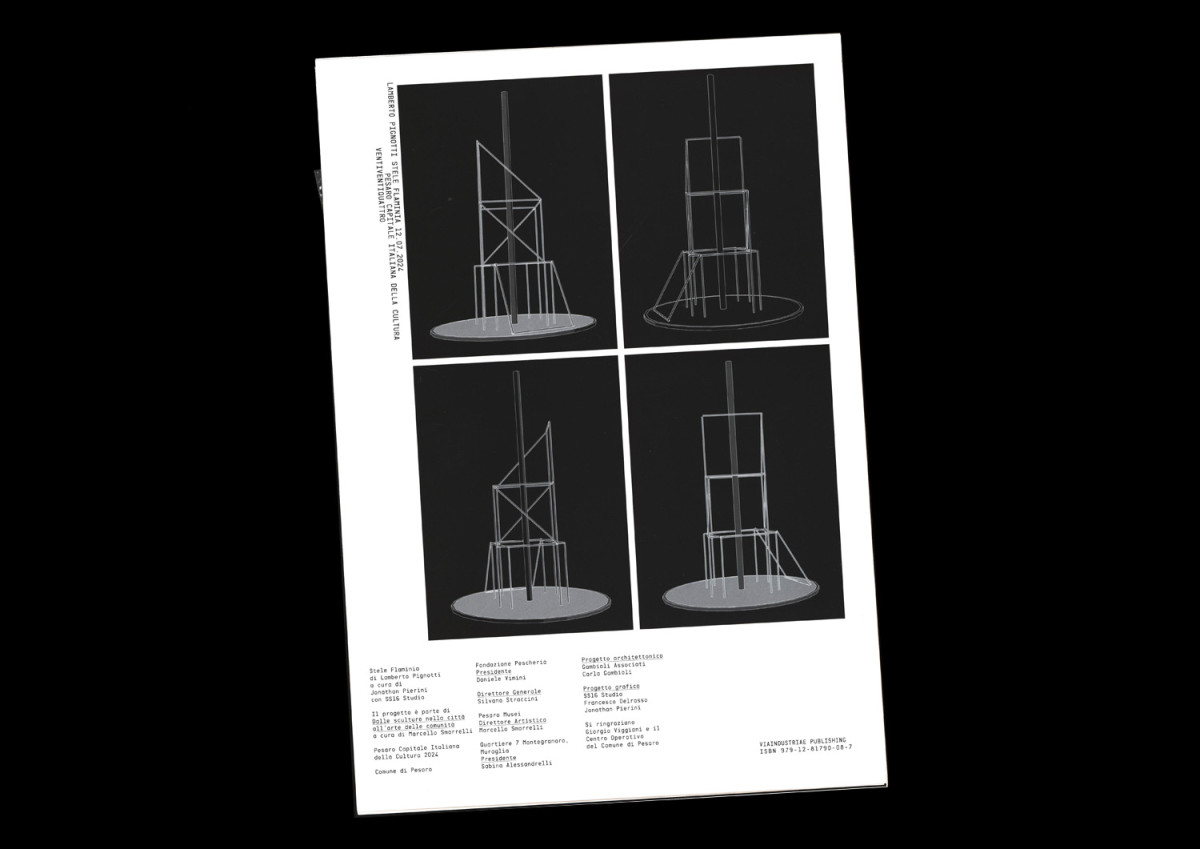
Lamberto Pignotti
Stele flaminia
€ 10
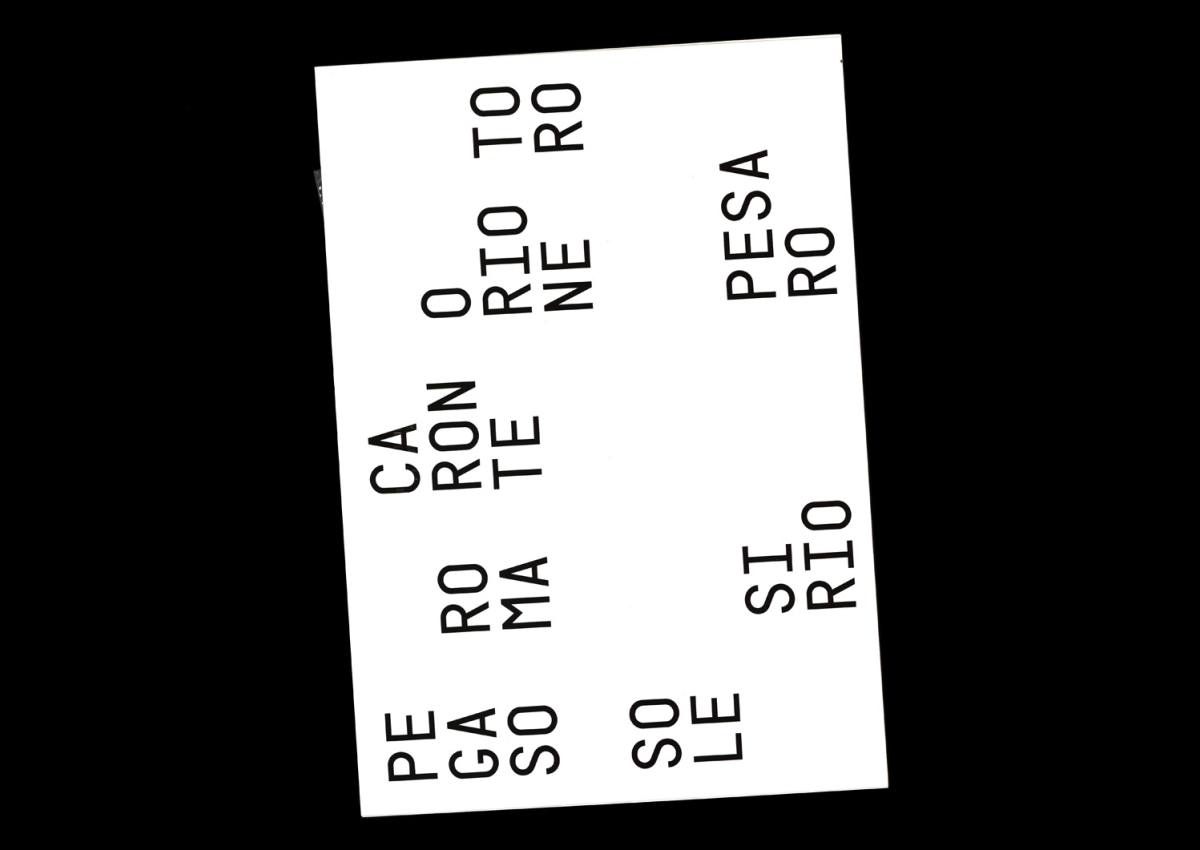
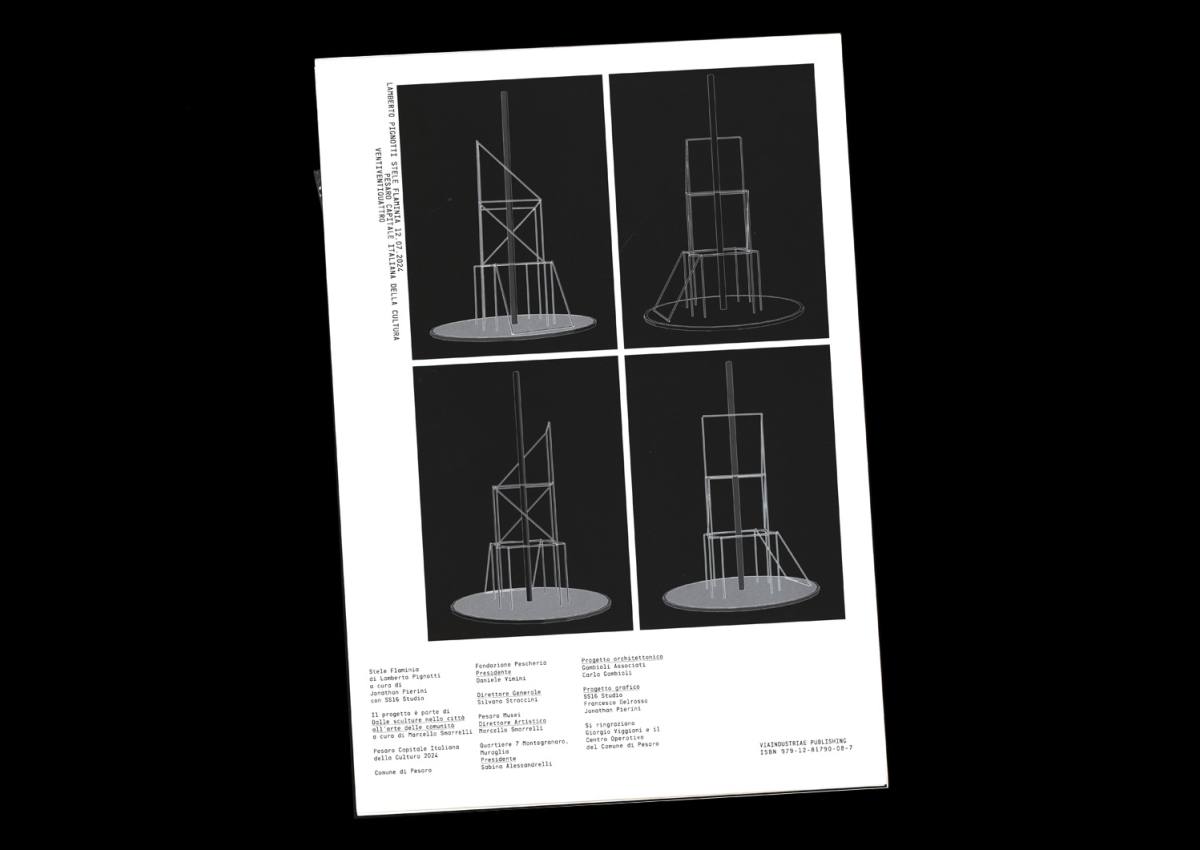
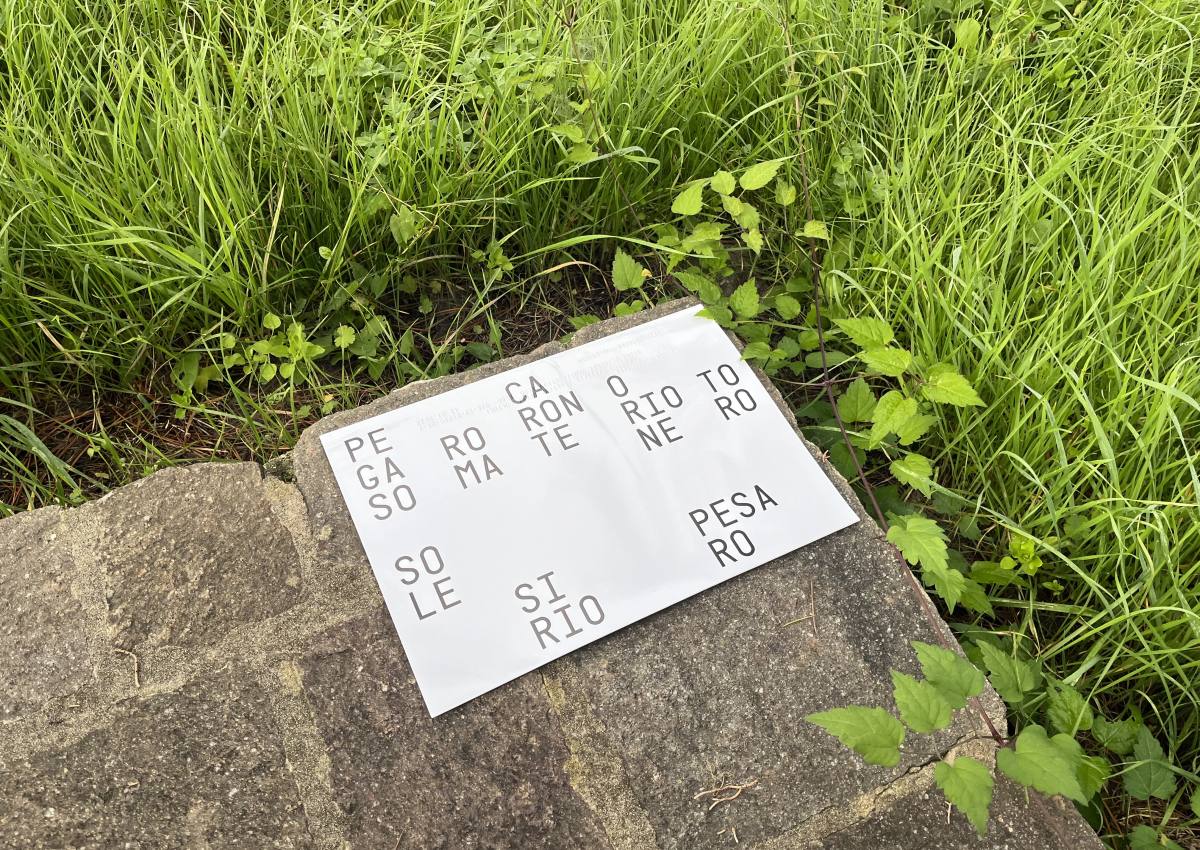
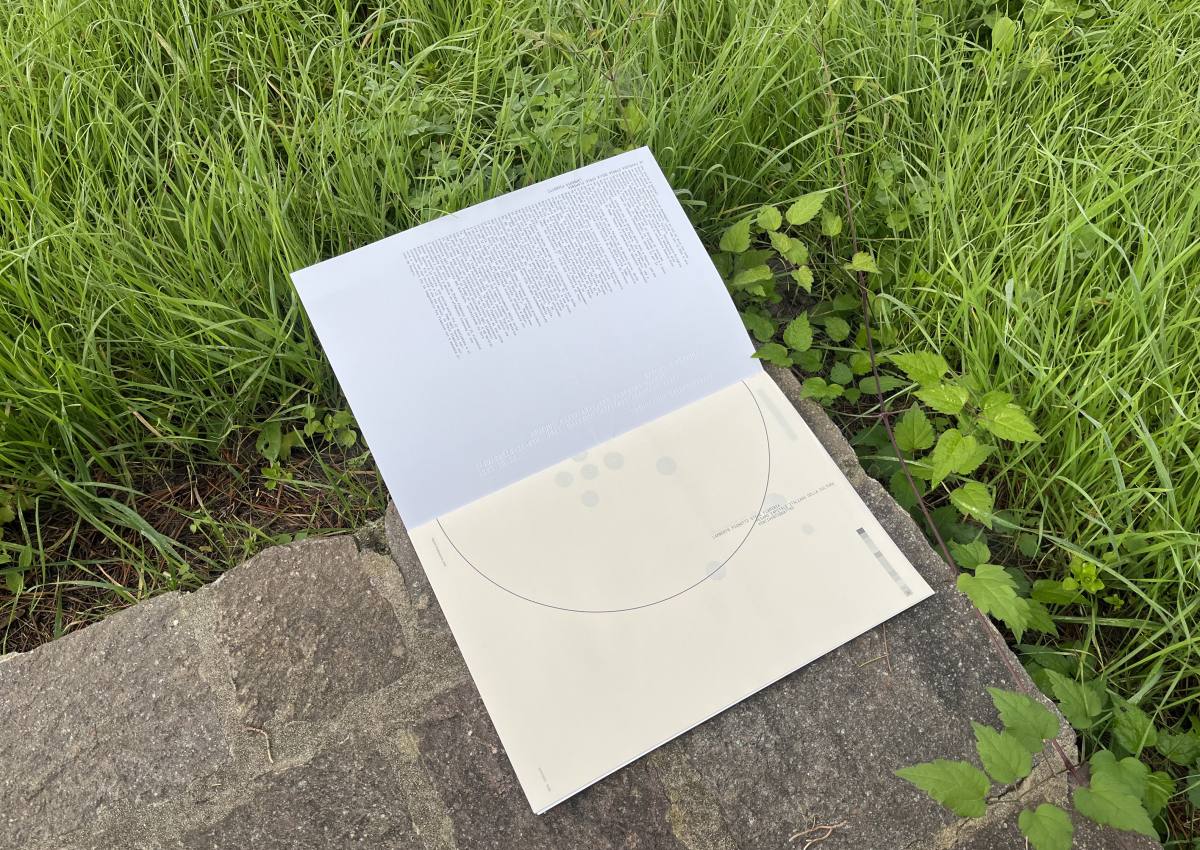
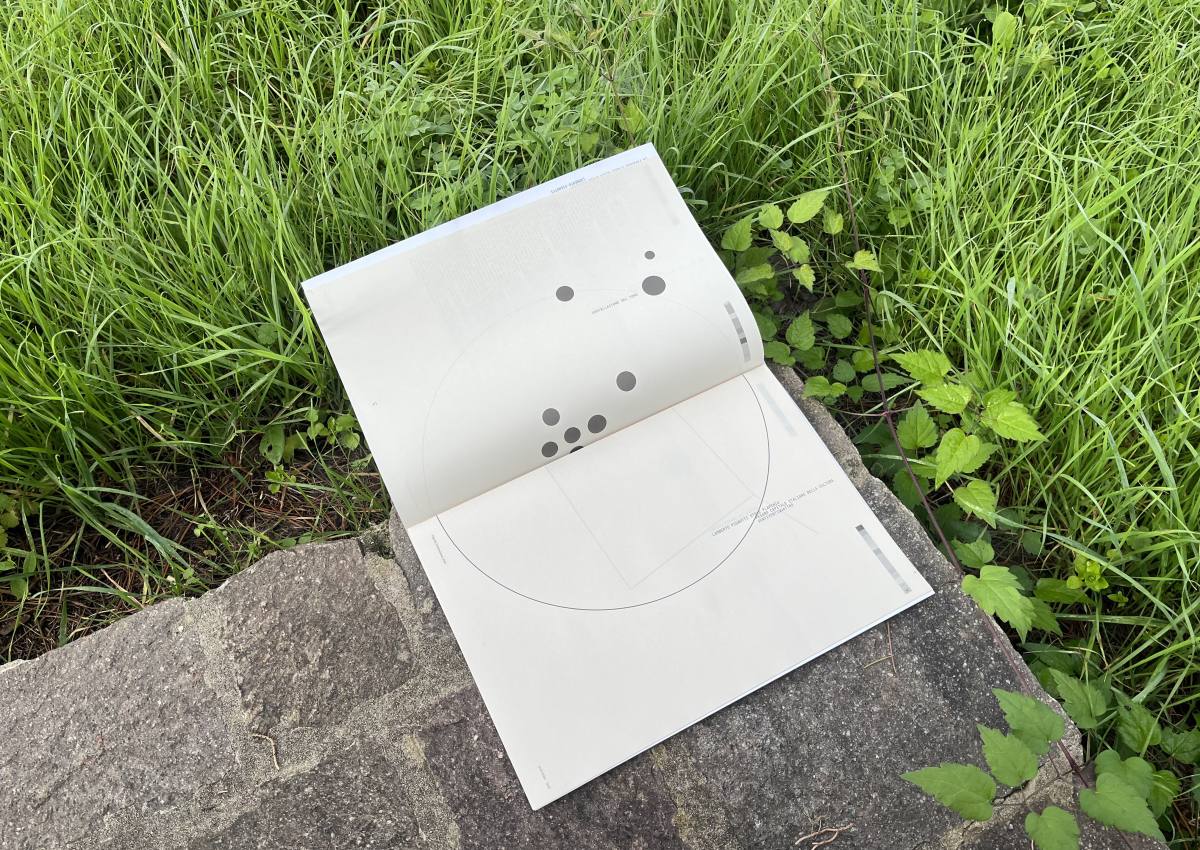
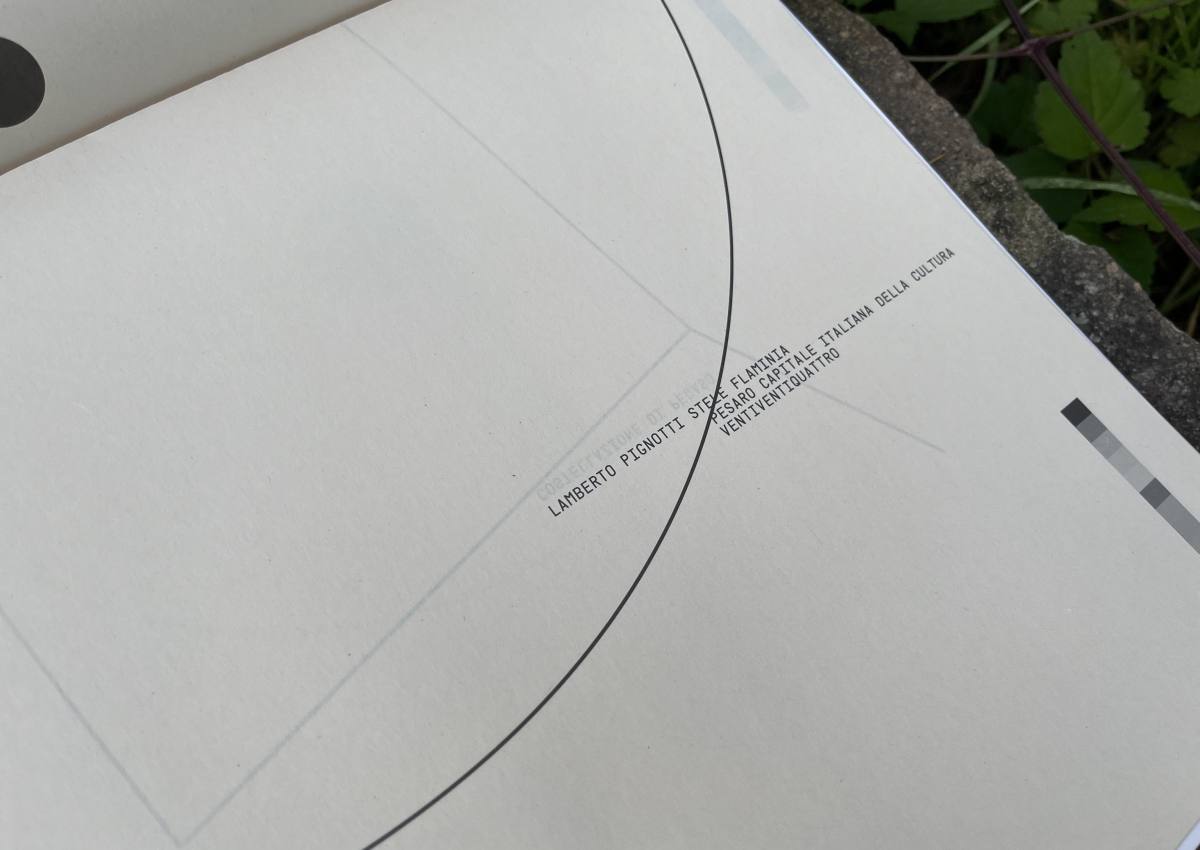
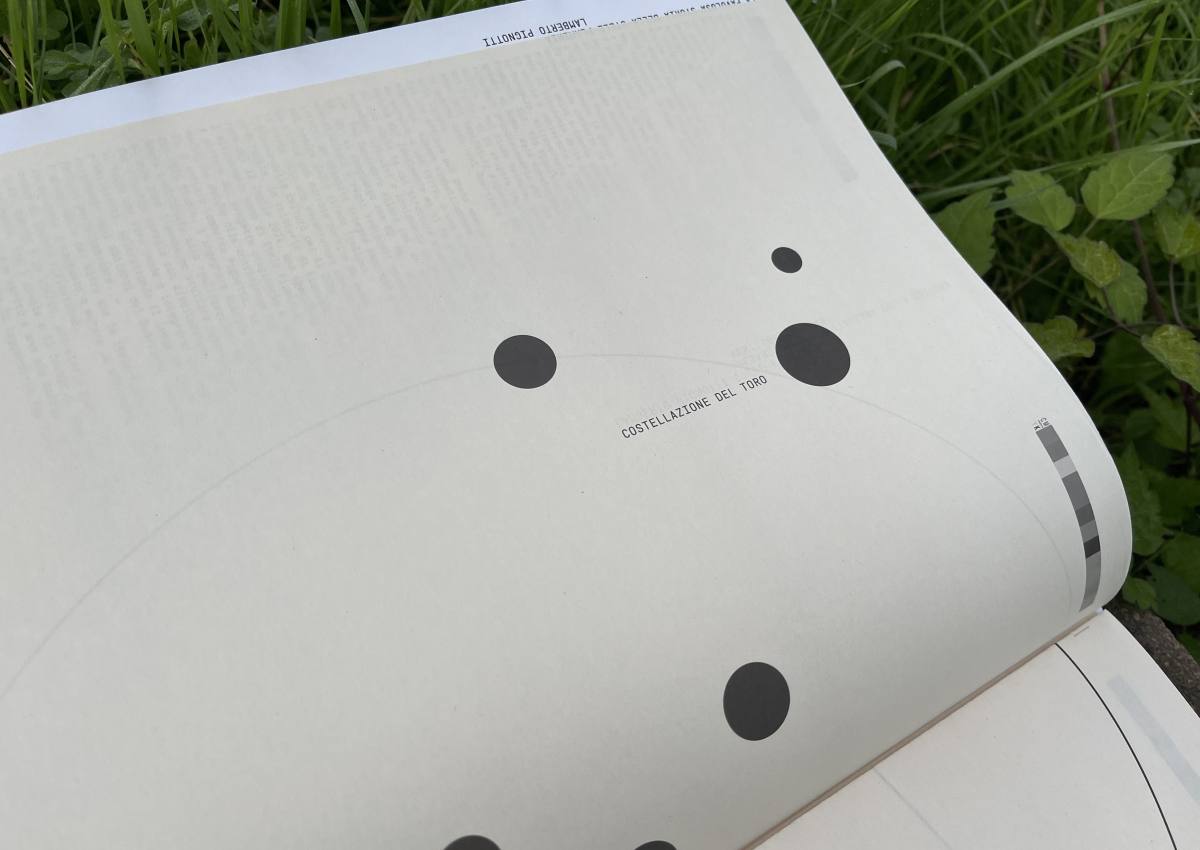
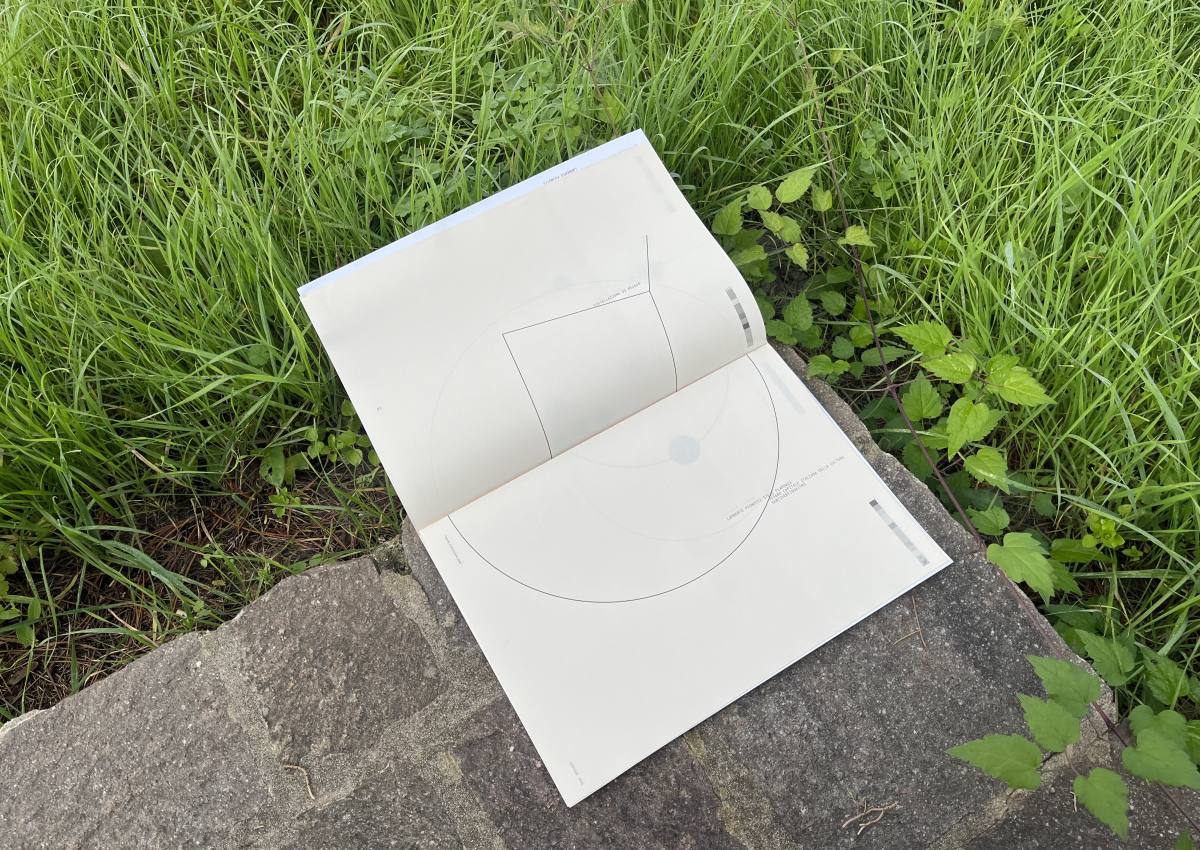
Lamberto Pignotti
Stele flaminia
€ 10
A cura di Jonathan Pierini con SS16 Studio
Parte di Dalle sculture nella città all’arte della comunità, a cura di Marcello Smarrelli
Pesaro Capitale Italiana della Cultura 2024
12 pp.
24,5 x 35 cm
stampa bn
ita
2024
ISBN 979-12-81790-08-7
For visual poetry, the street represents the natural setting for continuing a guerrilla effort aimed at appropriating the messages of mass communication, modifying them, and returning them to the sender with the goal of dismantling the mechanisms of rapid information consumption that rely on the observer’s passivity. Today’s street has lost its function as a public space, becoming instead an infrastructure for transit and support. In addition to the themes of fast and inattentive consumption, there is also the issue of inaccessibility, both physical and symbolic. The installation Stele Flaminia, created by Lamberto Pignotti and curated by Jonathan Pierini with SS16 Studio for Pesaro Italian Capital of Culture 2024, attempts to generate a moment of surprise, challenging our ability to decode urban, personal, and imaginative languages. Composed of scaffolding pipes and TNT clothes, and positioned in a roundabout—an antithesis to the post station that once served as a space for social and political interaction—it stands as a contemporary stele, at once exceptional and ephemeral, contradictory and ironic.The publication includes three graphic works and a series of critical texts.

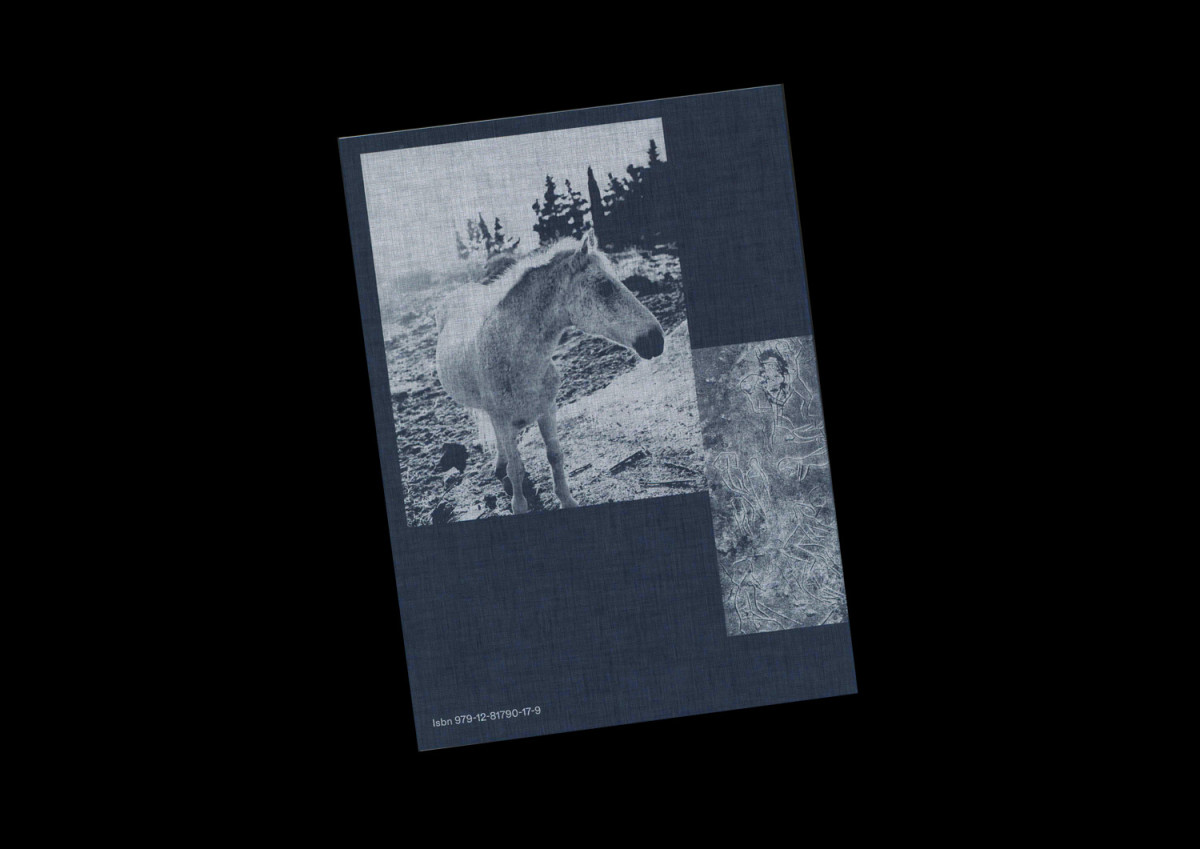
Aa. Vv.
Collezioni emergenti
€ 18

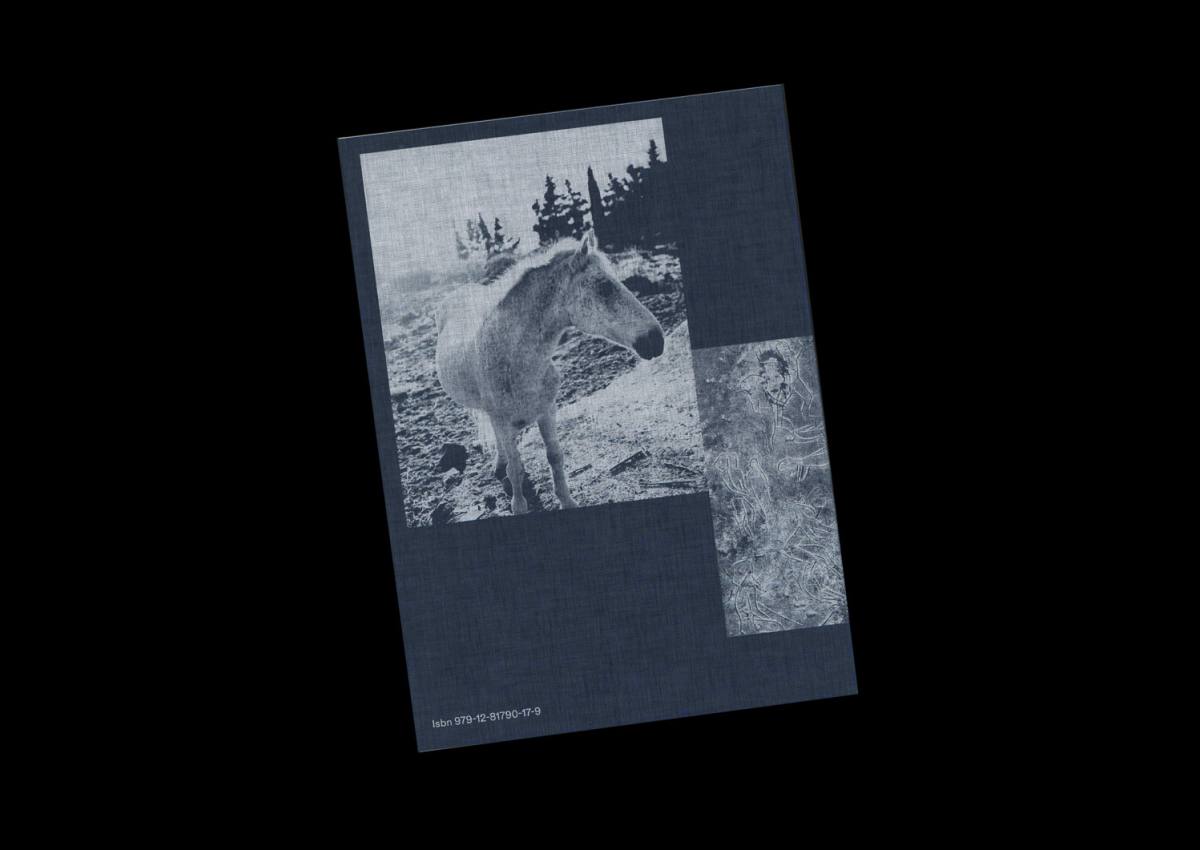
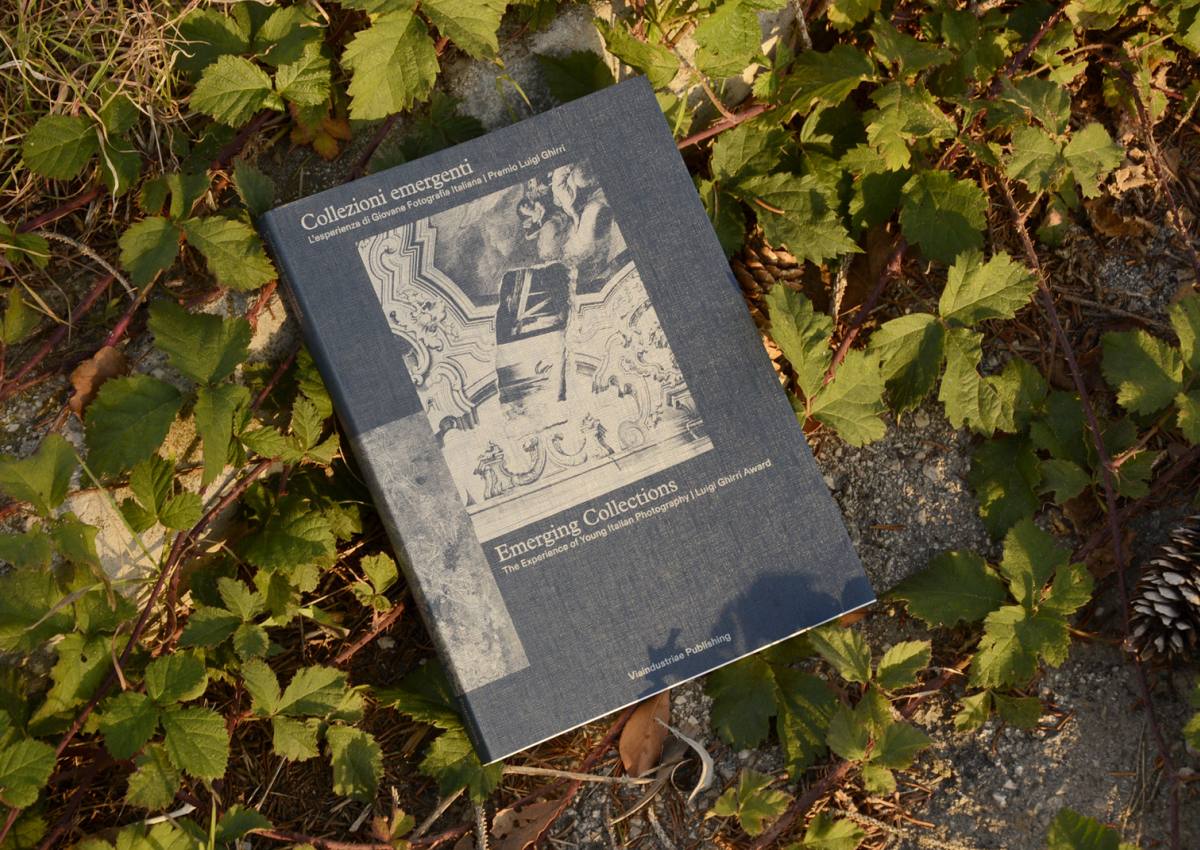
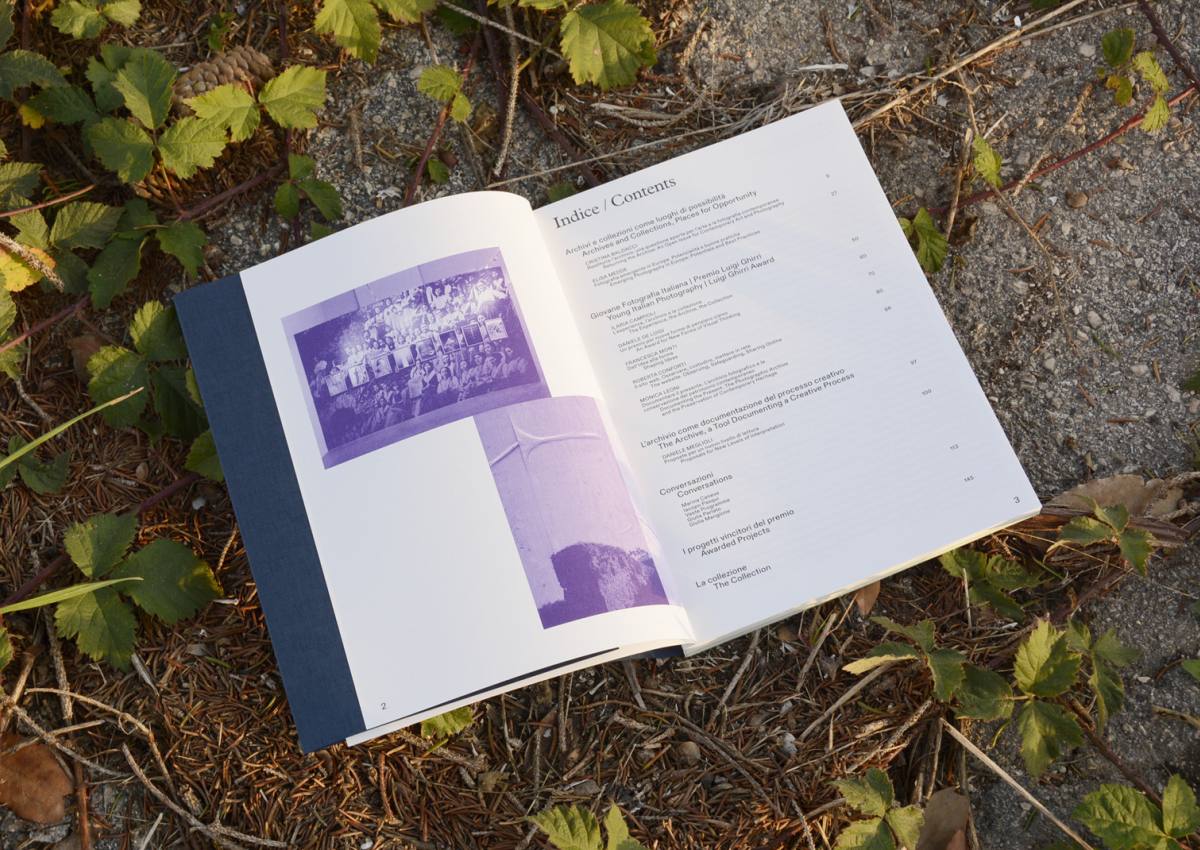

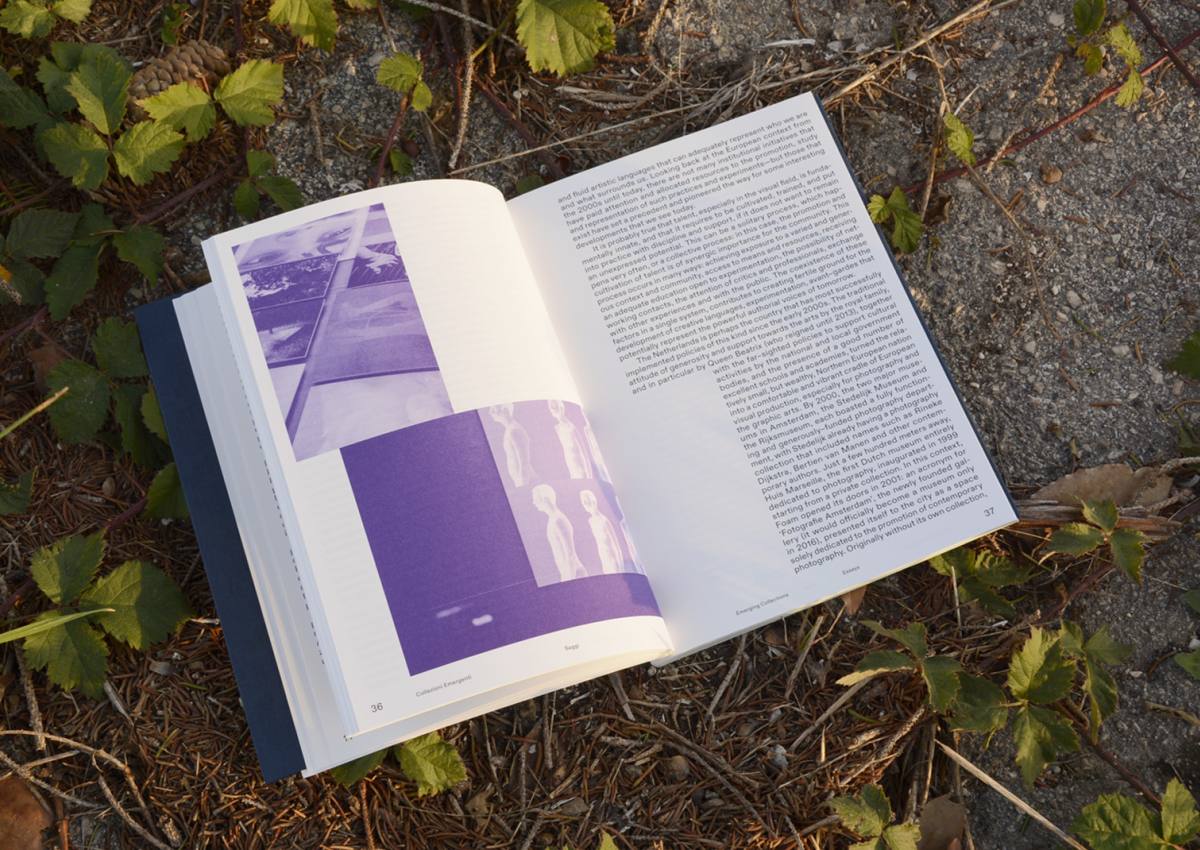





Aa. Vv.
Collezioni Emergenti. L'esperienza di Giovane Fotografia Italiana | Premio Luigi Ghirri
€ 18
Edirted by Ilaria Campioli
160 pp.
16,5 x 34 cm
color and bw printing
ita/eng
2024
ISBN 979-12-81790-17-9
Category: Catalogues
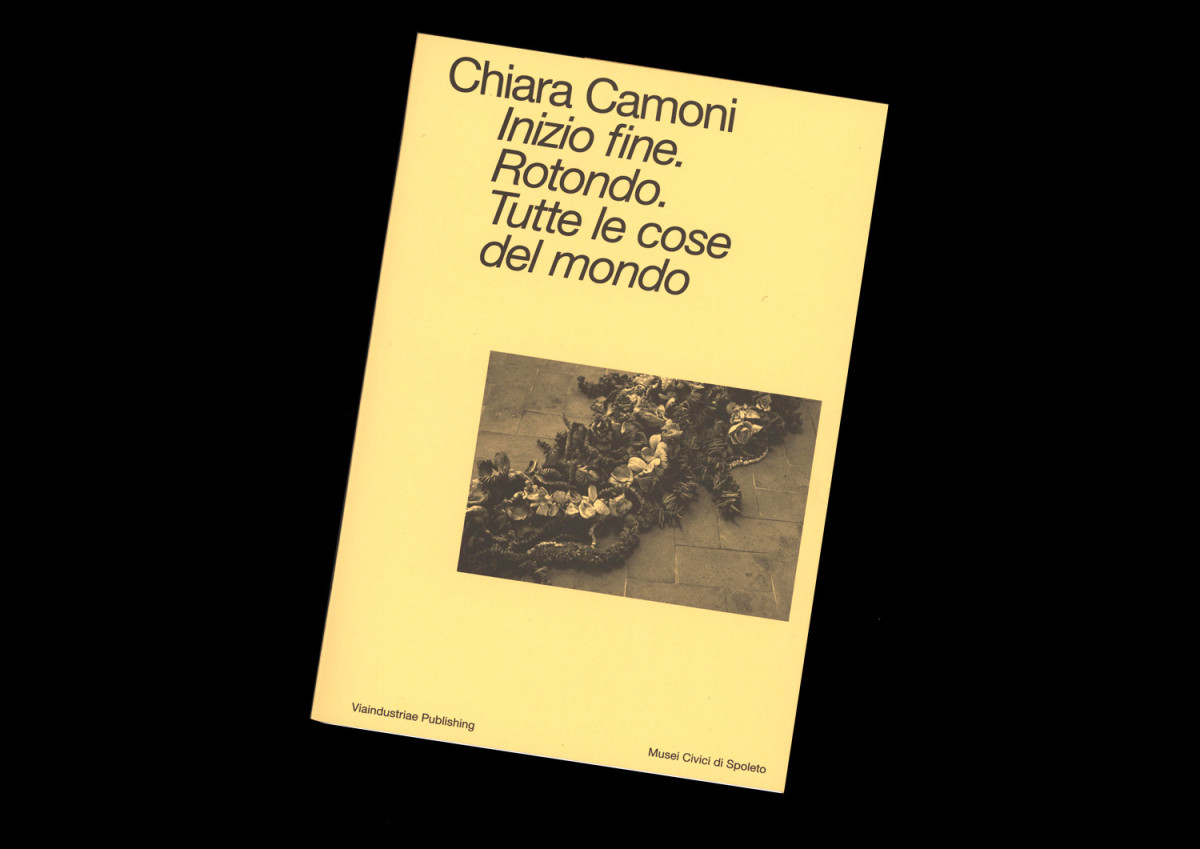
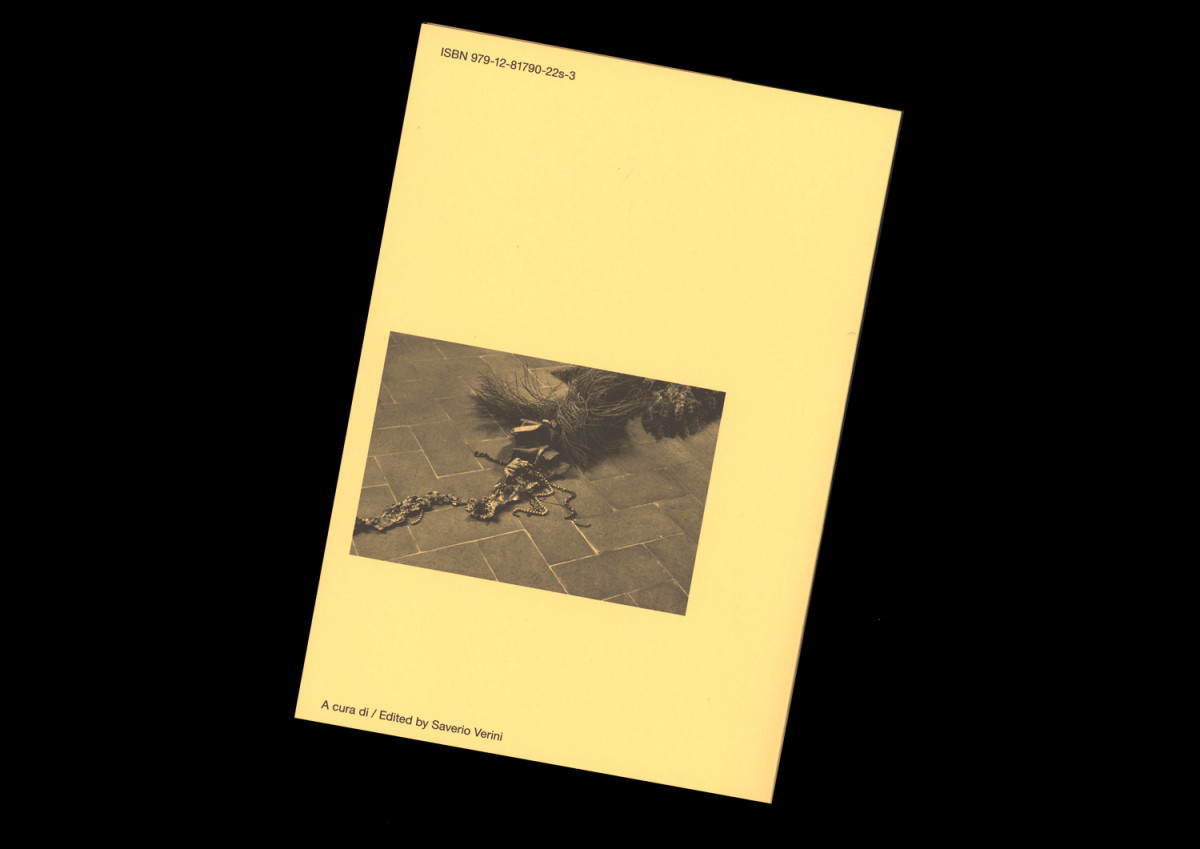
Chiara Camoni
Inizio fine. Rotondo. Tutte le cose del mondo
€ 20
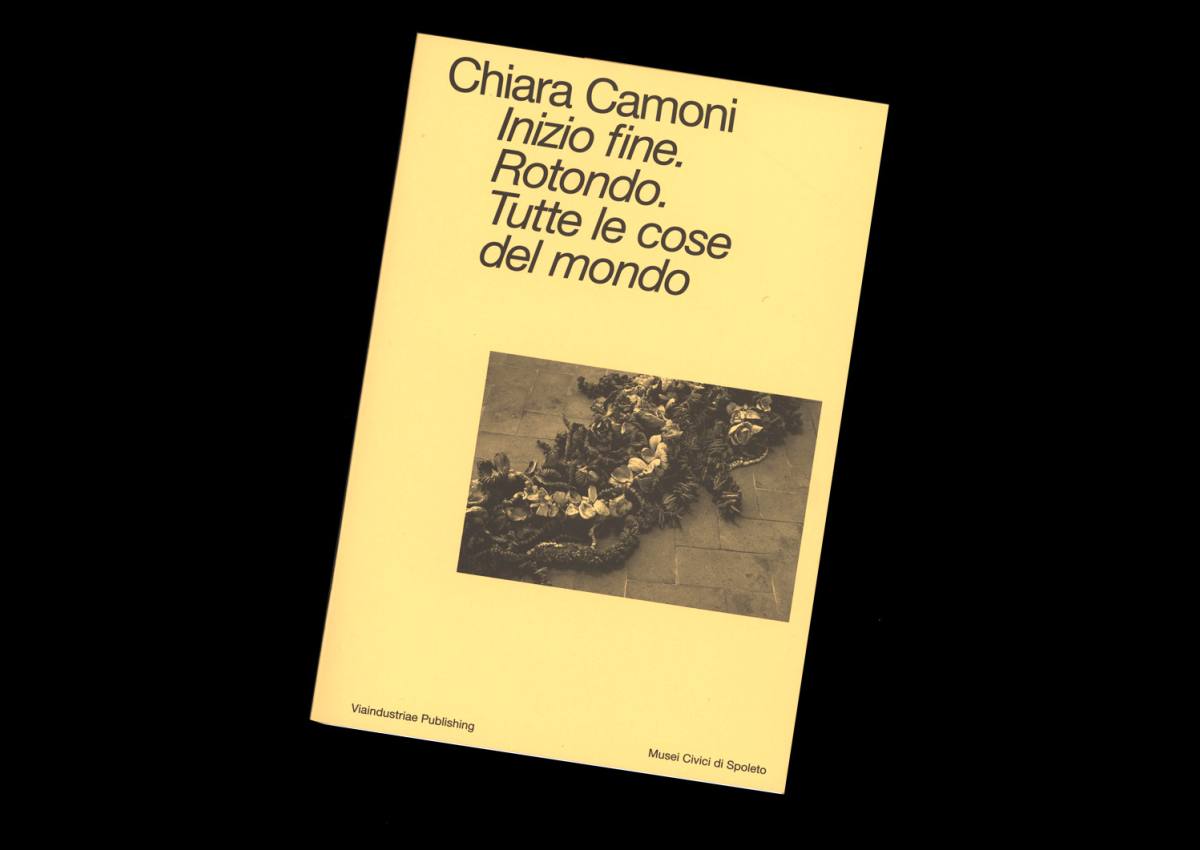
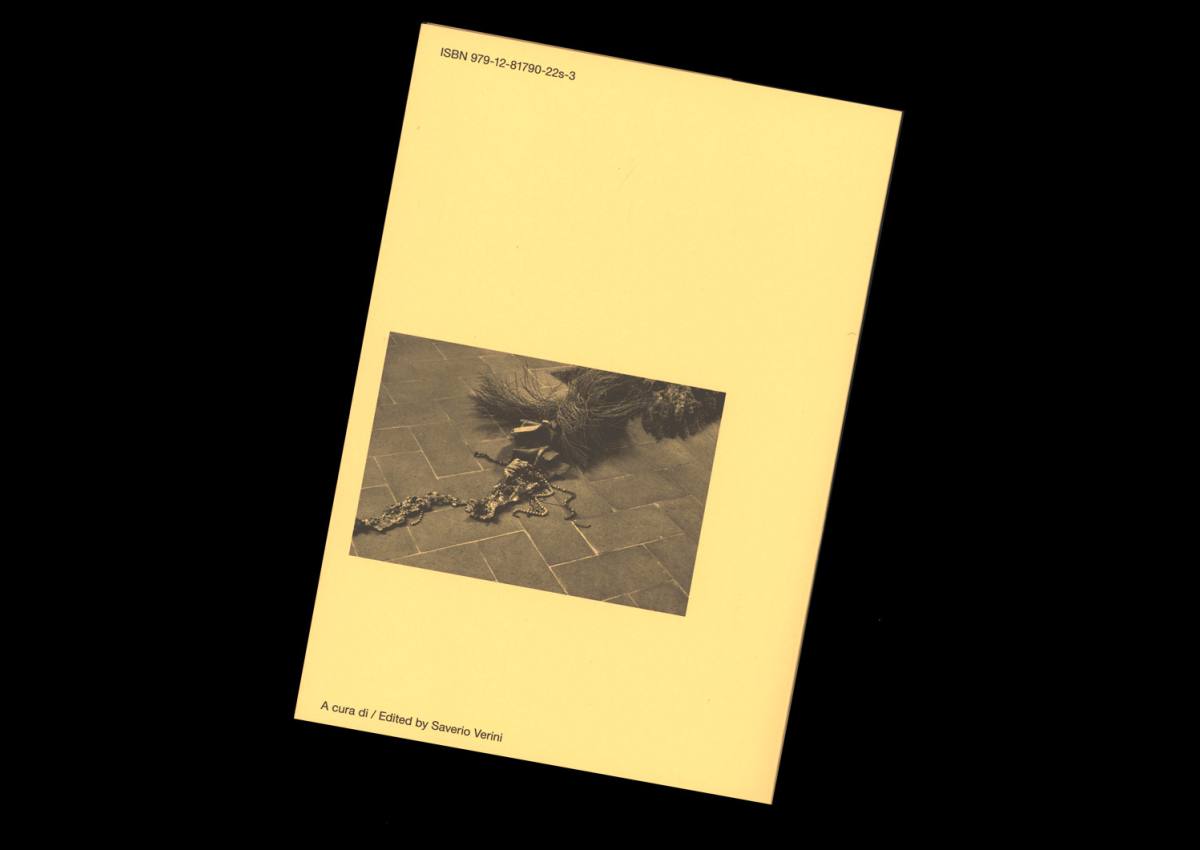
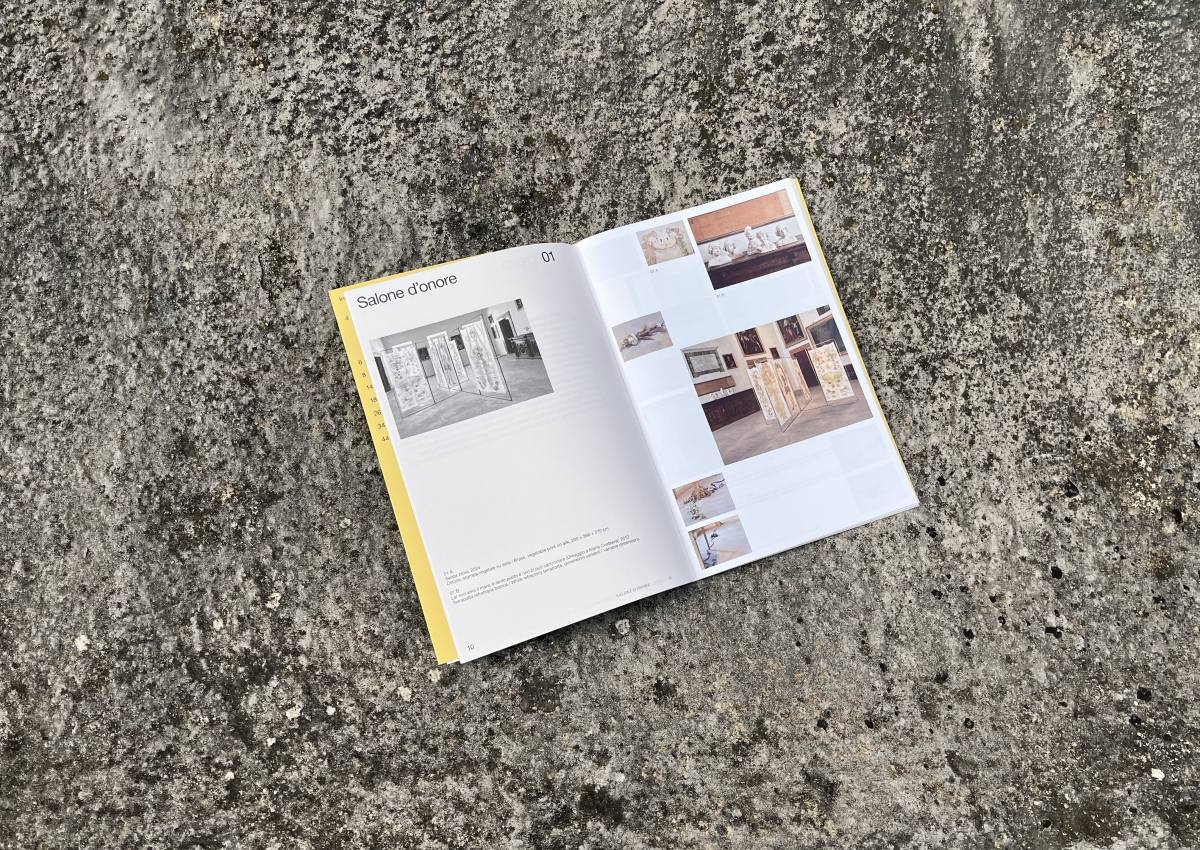



Chiara Camoni
Inizio Fine. Rotondo. Tutte le cose del mondo
€ 20
Co-published with Palazzo Collicola, Spoleto
Edited by Saverio Verini
52 pp.
19 x 28 cm
Colour and bn printing
ita/eng
2024
ISBN 979-12-81790-22-3
Category: Artist's books Catalogues
Inizio fine. Rotondo. Tutte le cose del mondo (Beginning, End. Round. All Things of the World) is the exhibition that artist Chiara Camoni conceived for the Piano Nobile of Palazzo Collicola on the occasion of the 67th Festival dei Due Mondi. The title, similar to a lullaby or nursey rhyme, anticipates the course of the exhibition, based on circularity, accumulation and reiteration, with the works accompanying the visitor through the rooms in a dreamy and ancestral atmosphere, populated by spirits, divinities, souls, and animals. References to the natural and plant world-a fixed presence in Camoni’s production-meet with the splendour of the rooms of Palazzo Collicola, in an unprecedented dialogue that also features a conspicuous body of works made especially for the exhibition. The Piano Nobile and the artist’s works thus form a special alliance: the relationship with the architectural space is underlined by a long snake made of different materials and media which, ‘crawling’ in all the rooms, marks the path of the exhibition.
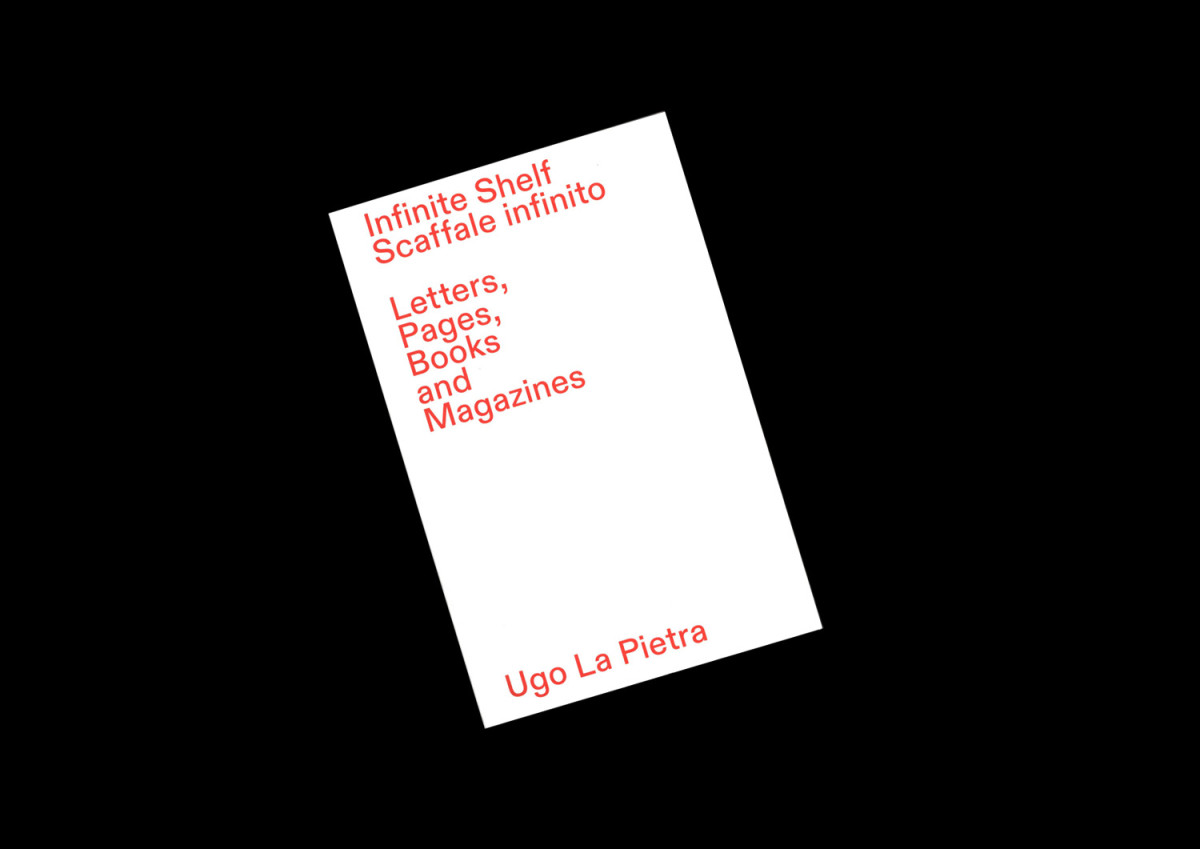
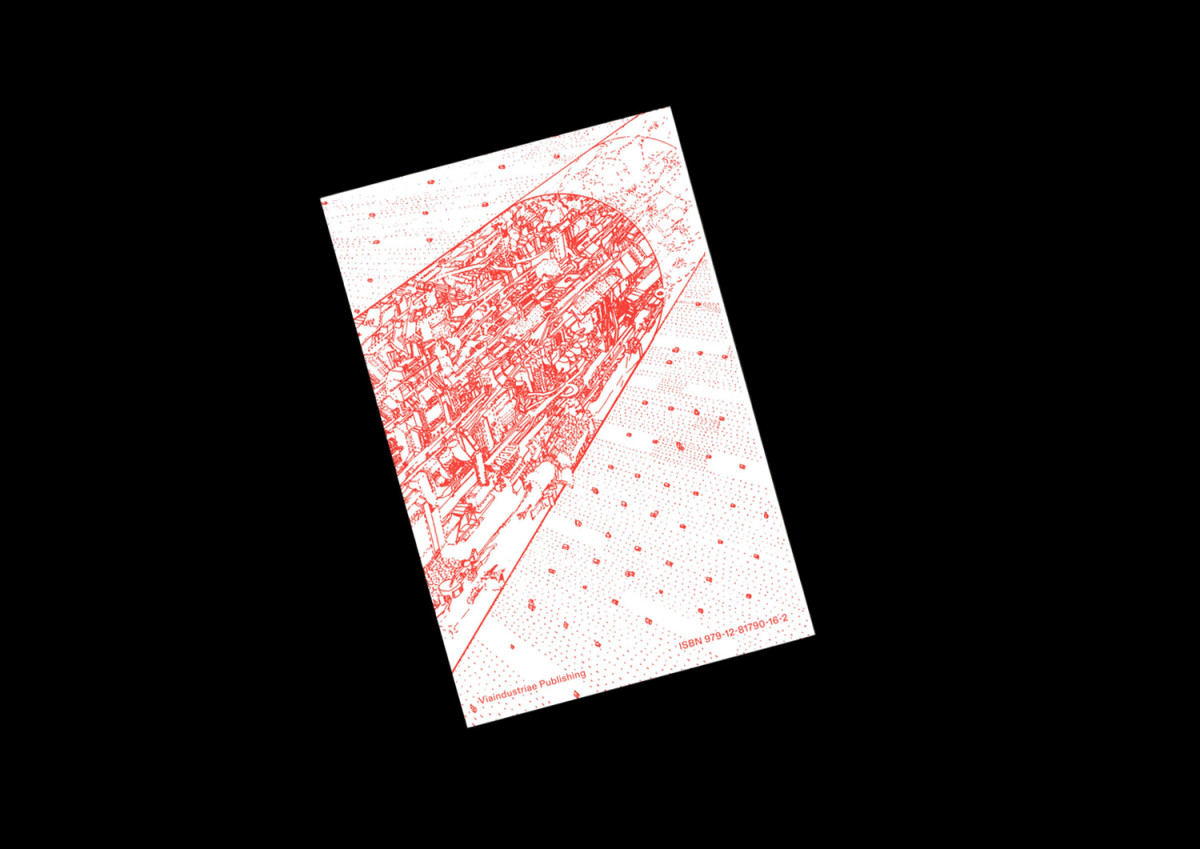
Ugo La Pietra
Infinite Shelf
€ 15
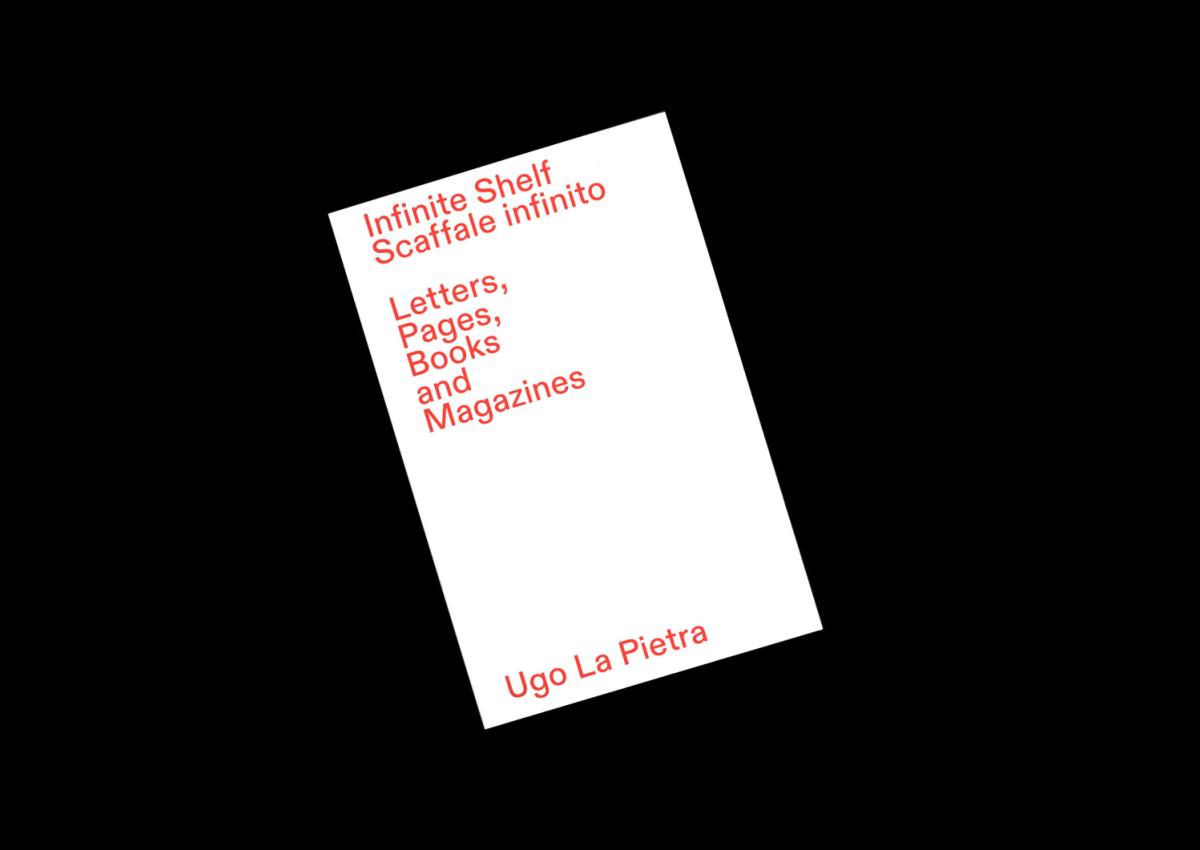
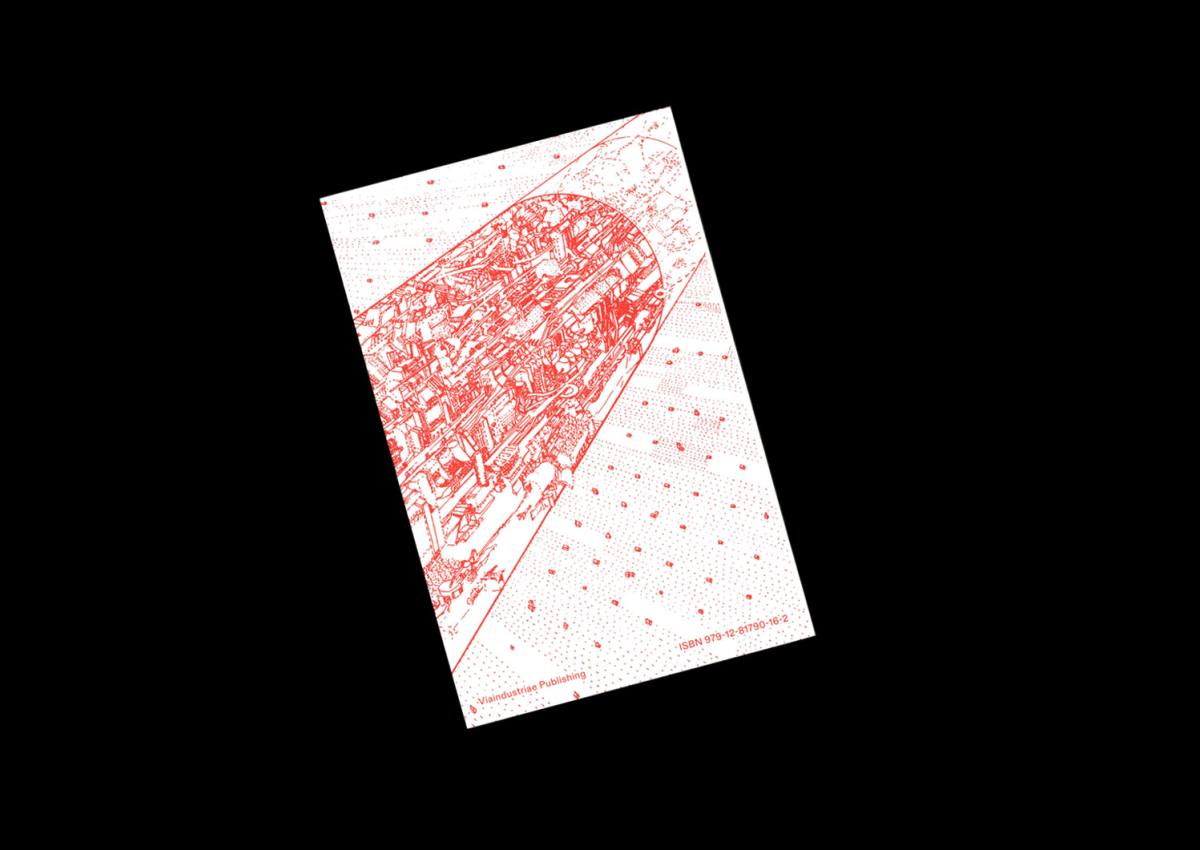
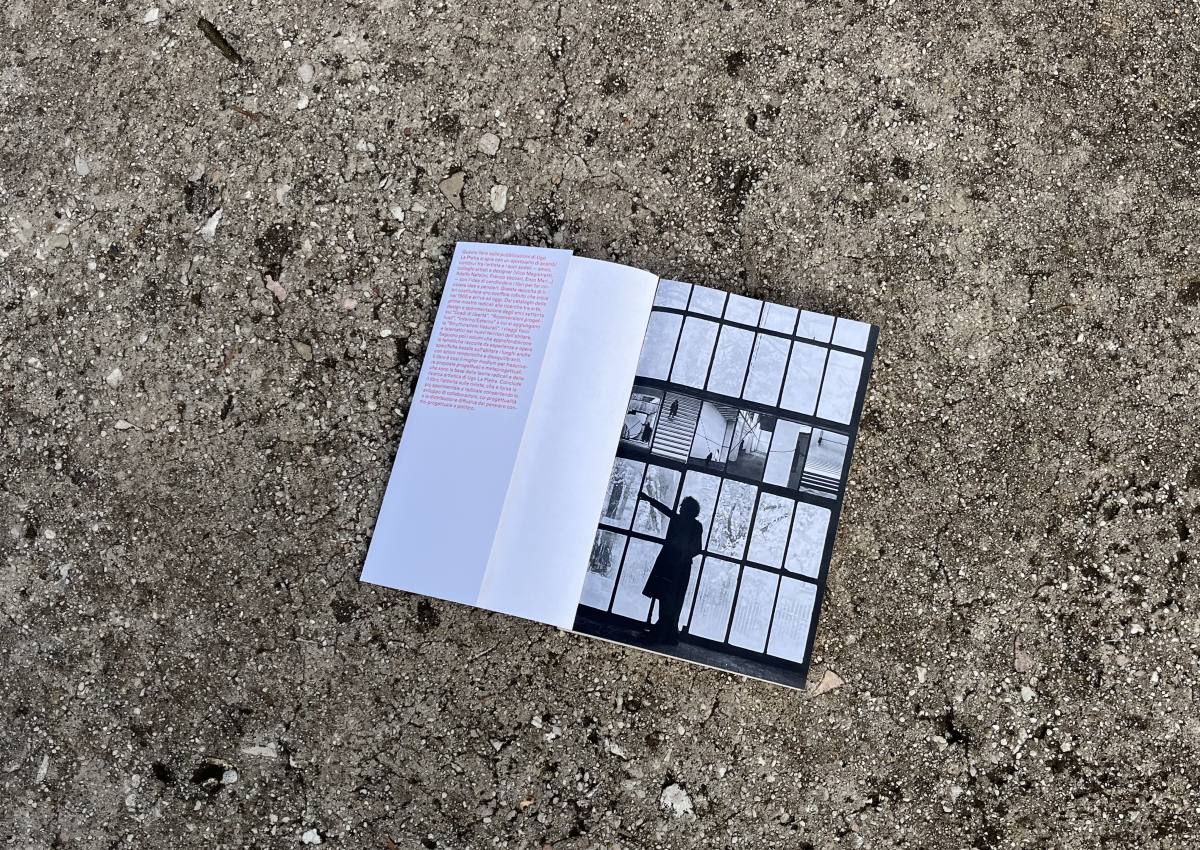
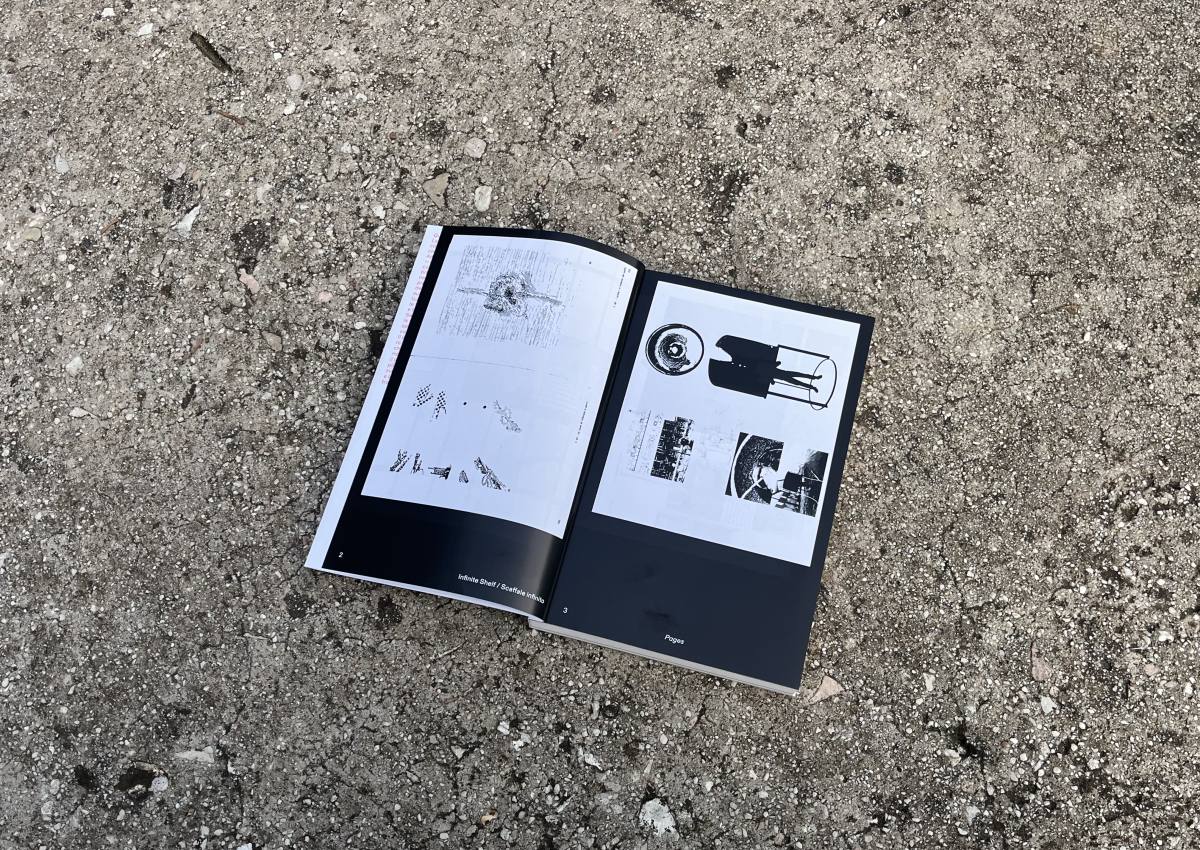
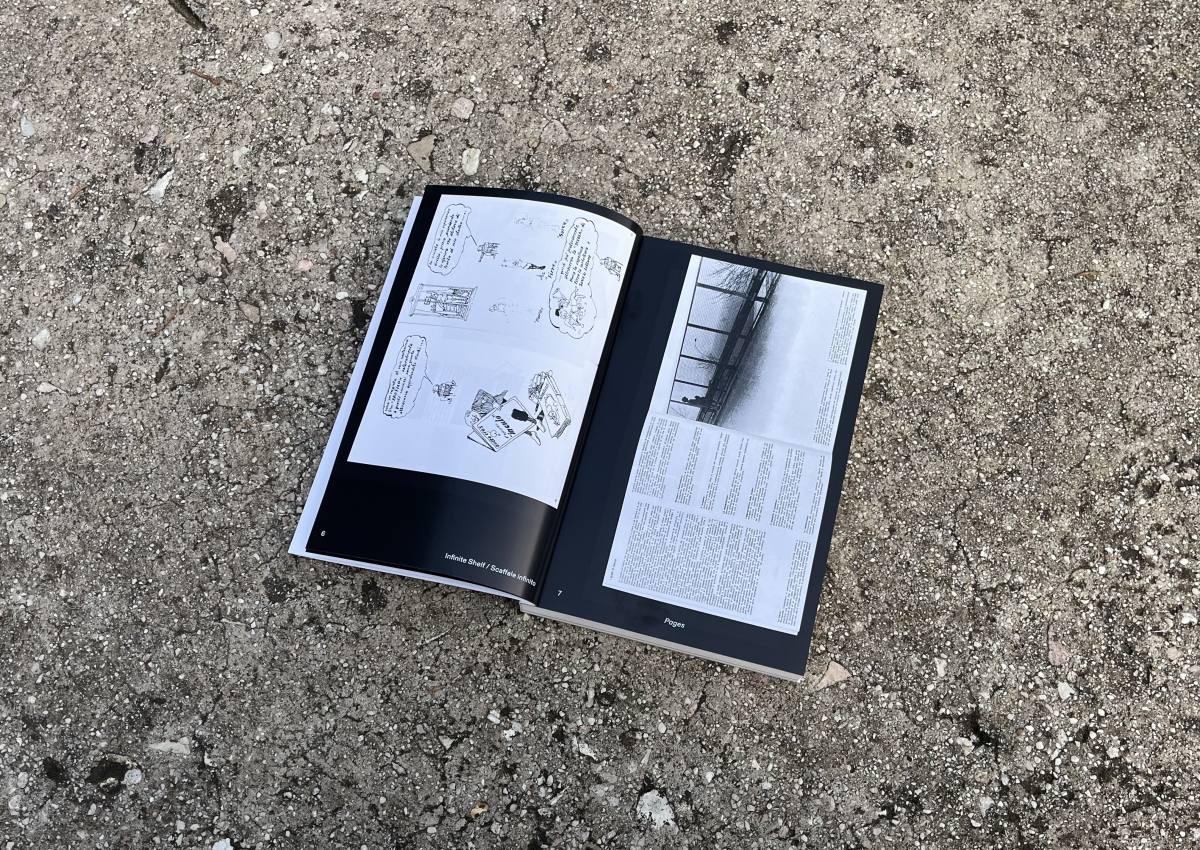
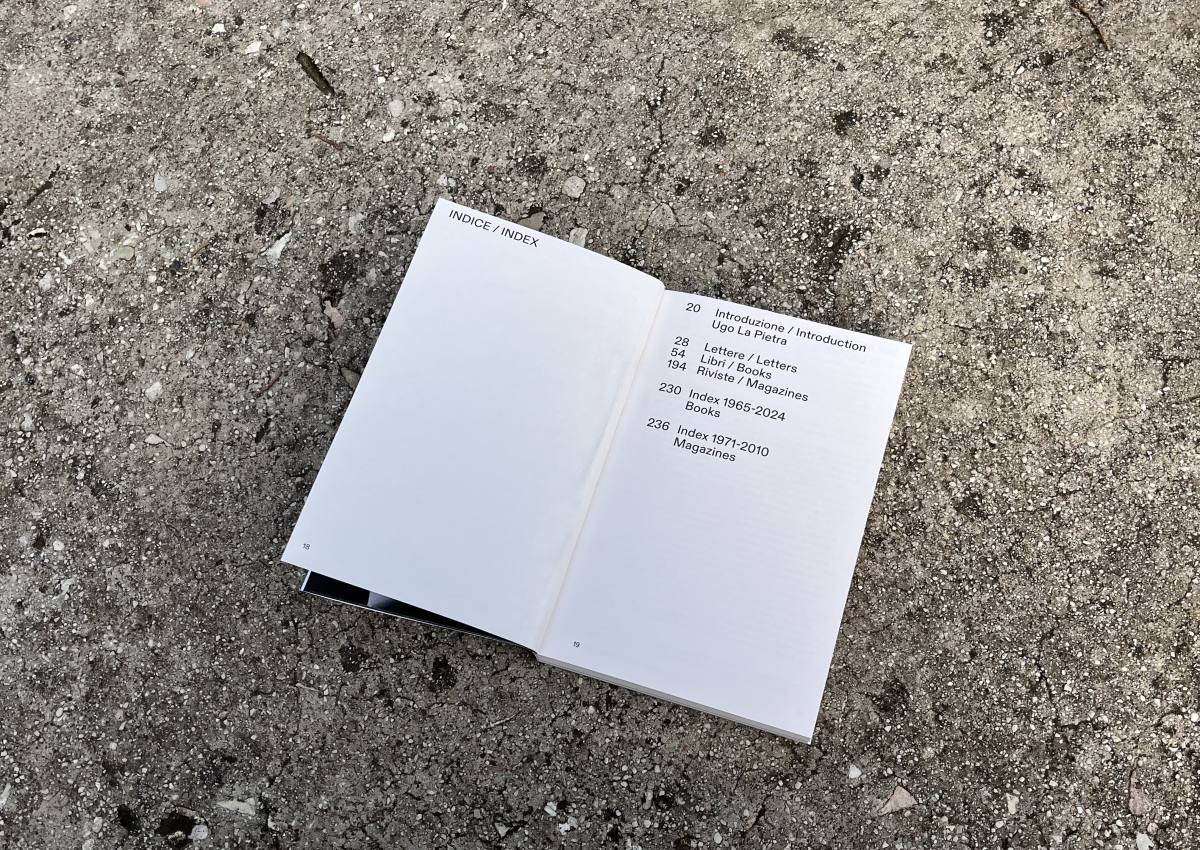
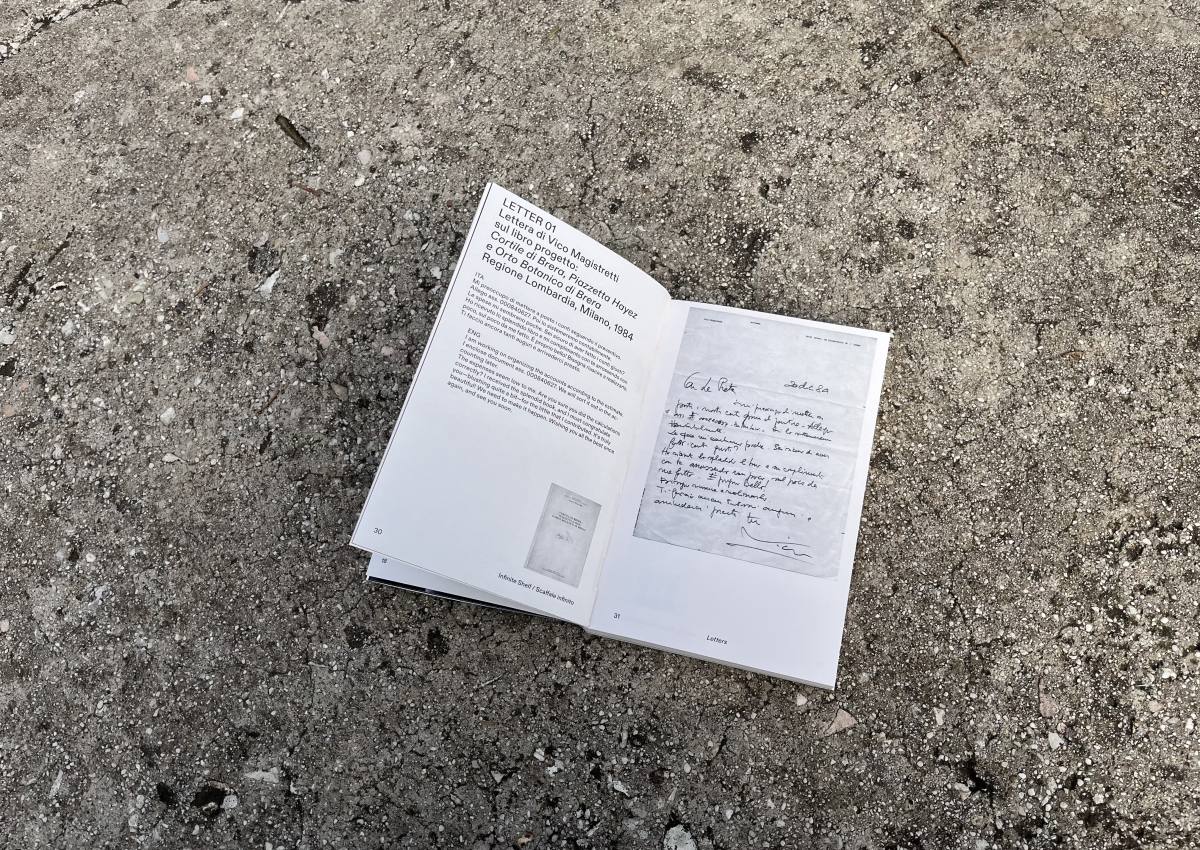
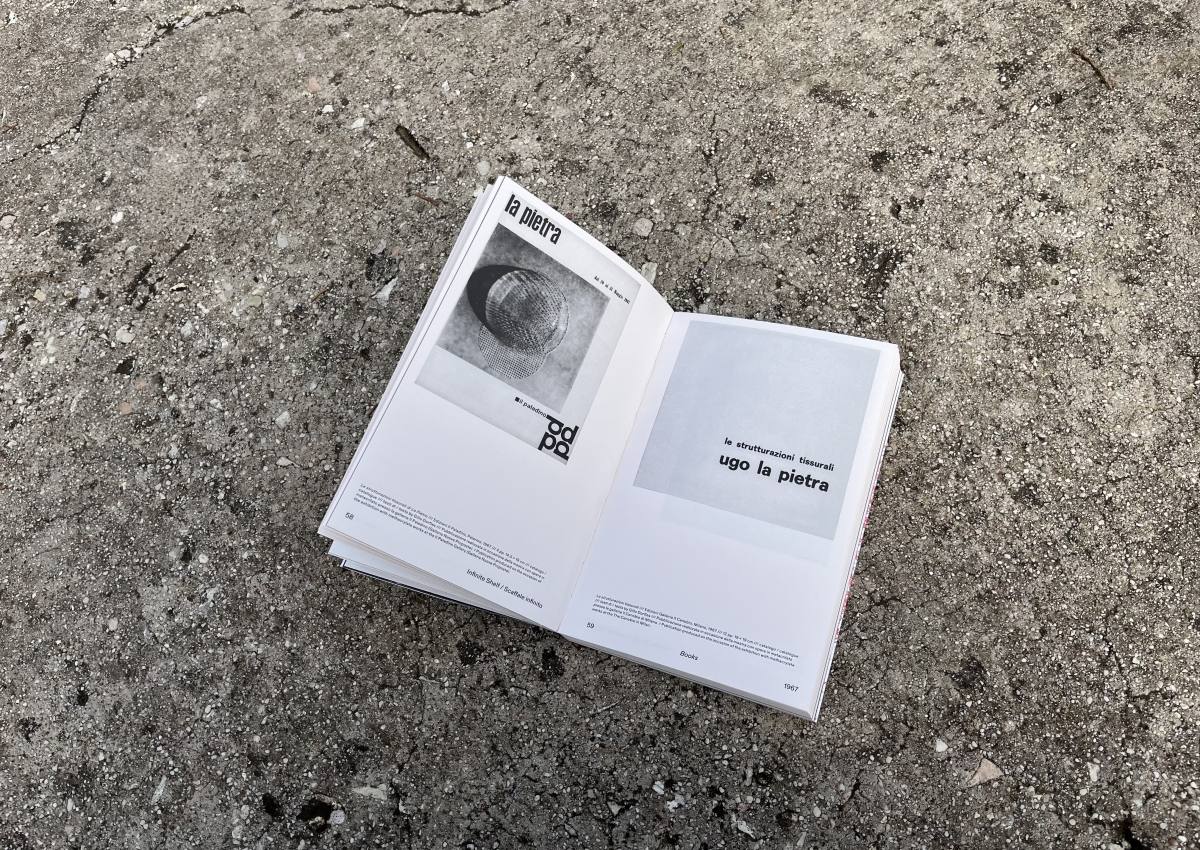
Ugo La Pietra
Scaffale infinito
€ 15
Edited by Emanuele De Donno, Ugo La Pietra
Editorial coordination Simona Cesana
240 pp.
13,5 x 21 cm
ita/eng
ISBN 979-12-81790-16-2
Category: Catalogues Bibliography
This volume on the publications of Ugo La Pietra begins with a long correspondence between the artist and his associates - (Vico Magistretti, Adolfo Natalini, Franco Vaccari, Enzo Mari...) - and aims at making ideas and thoughts circulate by sharing his books. This collection of books constitutes an infinite shelf that goes from 1965 to the present day. From the catan logues of the early radical exhibitions to the 1970s art and design research and experimentation into 'degrees of freedom', 'design reconversions', 'Interior/Exterior' to which we can add 'Tissural Structures'; physical and telematic journeys into the new territories of living. Then there are the volumes that delve into various themes by gathering experiences as well as specific works based on inhabiting places by using random and disruptive actions. A book is in fact not only the best medium for transcribing design and meta-project proposals, but also the starting point for Ugo La Pietra's radical theories and artistic research. The book concludes with his involvement in magazines, perhaps the most experimental and radical aspect of his work that allowed for the development of collaborations, co-designs and the diffusive distribution of counter-projectual and political thought.
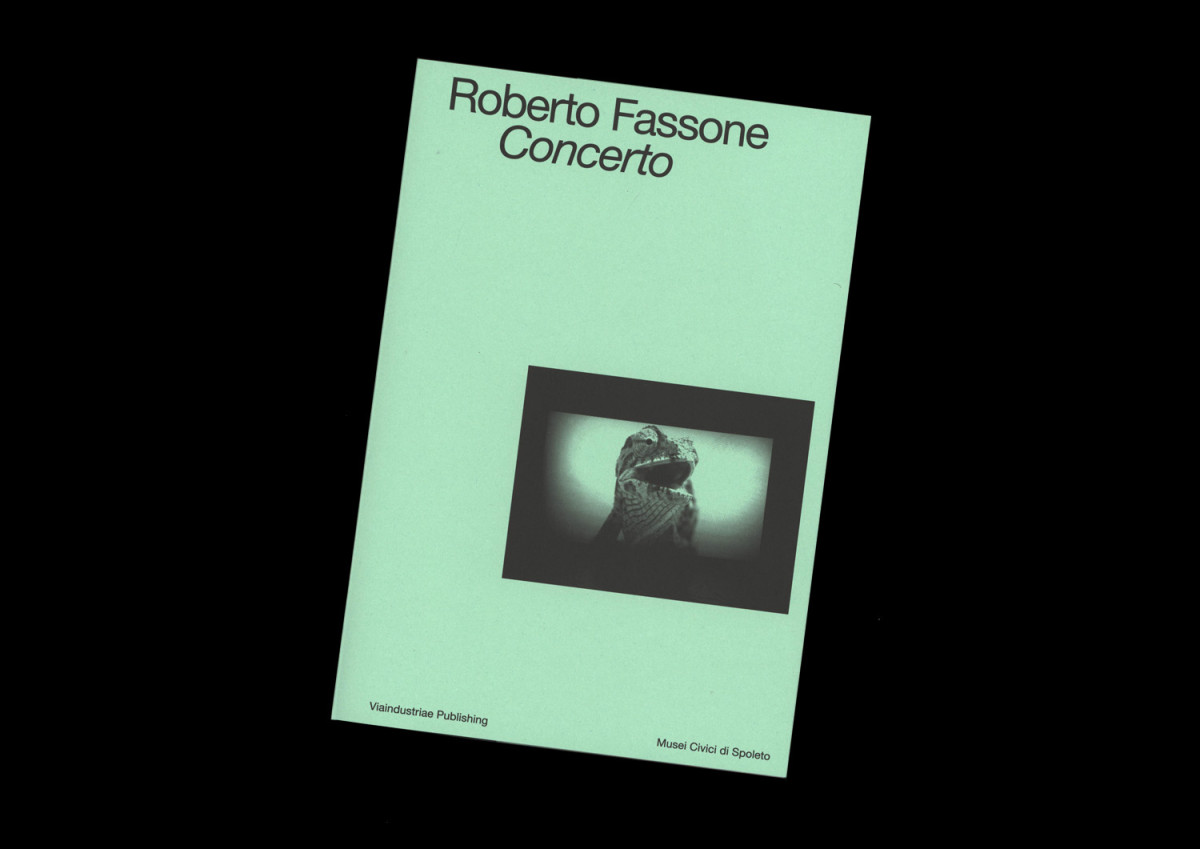
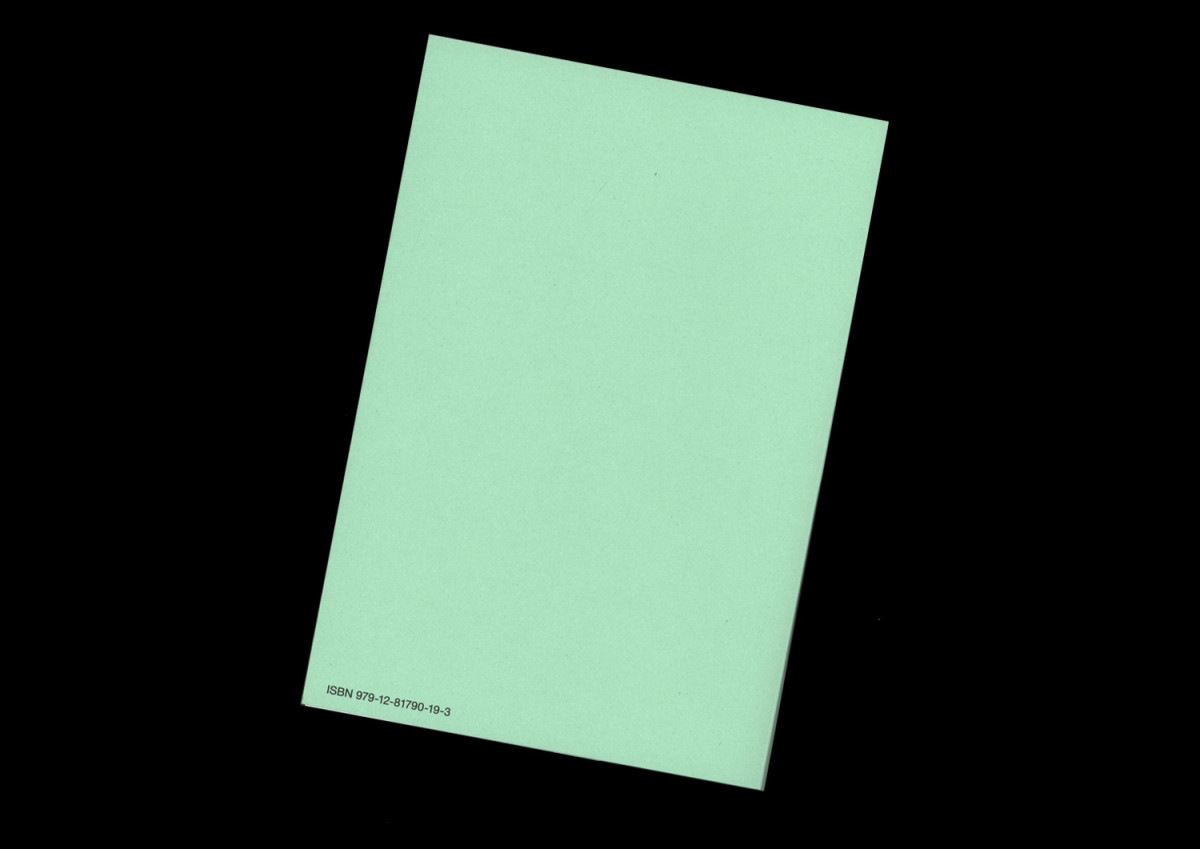
Roberto Fassone
Concerto
€ 20
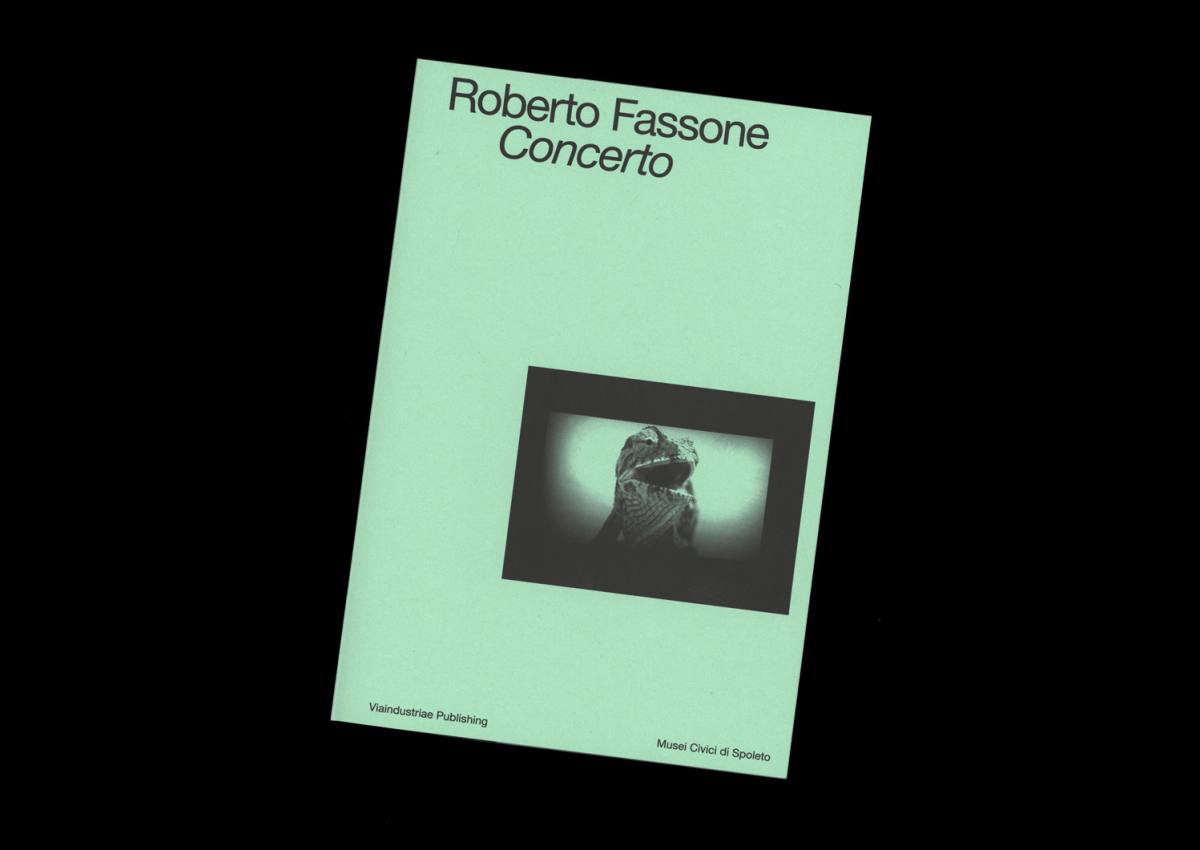
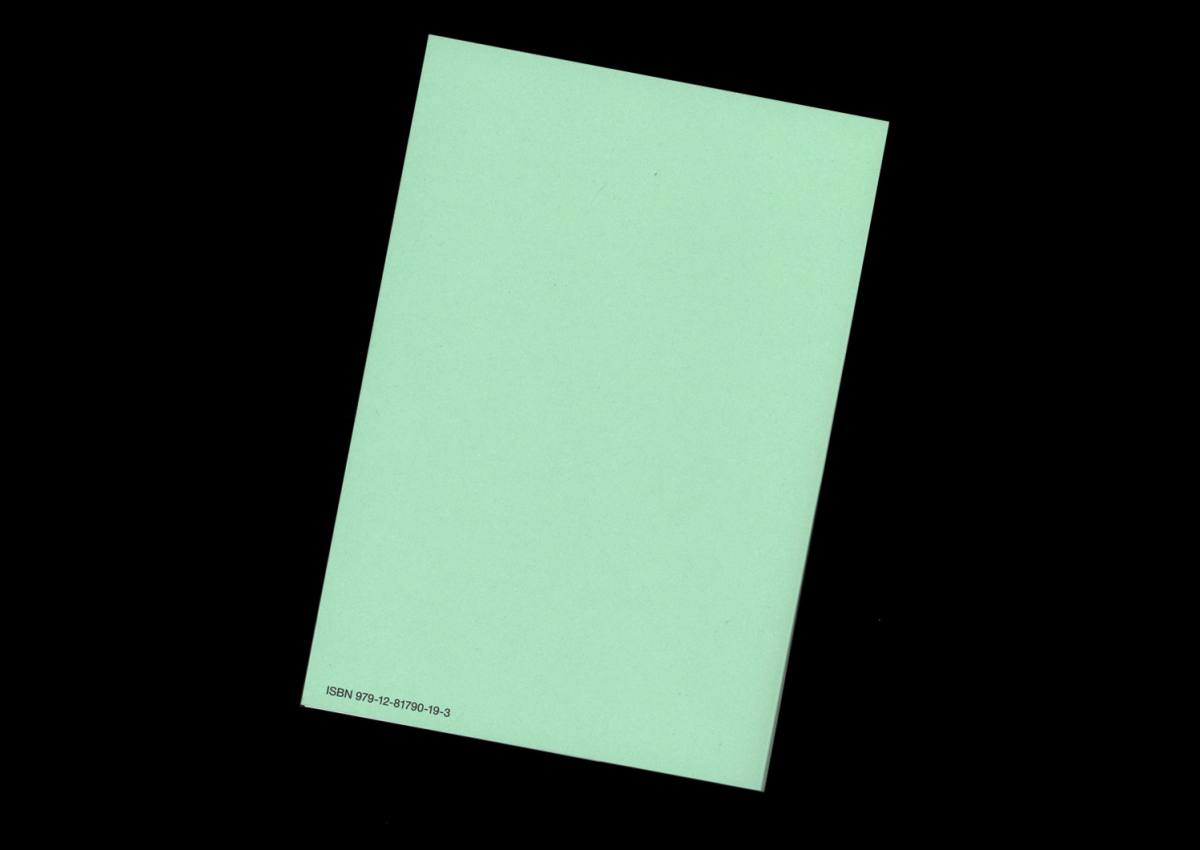
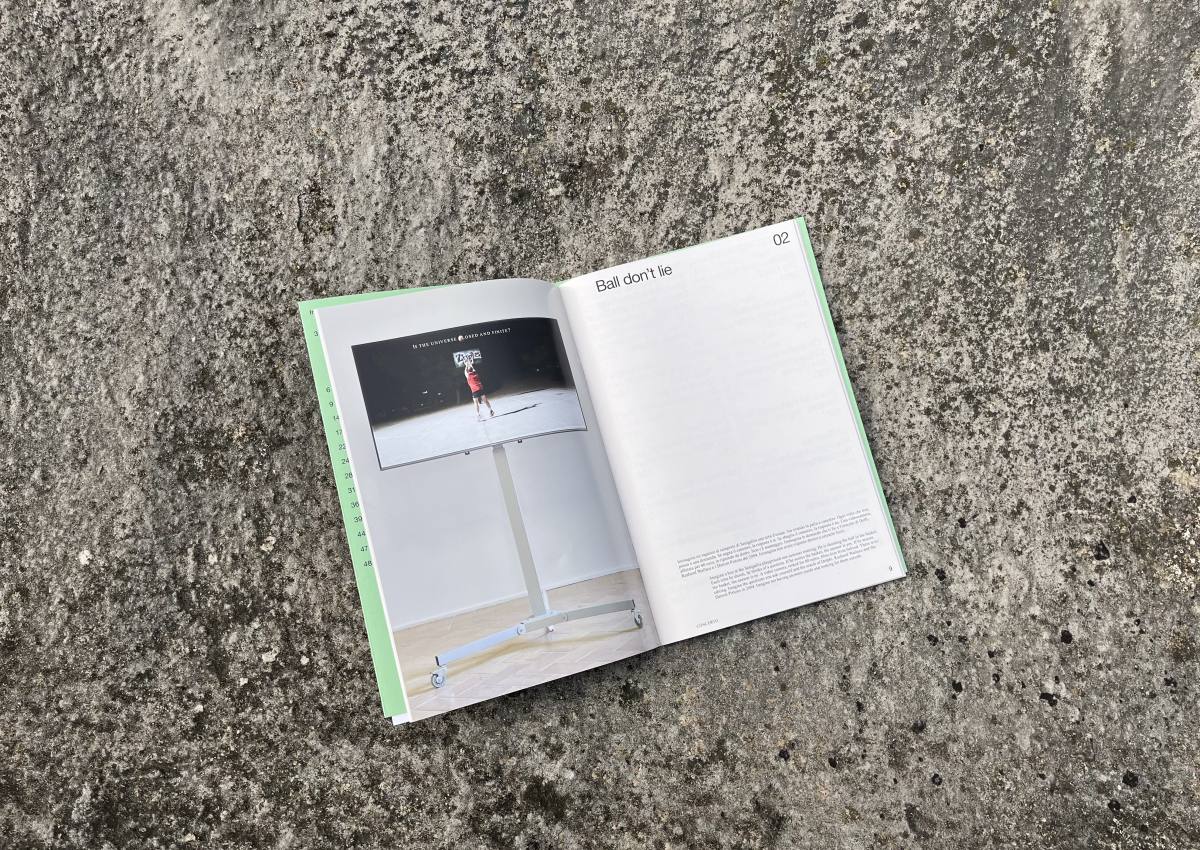
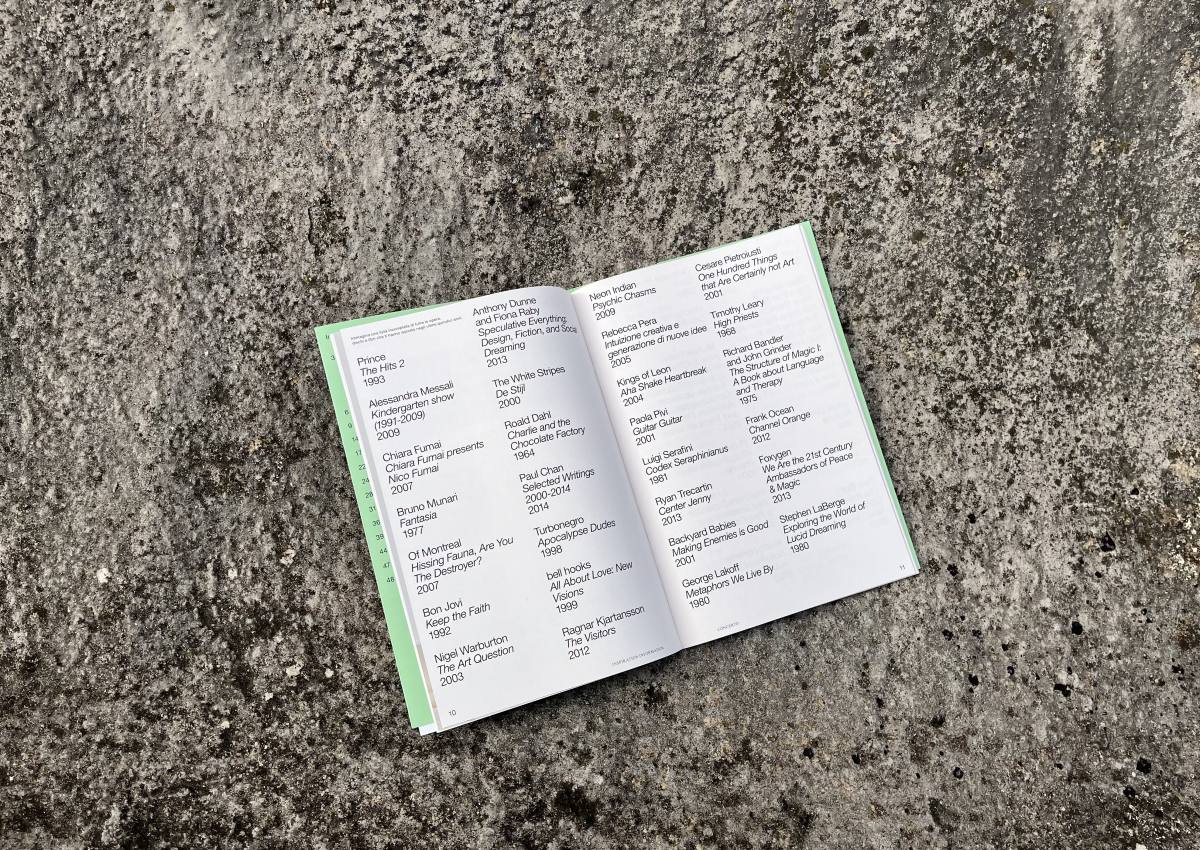
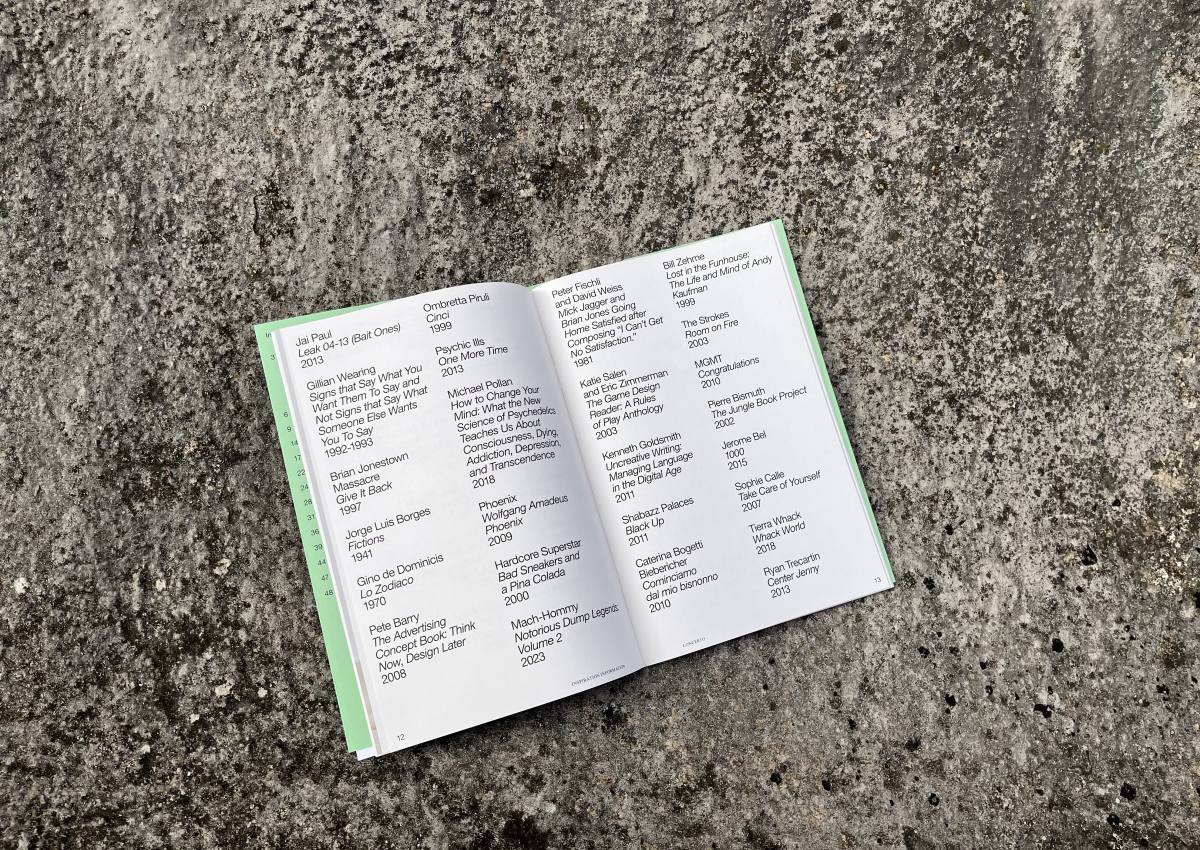
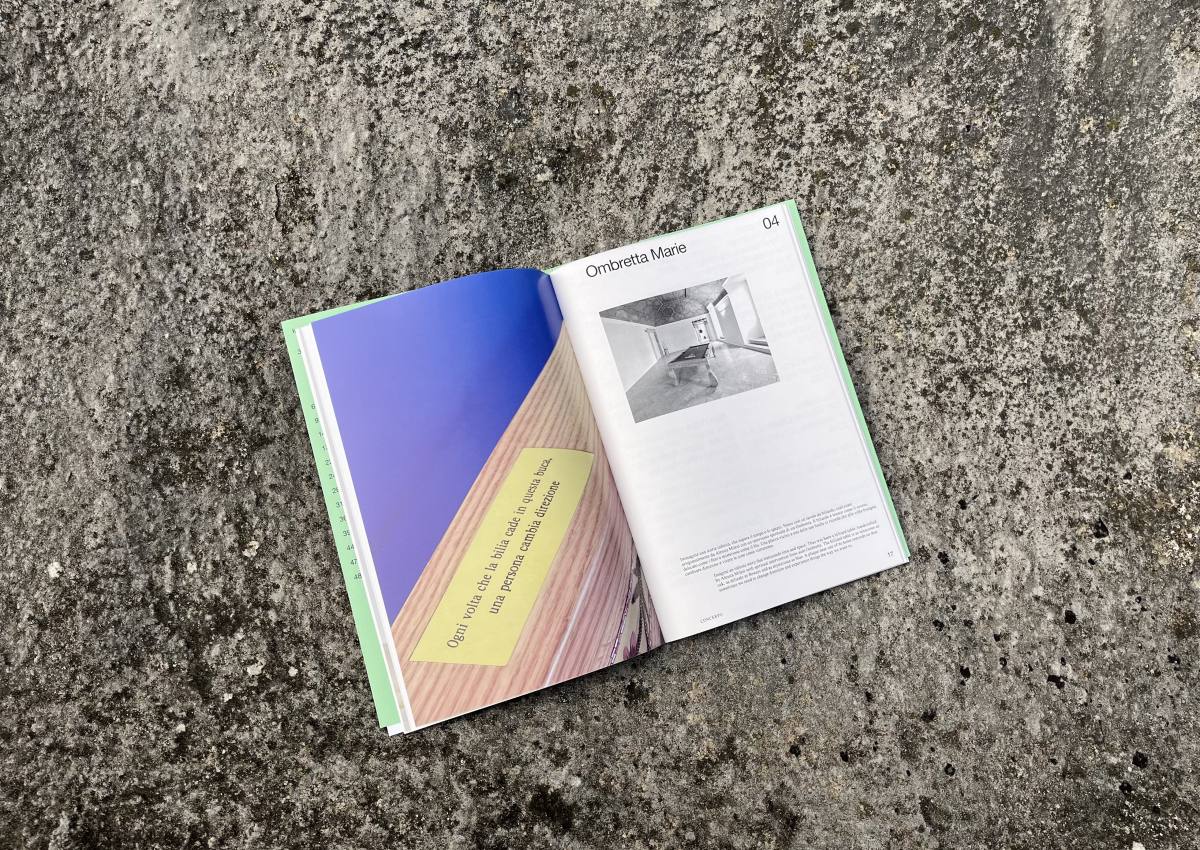
Roberto Fassone
Concerto
€ 20
Co-published with Palazzo Collicola, Spoleto
Edited by Saverio Verini
52 pp.
19 x 28 cm
Colour and bn printing
ita/eng
2024
ISBN 979-12-81790-19-3
Category: Catalogues Artist's books
Concerto, Roberto Fassone's first solo exhibi-tion in a public museum was created with the idea of retracing the artist's first fifteen years of activity. The exhibition hosts a selection of works-one per room-representative of his singular artistic practice. Like songs that follow one after the other during a concert, the works of Concerto traverse Fassone's entire artistic production, outlining the salient features - as well as the uniqueness-of his poetics, inviting visitors to embrace his ironic, surreal, psychedelic universe.
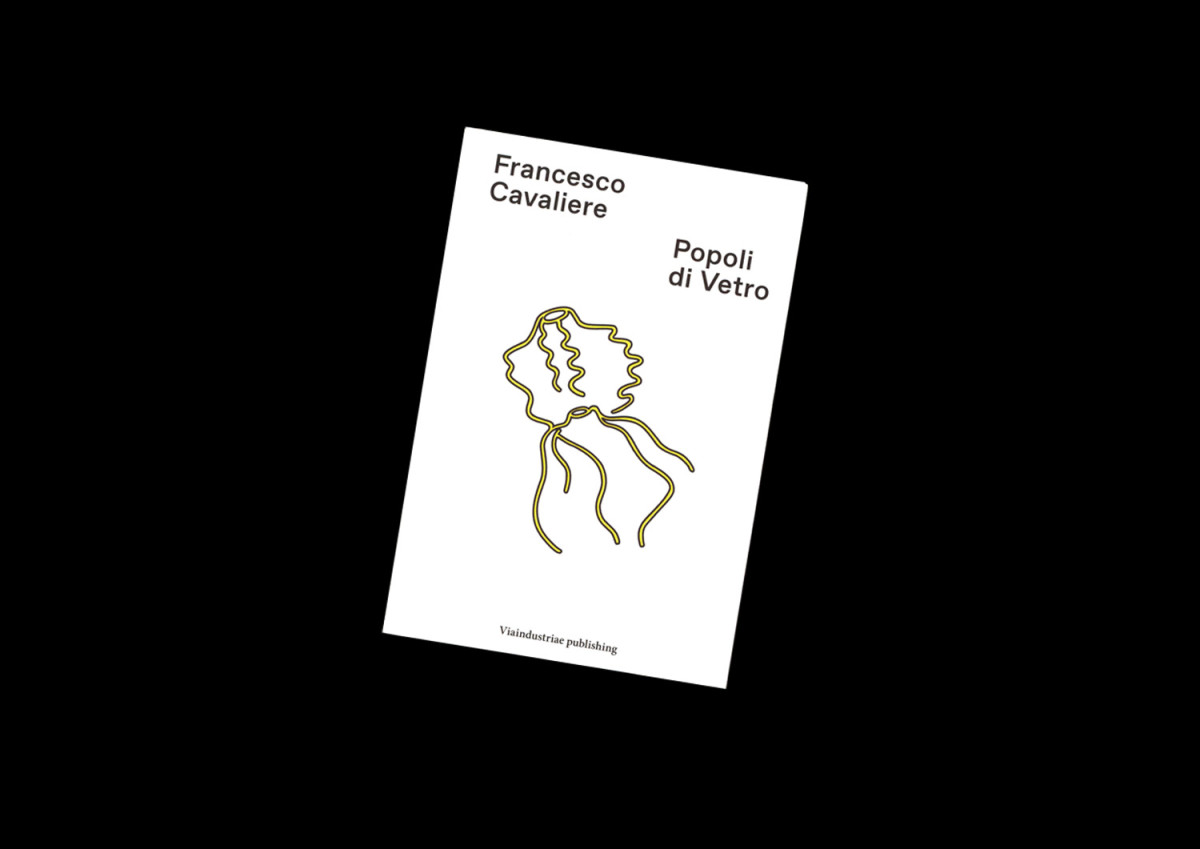
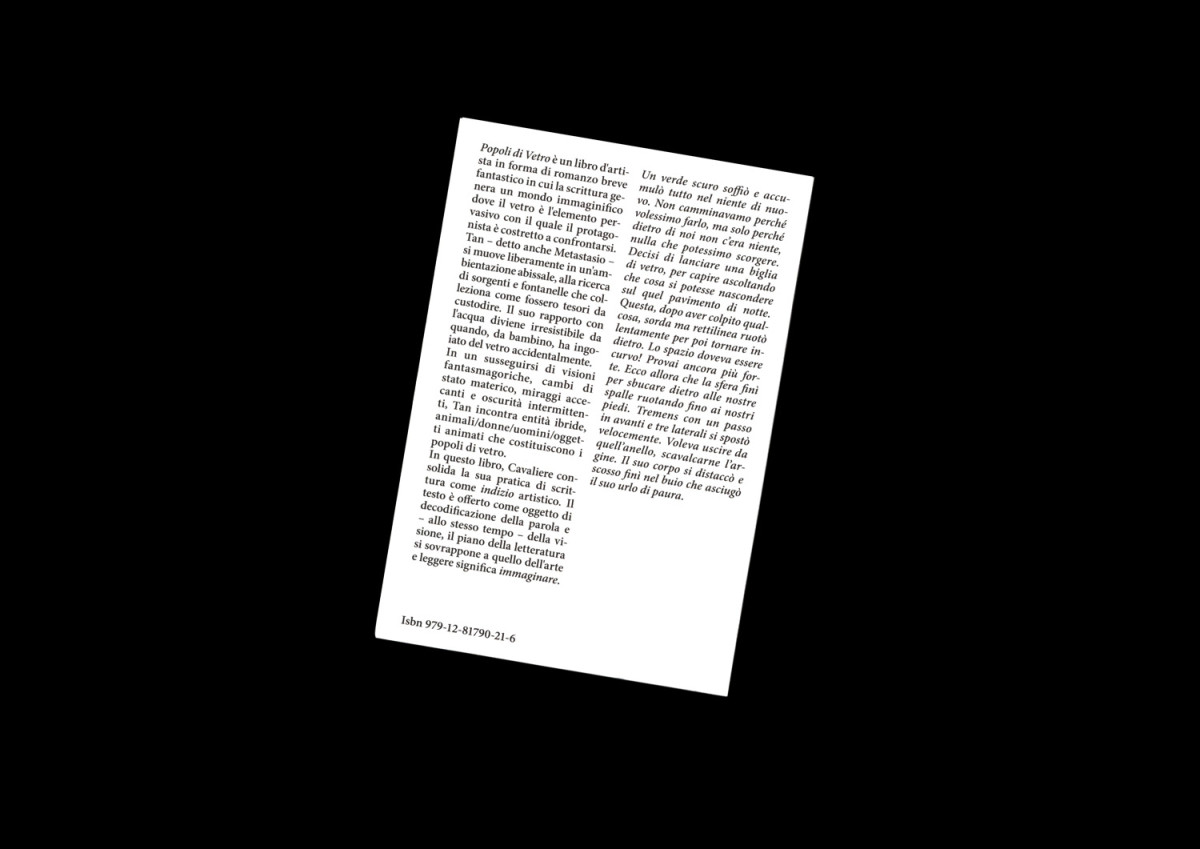
Francesco Cavaliere
Popoli di Vetro
€ 15
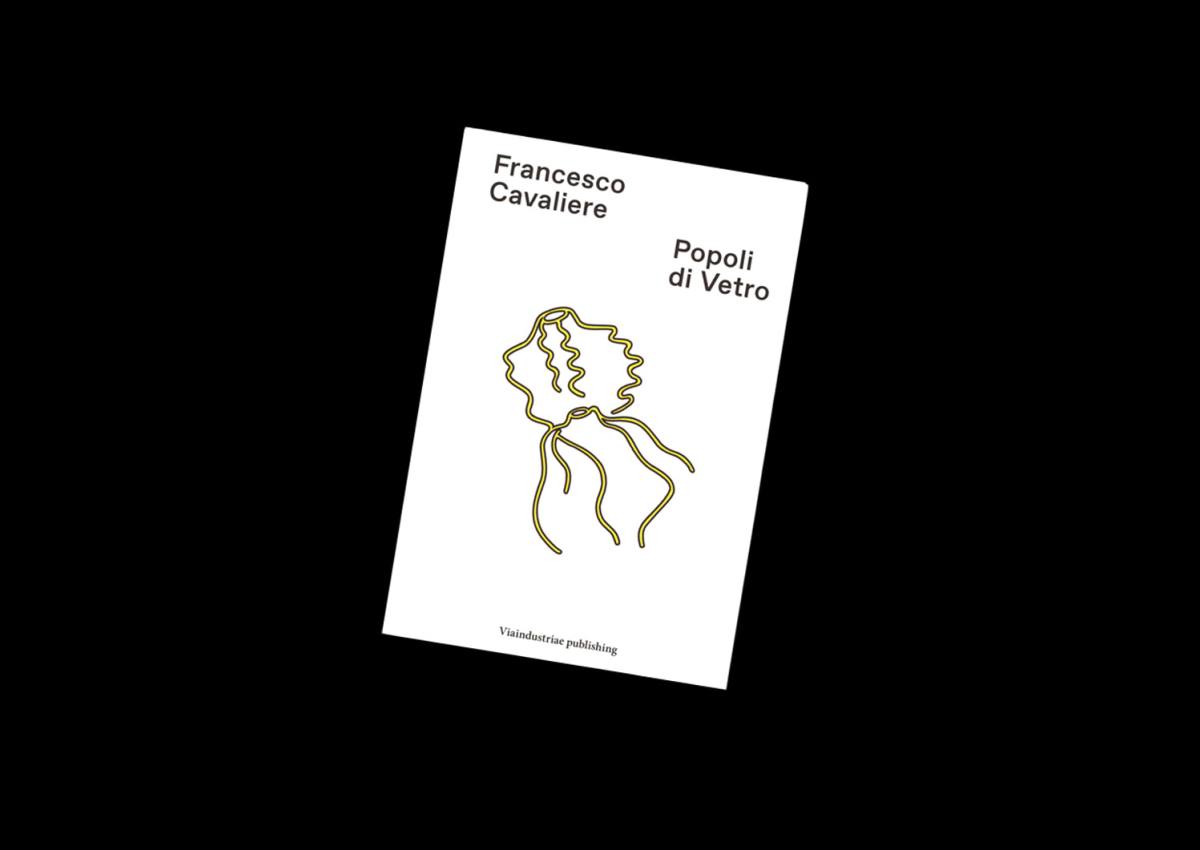
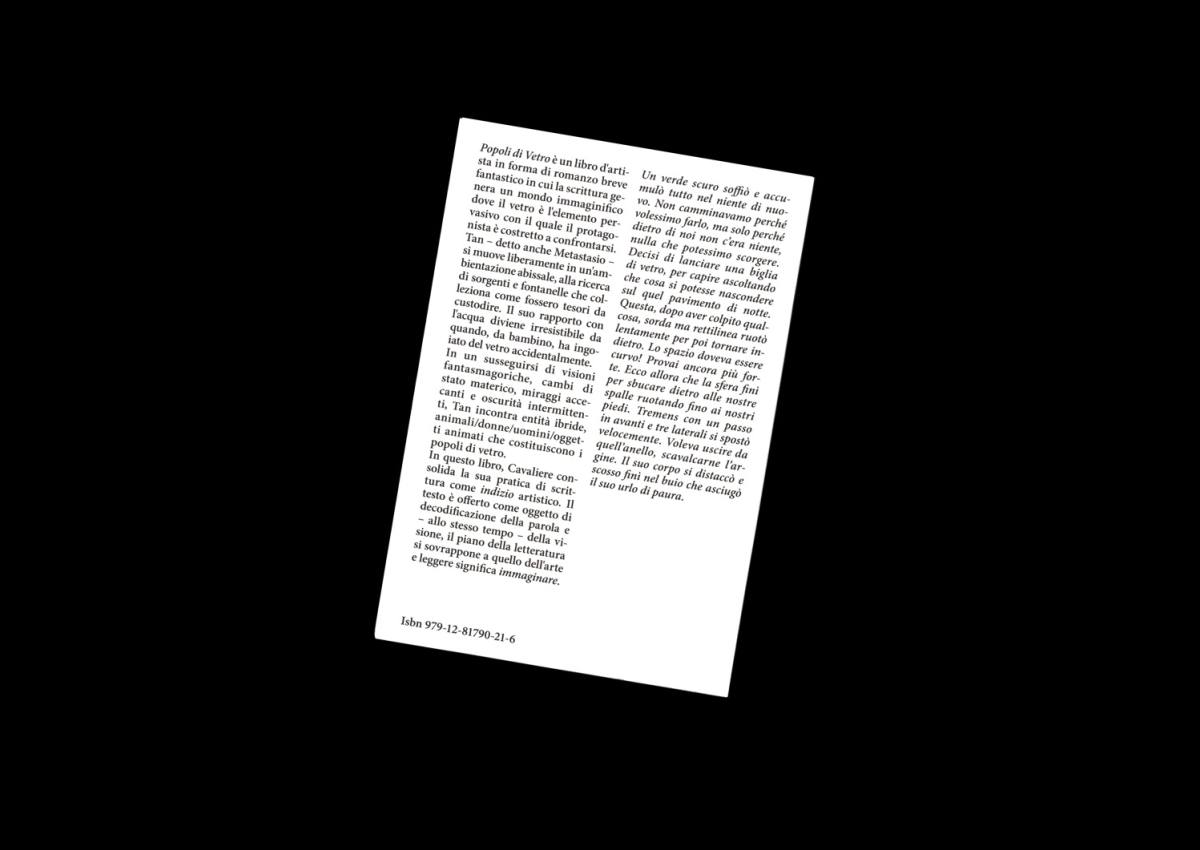
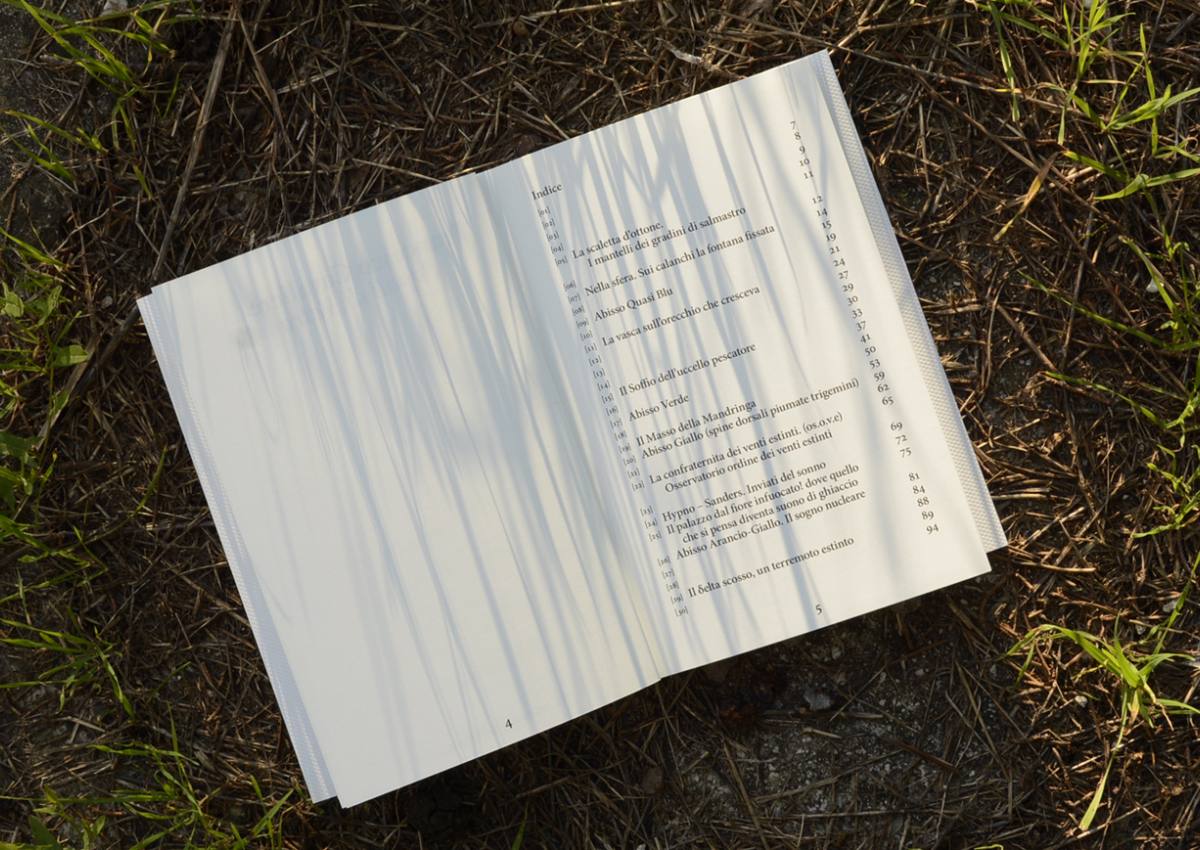
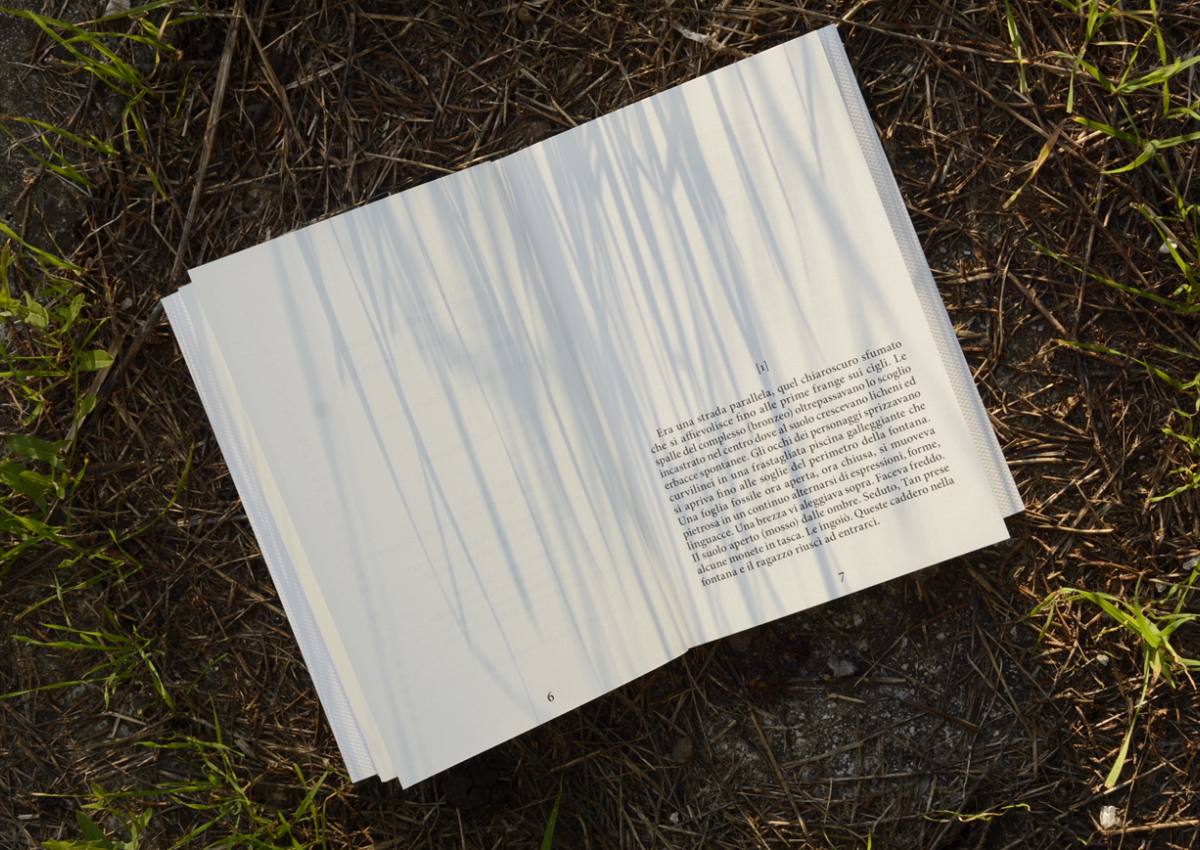
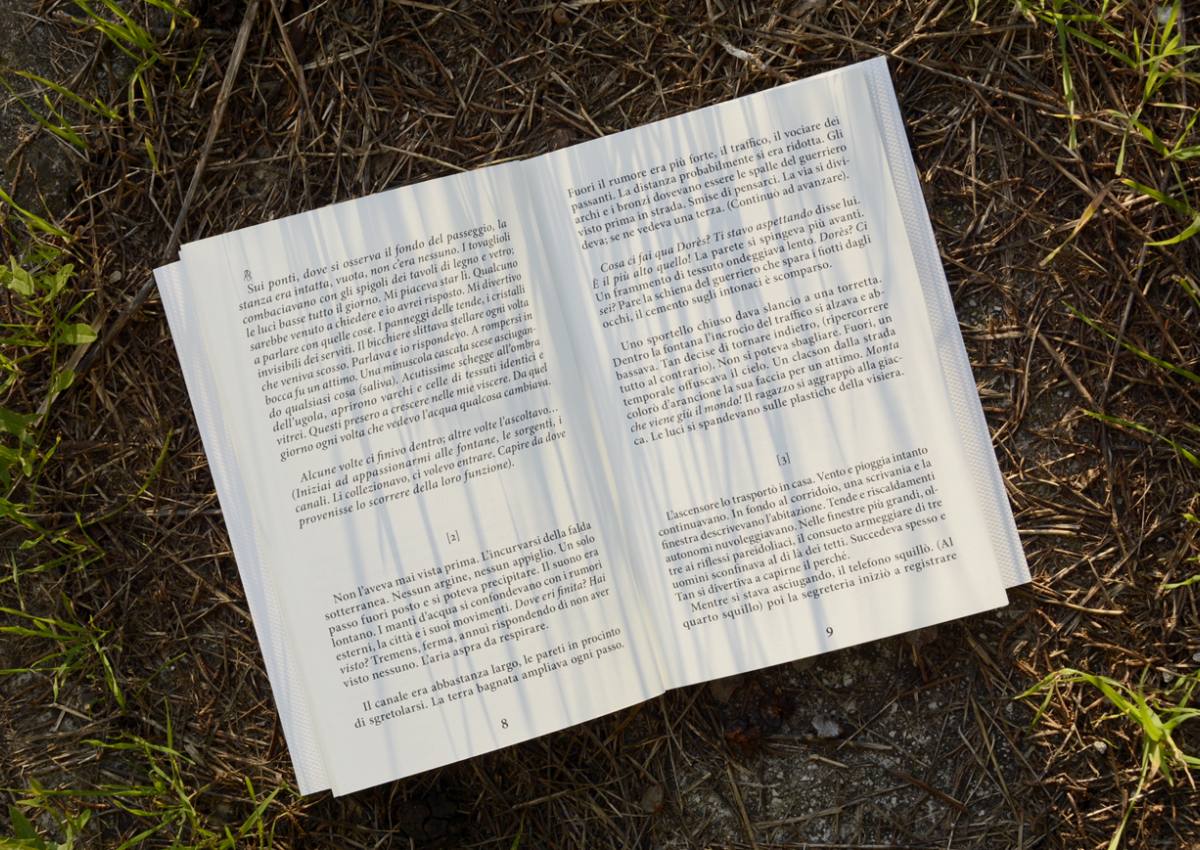
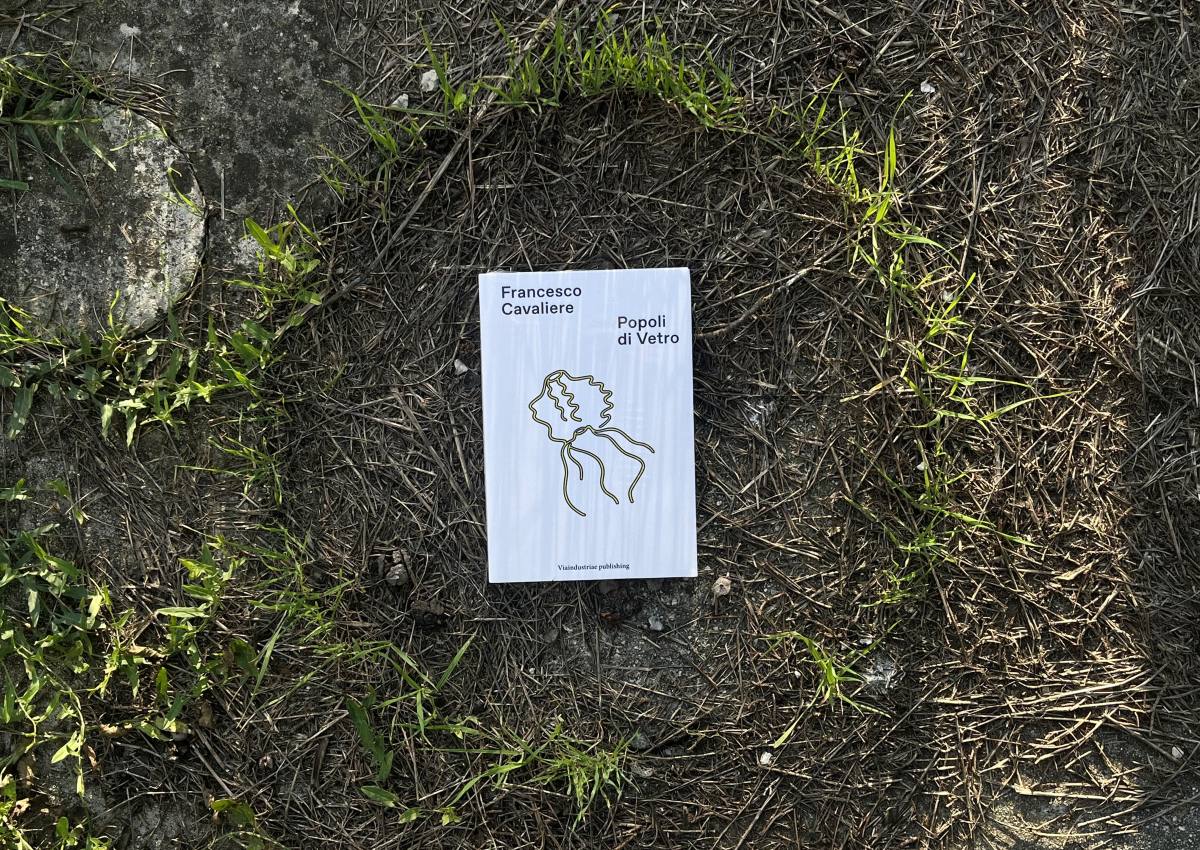
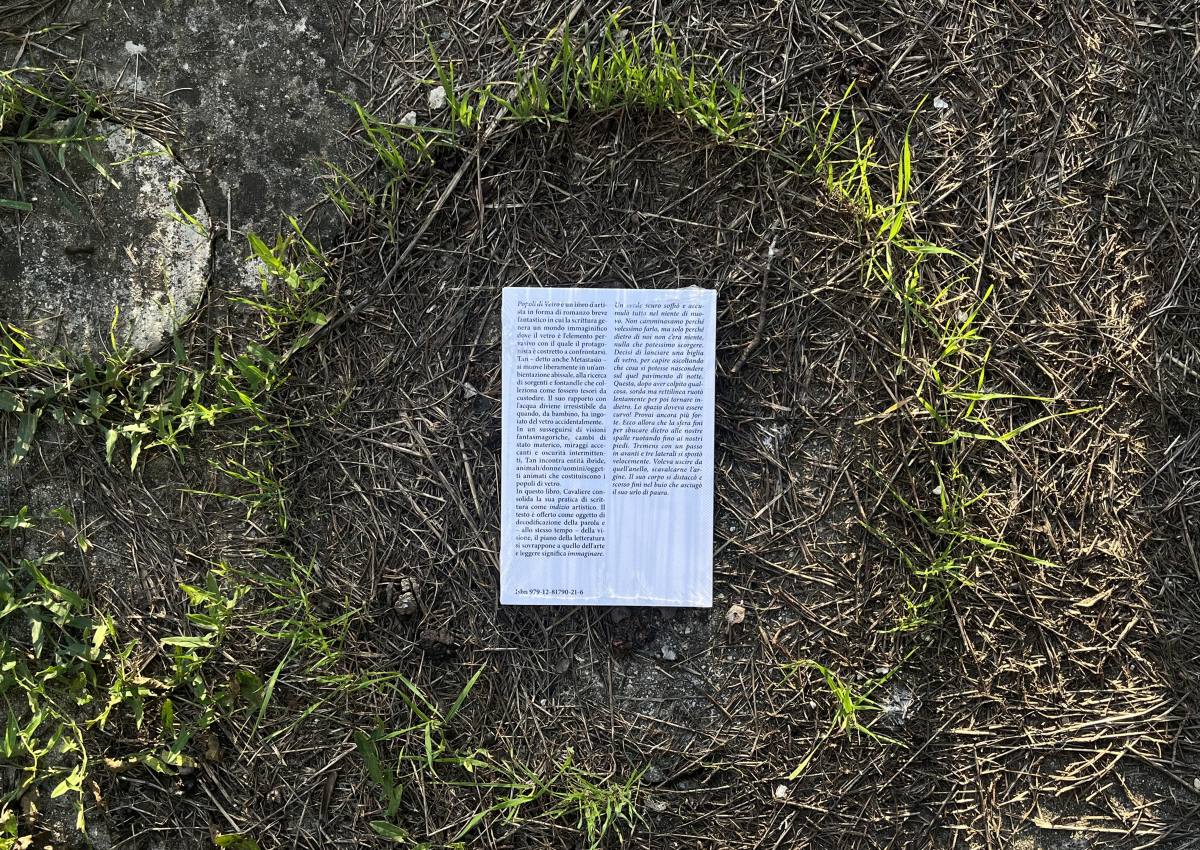
Francesco Cavaliere
Popoli di Vetro
€ 15
Category: Artist's books
Popoli di Vetro is an artist's book in the form of a fantastical novella. Here, the writing generates an imaginative world in which glass is the pervasive element the protagonist must deal with.
Tan – also known as Metastasio – moves freely in an abyssal setting, searching for springs and fountains he collects as if they were treasures to be kept. His relationship with water becomes irresistible since, as a child, he accidentally swallowed glass.
In a succession of phantasmagoric visions, changes in material state, blinding mirages, and intermittent darkness, Tan encounters hybrid entities—animals/women/men/animated objects—that form the peoples of glass.
In this book, Cavaliere consolidates his writing practice as an artistic sign. The text is offered as an object for decoding both word and vision; the realm of literature overlaps with that of art, and reading becomes an act of imagination.